No matter how many times I bird northern Minnesota, I don’t think I will ever tire of its landscape or its avian inhabitants. It is home. And it is a place birders from all over the country and even the world want to go, often repeatedly. For me, it holds the same allure as a place like southeastern Arizona. Despite how many times you may see the resident species, they never fail to bring the wow factor, even after years of birding bring about new birding destinations and additions to the life list.
Our annual tradition is to go home to the Iron Range the day after Christmas to visit Melissa’s family. The timing of our visit allows me to participate in the Cook area Christmas Bird Count. This is the CBC I look forward to the most. Even though species counts are usually low, it’s the quality that trumps the quantity.
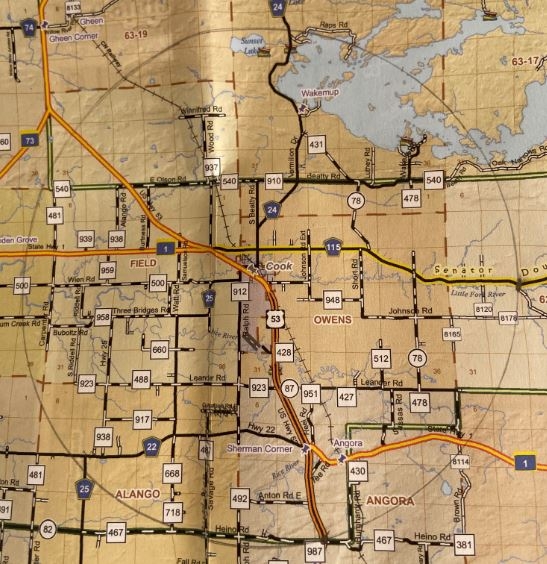
Local birder Julie Grahn always keeps me apprised of good sightings when we go back home. This time was no different as she had not one, but three Northern Hawk Owls hanging out in the Cook area. I was ecstatic. Despite all the owls I have seen over the years, I have never observed any of the northern owls anywhere close to home. And I have always wanted to. So the day before the CBC, I went about searching to finally enjoy one of these awesome owls in an area I enjoy the most. Hawk Owls are usually not hard to spot, but I was only able to find one of Julie’s owls. It was good enough. Actually, it was perfect.
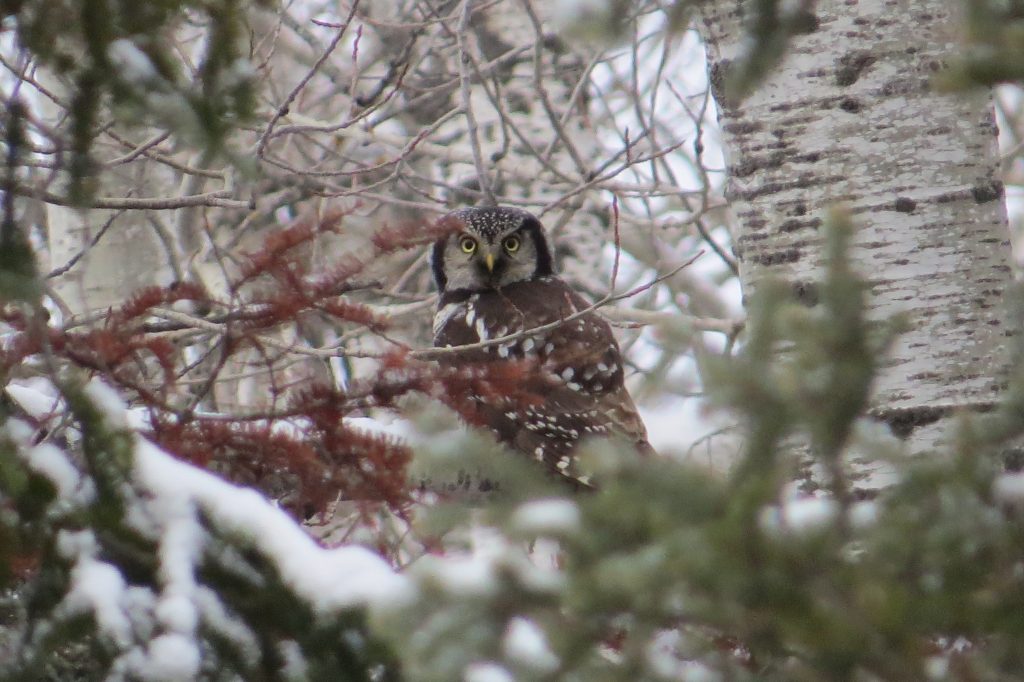 Hanging out with a Hawk Owl by yourself is more enjoyable than being part of the owl paparazzi at the Sax-Zim Bog. This particular owl was first sitting on top of a power pole with his back toward me. Of course owls move their heads in all directions, but I was absolutely shocked when it took off flying in the direction it had its back to and nabbed a vole nearly a quarter mile away. The owl then came back and worked on enjoying his meal in the privacy of various spruce trees.
Hanging out with a Hawk Owl by yourself is more enjoyable than being part of the owl paparazzi at the Sax-Zim Bog. This particular owl was first sitting on top of a power pole with his back toward me. Of course owls move their heads in all directions, but I was absolutely shocked when it took off flying in the direction it had its back to and nabbed a vole nearly a quarter mile away. The owl then came back and worked on enjoying his meal in the privacy of various spruce trees.
For the CBC the next day, I recruited Evan to help me record bird tallies and spot birds. Evan has not been into birds for a very long time. That’s dad’s thing. I’ve been cool with that. This recruitment was not about me trying to turn him into a birder again; it was about spending time together and also doing something Evan enjoys immensely–grouse hunting. He agreed to do the CBC because there might be a chance to get a Ruffed Grouse as I regularly see them whenever I bird the Northland. Evan was excited. I was excited. After all, I’ve seen some pretty darn good incidental birds while taking him out hunting this fall. In October there was an incredible encounter with a juvenile Northern Goshawk while we were grouse hunting on his Great Grandma’s property:
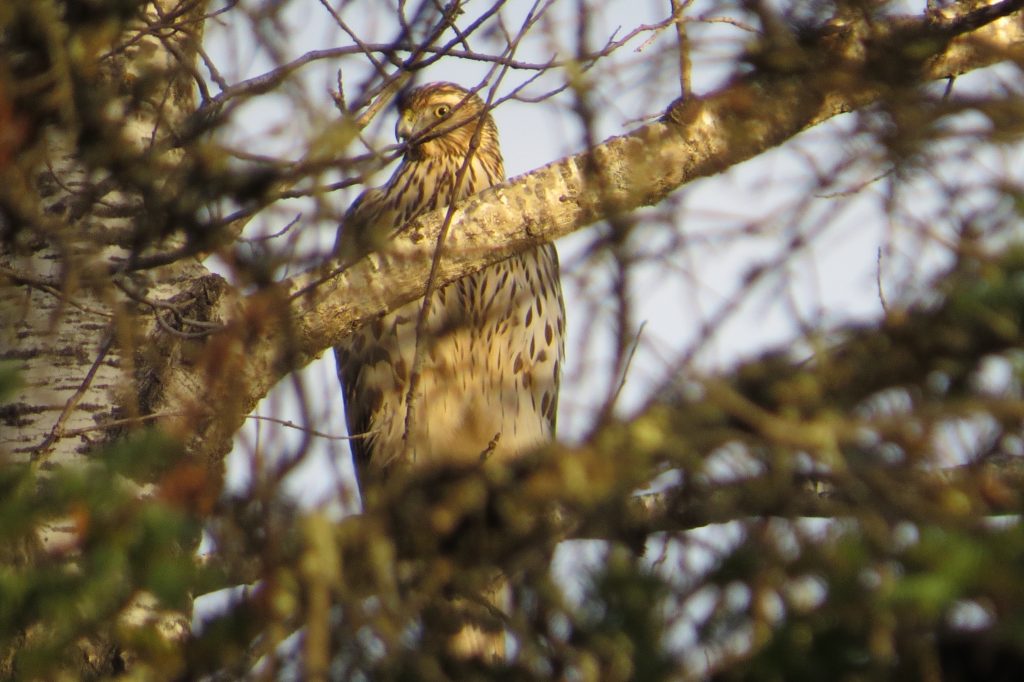
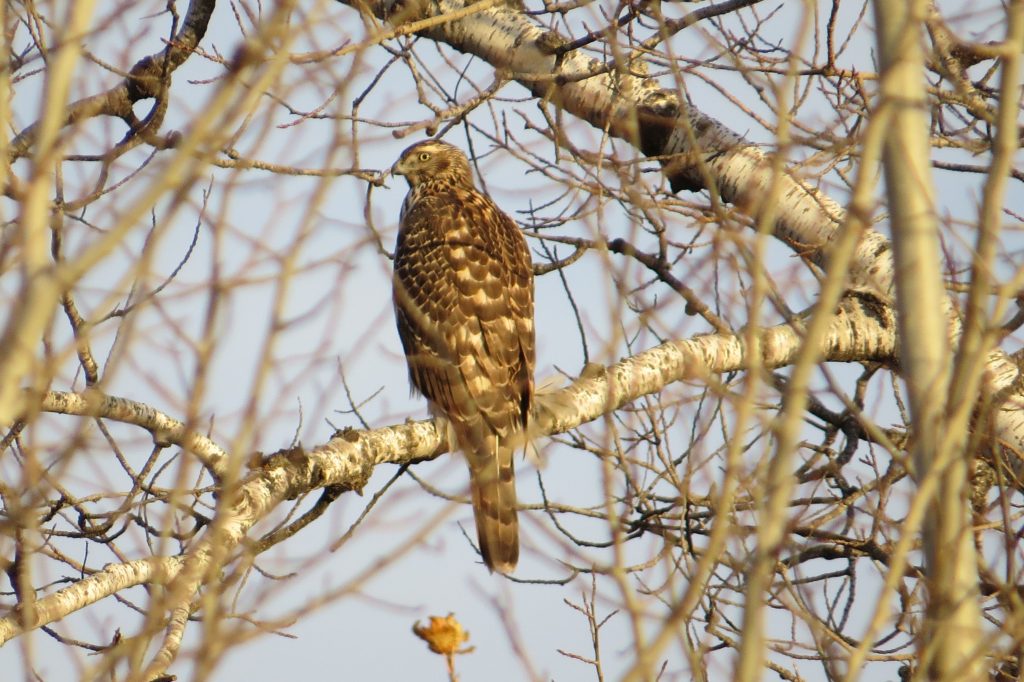 This Goshawk was seen multiple times because it was carefully guarding and working on a Snowshoe Hare meal along a trail that we walked several times in search of Grouse.
This Goshawk was seen multiple times because it was carefully guarding and working on a Snowshoe Hare meal along a trail that we walked several times in search of Grouse. 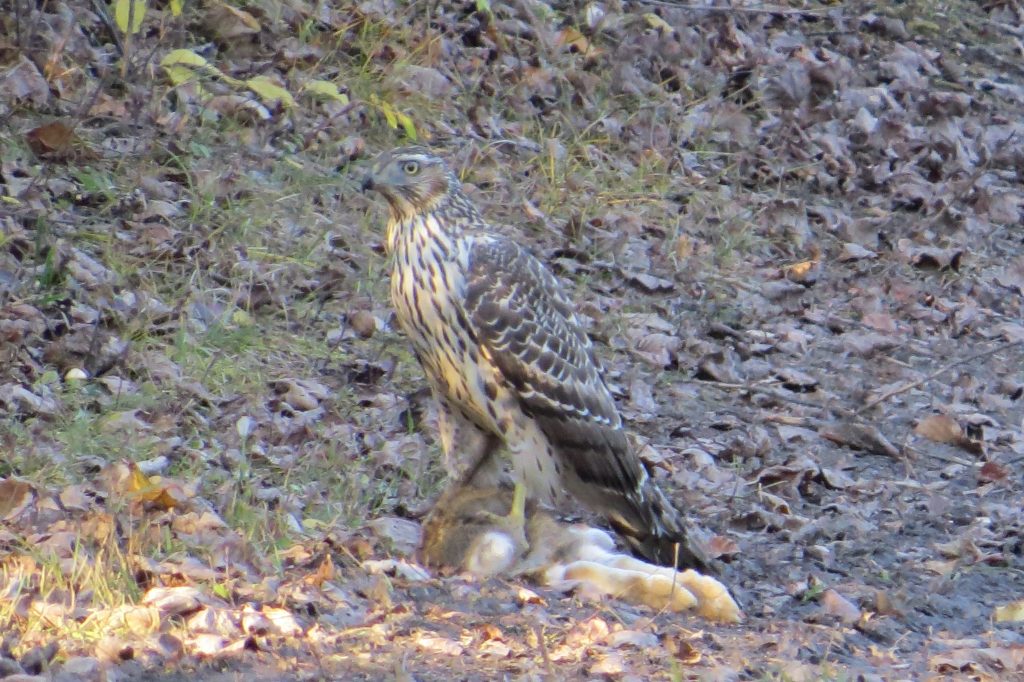
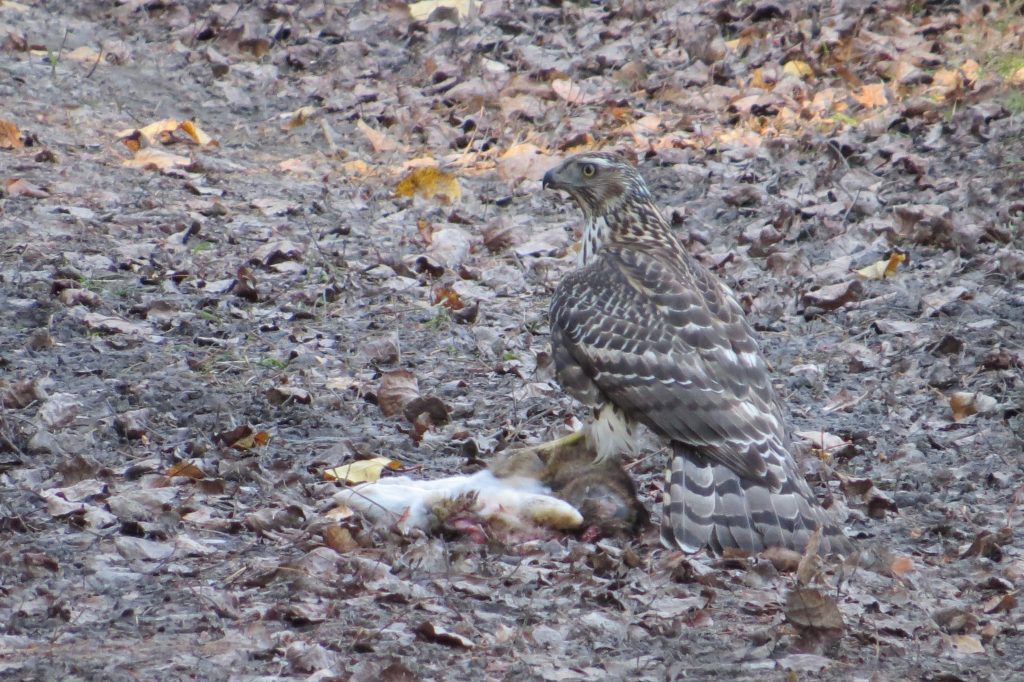
And about a month ago, I took Evan pheasant hunting on a WMA near Willmar and came face-to-face with a Long-eared Owl while trying to push pheasants out of a small spruce grove.
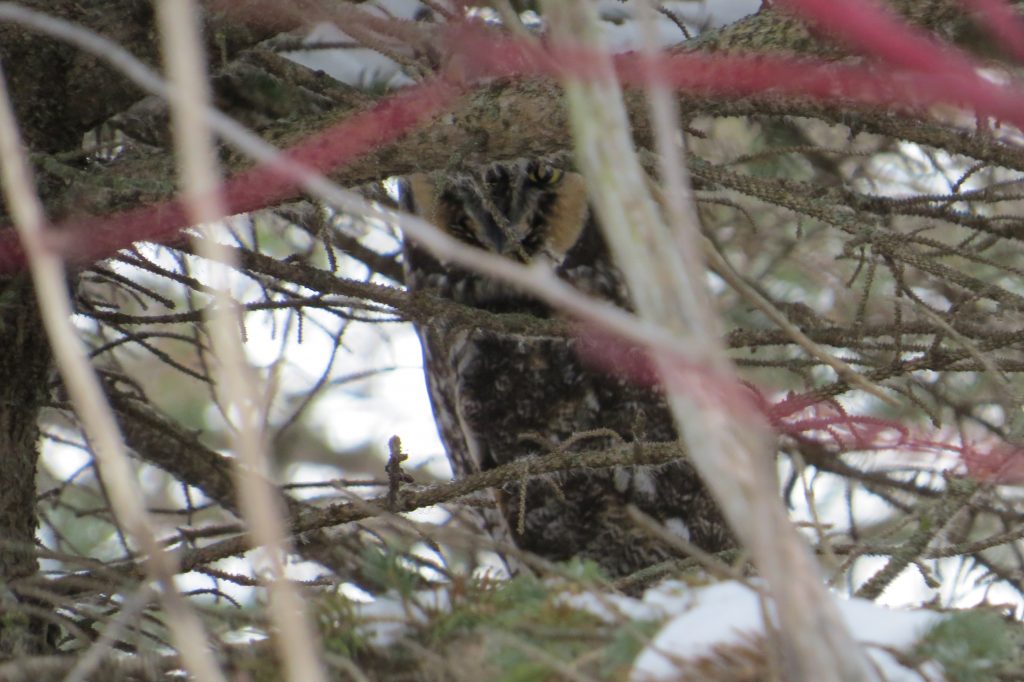 In these instances, birding was secondary and turned out to be phenomenal. Now on the CBC, the hunting was secondary. Would the birding be just as good?
In these instances, birding was secondary and turned out to be phenomenal. Now on the CBC, the hunting was secondary. Would the birding be just as good?
Things started off fairly mundane on our CBC route: the usual American Crows and ubiquitous Common Ravens. Of course, for me, any bird is exciting on a CBC. Each bird counts and gives you something to tally as an observer. The hope for a good species count or unusual count numbers (high or low) or a rare species keeps the interest high at all times. But for Evan, who was hoping for a Ruffed Grouse to shoot, it was starting off kind of boring, though he dutifully tallied whatever I dictated to him. Things picked up a bit when I spied a Black-billed Magpie, a very good bird for the count. Evan seemed interested that we had found a “good” bird. And then I spotted a Red Fox bedded down in a field. Evan enjoyed checking him out with my binoculars.
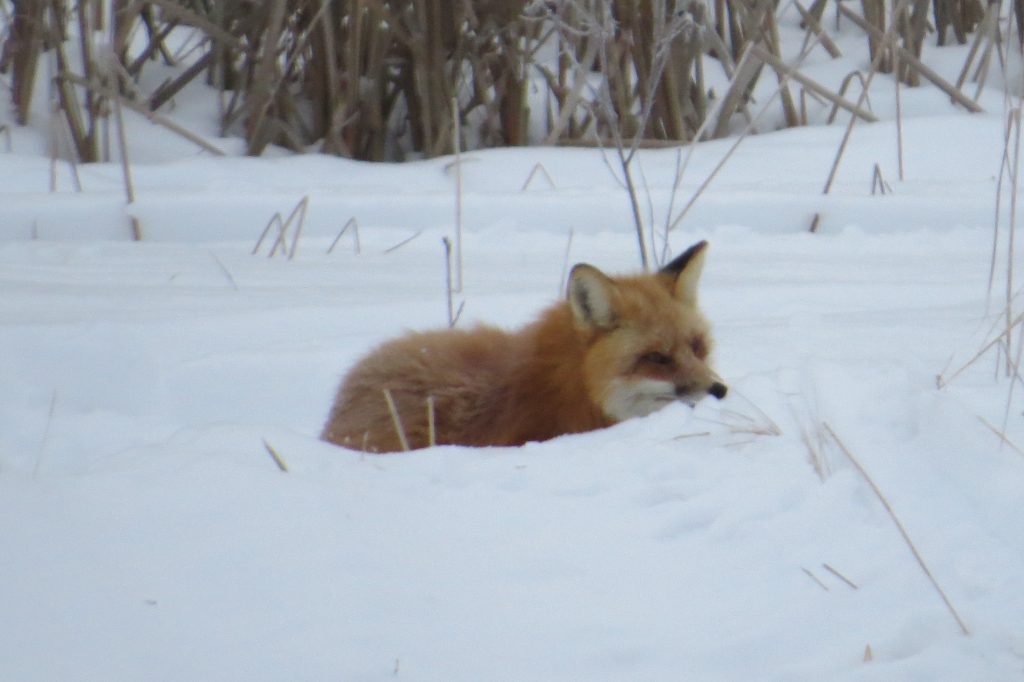 Shortly after this, we were approaching a Northern Hawk Owl territory, and I was on high alert scanning everywhere. This would be a key bird for the count, and I really wanted to get it bad. This resulted in me spotting a bird high in a birch tree that I first thought was our target. But it wasn’t. I was just as thrilled, though, because it was a Ruffed
Shortly after this, we were approaching a Northern Hawk Owl territory, and I was on high alert scanning everywhere. This would be a key bird for the count, and I really wanted to get it bad. This resulted in me spotting a bird high in a birch tree that I first thought was our target. But it wasn’t. I was just as thrilled, though, because it was a Ruffed
Grouse–I knew Evan would be pumped. Sure enough, new life came to the almost teenager as he frantically transitioned from his pencil and clipboard to getting his gun ready. Despite Evan’s best attempt at being stealthy like the fox, the grouse flew away unscathed without a shot fired. A letdown for sure, but now Evan at least knew his dad wasn’t crazy when he said there would probably be a chance to shoot at a grouse.
We set about working our route, and at one point, we were near one of my favorite black spruce bogs to bird. Some of this bog is in the circle and some is out of it. Just for fun I decided to check one of my hotpsots for rare woodpeckers just a couple hundred yards outside of the circle. I played a Black-backed Woodpecker recording and instantly heard one vocalize just off the road. I went into the bog after it and saw that gorgeous jet black back of a female Black-backed Woodpecker.
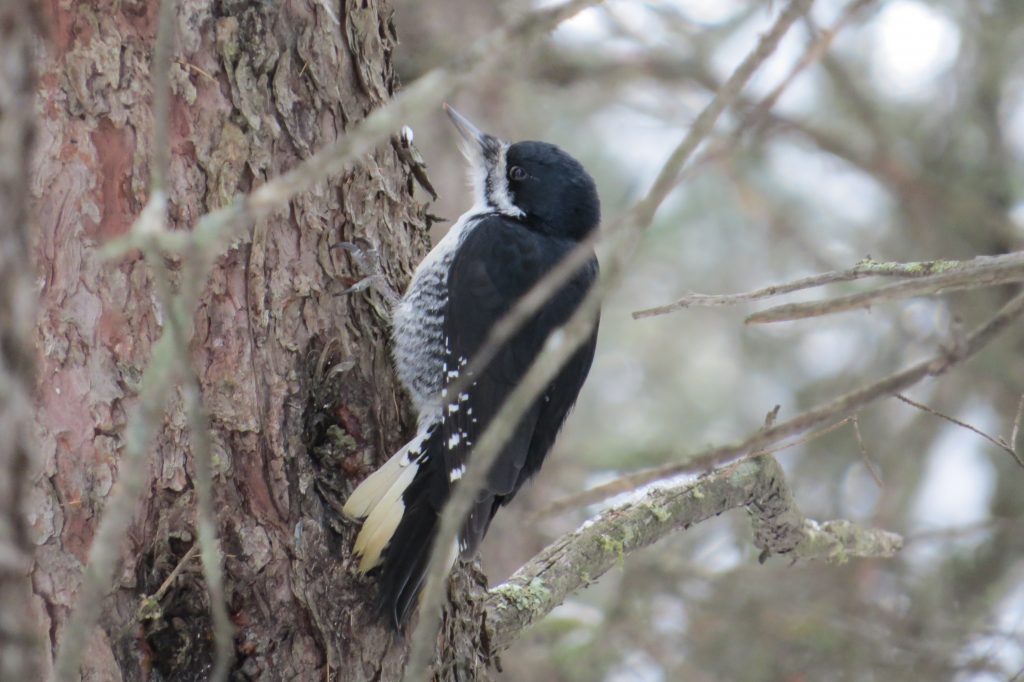 As I watched her, I was surprised when a male Black-backed scooted down the tree, interacted with her, and buzzed off. Where had he come from? The male wasn’t as photogenic but still gave some great looks.
As I watched her, I was surprised when a male Black-backed scooted down the tree, interacted with her, and buzzed off. Where had he come from? The male wasn’t as photogenic but still gave some great looks.
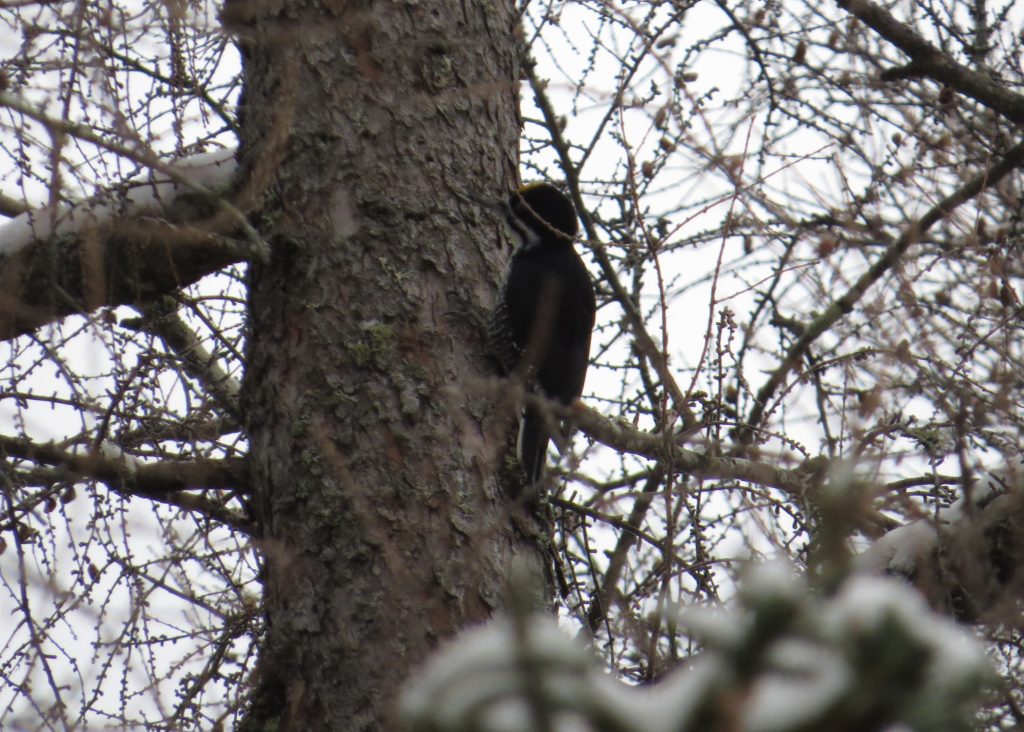 Evan had declined my offer to join me in the swamp to see these rare woodpeckers even though I knew he hadn’t seen them before. He opted to stay in the car; non-Grouse birds were still not exciting to him. He should have joined me because there was so much woodpecker activity (these two plus a Hairy), that I was stomping around in the bog for quite some time investigating every bit of tapping. And then, I heard yet another woodpecker drumming in a cadence that was perfect for a woodpecker even more rare than the Black-backed. It was an American Three-toed Woodpecker! I played a recording, and it instantly flew in, allowing me to visually confirm what I had heard. This species is rare enough in Minnesota that it is flagged in eBird and requires documentation. Thankfully I was able to get a few identifiable photos.
Evan had declined my offer to join me in the swamp to see these rare woodpeckers even though I knew he hadn’t seen them before. He opted to stay in the car; non-Grouse birds were still not exciting to him. He should have joined me because there was so much woodpecker activity (these two plus a Hairy), that I was stomping around in the bog for quite some time investigating every bit of tapping. And then, I heard yet another woodpecker drumming in a cadence that was perfect for a woodpecker even more rare than the Black-backed. It was an American Three-toed Woodpecker! I played a recording, and it instantly flew in, allowing me to visually confirm what I had heard. This species is rare enough in Minnesota that it is flagged in eBird and requires documentation. Thankfully I was able to get a few identifiable photos.
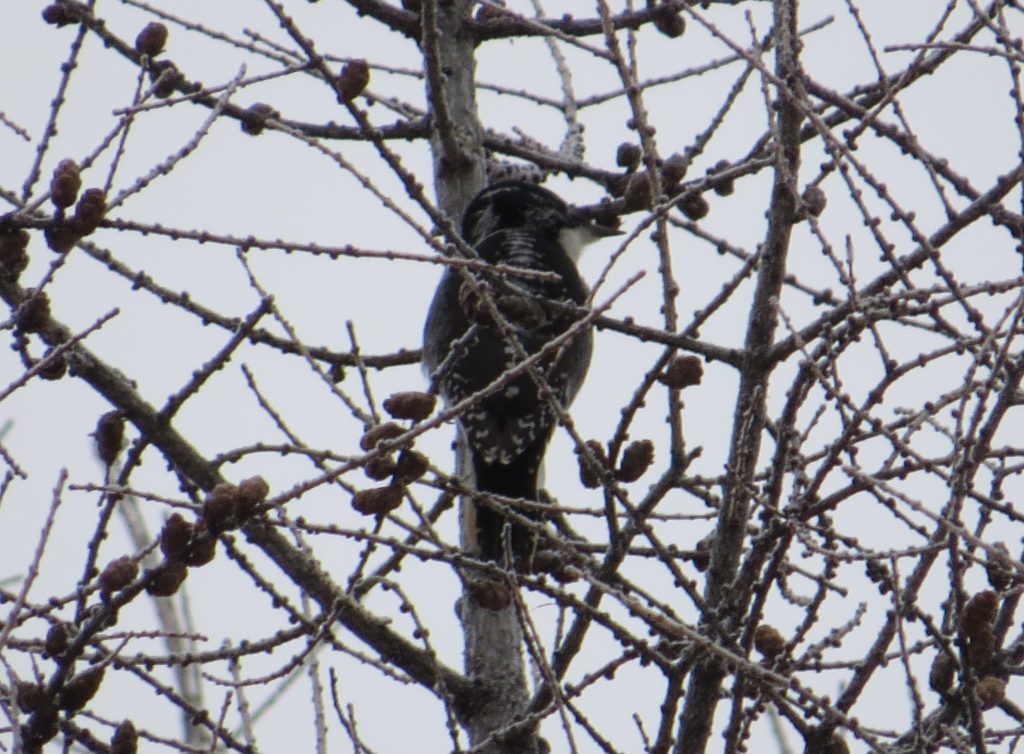 Once again I asked Evan if he now wanted to check out two rare woodpecker species, but he declined. He’s never seen either. There was so much activity that it was hard to keep straight, and our quick stop to check for woodpeckers was now going on a half hour. Even still, Evan preferred the car over the excitement around us. This particular spot has often held these two elusive boreal woodpecker species. In fact, two years ago almost to the day, I had the same encounter in this same spot: two Black-backeds and a single Three-toed.
Once again I asked Evan if he now wanted to check out two rare woodpecker species, but he declined. He’s never seen either. There was so much activity that it was hard to keep straight, and our quick stop to check for woodpeckers was now going on a half hour. Even still, Evan preferred the car over the excitement around us. This particular spot has often held these two elusive boreal woodpecker species. In fact, two years ago almost to the day, I had the same encounter in this same spot: two Black-backeds and a single Three-toed.
As exciting as the Woodpeckers were, I had a bored kid in the car and an unfinished CBC route. So we got back to it. The way the CBC circle falls, we only had to go a half mile before we were back in the circle again but still in the same spruce bog. This bog has held Boreal Chickadees in the past, so I decided to stop and try the secret weapon: playing the recording of chickadees mobbing a singing Eastern Screech-Owl. It never fails to attract a swarm of angry Black-capped Chickadees, looking to bring war to a fake owl. Often times this tremendous commotion can bring in other onlooker birds, ready to join the angry mob with their pitchforks. Sometimes this even attracts rare birds. And this time it did. Two of the chickadees sounded different than the others and proved to be the much rarer Boreal Chickadee. This was a solid find for the count.
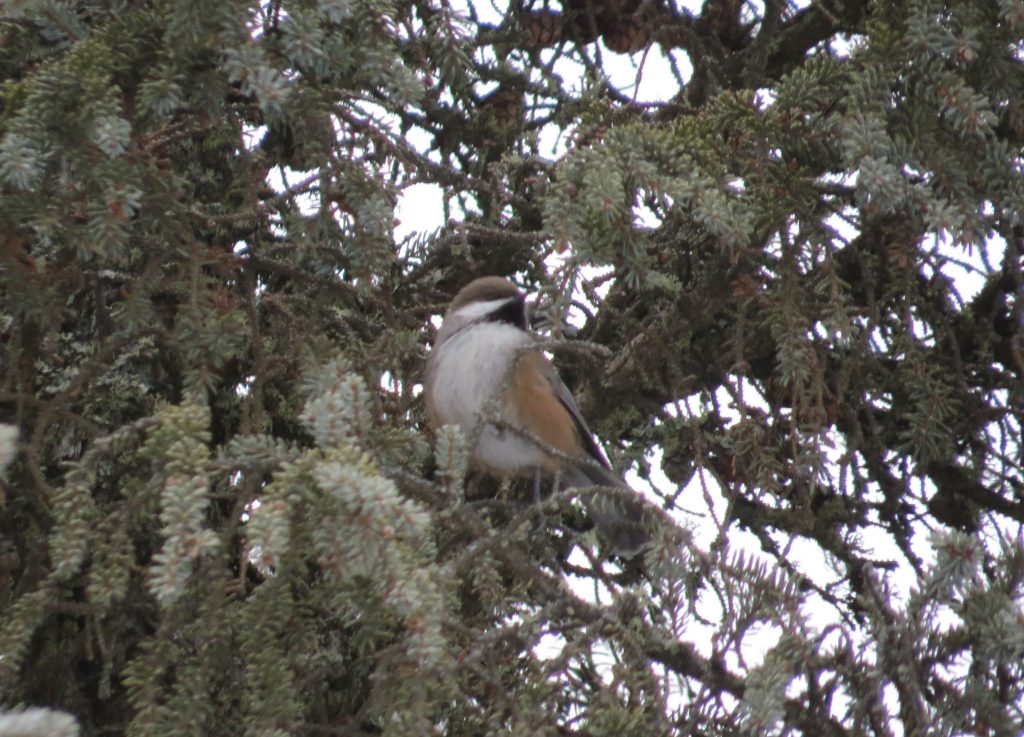
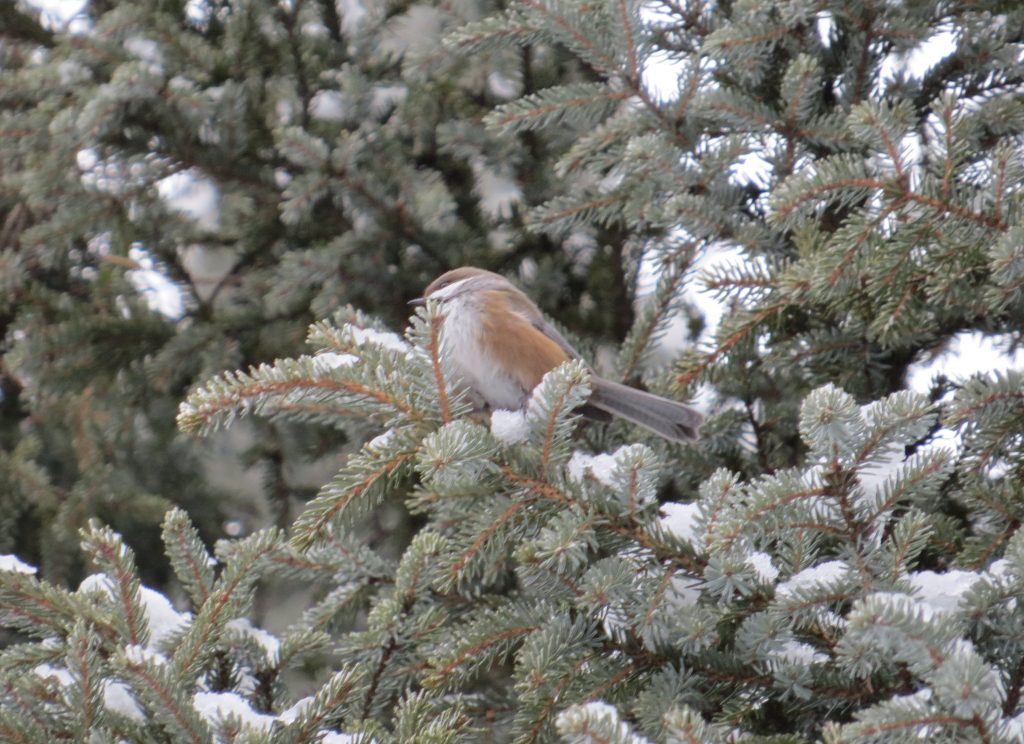 I asked Evan if he wanted to get a good look at the coolest chickadee species there is, but he again declined. I was pumped regardless. It’s always fun to see these birds, even more so when they count for a CBC. A bonus was that as I was observing them, another Black-backed Woodpecker flew into the bog nearby and vocalized! Another great count bird!
I asked Evan if he wanted to get a good look at the coolest chickadee species there is, but he again declined. I was pumped regardless. It’s always fun to see these birds, even more so when they count for a CBC. A bonus was that as I was observing them, another Black-backed Woodpecker flew into the bog nearby and vocalized! Another great count bird!
We got back to doing our route. Evan was hoping for grouse redemption; I was hoping for something, anything, that would be interesting. My hope came true first. Going down a road, we saw a half dozen Ravens scatter from the road. They must have been on a kill. Evan said, “Looks like six ravens and one magpie.”
“There was no magpie there,” I responded.
“Well, look in that tree right there by the road. There’s something special in it.” So I looked with the binos and caught sight of a Black-billed Magpie flying out of that tree! The kid was right, and I had missed it. I think he felt a surge of pride and was starting to get into this count thing.
A few miles later as we drove down a different road with the windows cracked, I heard some chickadees. So I decided to play the mobbing recording again. It paid off with a pile of Black-capped Chickadees, a few Red-breasted Nuthatches, and two more Boreal Chickadees!
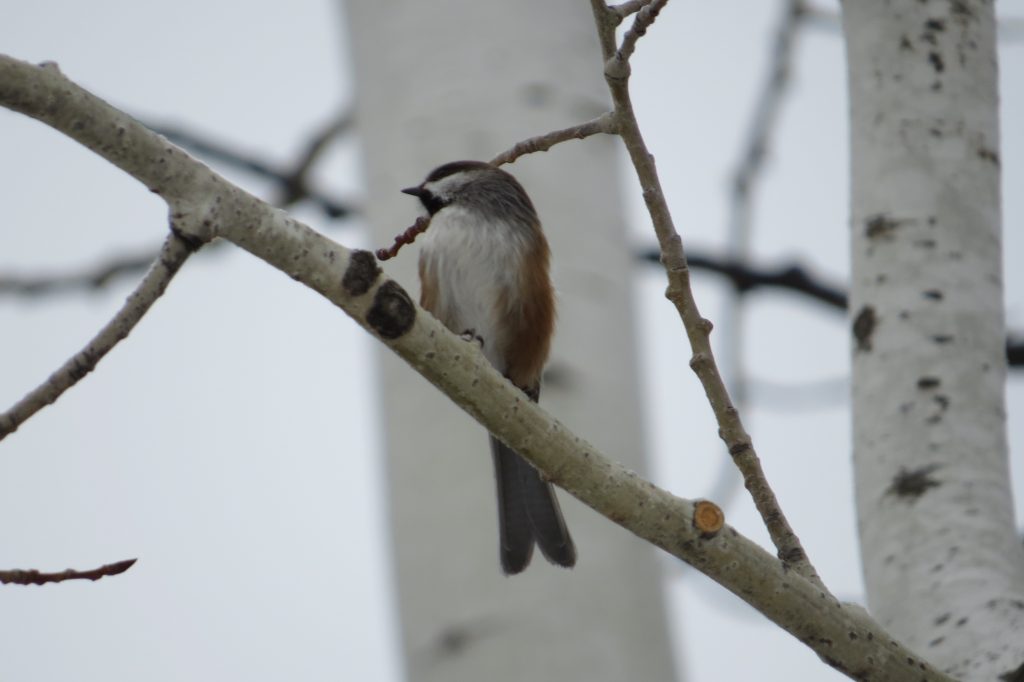
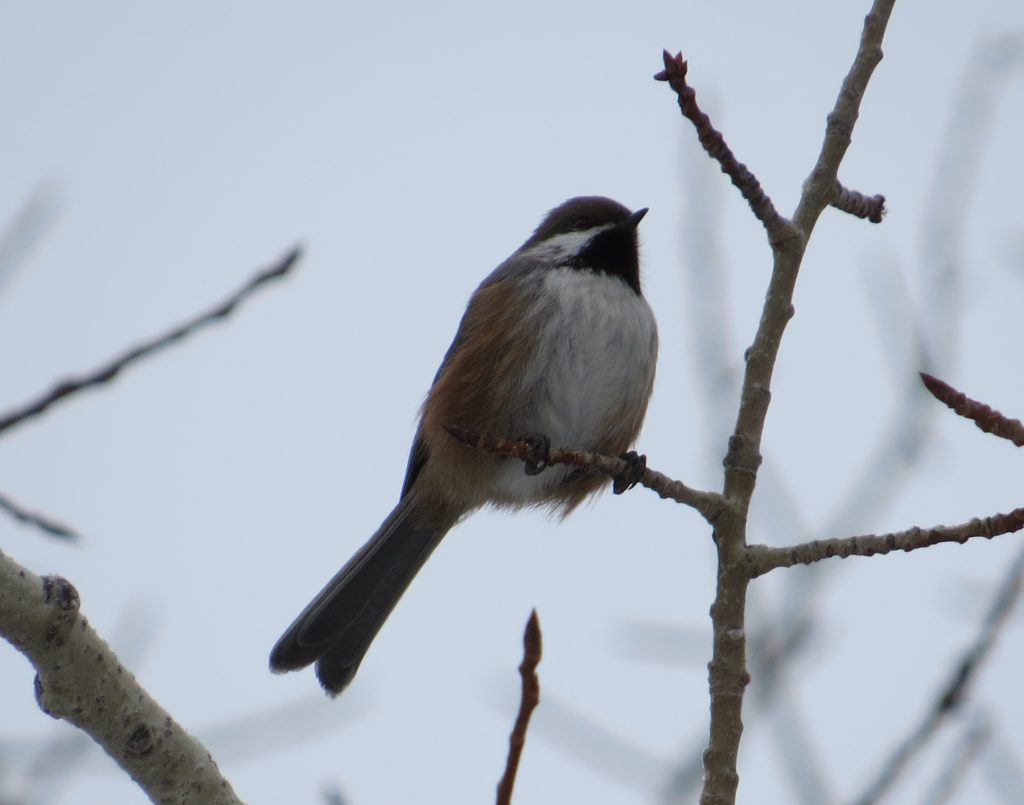 Evan still didn’t share my same level of enthusiasm, but we both shared enthusiasm for the CBC potluck right after finishing our route. The potluck is just as exciting for the nourishment as it is for catching up with other birders and comparing notes on how everybody did. Additionally, it was a reunion of sorts for me as I was among a group of over a dozen people that included several parents of kids I graduated with over 20 years ago. So after food was in our bellies and sufficient small talk was made with people from a past life, it was time to go through everybody’s results. Julie Grahn, who is the compiler for the count, did this by calling out a species and then have everyone go around the table giving their numbers for that species. Evan surprised me when he whispered, “Dad, I want to be the one to say the numbers.” Maybe he was finding some interest in this CBC thing after all, even if he didn’t get a grouse from it. Not surprisingly, Evan and I were the only ones to produce Boreal Chickadees. Surprisingly, our Black-backed Woodpecker was one of four that day. Evan and I also produced half of the total Magpies as well as the only Northern Shrike.
Evan still didn’t share my same level of enthusiasm, but we both shared enthusiasm for the CBC potluck right after finishing our route. The potluck is just as exciting for the nourishment as it is for catching up with other birders and comparing notes on how everybody did. Additionally, it was a reunion of sorts for me as I was among a group of over a dozen people that included several parents of kids I graduated with over 20 years ago. So after food was in our bellies and sufficient small talk was made with people from a past life, it was time to go through everybody’s results. Julie Grahn, who is the compiler for the count, did this by calling out a species and then have everyone go around the table giving their numbers for that species. Evan surprised me when he whispered, “Dad, I want to be the one to say the numbers.” Maybe he was finding some interest in this CBC thing after all, even if he didn’t get a grouse from it. Not surprisingly, Evan and I were the only ones to produce Boreal Chickadees. Surprisingly, our Black-backed Woodpecker was one of four that day. Evan and I also produced half of the total Magpies as well as the only Northern Shrike.
After we bid goodbye to our CBC friends until next year, I decided to run Evan out to the two Hawk Owl spots. Even before we reached the first territory, he was questioning why we were doing this when we’ve seen Hawk Owls before. I tried to explain that they are just that cool and are always worth seeing, especially when they are close. I don’t think he was buying it, though. The first Hawk Owl was right where it was supposed to be. Evan, who had never used binoculars in his early birding days, picked up my pair and looked at the owl. Evan had never seen an owl through quality optics before, and clearly he was impressed. “Whoa! He’s creepy. He has yellow eyes! He’s staring at me!” I chuckled as the little birdwatching kid from the past was back, for however a brief a moment.
We moved on the second Northern Hawk Owl which set up territory right at the edge of the count circle. When we got there, it was on a high pole just outside the circle. This time I set up my scope and zoomed all the way in on this owl for Evan to get a really good look. “Wow! It’s like he’s looking into my soul!”
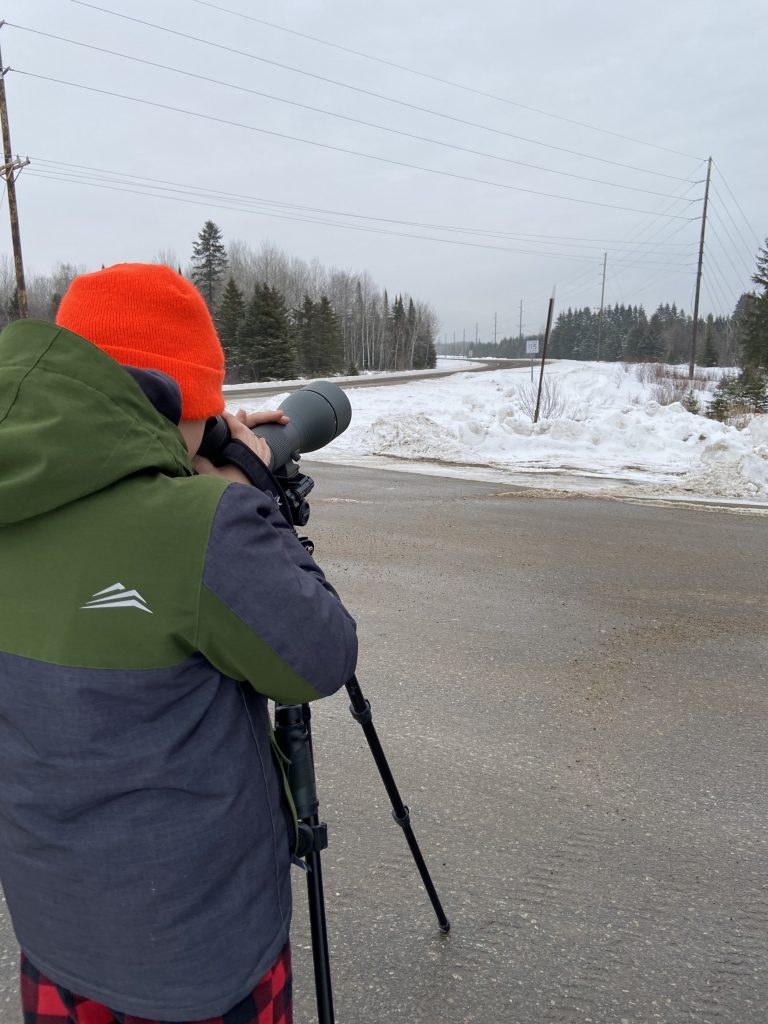
As we watched, the owl did us a huge favor and flew down into the count circle! We thought we saw it go to the ground and guessed that it had gotten a vole. Sure enough, he popped up and landed in the trees right near us with a vole in its talons.
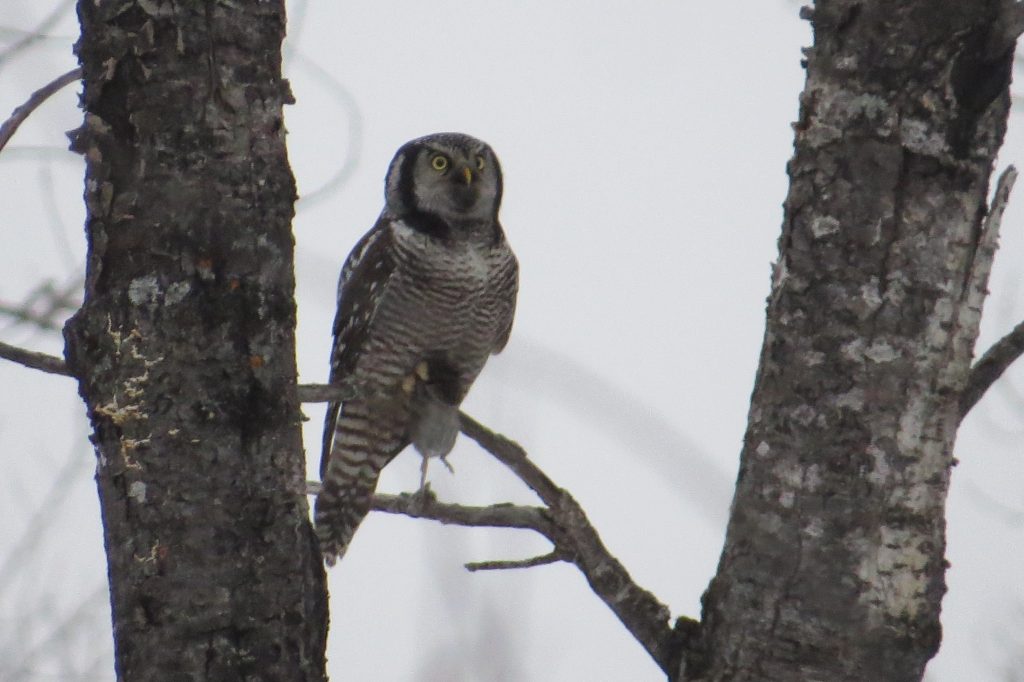
Evan and I were in the car by this point, and the owl kept flying all around us, landing at various perches, and working on downing his meal. “This is incredible. This is absolutely amazing. This is the coolest thing I have ever seen!” Evan was in genuine awe. I hadn’t seen him that excited since we saw the Boreal Owl two years ago. I got just as much a kick out of watching Evan’s reaction as I did watching the Hawk Owl. I think Evan was starting to understand that Hawk Owls are never ever not cool. What other owl not only doesn’t care about you but also gives you the death stare from 20 feet above your car?
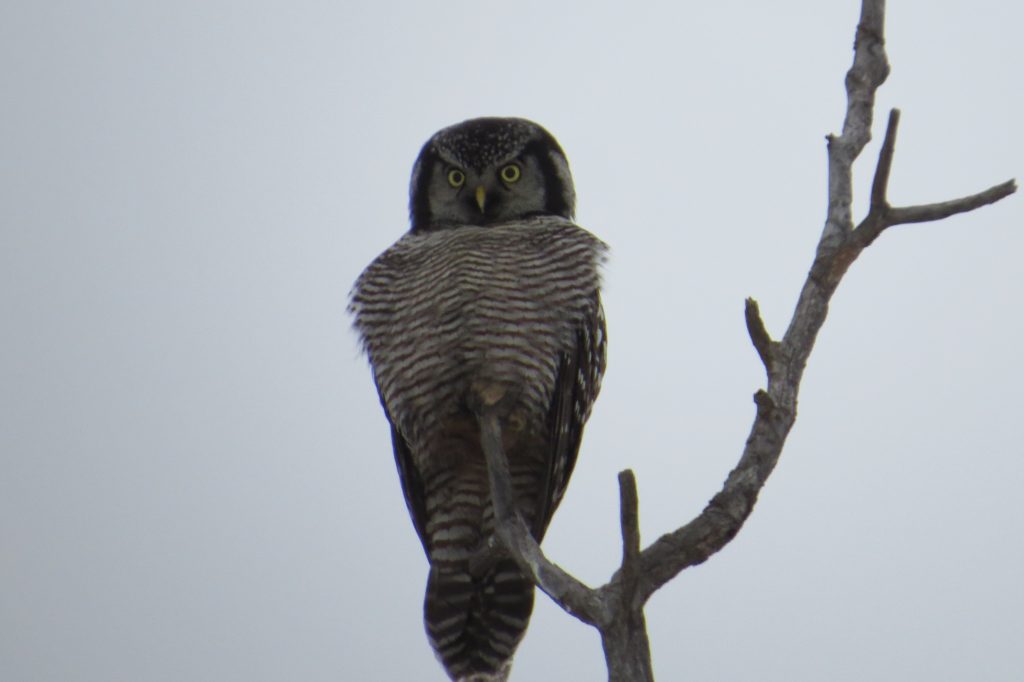 After we texted Julie to let her know that two Hawk Owls were securely in the circle for count day, we headed back toward Grandma and Grandpa’s. I was sure to take a route that would run us through some habitat where I have had good luck seeing Ruffed Grouse over the years at this late hour in the day. When there is so much snow on the ground, the grouse will eat the catkins of birch trees near dusk. As we drove along, we were able to spot two grouse doing just that, and Evan was able to harvest them. And to cap an already great day, I heard and saw our 5th Boreal Chickadee of the day.
After we texted Julie to let her know that two Hawk Owls were securely in the circle for count day, we headed back toward Grandma and Grandpa’s. I was sure to take a route that would run us through some habitat where I have had good luck seeing Ruffed Grouse over the years at this late hour in the day. When there is so much snow on the ground, the grouse will eat the catkins of birch trees near dusk. As we drove along, we were able to spot two grouse doing just that, and Evan was able to harvest them. And to cap an already great day, I heard and saw our 5th Boreal Chickadee of the day.
The next day we were supposed to head back to Willmar, but a huge snowstorm had covered almost the entire state. Traveling would have been treacherous, so we extended our stay one day. The snow was so bad, that when I attempted to go out birding in the middle of the day, I had to turn back because of unplowed roads. The 15-minute foray was not unproductive as it produced three Black-billed Magpies doing their best Bigfoot impressions.
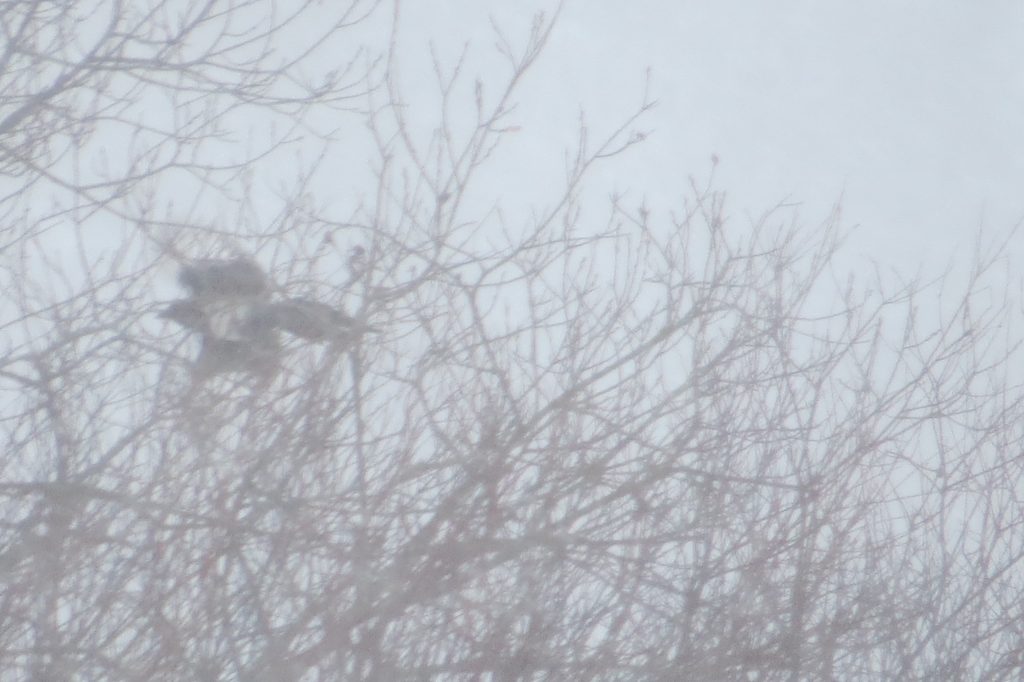 The weather calmed down enough later in the afternoon, and the plows had cleared the roads. So I made another attempt at birding. I really wanted to spend some time in the solitude of the spruce bog, tracking down woodpeckers again. Well, it was a complete 180 from yesterday–absolutely nothing was around. So I began to drive home but always with a watchful and hopeful eye for anything cool. I have longed to see Great Gray Owls on this particular road and have been trying for about 6 years now. I did not see any of the Great Grays, but three moving clumps in the top of a birch tree got the birding juices flowing again. Ruffed Grouse! I looked at the clock and realized that I probably had enough time to go pick up Evan and bring him back to this spot. With an hour until sunset, I figured those birds would be there for a good long while. So I phoned ahead to the house so he would be ready for me to pick him up and make a quick return. Then I marked the tree on Google Maps so I could get right to it again. Within 20 minutes, I had gotten Evan and we were back at the spot except…the grouse were gone. We were both wondering if I was off a bit in my marking, so we continued to scan treetops. Finally I decided to turn around and go looking in the other direction. To turn around, I had to perform a 3-point turn on the narrow gravel road, a move I have perfected over all these years of birding. As I had the car crossways on the gravel road, Evan shouts out, “Dad! An owl!” My mind was reeling. Was it the Great Gray I had been after for so long? Where was it?? I couldn’t find what Evan was seeing. “Dad, it’s right there!” Finally, I caught sight of the owl just 20 feet away perched 6 feet high. It was a beautiful Barred Owl. And it didn’t care that through serendipity we had invaded the exact spot it was hunting.
The weather calmed down enough later in the afternoon, and the plows had cleared the roads. So I made another attempt at birding. I really wanted to spend some time in the solitude of the spruce bog, tracking down woodpeckers again. Well, it was a complete 180 from yesterday–absolutely nothing was around. So I began to drive home but always with a watchful and hopeful eye for anything cool. I have longed to see Great Gray Owls on this particular road and have been trying for about 6 years now. I did not see any of the Great Grays, but three moving clumps in the top of a birch tree got the birding juices flowing again. Ruffed Grouse! I looked at the clock and realized that I probably had enough time to go pick up Evan and bring him back to this spot. With an hour until sunset, I figured those birds would be there for a good long while. So I phoned ahead to the house so he would be ready for me to pick him up and make a quick return. Then I marked the tree on Google Maps so I could get right to it again. Within 20 minutes, I had gotten Evan and we were back at the spot except…the grouse were gone. We were both wondering if I was off a bit in my marking, so we continued to scan treetops. Finally I decided to turn around and go looking in the other direction. To turn around, I had to perform a 3-point turn on the narrow gravel road, a move I have perfected over all these years of birding. As I had the car crossways on the gravel road, Evan shouts out, “Dad! An owl!” My mind was reeling. Was it the Great Gray I had been after for so long? Where was it?? I couldn’t find what Evan was seeing. “Dad, it’s right there!” Finally, I caught sight of the owl just 20 feet away perched 6 feet high. It was a beautiful Barred Owl. And it didn’t care that through serendipity we had invaded the exact spot it was hunting.
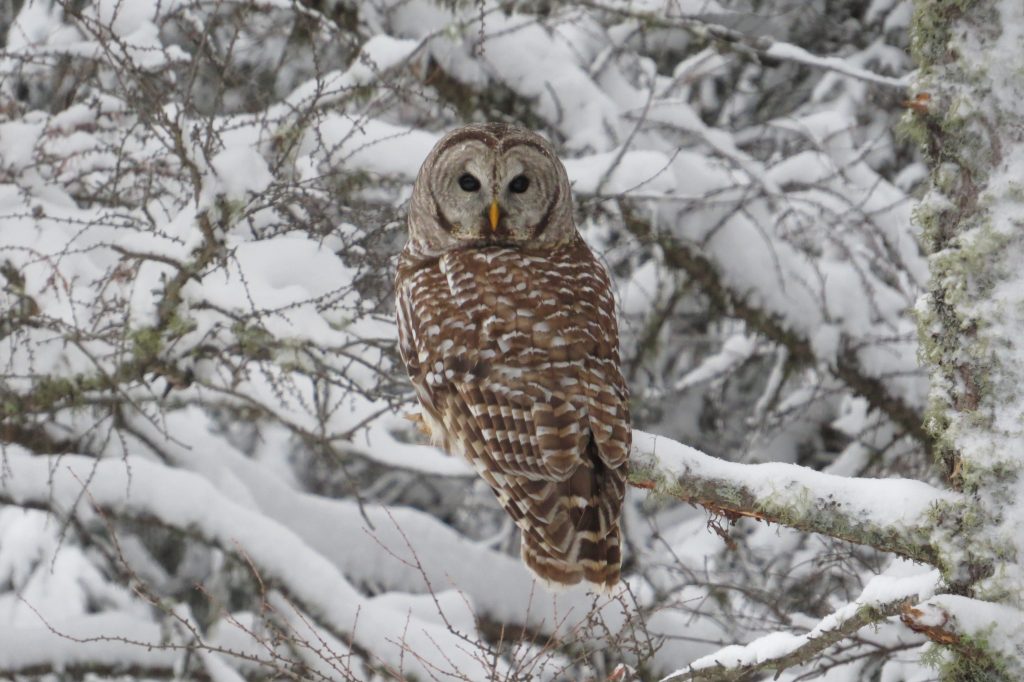 It was truly magical in this winter wonderland. Had we not turned around in that exact spot and had Evan not had watchful eyes, we easily would have missed this owl. Can you see why?
It was truly magical in this winter wonderland. Had we not turned around in that exact spot and had Evan not had watchful eyes, we easily would have missed this owl. Can you see why?
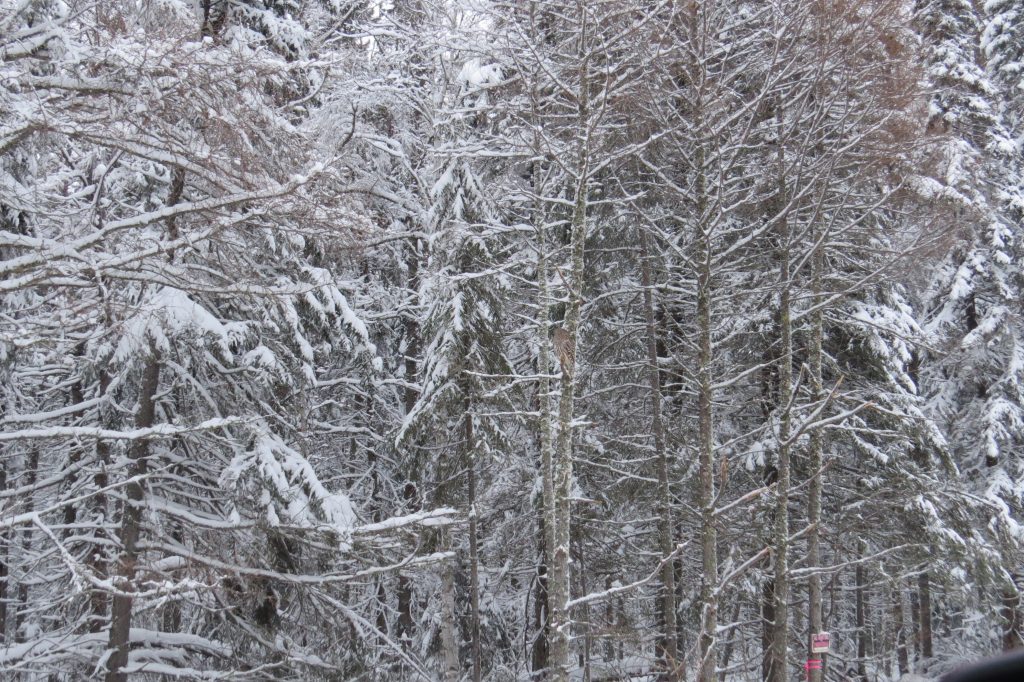 The owl allowed us to complete our 3-point turn and gawk some more. Evan effused more words of awe at this majestic creature that just stared back at us. The little boy who used to get excited about birds was back. It was an incredible moment to share together. We both seemed to have forgotten about grouse completely. It was just a spectacular display of nature–vibrant life that had materialized out of the deep, dark bog.
The owl allowed us to complete our 3-point turn and gawk some more. Evan effused more words of awe at this majestic creature that just stared back at us. The little boy who used to get excited about birds was back. It was an incredible moment to share together. We both seemed to have forgotten about grouse completely. It was just a spectacular display of nature–vibrant life that had materialized out of the deep, dark bog.
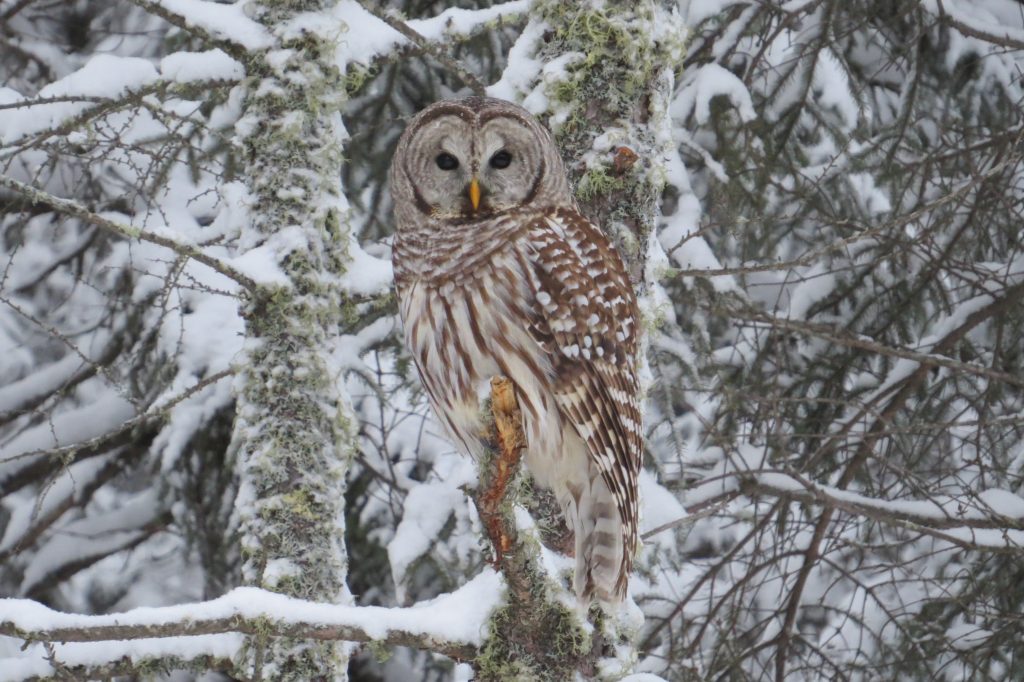 We finally peeled ourselves away from the Barred Owl. Like the owl, we had hunting to do. In that respect we were quite successful. We ended up seeing a total of six more Ruffed Grouse, and Evan was able to take two. As we drove and scanned for grouse, I was struck by how things had come full circle. Almost 30 years ago, I was the one sitting in the passenger seat hoping there would be a grouse to shoot, while being driven around by my dad who didn’t really care if he shot a grouse or not. And in that same vein, maybe someday Evan will return to a greater interest in watching the birds more than hunting. Regardless, we made some great memories together in the northwoods.
We finally peeled ourselves away from the Barred Owl. Like the owl, we had hunting to do. In that respect we were quite successful. We ended up seeing a total of six more Ruffed Grouse, and Evan was able to take two. As we drove and scanned for grouse, I was struck by how things had come full circle. Almost 30 years ago, I was the one sitting in the passenger seat hoping there would be a grouse to shoot, while being driven around by my dad who didn’t really care if he shot a grouse or not. And in that same vein, maybe someday Evan will return to a greater interest in watching the birds more than hunting. Regardless, we made some great memories together in the northwoods.

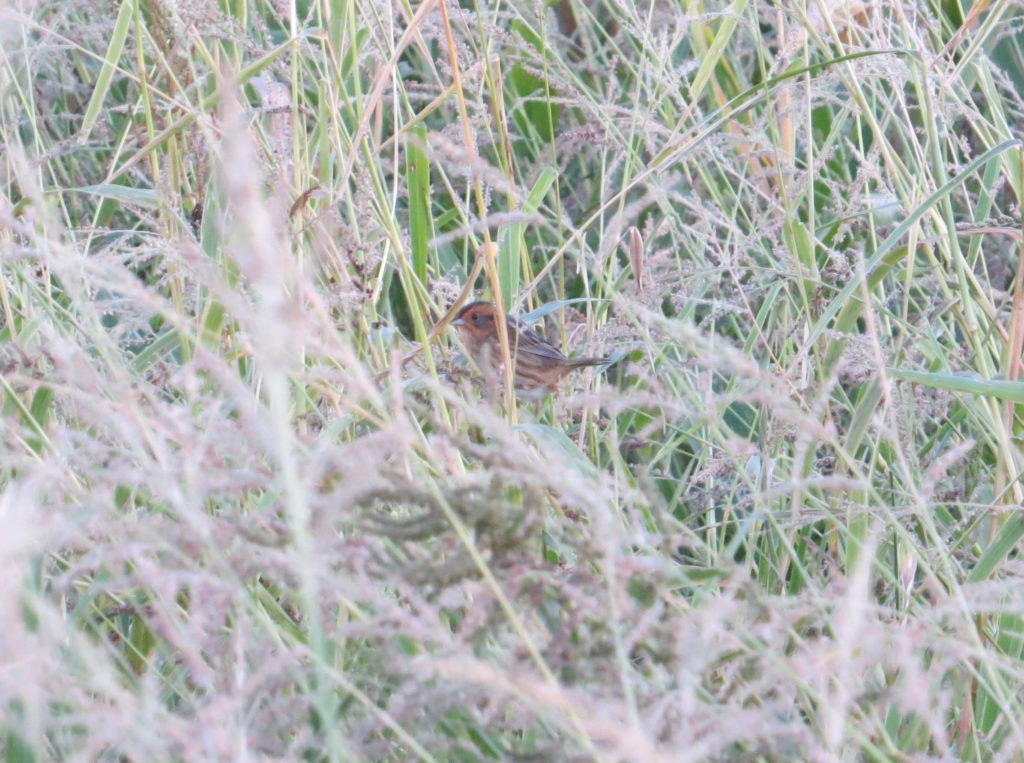
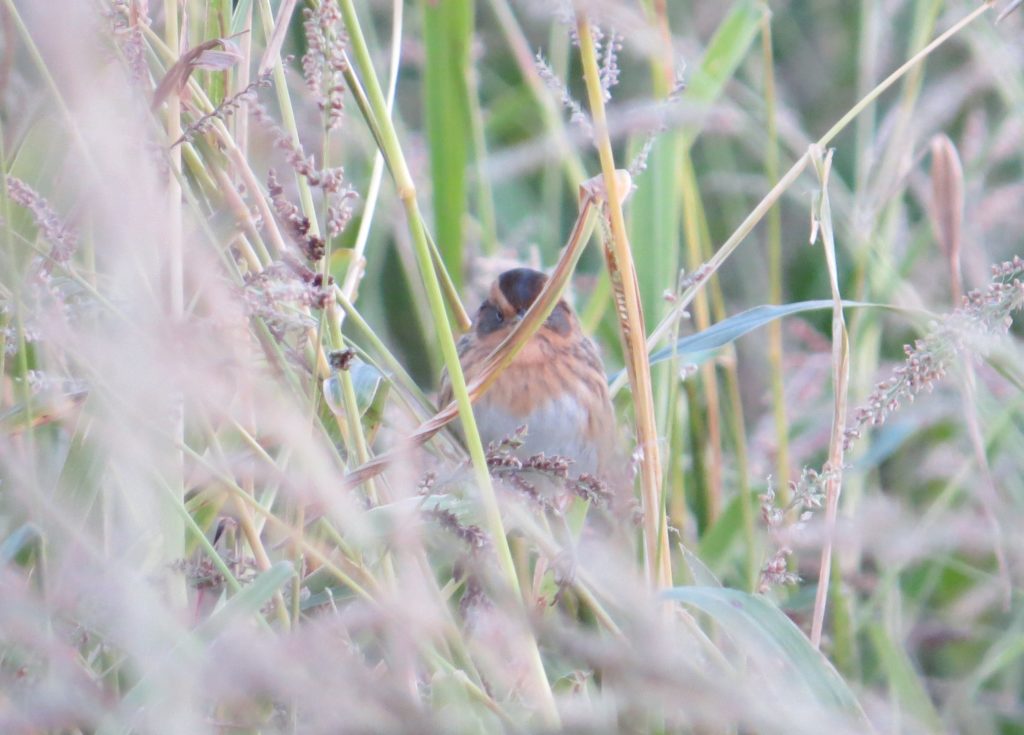
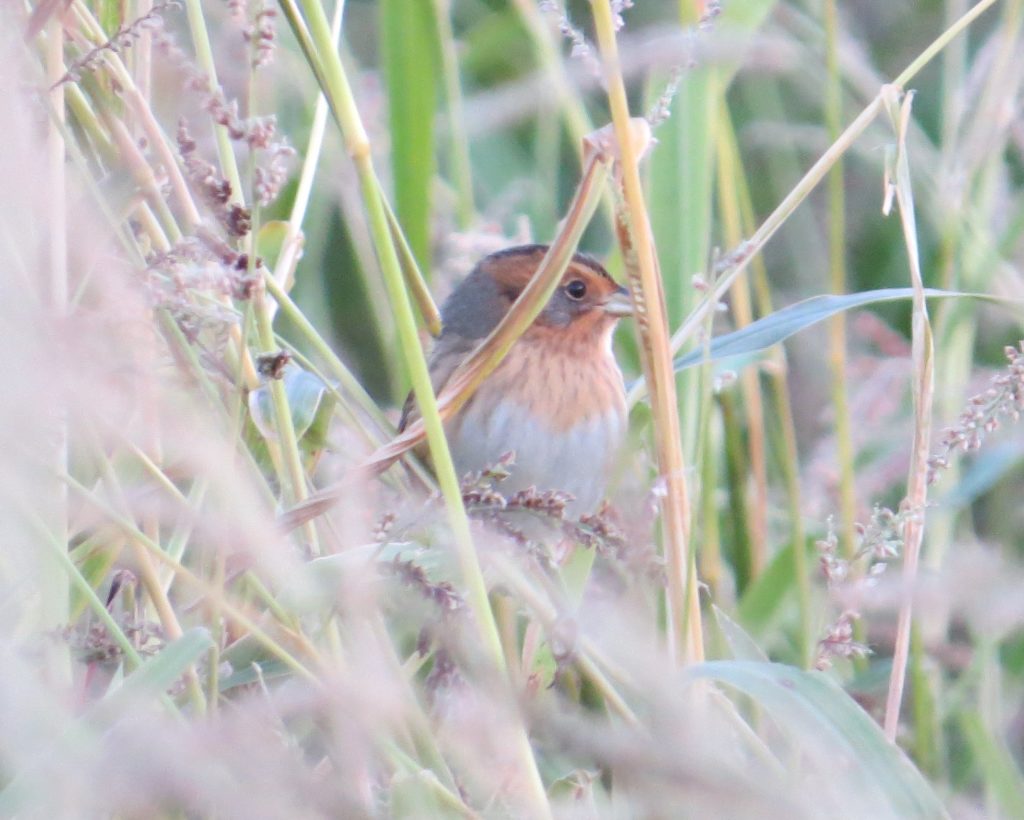 These were the only photos I was able to get which were enough to sufficiently document this first county record. Thankfully the bird hung on for a few days for lots of people to enjoy and add to their county list, including longtime Kandiyohi listers/leaders Randy Frederickson and Ron Erpelding. It felt good to finally add this bird to the county’s rich birding history. Everyone agreed it was a long overdue addition.
These were the only photos I was able to get which were enough to sufficiently document this first county record. Thankfully the bird hung on for a few days for lots of people to enjoy and add to their county list, including longtime Kandiyohi listers/leaders Randy Frederickson and Ron Erpelding. It felt good to finally add this bird to the county’s rich birding history. Everyone agreed it was a long overdue addition.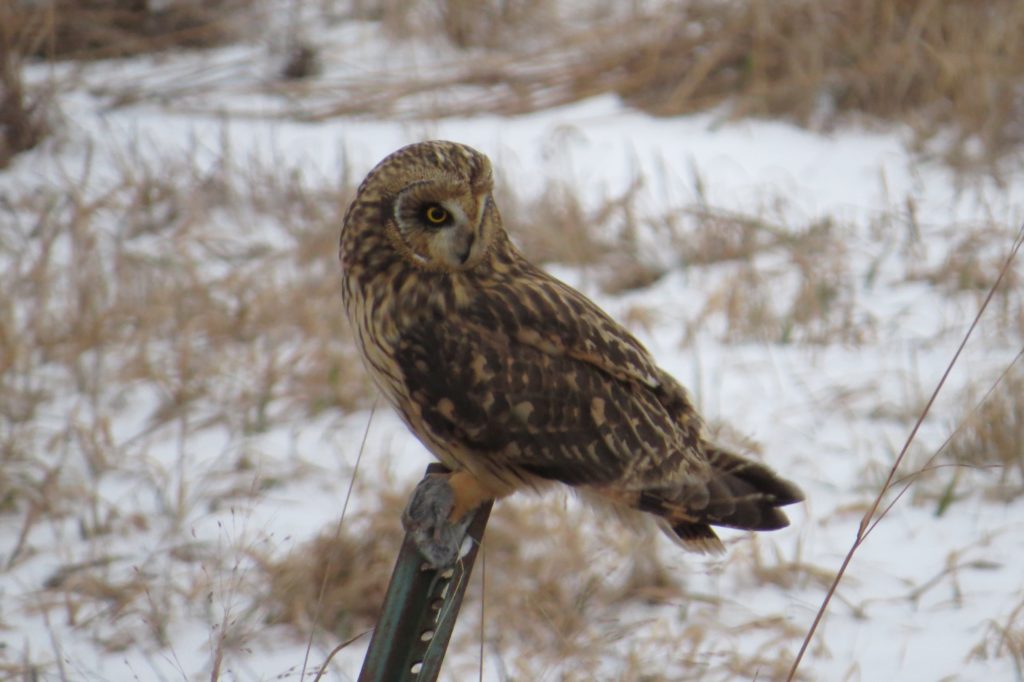
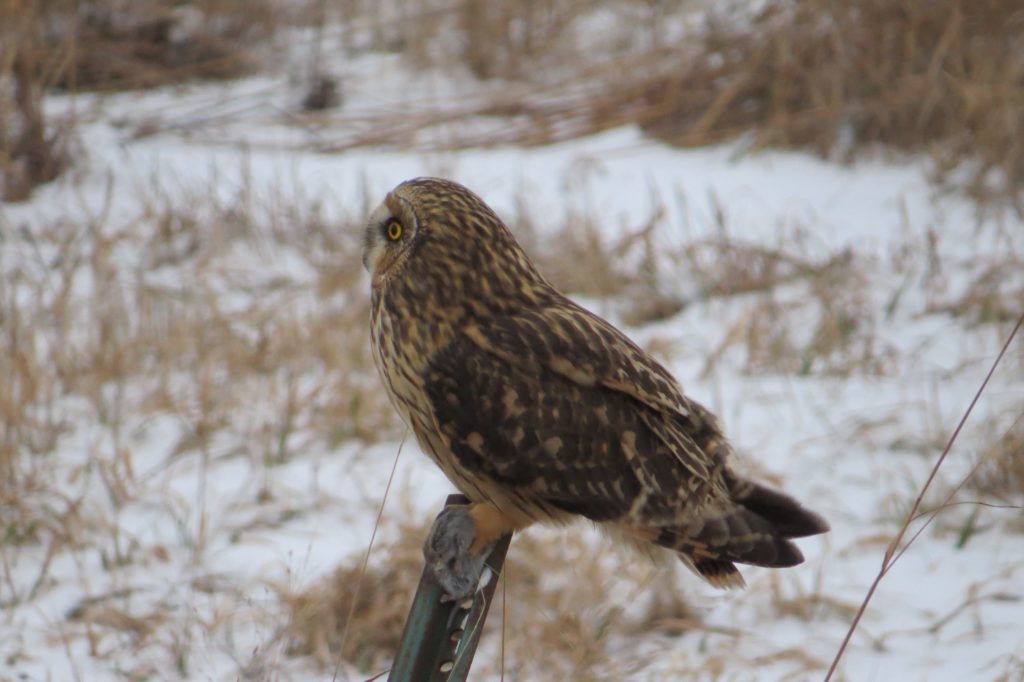
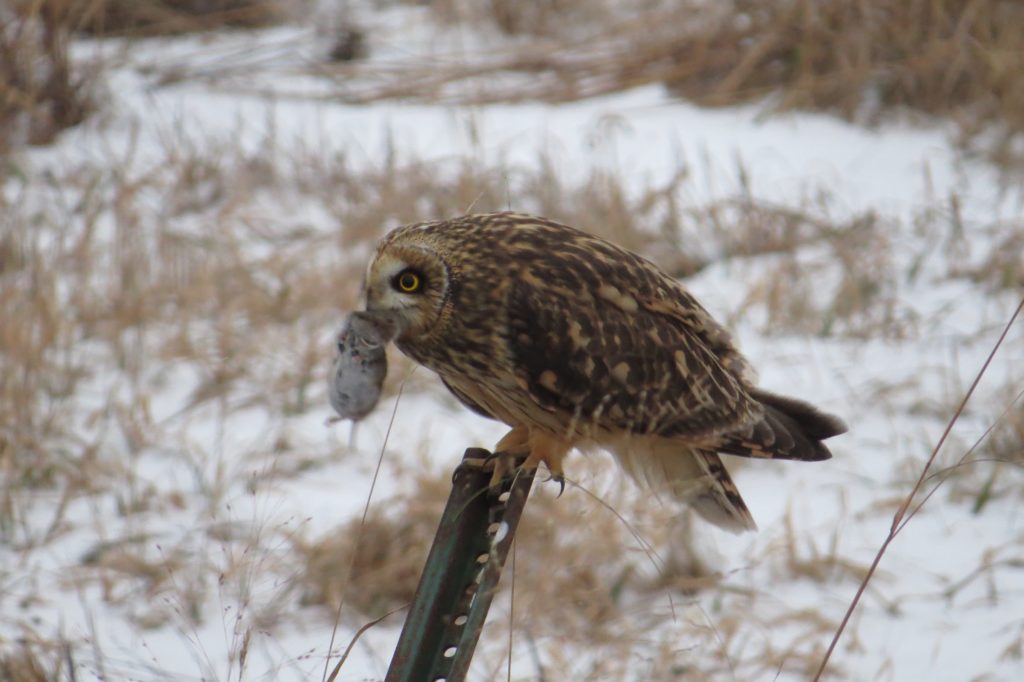
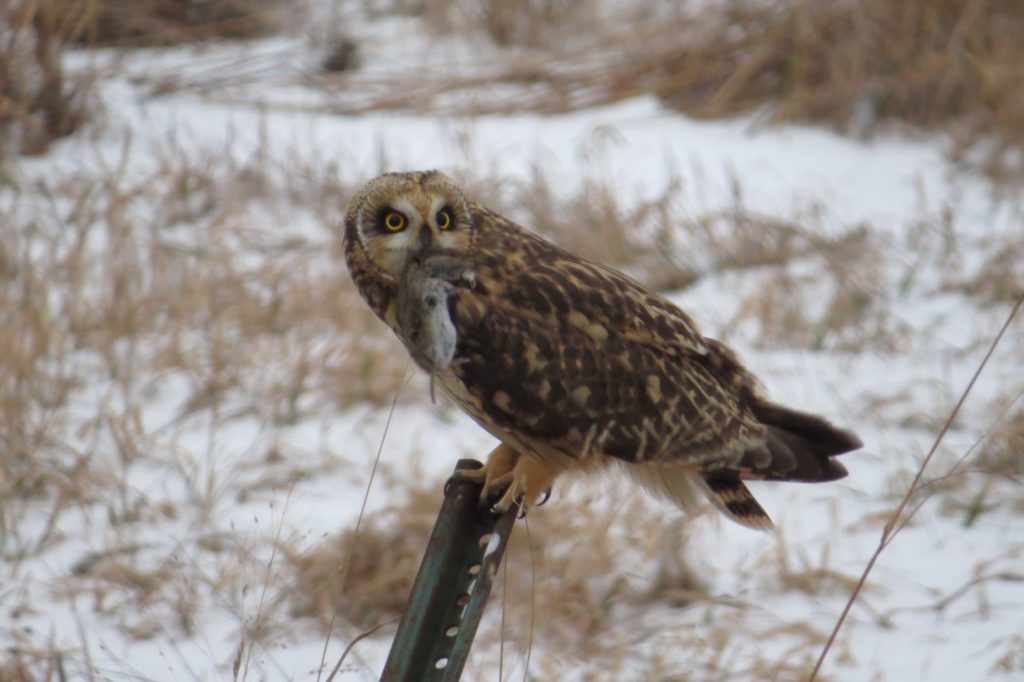
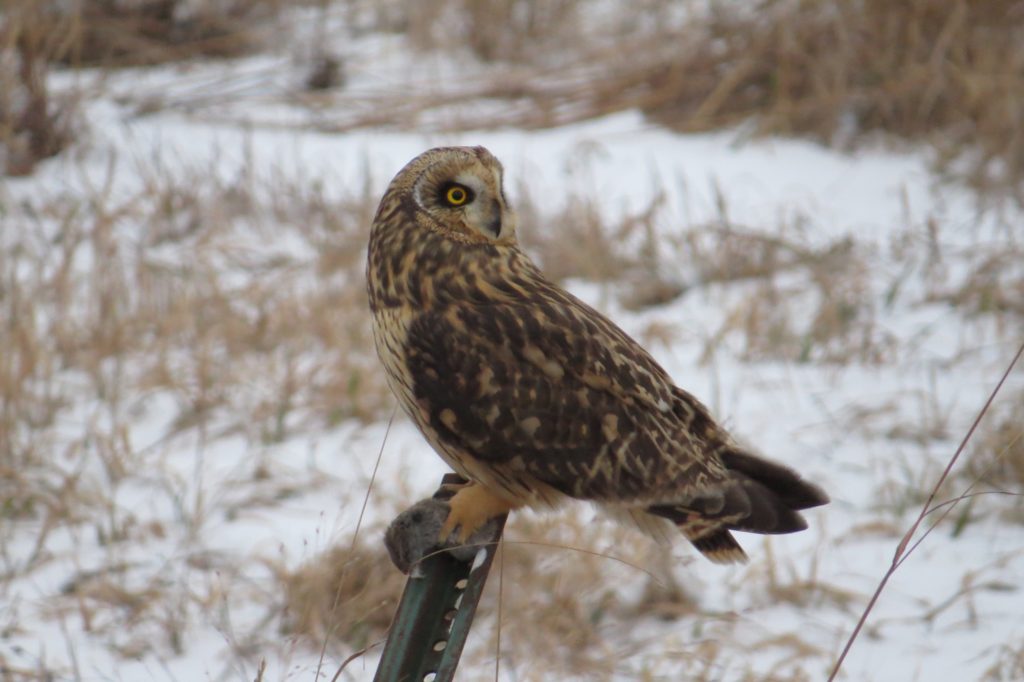
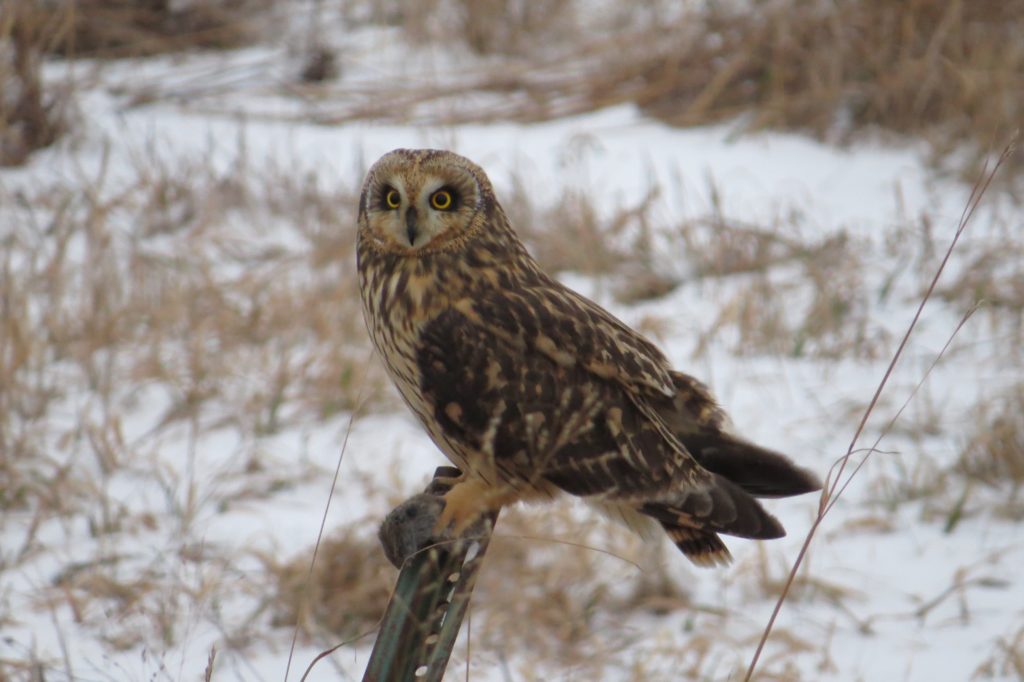
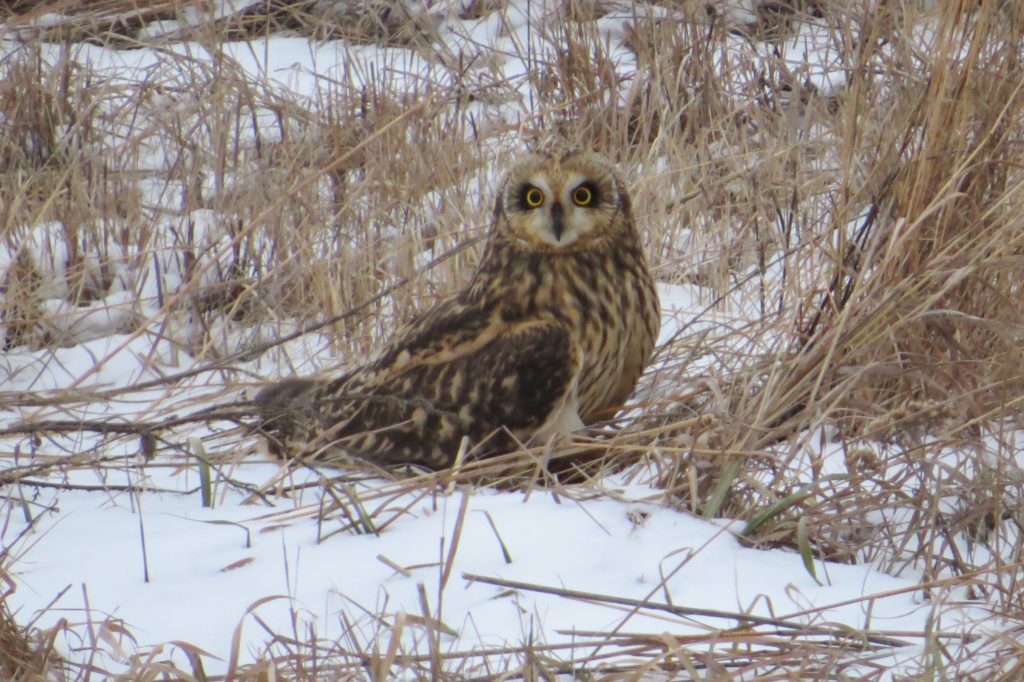 Randy’s been on a hot streak this last year finding several good birds–even when he’s not birding. At the end of December when he was at Ridgewater Community College releasing a rabbit he trapped, he saw a Robin flock eating crabapples and noticed–without binos–one that didn’t quite match the others. This Varied Thrush wasn’t a new bird for either Randy or me (my third county record), but it is always fun to see.
Randy’s been on a hot streak this last year finding several good birds–even when he’s not birding. At the end of December when he was at Ridgewater Community College releasing a rabbit he trapped, he saw a Robin flock eating crabapples and noticed–without binos–one that didn’t quite match the others. This Varied Thrush wasn’t a new bird for either Randy or me (my third county record), but it is always fun to see.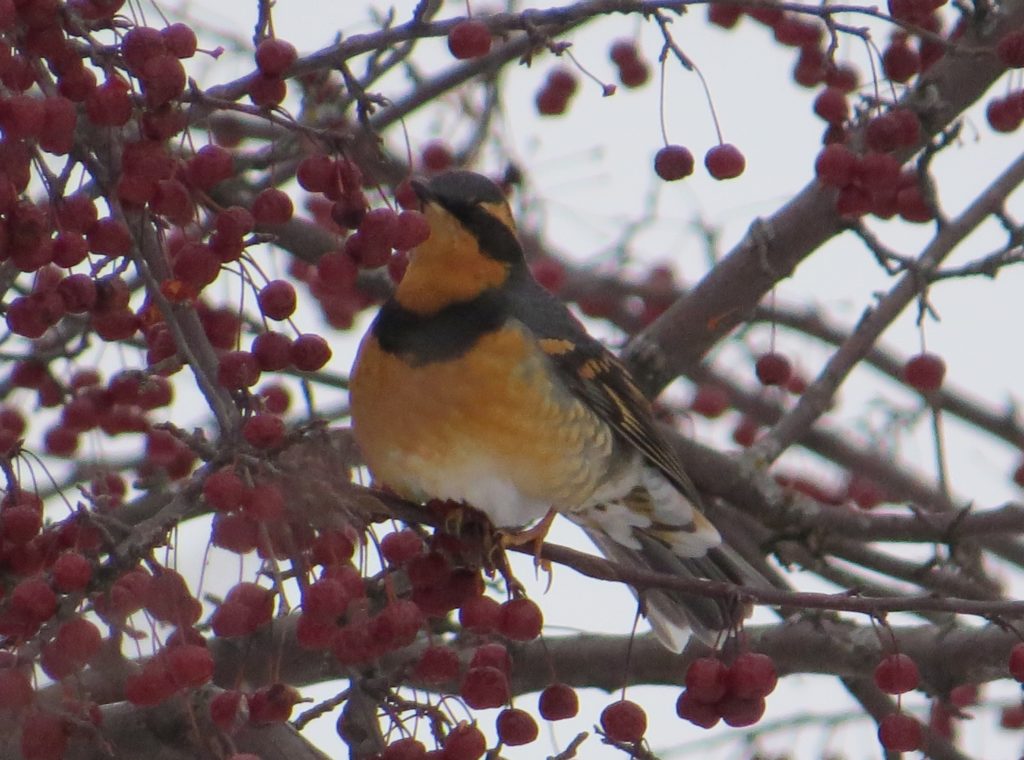
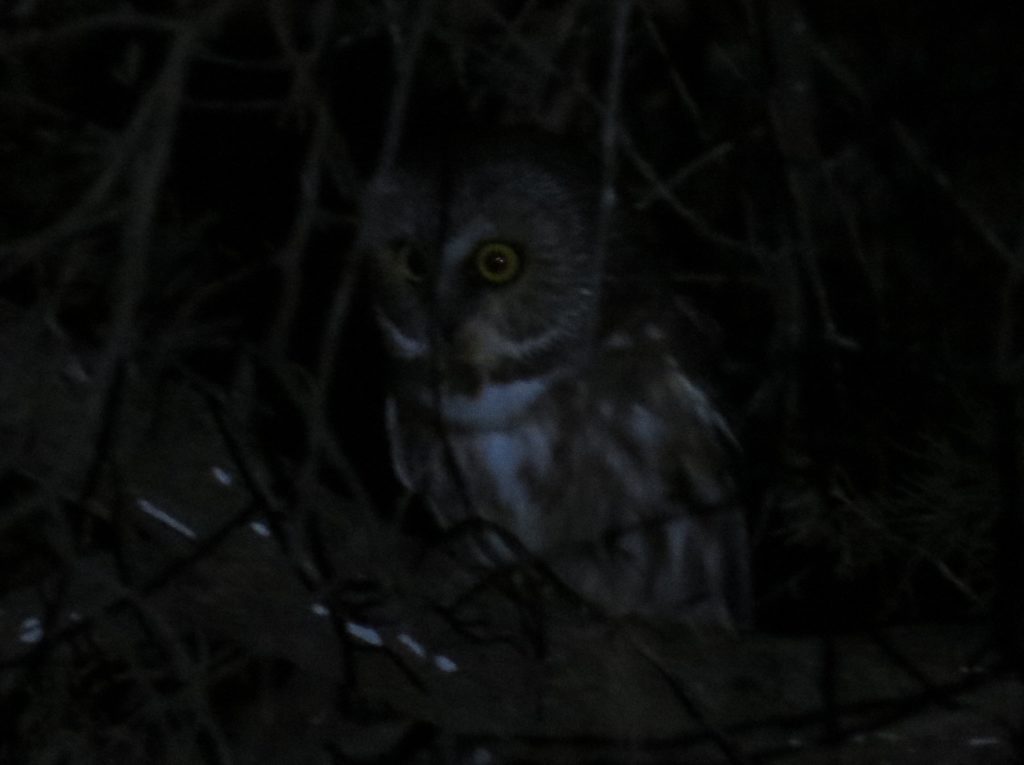 This was an unforgettable night of owling that was made even better by sharing it with a great friend. A huge thanks goes out to Randy for suggesting the outing and for his guiding skills in picking the right week and the right road. The long-awaited and much-anticipated Owl was officially on my county list, completing my collection of 7 regularly-occurring Owls in the county. Without Randy’s invitation, it is likely that I might not have even tried for Saw-whet Owls this spring because of how busy life has been.
This was an unforgettable night of owling that was made even better by sharing it with a great friend. A huge thanks goes out to Randy for suggesting the outing and for his guiding skills in picking the right week and the right road. The long-awaited and much-anticipated Owl was officially on my county list, completing my collection of 7 regularly-occurring Owls in the county. Without Randy’s invitation, it is likely that I might not have even tried for Saw-whet Owls this spring because of how busy life has been.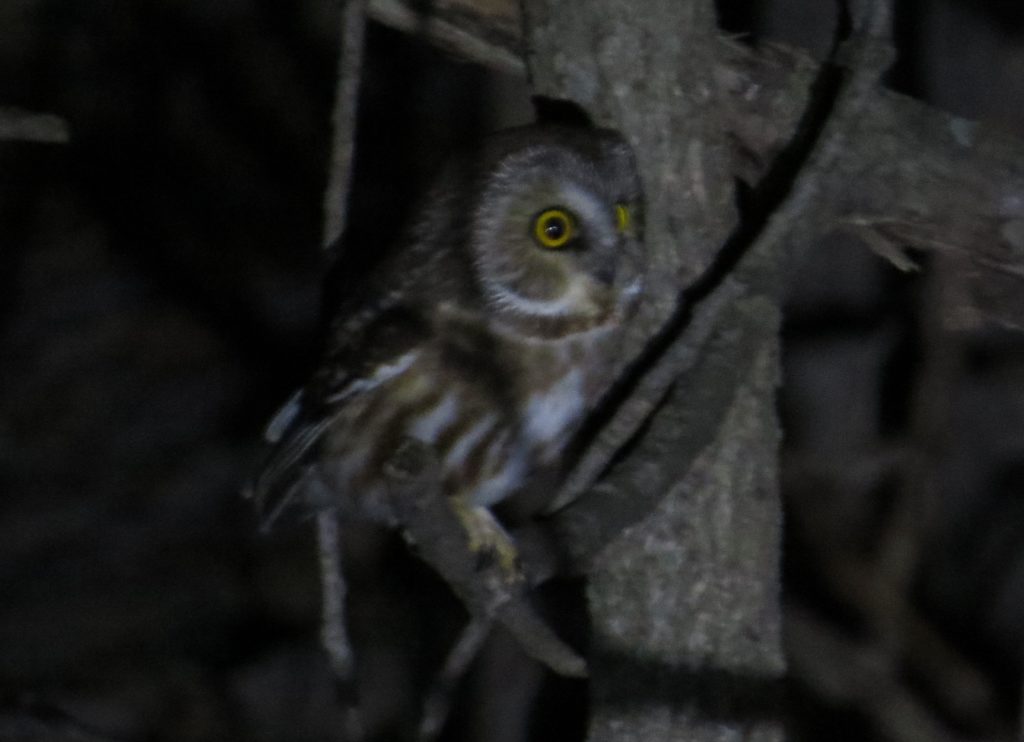
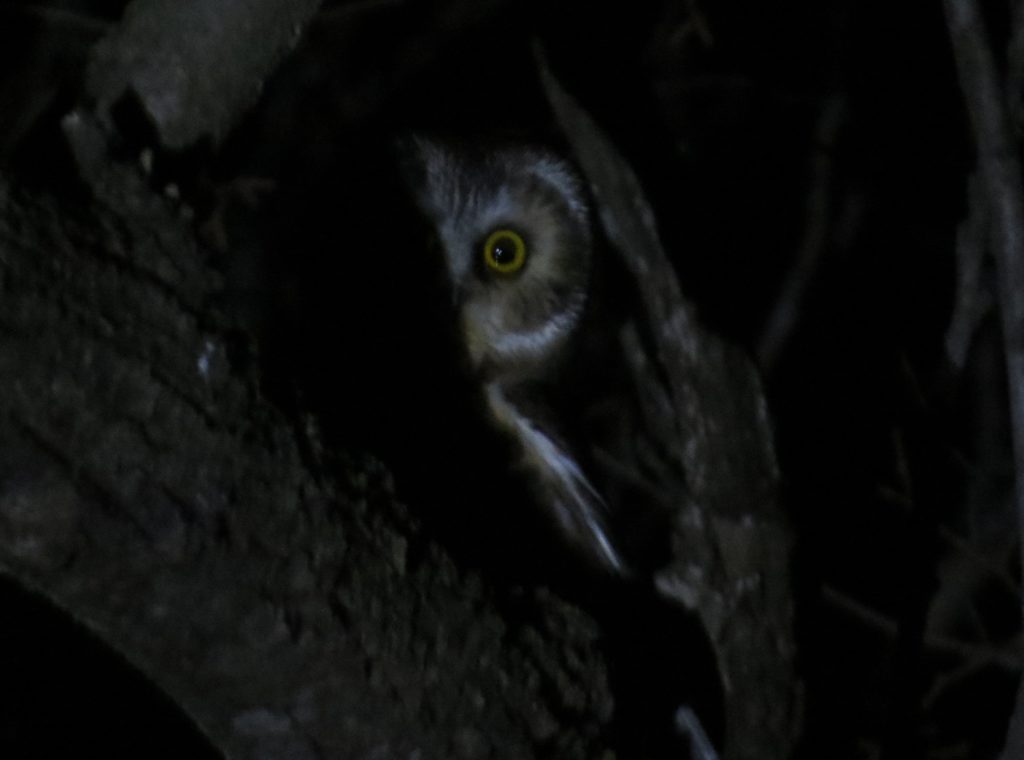
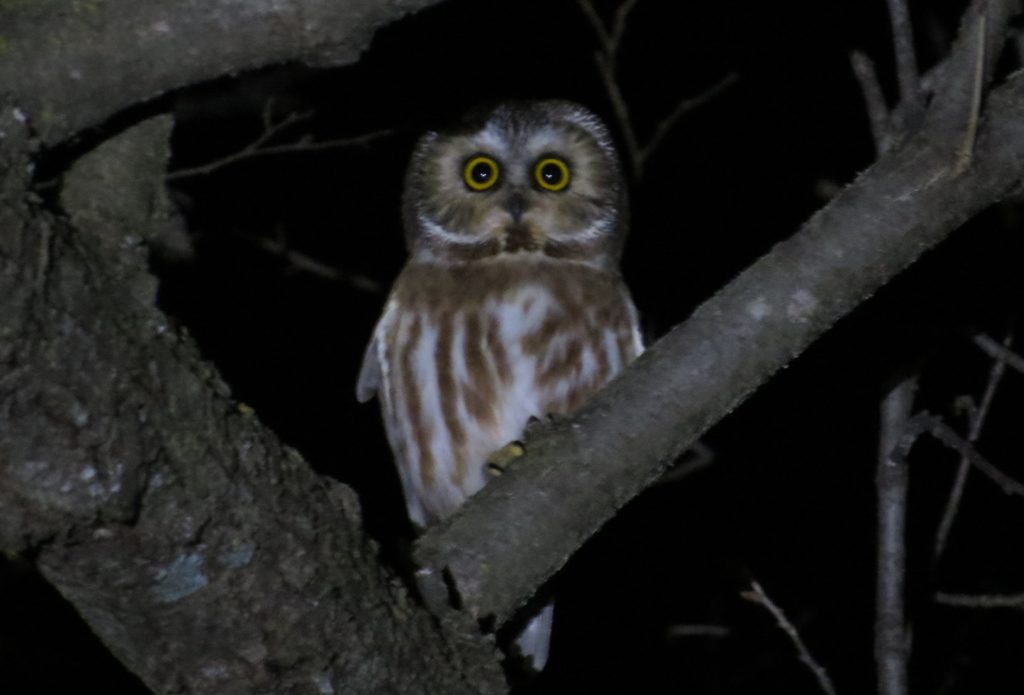 With this chapter closed in the most satisfying way possible, the question of what’s next really is an open one. I honestly don’t know–no other birds on a local, national, or world level have replaced the Ferruginous Pygmy-Owl and Kandi Northern Saw-whet Owl. There is a strange new void where a nemesis should be. But maybe that’s the way Randy wanted it–a clear head so I can start focusing on another bird that should be on the county record, like the Black Scoter.
With this chapter closed in the most satisfying way possible, the question of what’s next really is an open one. I honestly don’t know–no other birds on a local, national, or world level have replaced the Ferruginous Pygmy-Owl and Kandi Northern Saw-whet Owl. There is a strange new void where a nemesis should be. But maybe that’s the way Randy wanted it–a clear head so I can start focusing on another bird that should be on the county record, like the Black Scoter.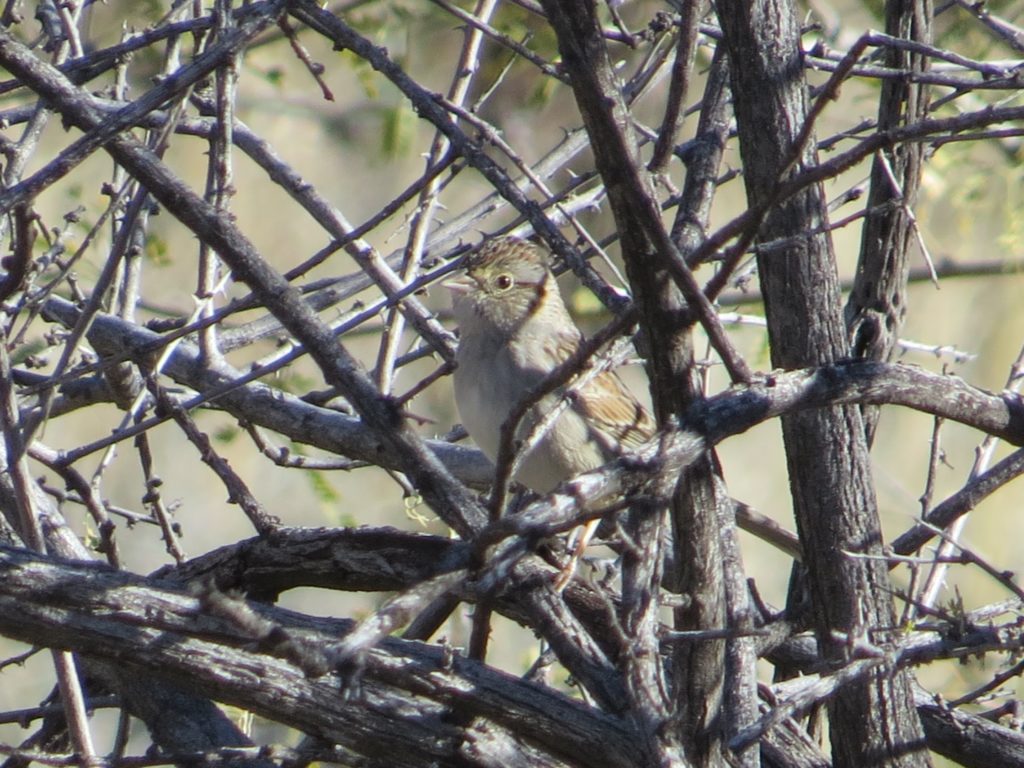
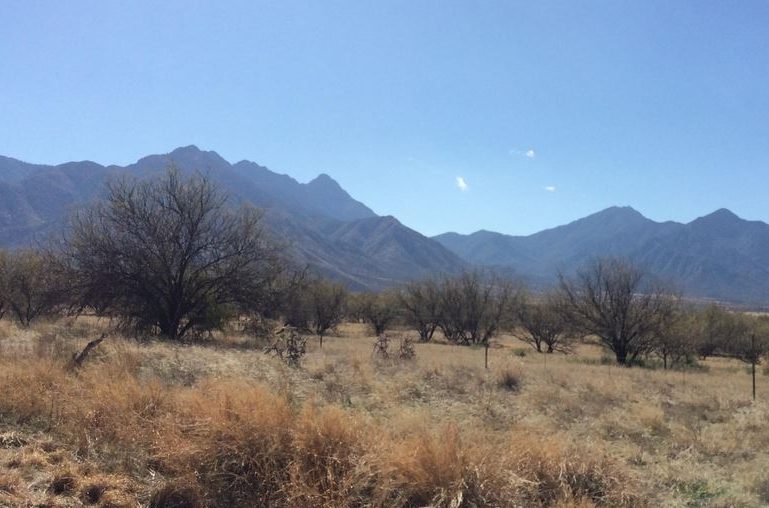
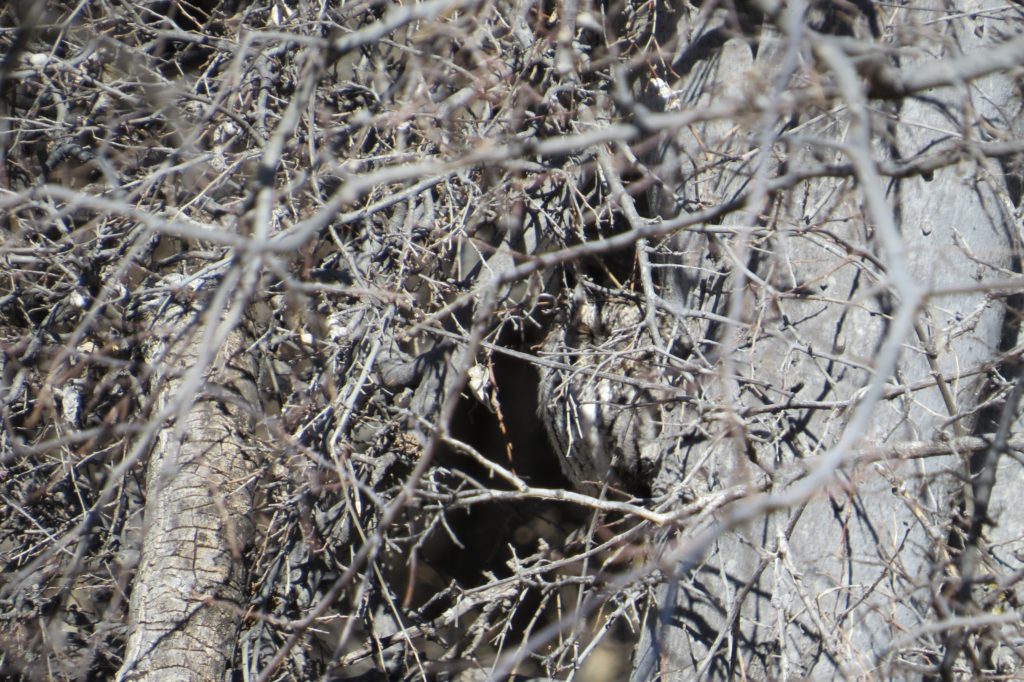 How someone spotted this thing I’ll never know. I could barely find it with multiple people pointing to it.
How someone spotted this thing I’ll never know. I could barely find it with multiple people pointing to it.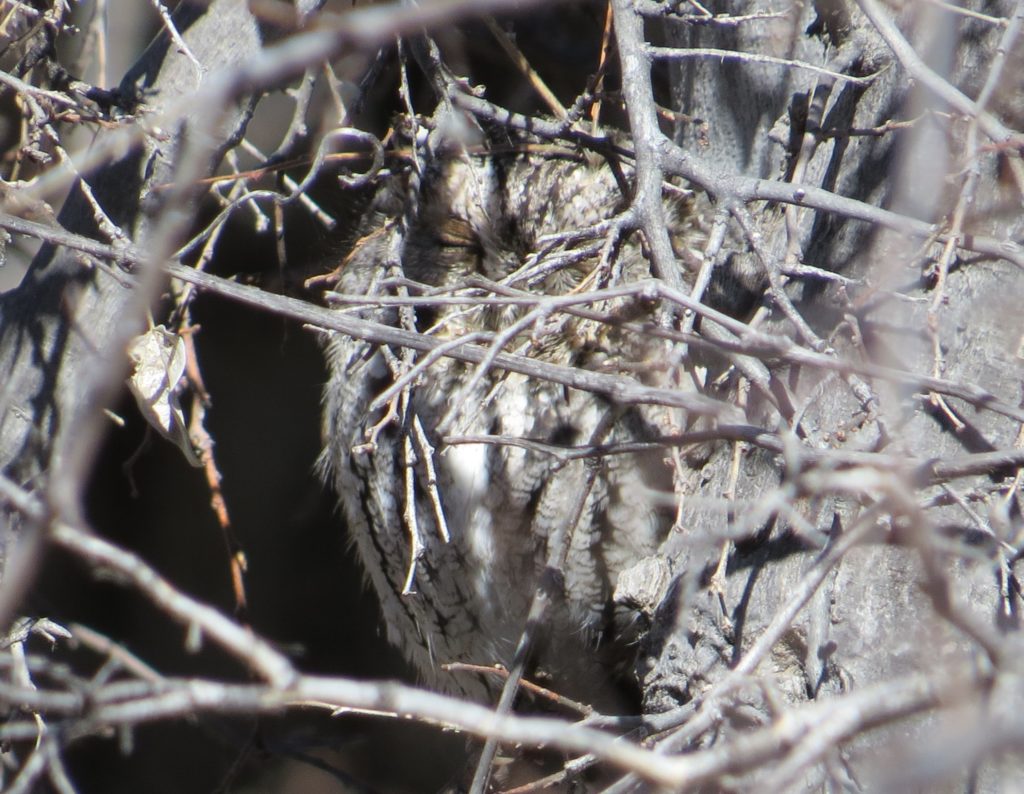 Tommy and I had barely resumed our Thrush sorting when I asked Tommy whatever happened to Caleb. I no sooner said those words, and the Boy came sprinting down the path toward us hollering (without breaking stride) that the Thrush had been spotted further up the trail. Caleb continued running and proclaiming the good news to everyone and their cousin, birders or not, that the White-throated Thrush was present.
Tommy and I had barely resumed our Thrush sorting when I asked Tommy whatever happened to Caleb. I no sooner said those words, and the Boy came sprinting down the path toward us hollering (without breaking stride) that the Thrush had been spotted further up the trail. Caleb continued running and proclaiming the good news to everyone and their cousin, birders or not, that the White-throated Thrush was present.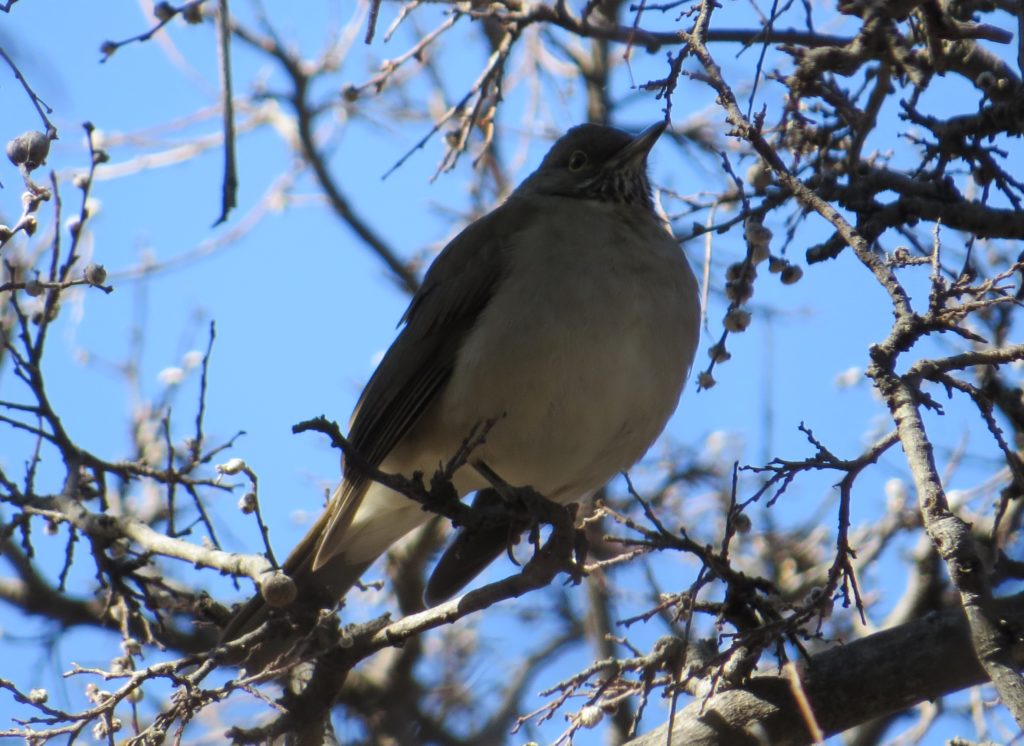
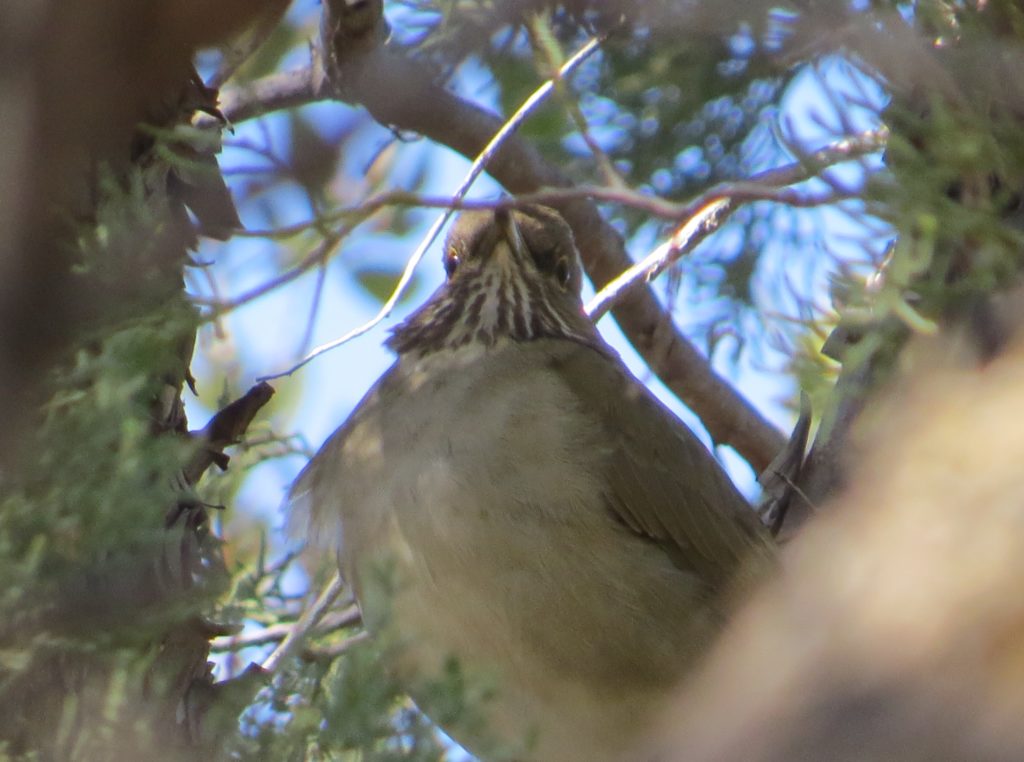
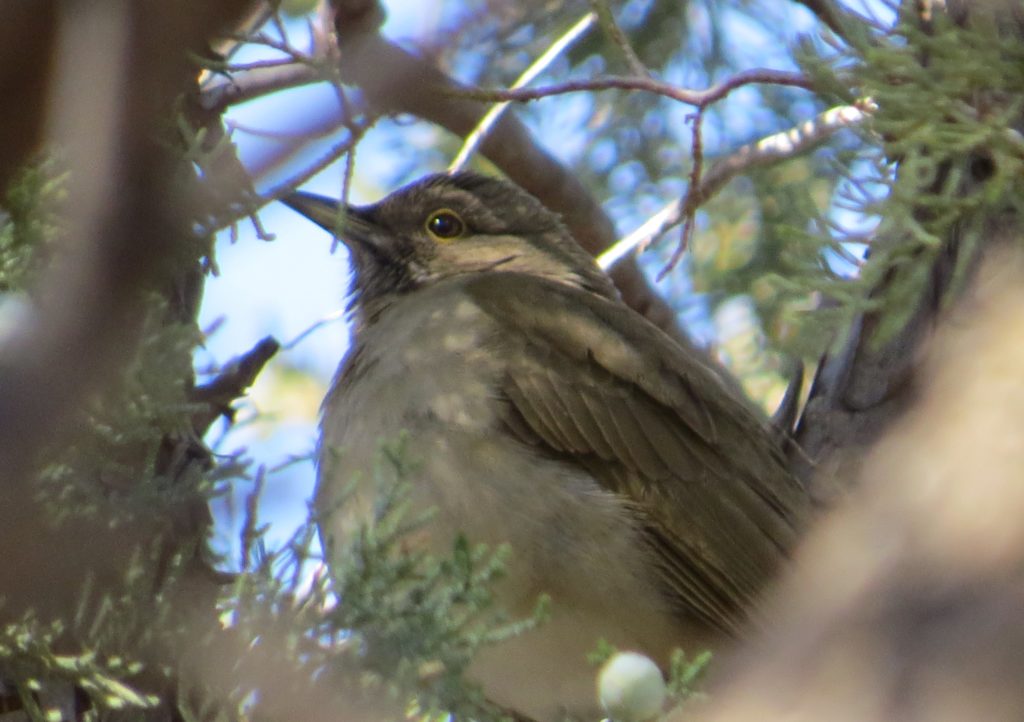 A bit of serendipity happened at the parking lot on the way out when a birder recognized Tommy. Turns out that birder was Linda Grant, the original finder of the famous Thrush. Linda had come back for better photos after her first ones were harried as bird photos can be when you realize you have a Mega and need to get the word out immediately. Tommy had written a great blog post on Linda’s discovery of the White-throated Thrush and on over two dozen birders’ reactions to the find. Linda and her husband were able to tell Tommy how much they enjoyed the post, and Tommy clearly enjoyed meeting this hero to hundreds of birders. A cool moment.
A bit of serendipity happened at the parking lot on the way out when a birder recognized Tommy. Turns out that birder was Linda Grant, the original finder of the famous Thrush. Linda had come back for better photos after her first ones were harried as bird photos can be when you realize you have a Mega and need to get the word out immediately. Tommy had written a great blog post on Linda’s discovery of the White-throated Thrush and on over two dozen birders’ reactions to the find. Linda and her husband were able to tell Tommy how much they enjoyed the post, and Tommy clearly enjoyed meeting this hero to hundreds of birders. A cool moment.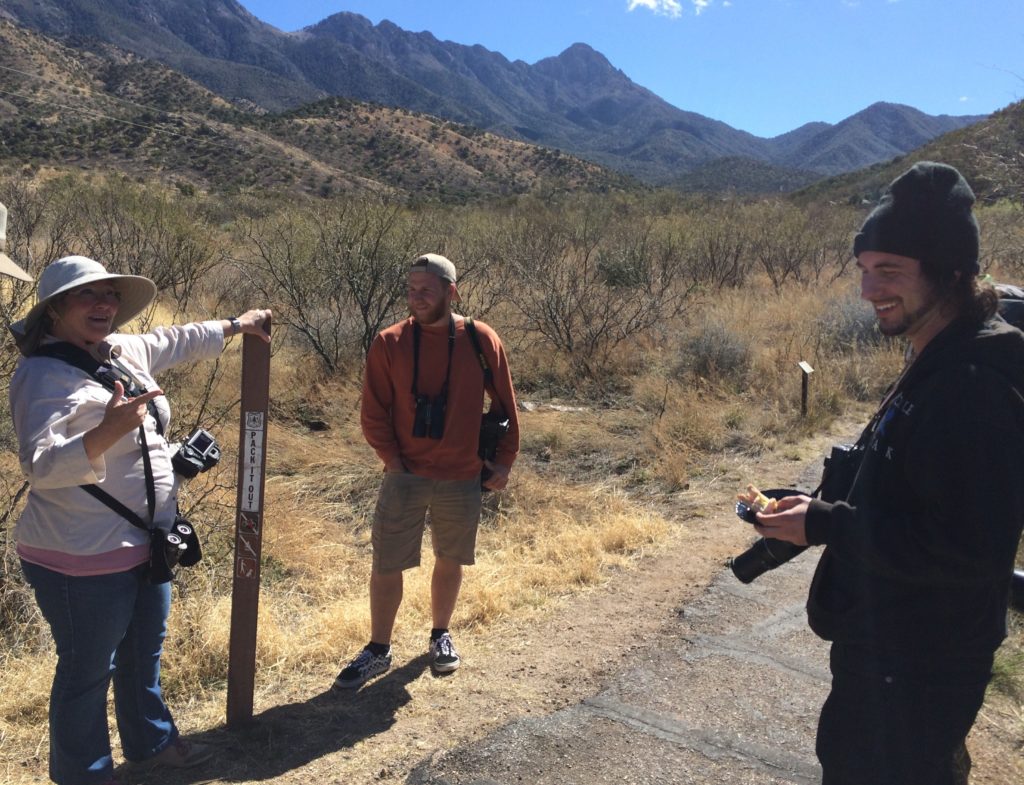
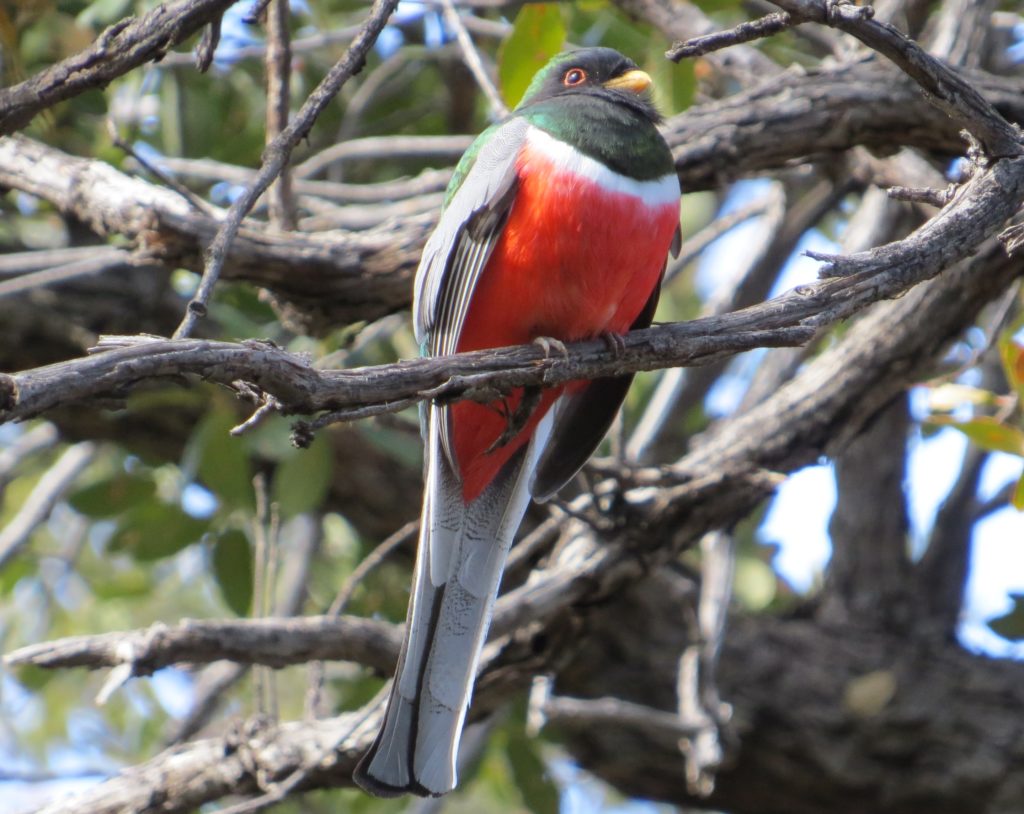 The Trogon was incredibly tame and would sit for long periods of time on a perch before moving a short distance, easy to find and easy to approach. SE AZ never ceases to amaze me. This was a stunning moment. And, AZ birders will have to forgive me, but this was just as big a thrill or bigger than the Thrush.
The Trogon was incredibly tame and would sit for long periods of time on a perch before moving a short distance, easy to find and easy to approach. SE AZ never ceases to amaze me. This was a stunning moment. And, AZ birders will have to forgive me, but this was just as big a thrill or bigger than the Thrush.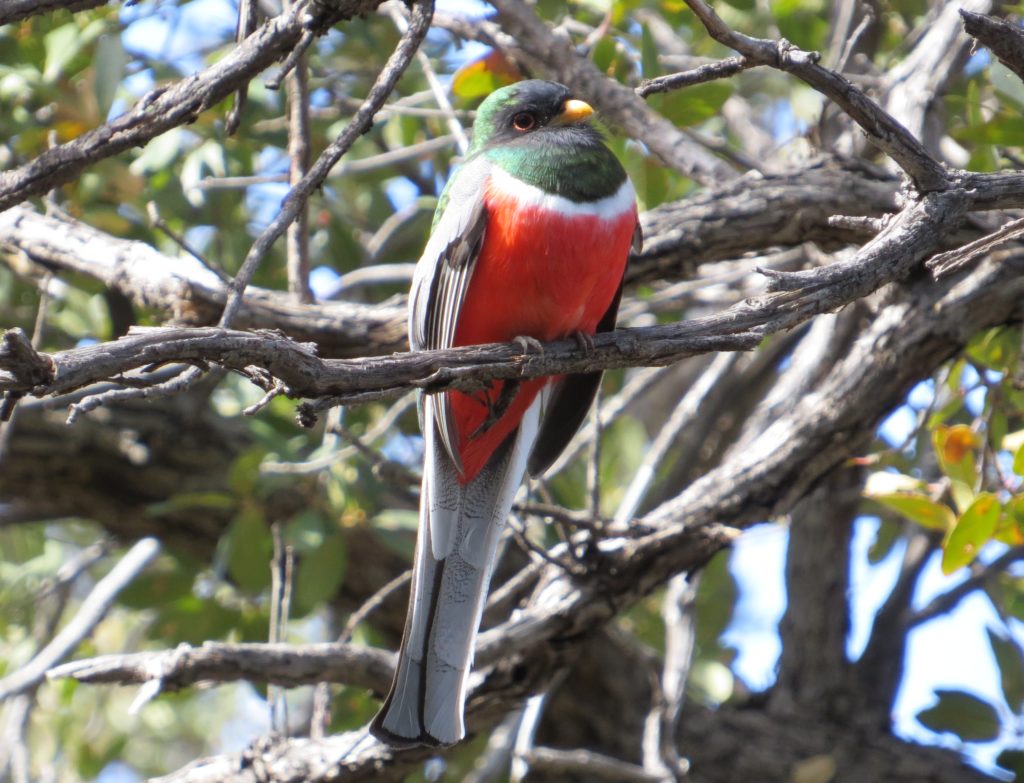 In 2015 my only real photo of the Elegant Trogon was from the back. This was a refreshing and a much yearned for change. I, of course, got to see the back this time too and once again admire that coppery tail that it was once named for.
In 2015 my only real photo of the Elegant Trogon was from the back. This was a refreshing and a much yearned for change. I, of course, got to see the back this time too and once again admire that coppery tail that it was once named for.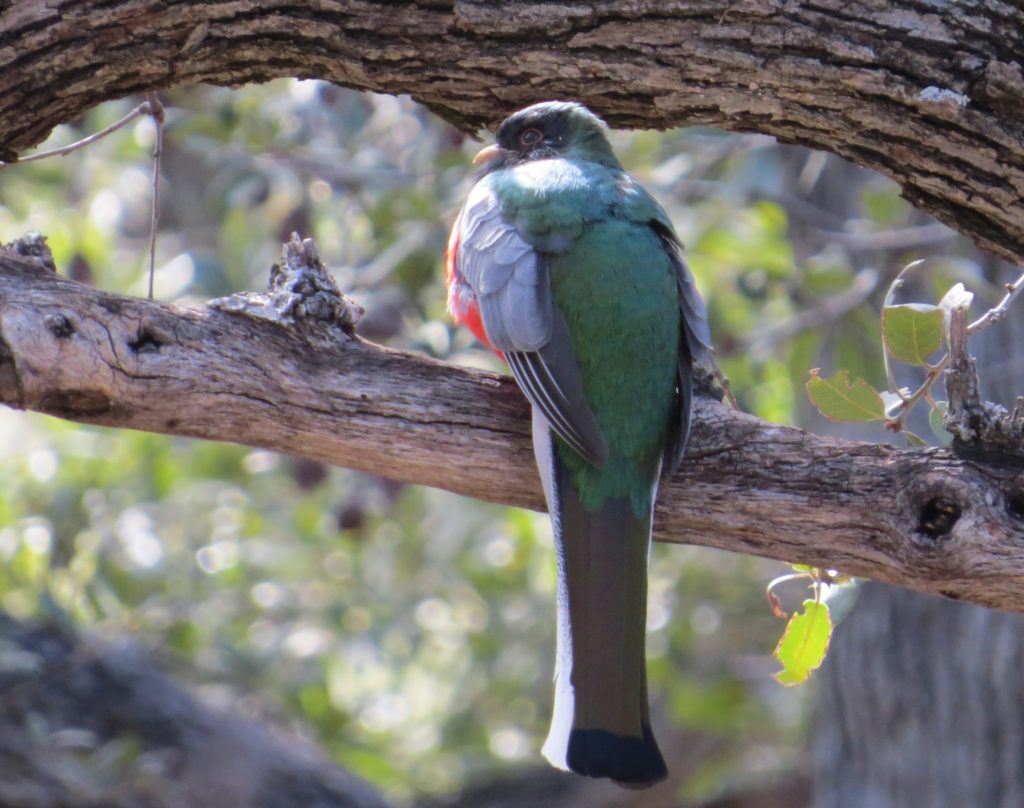
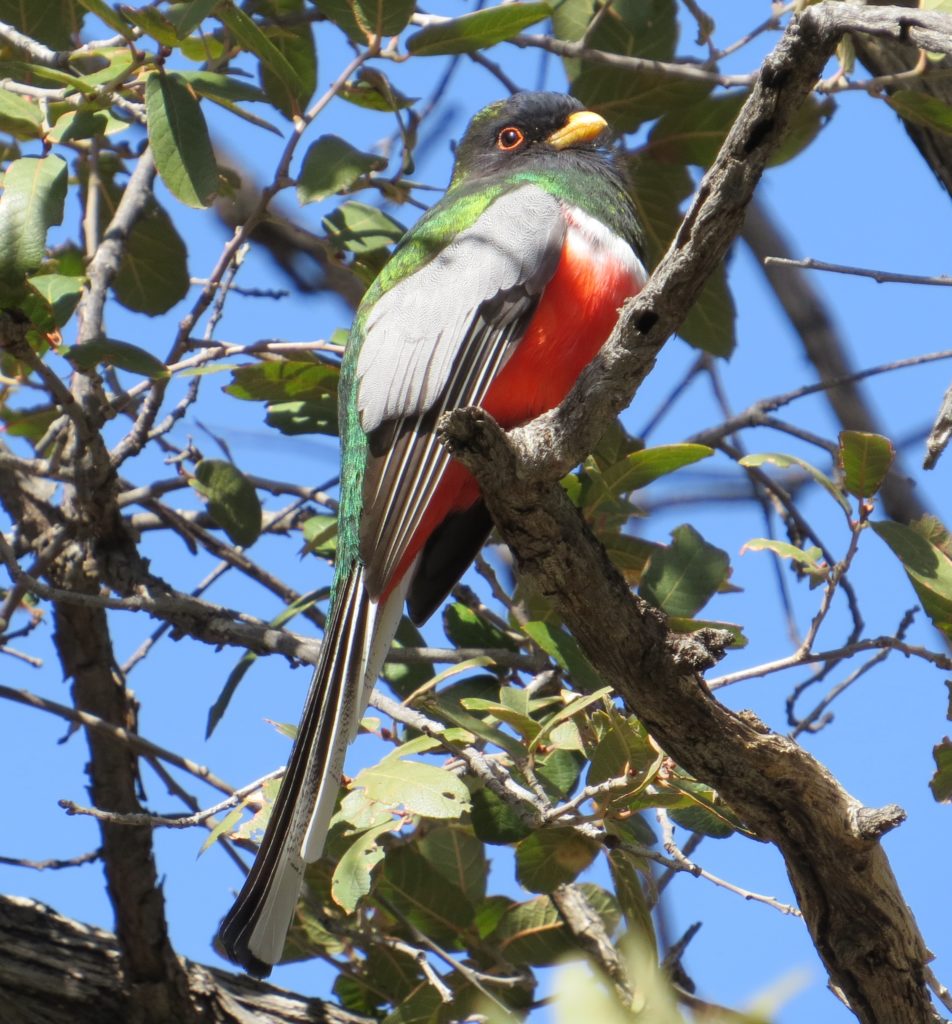
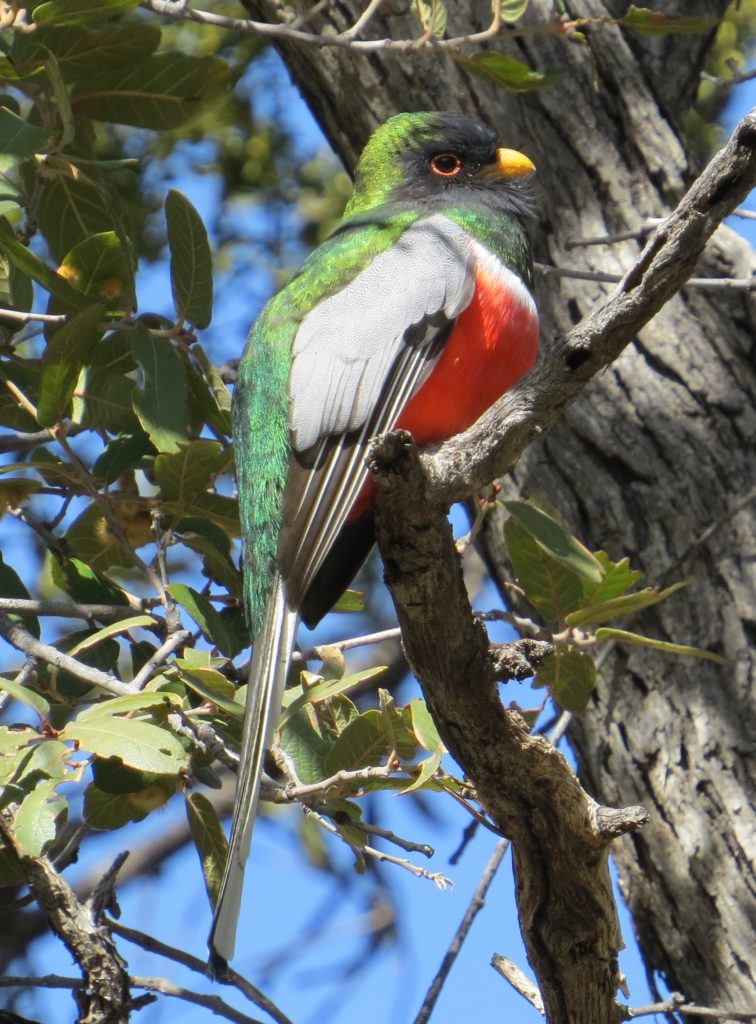 This was a Trogon-crushfest, enjoyed by even the most experienced of locals…
This was a Trogon-crushfest, enjoyed by even the most experienced of locals…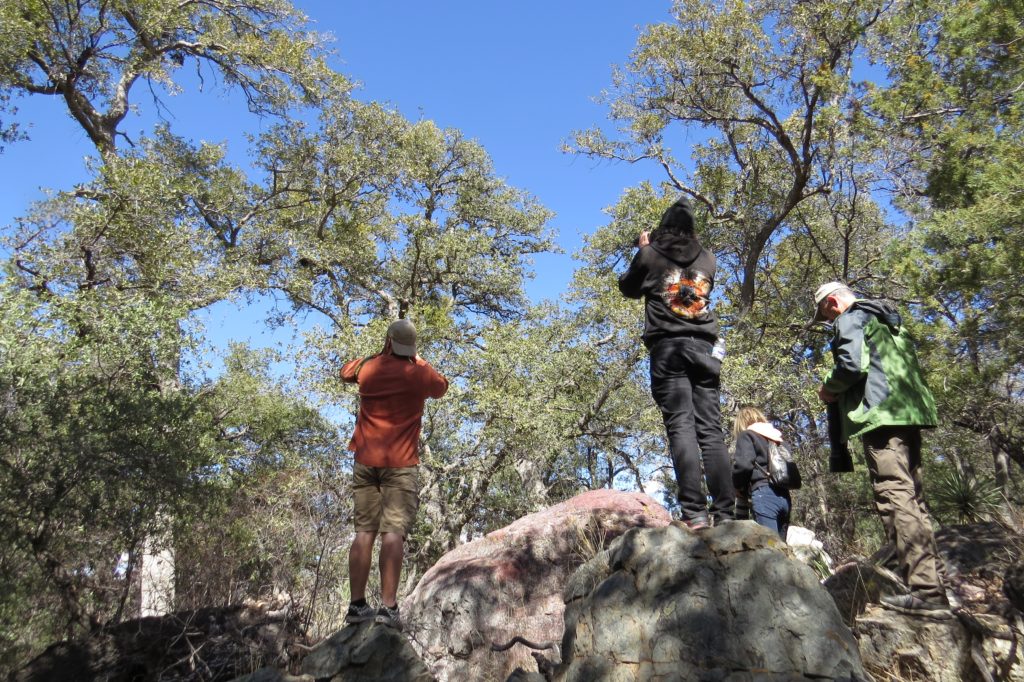
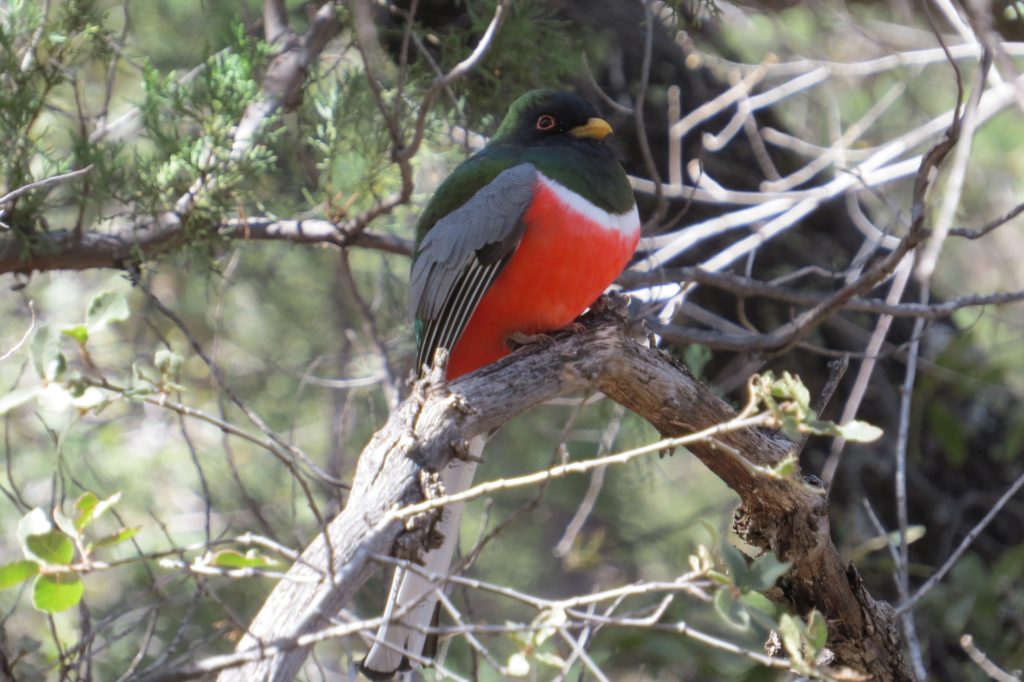
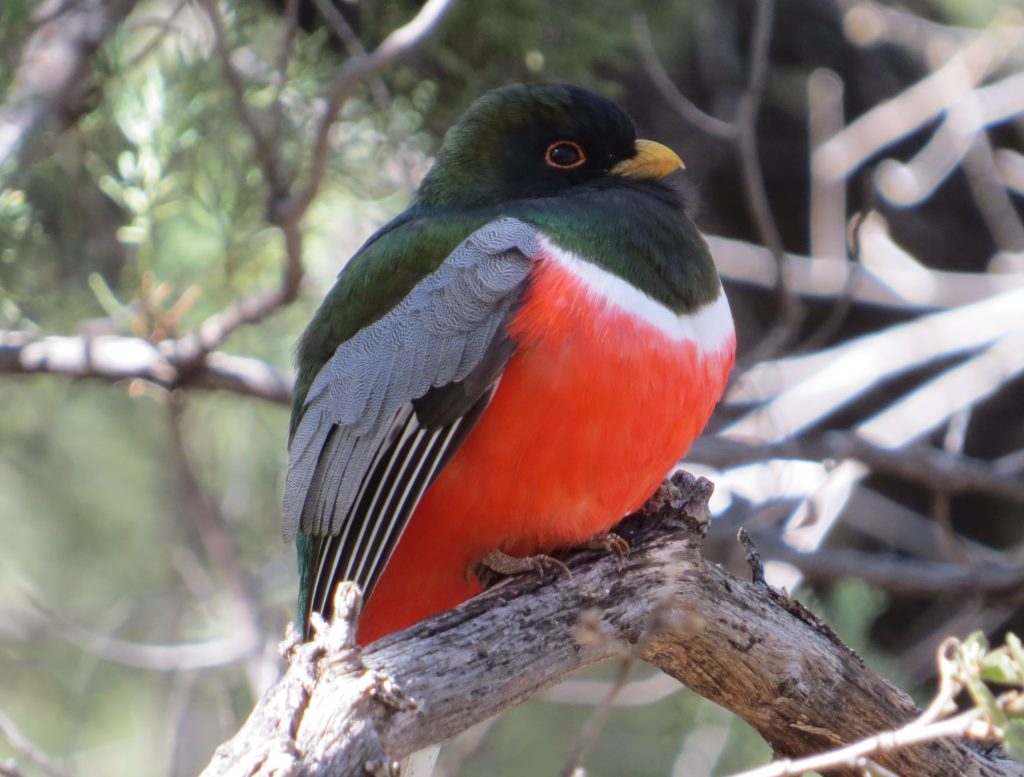 Obviously I had a hard time prying myself away from that bird, but the clock was ticking and the birding queue had a new line leader. Would I have liked to go to the Santa Rita Lodge and try to get a better look at a Blue-throated Hummingbird? Yes. Would I have liked to pick up some fresh Trogon gear at the gift shop? Also yes. But did I? Sadly, no. Time was slipping by, and the one bird I needed was in nearby Green Valley. Lawrence’s Goldfinches have irrupted this winter all over the place, and the Canoa Ranch was a stronghold for them. I needed to grab this bird while I could since this was the year for that bird. I have never seen reports of them in other years on my visits. But first we made a quick stop down by Proctor Road to look for a Black-capped Gnatcatcher. No dice, again.
Obviously I had a hard time prying myself away from that bird, but the clock was ticking and the birding queue had a new line leader. Would I have liked to go to the Santa Rita Lodge and try to get a better look at a Blue-throated Hummingbird? Yes. Would I have liked to pick up some fresh Trogon gear at the gift shop? Also yes. But did I? Sadly, no. Time was slipping by, and the one bird I needed was in nearby Green Valley. Lawrence’s Goldfinches have irrupted this winter all over the place, and the Canoa Ranch was a stronghold for them. I needed to grab this bird while I could since this was the year for that bird. I have never seen reports of them in other years on my visits. But first we made a quick stop down by Proctor Road to look for a Black-capped Gnatcatcher. No dice, again.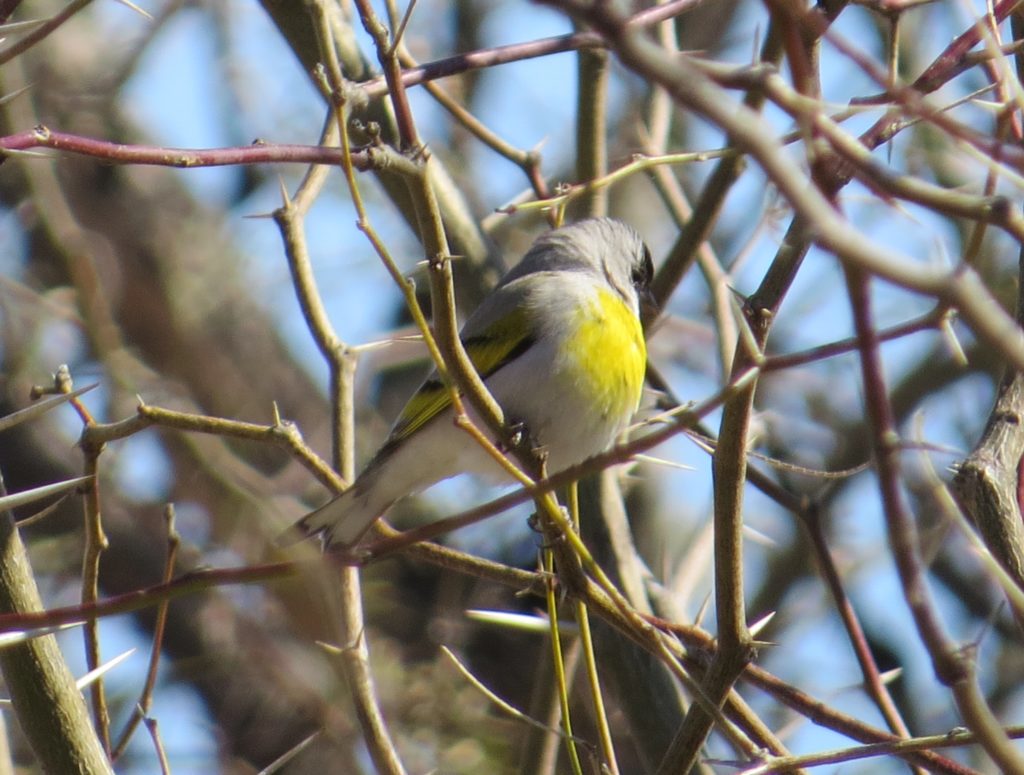 It was now time to bust back to Mom and Dad’s. Mom was putting on a spread for the birders and non-birders. By the end of the day we were all stuffed–with good food and good birds.
It was now time to bust back to Mom and Dad’s. Mom was putting on a spread for the birders and non-birders. By the end of the day we were all stuffed–with good food and good birds.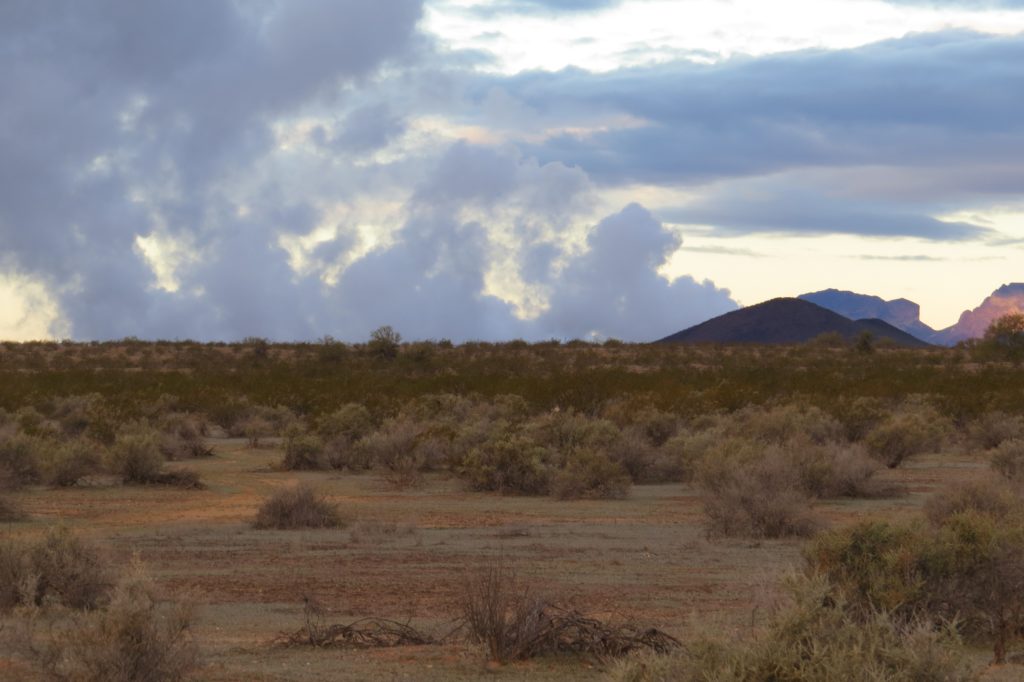
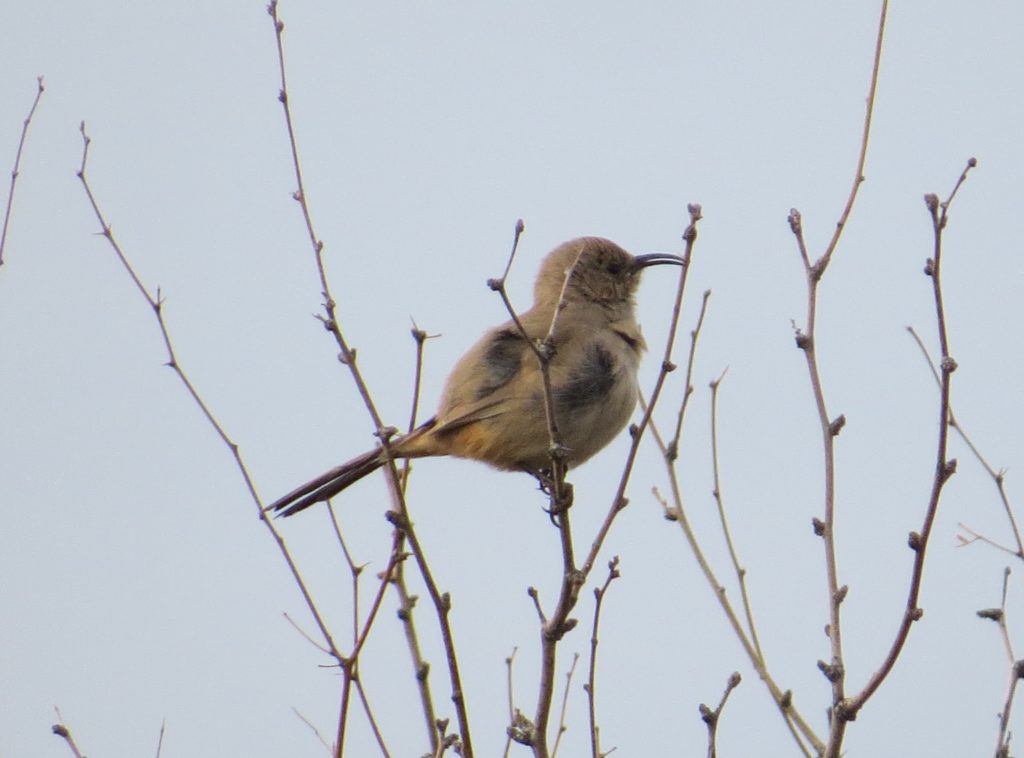 It was one lifer down with four to go. Two thoughts struck me on my first visit to the Thrasher Spot. One was that I couldn’t believe how flat the ground was.
It was one lifer down with four to go. Two thoughts struck me on my first visit to the Thrasher Spot. One was that I couldn’t believe how flat the ground was.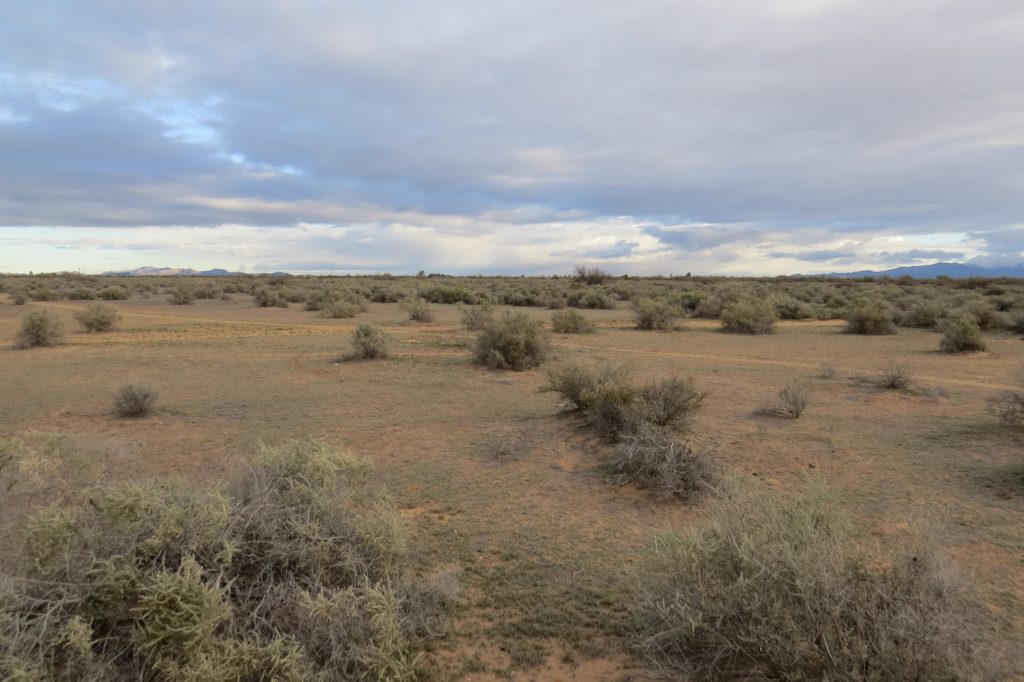
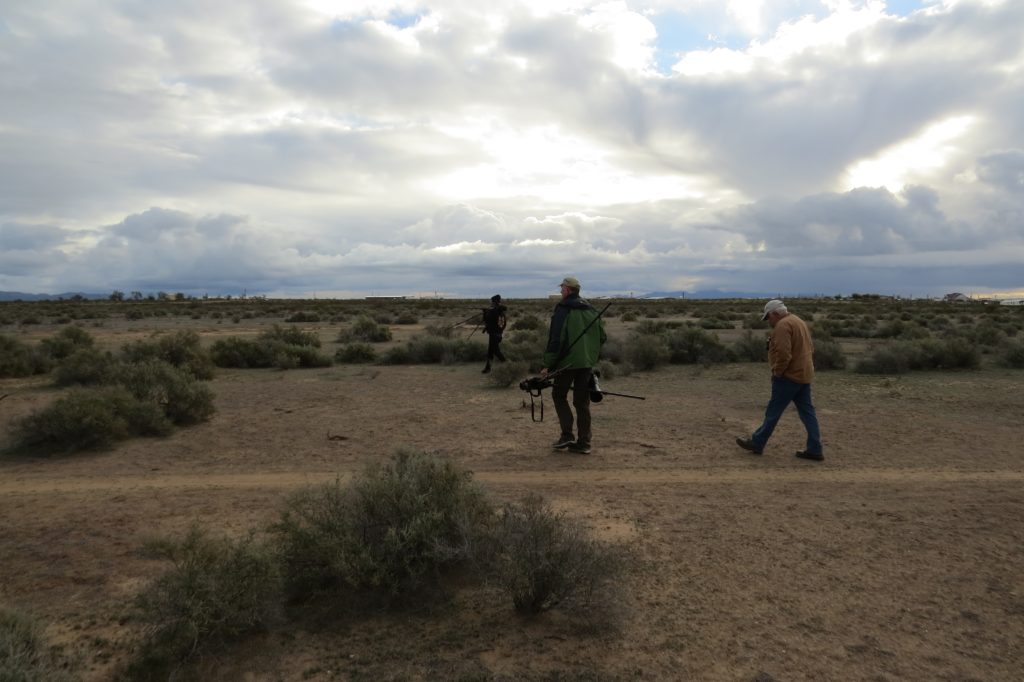 Though not completely unexpected, there were sightings of a couple different old men wandering alone and somewhat aimlessly trying to tally some Thrasher lifers for themselves. At least I wasn’t as late to the party as these guys. The sparse saltbush- studded landscape was not only good habitat for the occasional septagenerian but also for numerous Sagebrush Sparrows (lifer) that would run with tails held high from bush to bush. I was shocked to learn they didn’t respond to pishing. What kind of Sparrows are these anyway? Good looks at these birds and the others were tough to come by. Pressing on and going wider in our search efforts, we eventually locked up a Bendire’s Thrasher lifer.
Though not completely unexpected, there were sightings of a couple different old men wandering alone and somewhat aimlessly trying to tally some Thrasher lifers for themselves. At least I wasn’t as late to the party as these guys. The sparse saltbush- studded landscape was not only good habitat for the occasional septagenerian but also for numerous Sagebrush Sparrows (lifer) that would run with tails held high from bush to bush. I was shocked to learn they didn’t respond to pishing. What kind of Sparrows are these anyway? Good looks at these birds and the others were tough to come by. Pressing on and going wider in our search efforts, we eventually locked up a Bendire’s Thrasher lifer.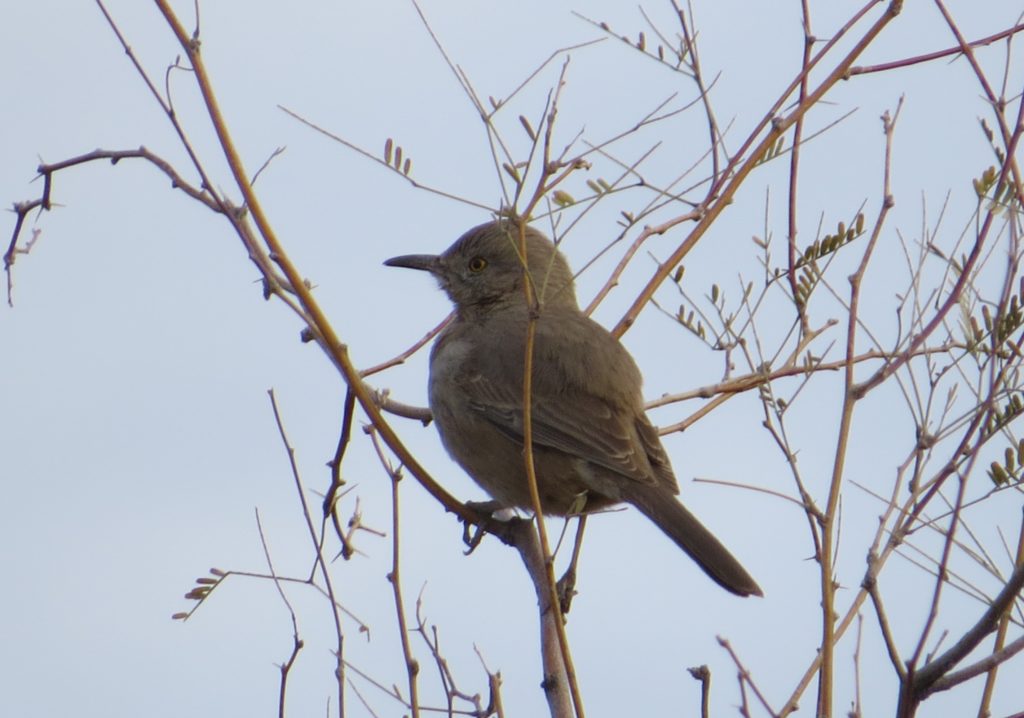 By this time, the sun was finally showing itself and warming up our frozen bodies. The birds seemed to enjoy it too as we finally started to get some good looks of perching Sagebrush Sparrows.
By this time, the sun was finally showing itself and warming up our frozen bodies. The birds seemed to enjoy it too as we finally started to get some good looks of perching Sagebrush Sparrows.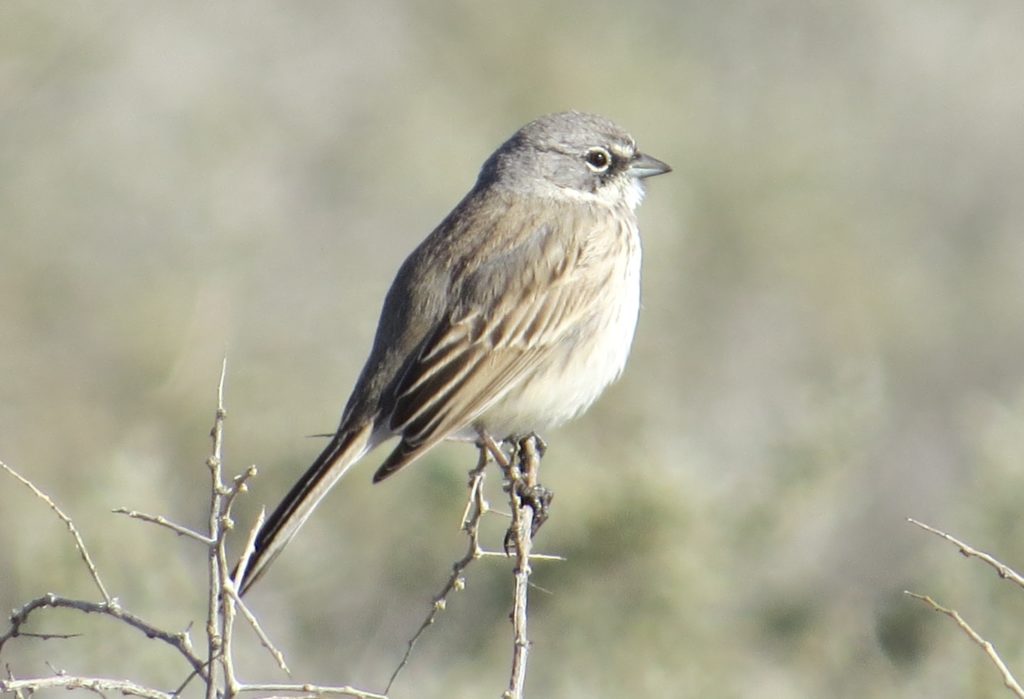 Tommy was able to spy the more rare doppelganger Bell’s Sparrow to make my fourth lifer of five for the morning. The Bell’s is told apart from the Sagebrush Sparrow by its bolder, thicker malar stripe and its unstreaked back.
Tommy was able to spy the more rare doppelganger Bell’s Sparrow to make my fourth lifer of five for the morning. The Bell’s is told apart from the Sagebrush Sparrow by its bolder, thicker malar stripe and its unstreaked back.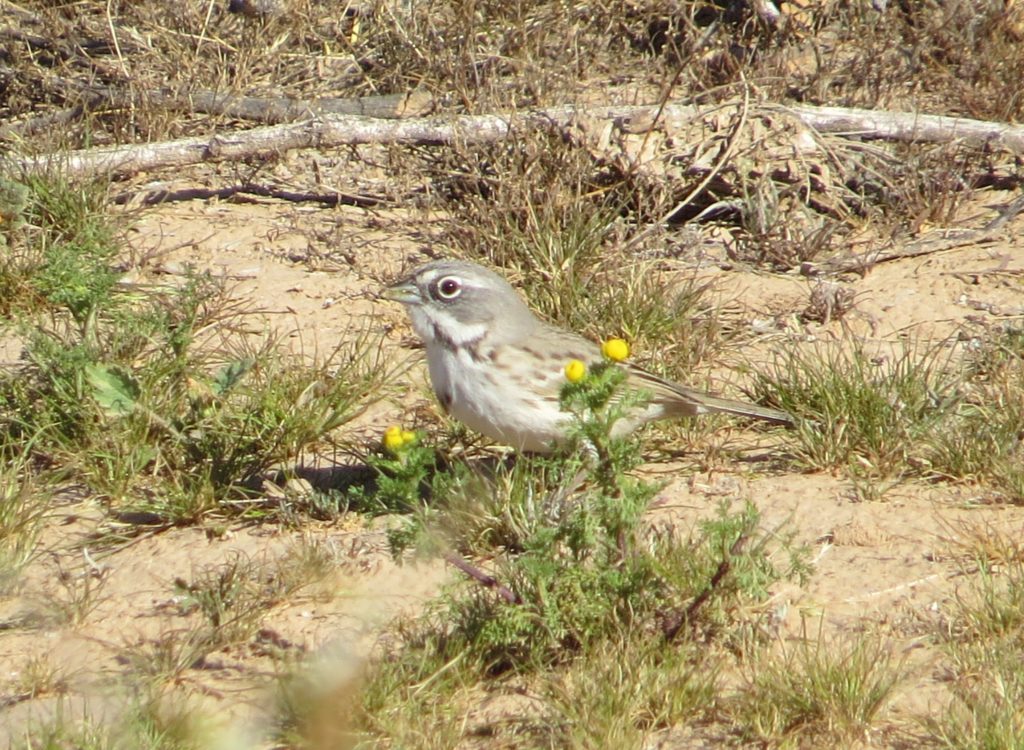
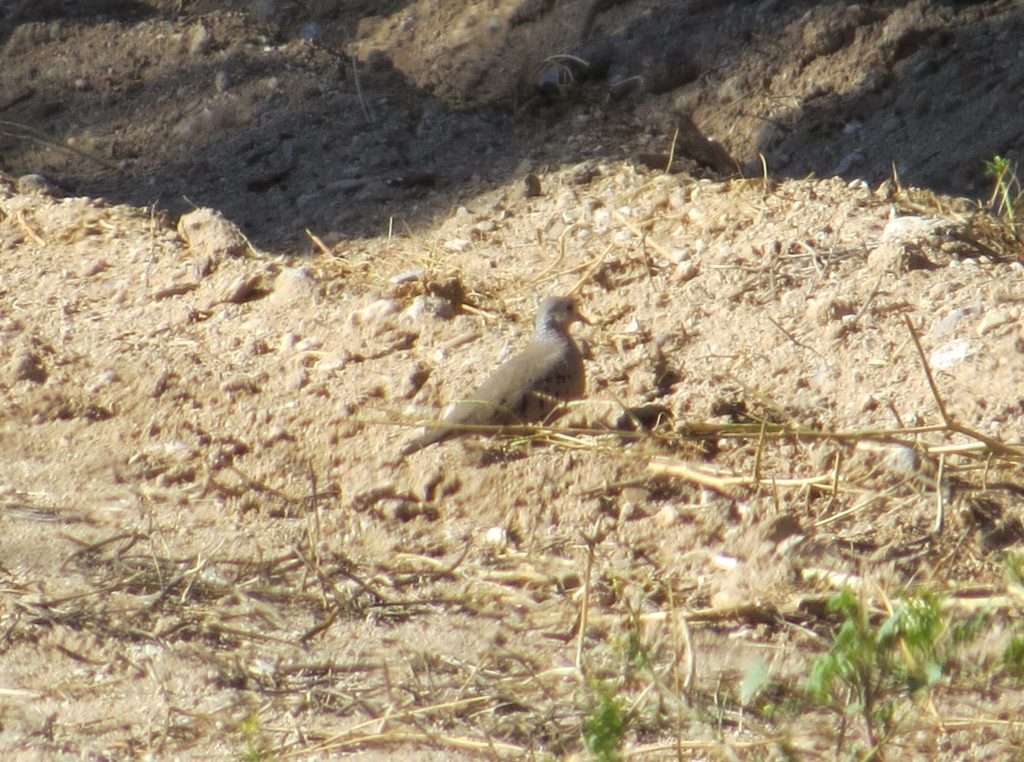 I repaid Gordon by spotting a raptor flying over us. I casually asked the guys what it was since they were making an eBird checklist. Turns out it was a Crested Caracara, a county bird for Gordon and only the second one Tommy has seen in Maricopa County.
I repaid Gordon by spotting a raptor flying over us. I casually asked the guys what it was since they were making an eBird checklist. Turns out it was a Crested Caracara, a county bird for Gordon and only the second one Tommy has seen in Maricopa County.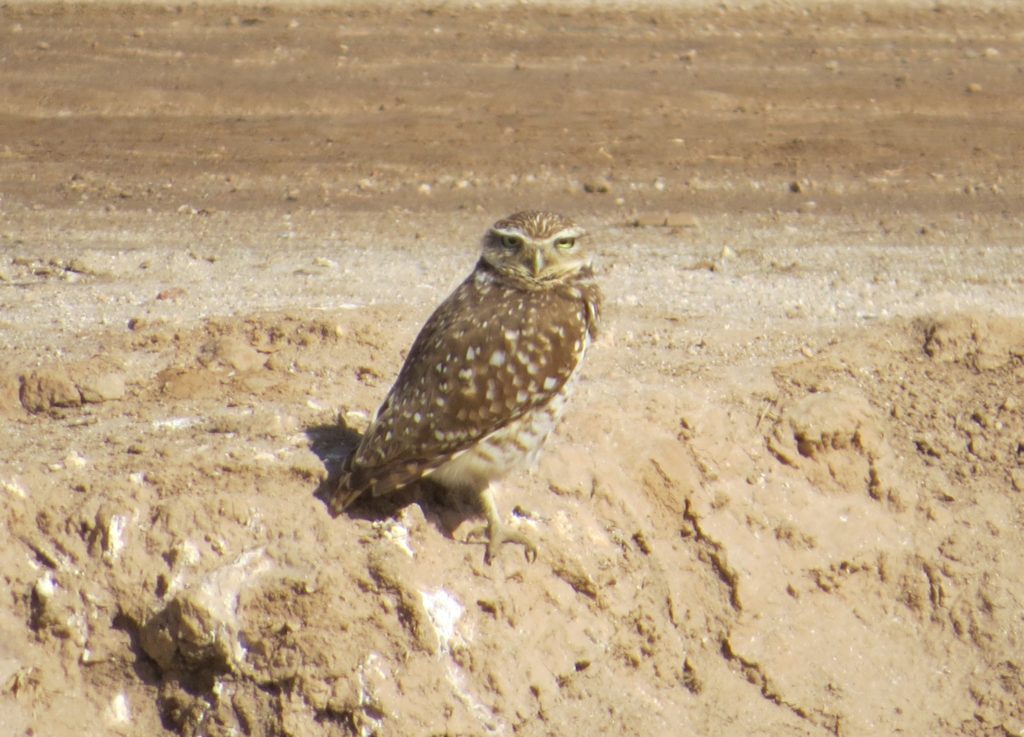 At the end of the dead end road, Tomy finally heard it–a Crissal Thrasher. Unfortunately no views were had of the true curve-billed Thrasher. So it goes. It’s hard to have any misgivings or least find anyone sympathetic whining about not seeing a CRTH when the birding had been sooo good. What’s next, Arizona? After 123 life birds in eight trips, I seriously have no idea and no plans.
At the end of the dead end road, Tomy finally heard it–a Crissal Thrasher. Unfortunately no views were had of the true curve-billed Thrasher. So it goes. It’s hard to have any misgivings or least find anyone sympathetic whining about not seeing a CRTH when the birding had been sooo good. What’s next, Arizona? After 123 life birds in eight trips, I seriously have no idea and no plans.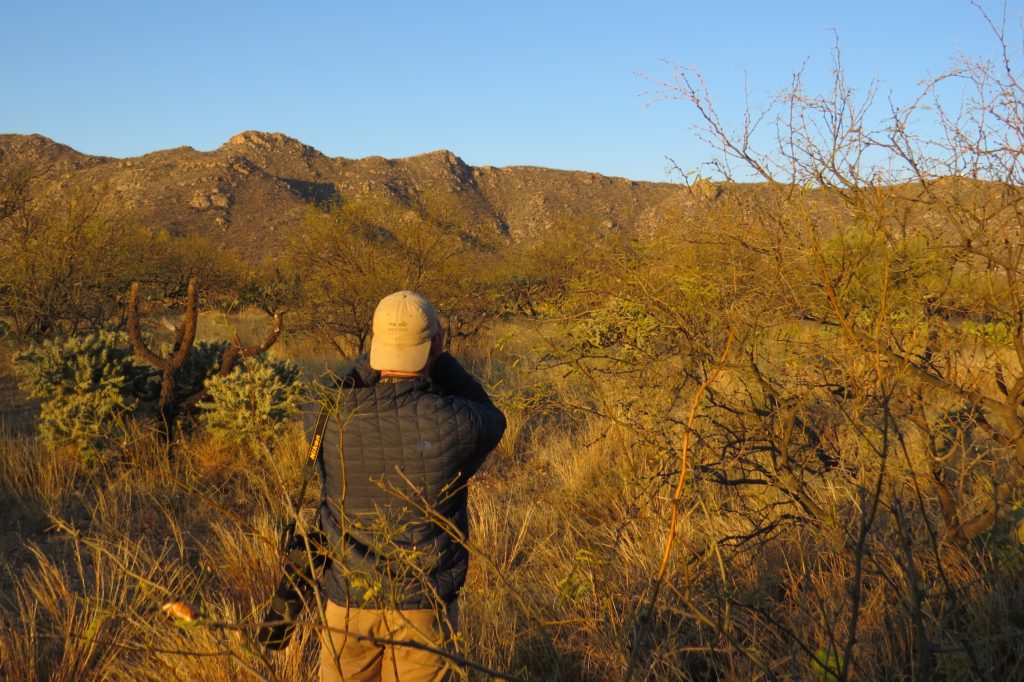
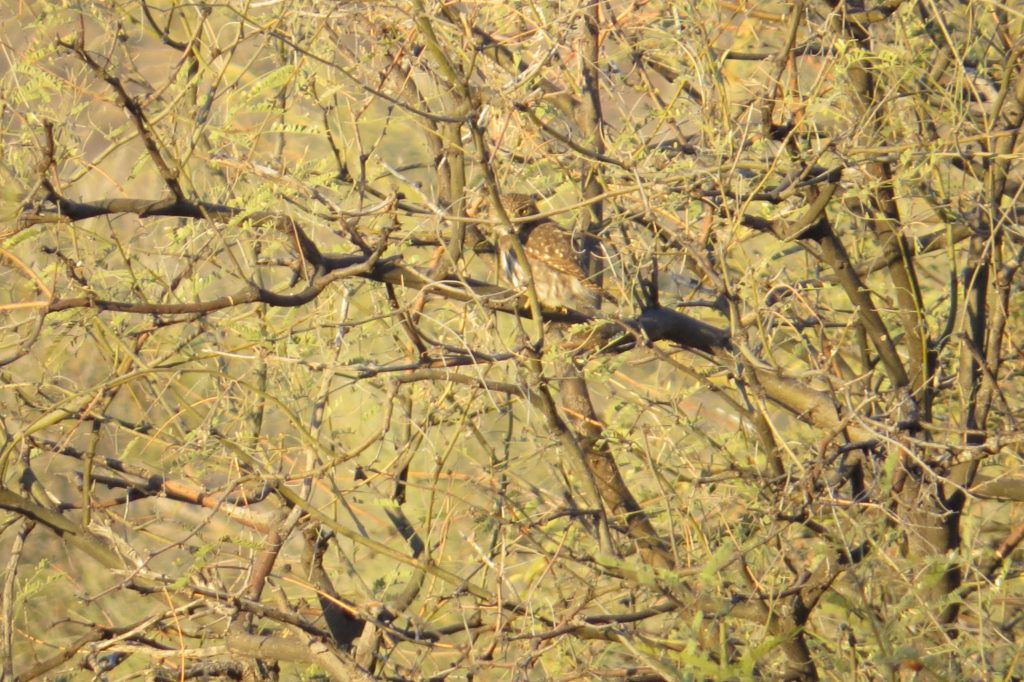
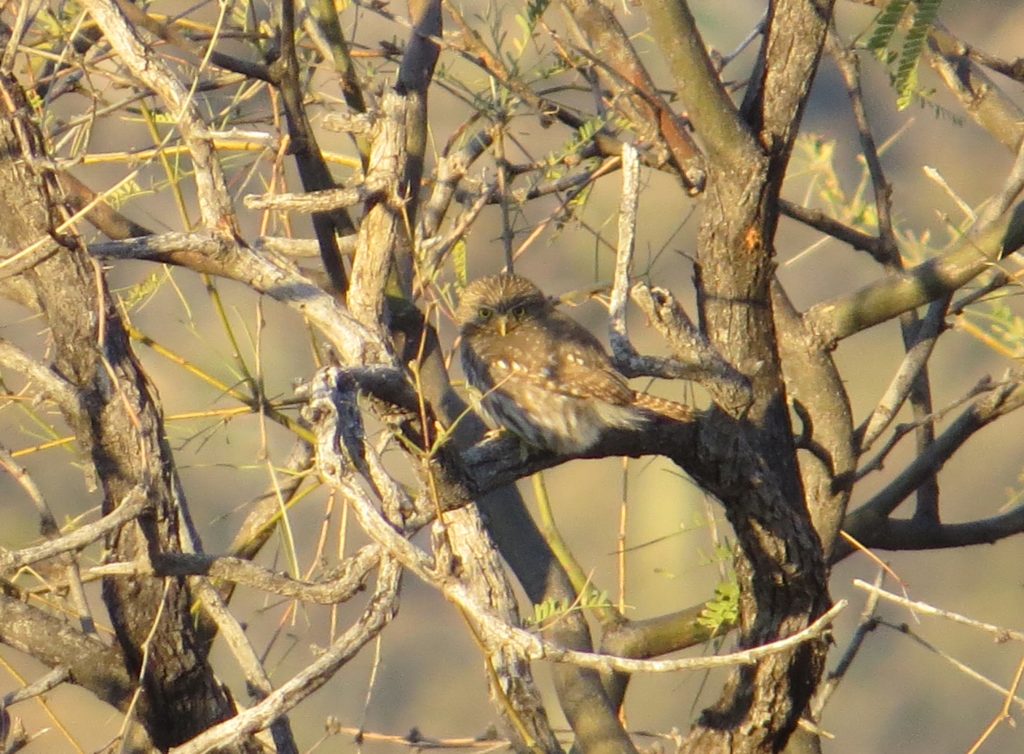
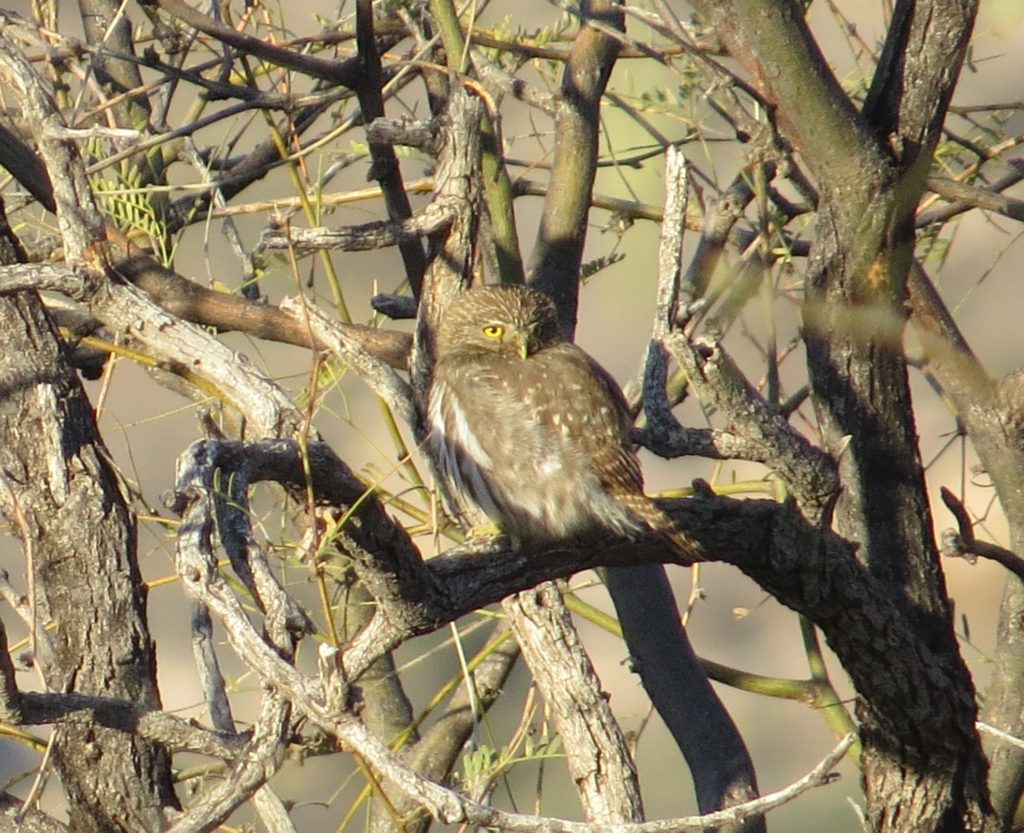
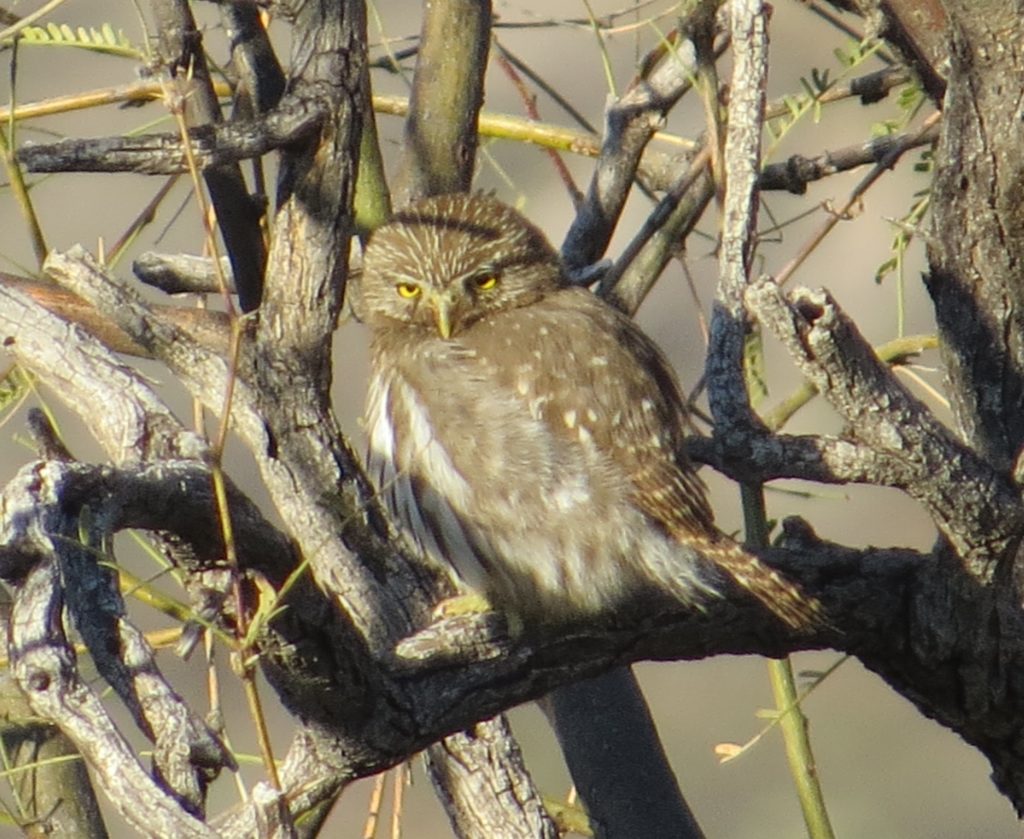 Note the black, false “eyes” on the back of its head to ward off predators.
Note the black, false “eyes” on the back of its head to ward off predators.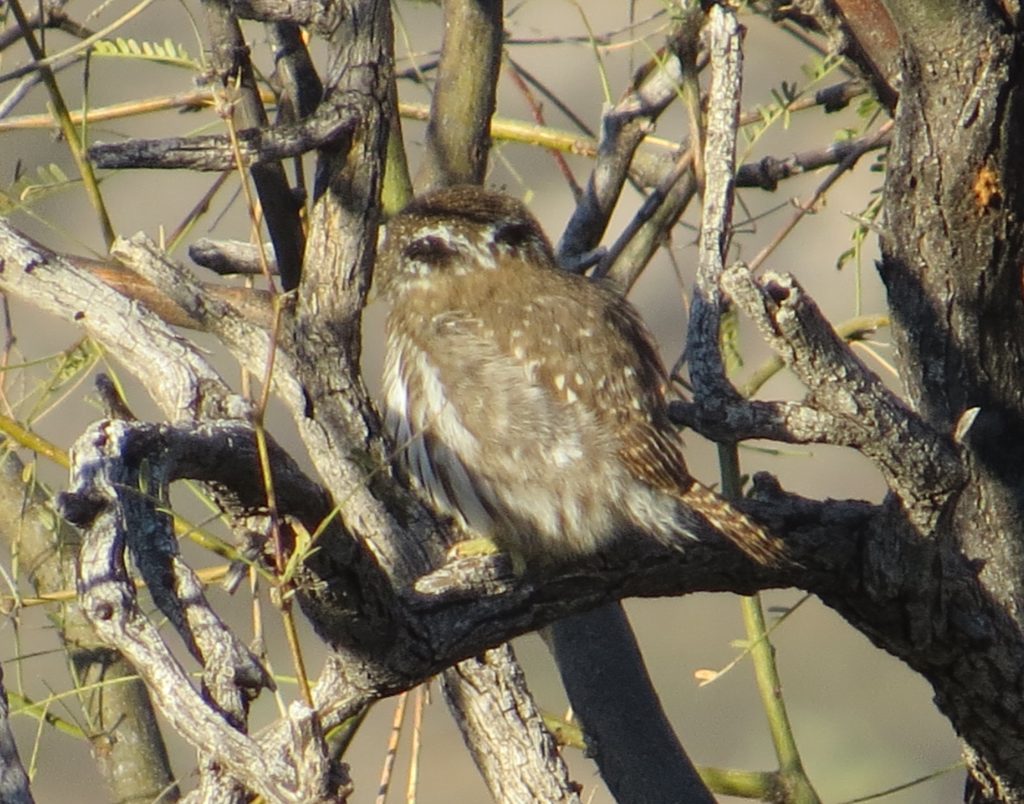 Here you can see a white throat patch that is visible when it vocalizes.
Here you can see a white throat patch that is visible when it vocalizes.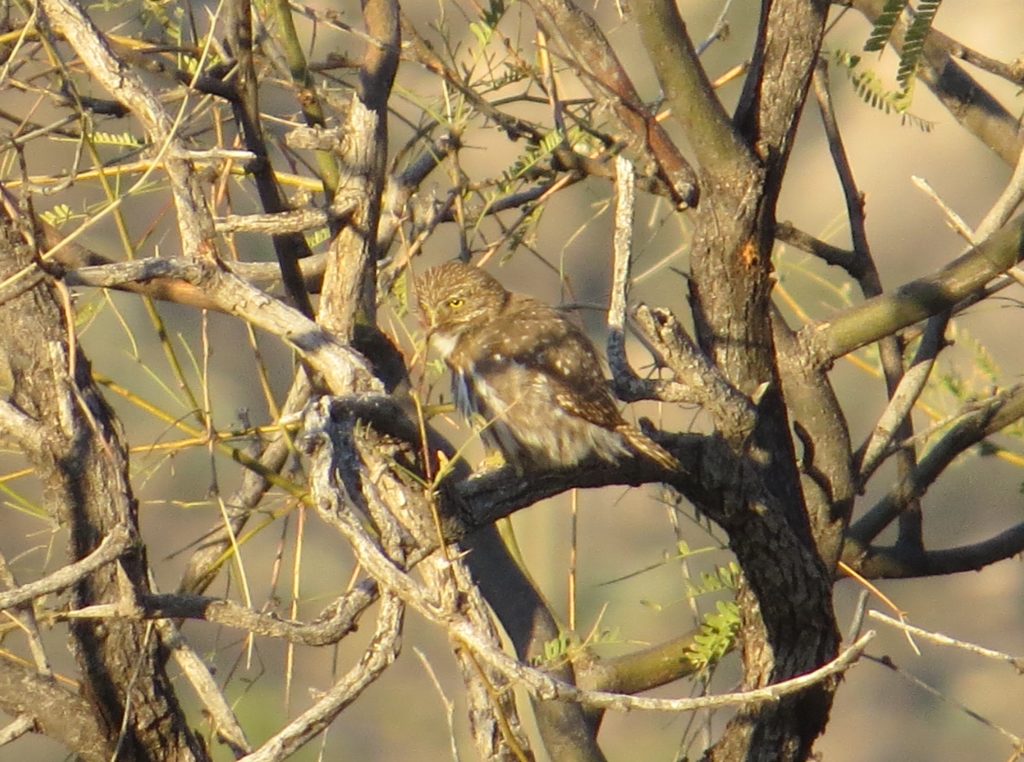 This is a short clip of the FEPO vocalizing.
This is a short clip of the FEPO vocalizing.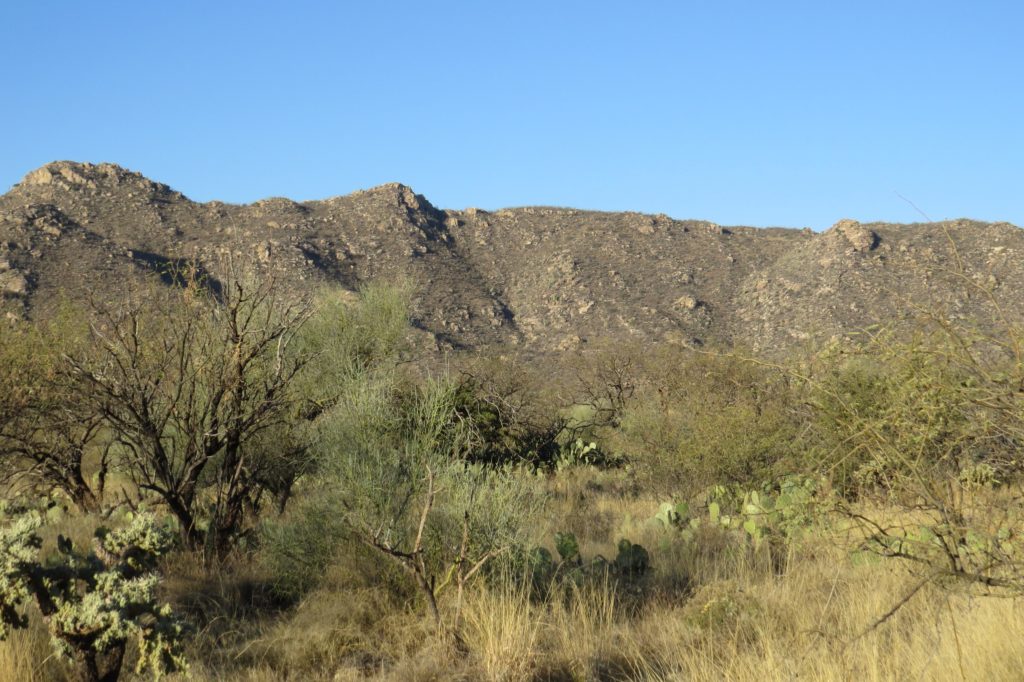
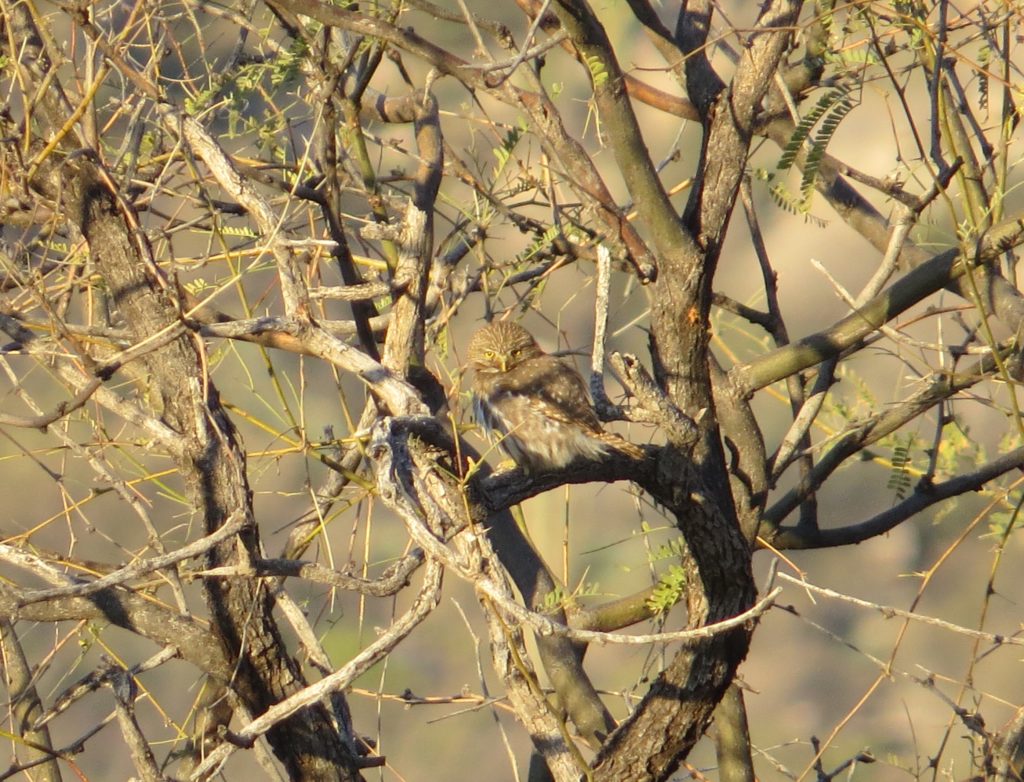 We enjoyed this Owl for the better part of an hour. For most of that time it stayed on this perch but eventually flew off. We did track it down again, but it went into deeper, thicker vegetation with worse views.
We enjoyed this Owl for the better part of an hour. For most of that time it stayed on this perch but eventually flew off. We did track it down again, but it went into deeper, thicker vegetation with worse views.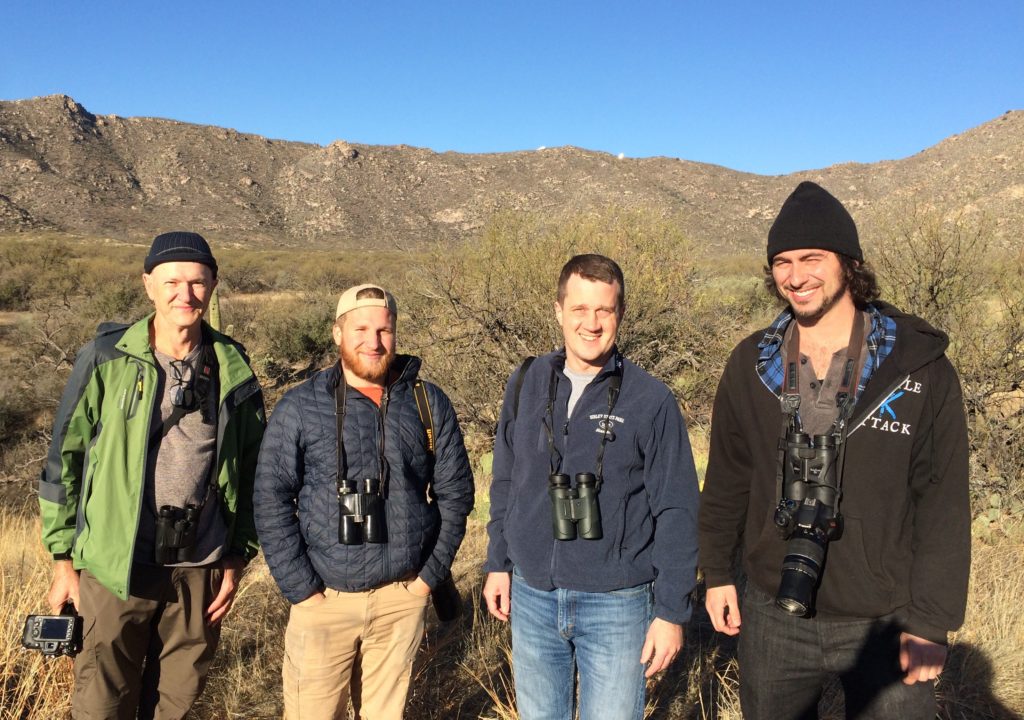 The views here are spectacular, even more so after just freshly lifering on Ferruginous Pygmy-Owl to complete the 19-Owl sweep. I don’t know about the rest of the guys, but there was definitely a bonce in my step on the way out.
The views here are spectacular, even more so after just freshly lifering on Ferruginous Pygmy-Owl to complete the 19-Owl sweep. I don’t know about the rest of the guys, but there was definitely a bonce in my step on the way out.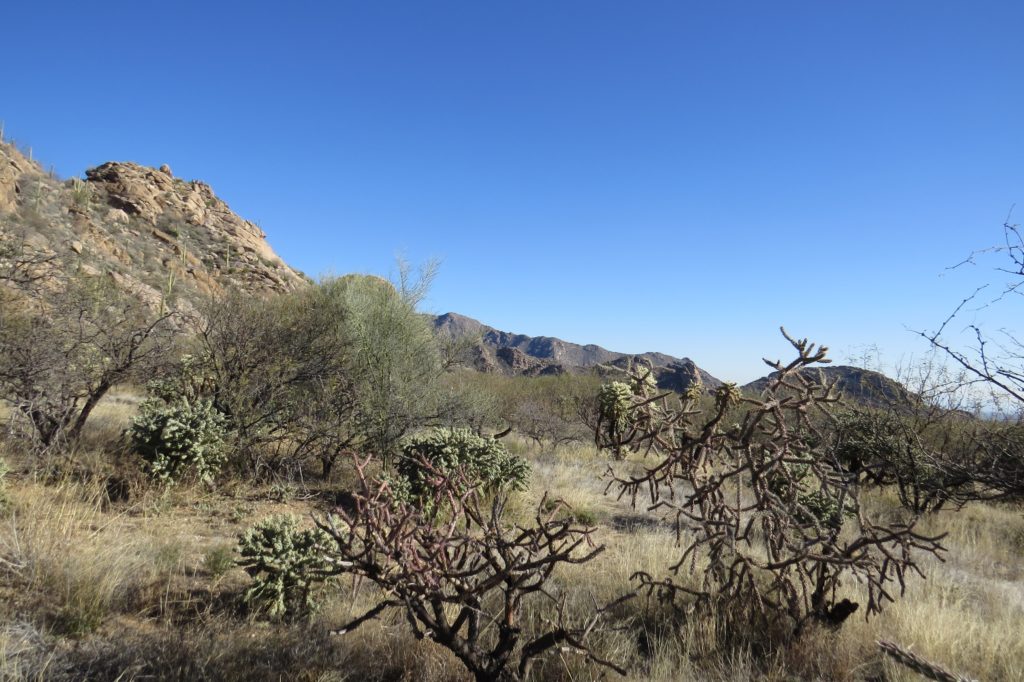
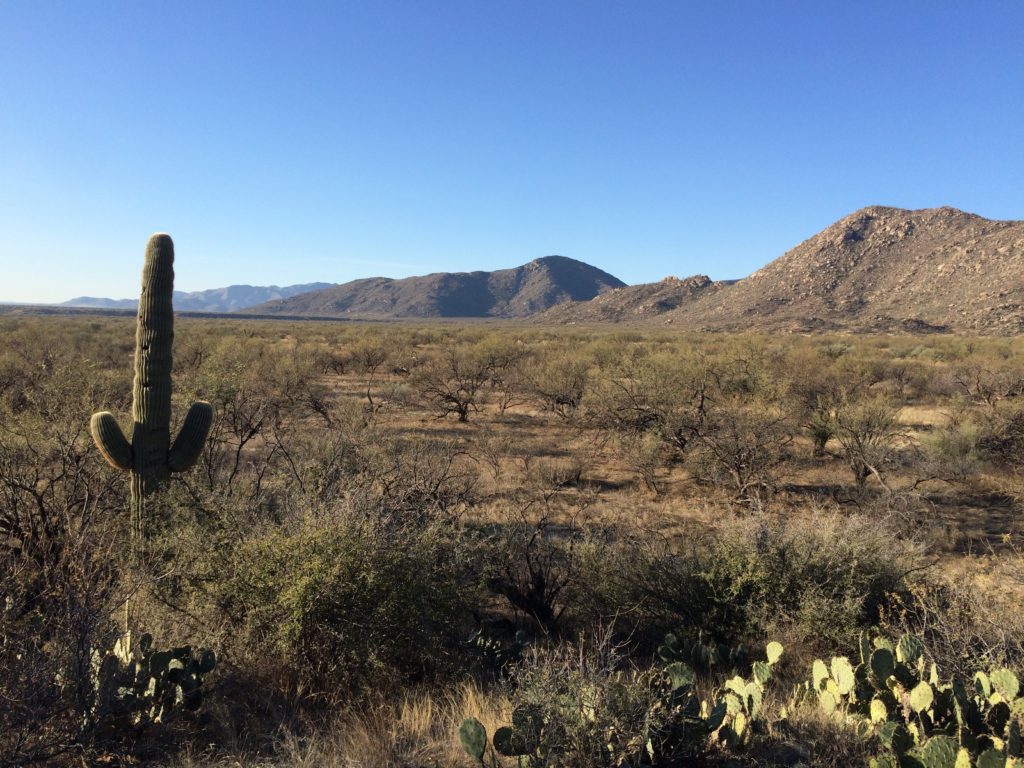
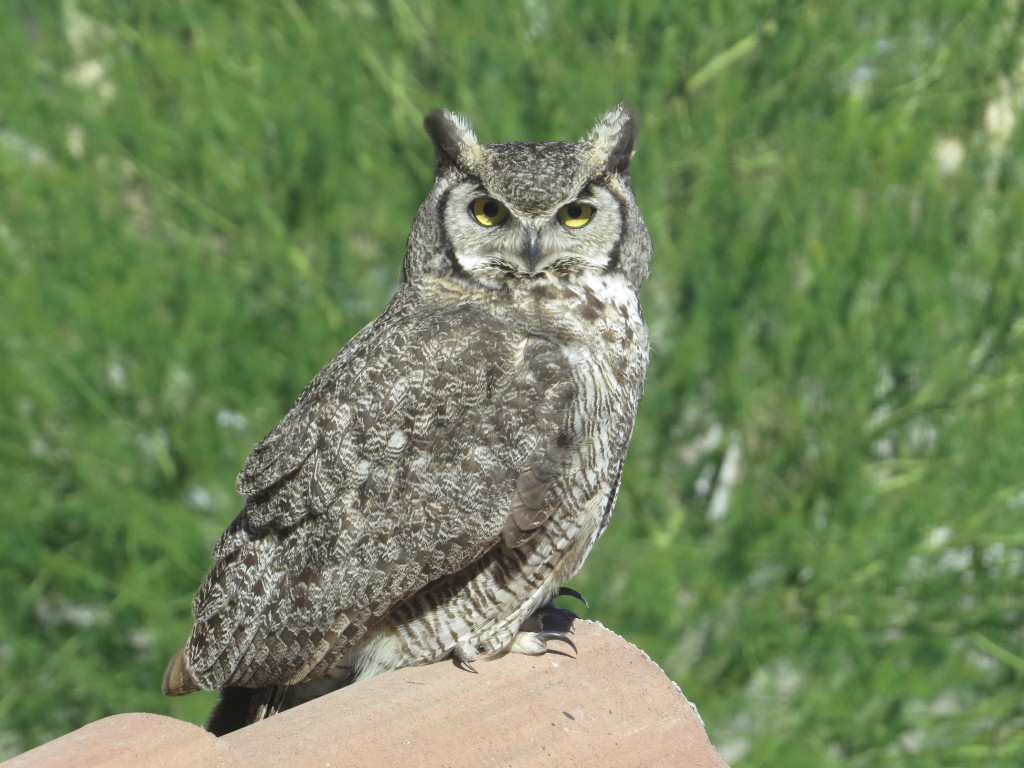
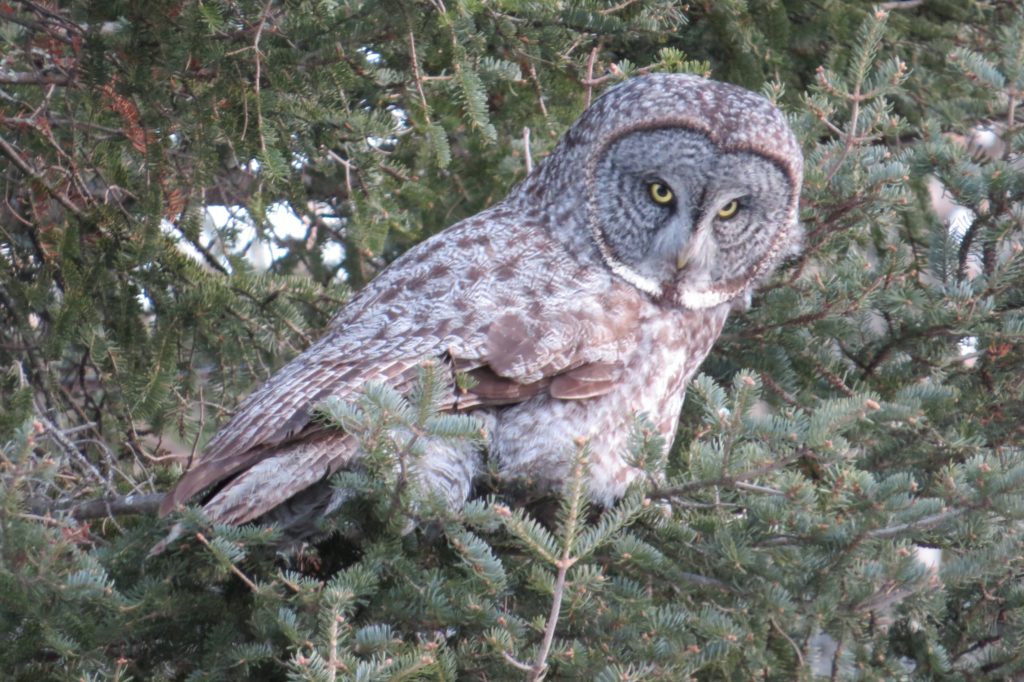
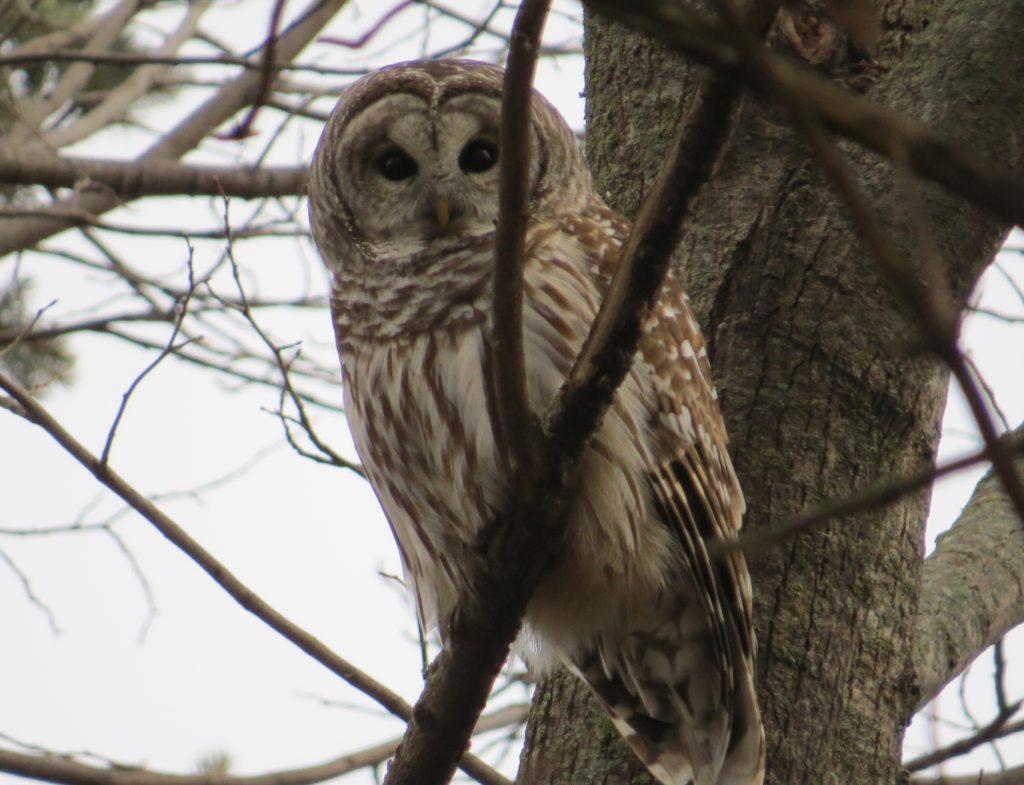
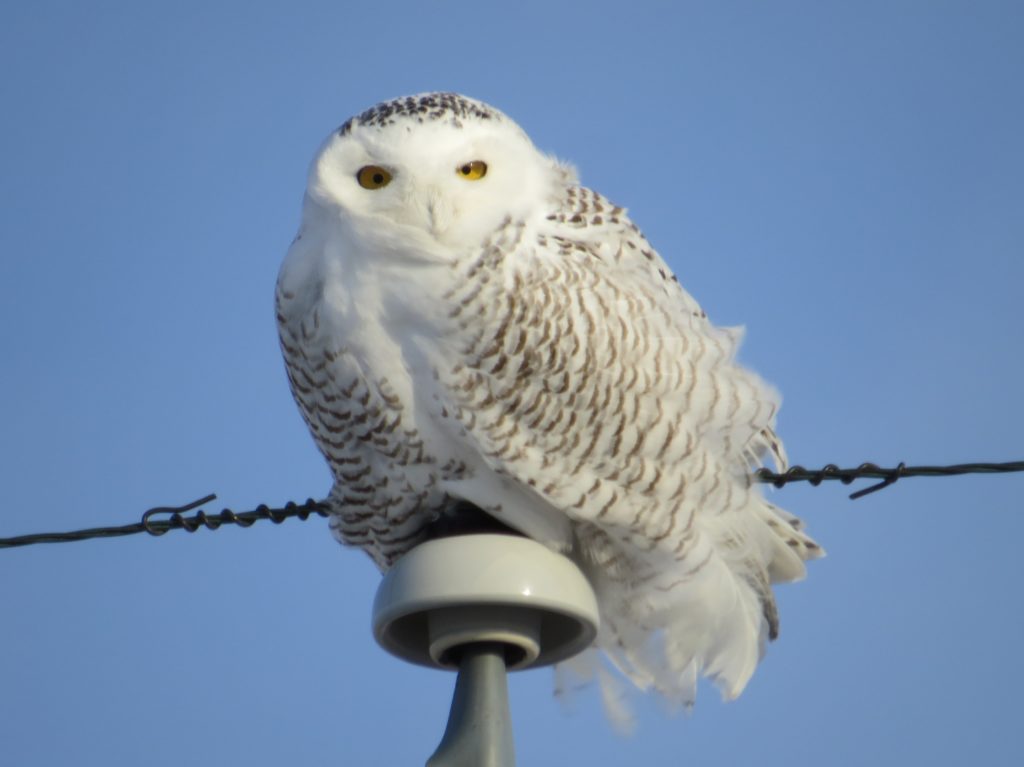
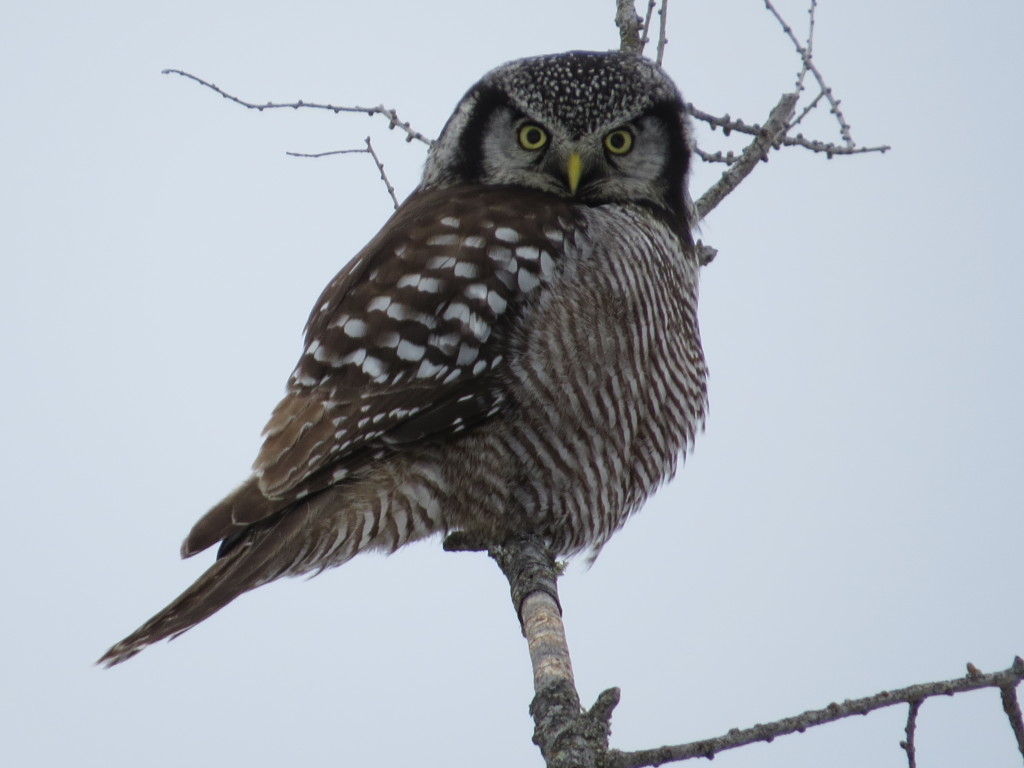
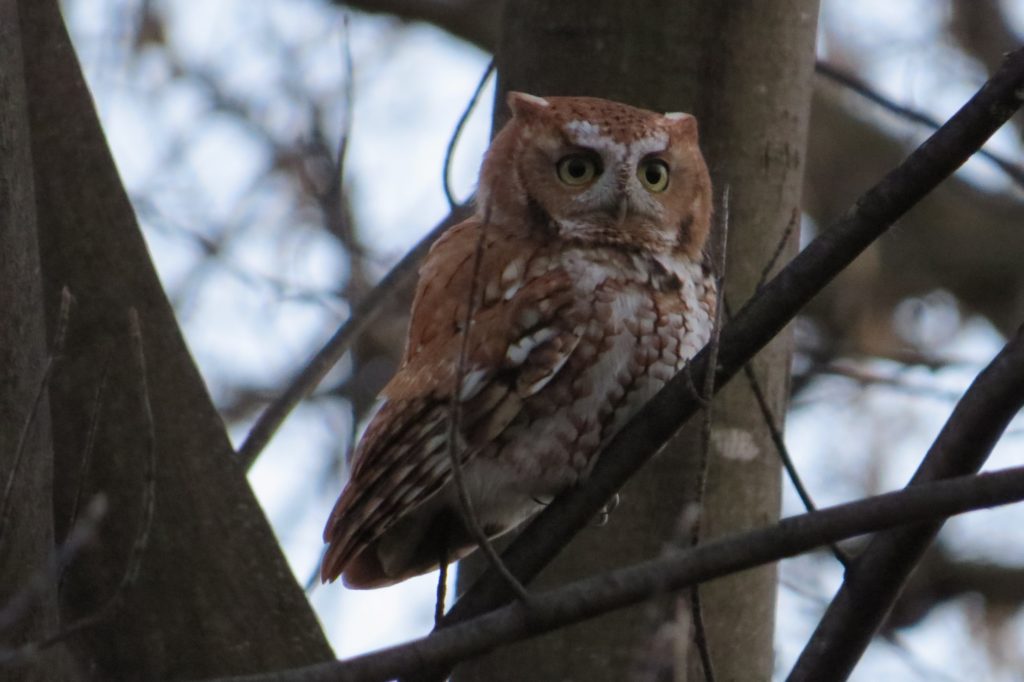
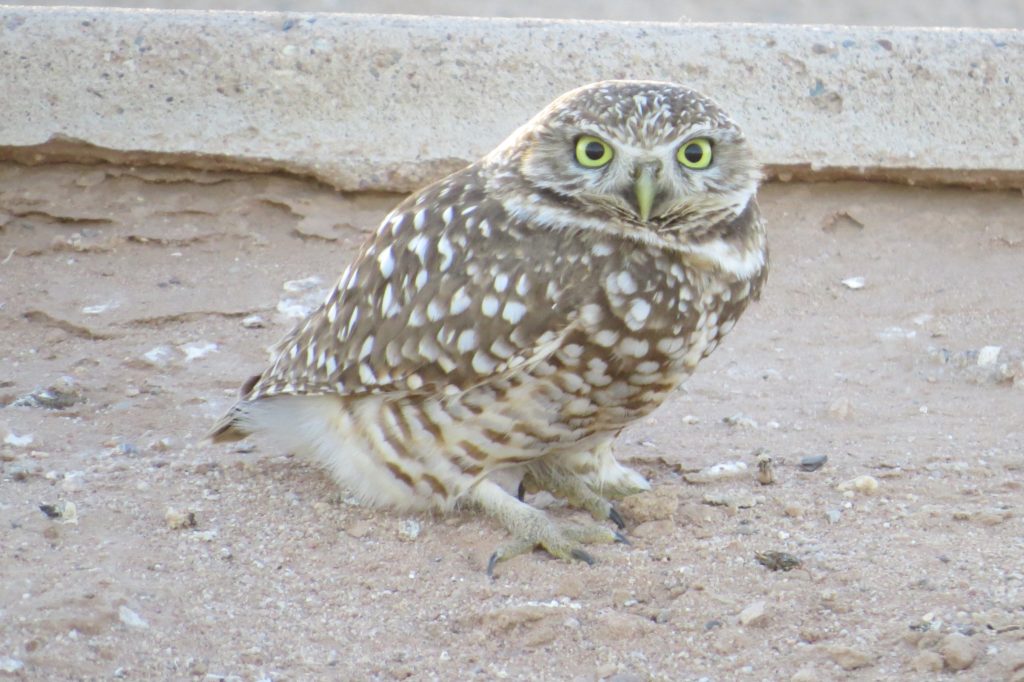 #8 Long-eared Owl
#8 Long-eared Owl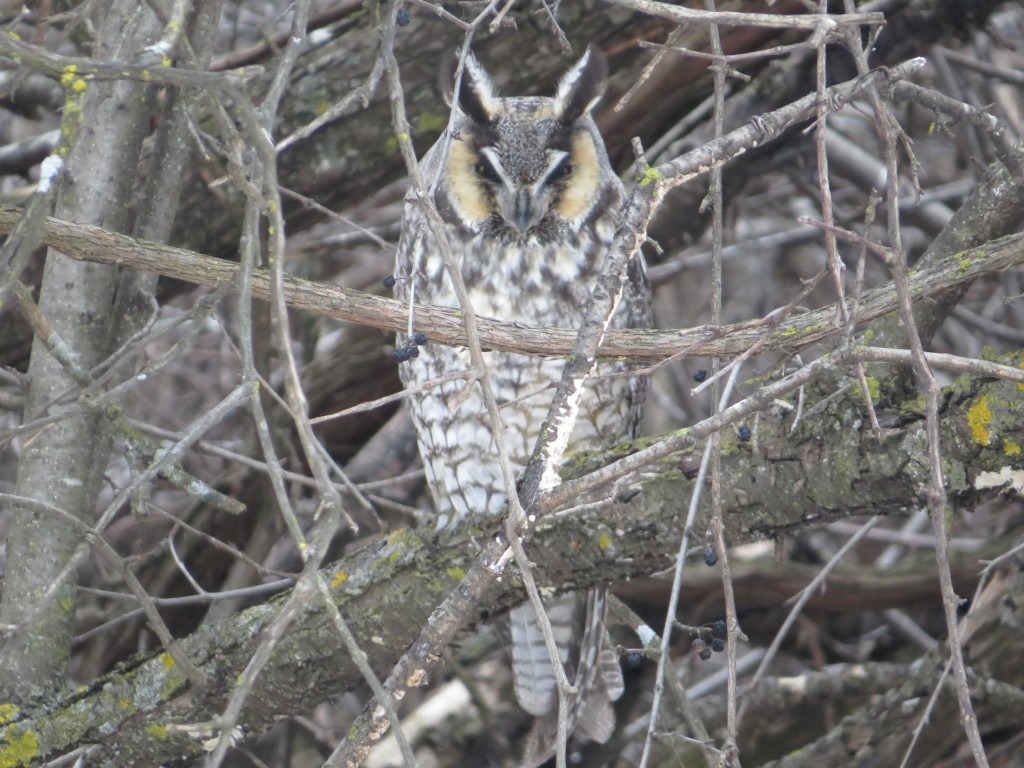
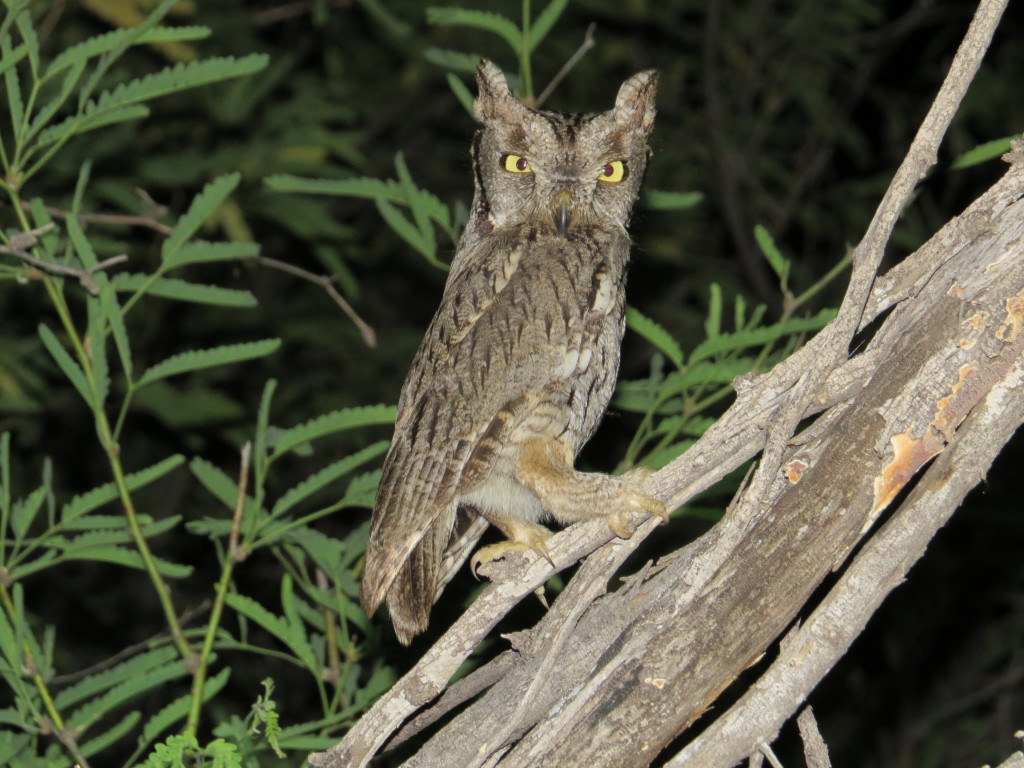
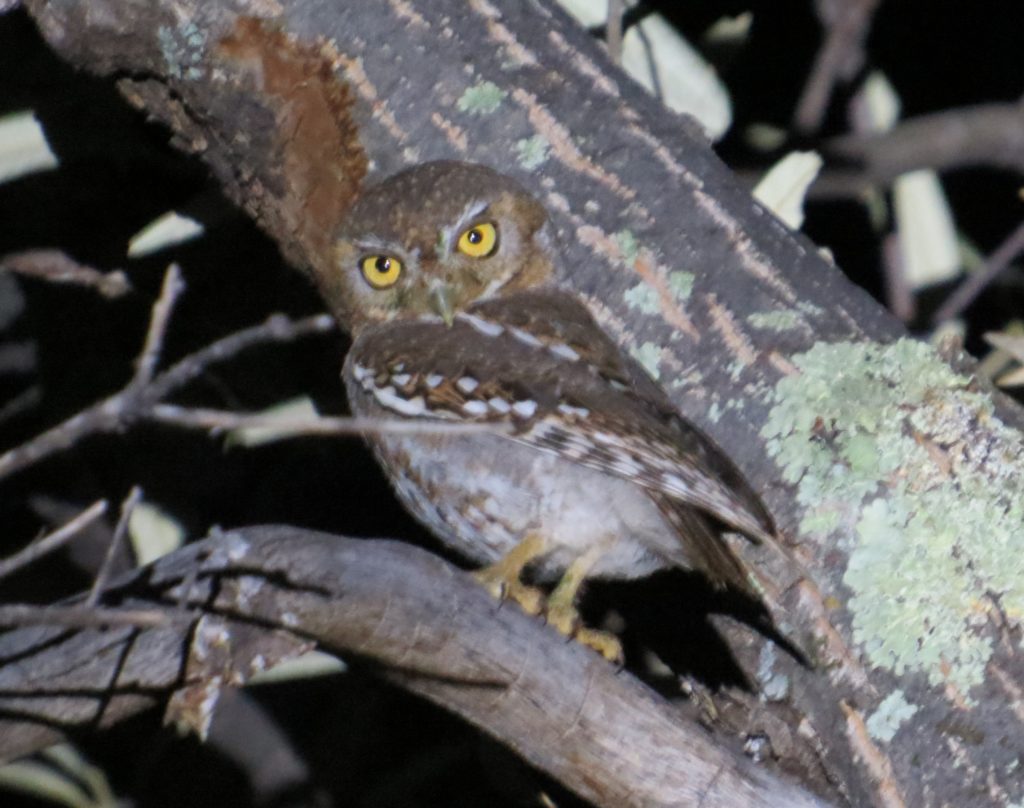
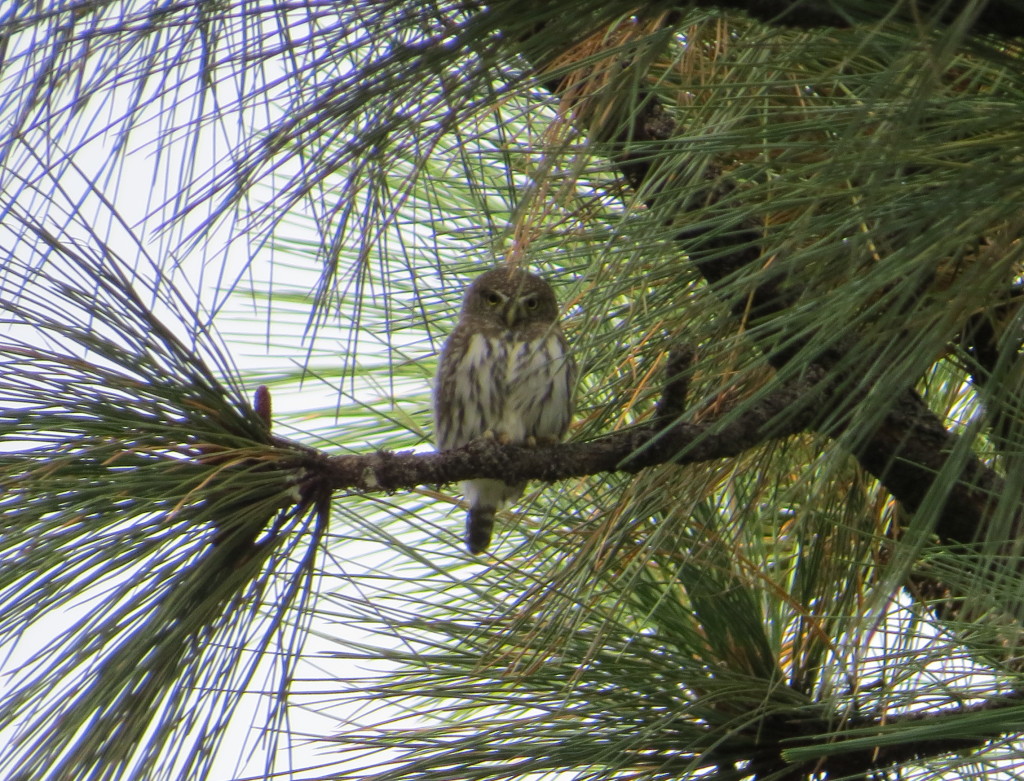
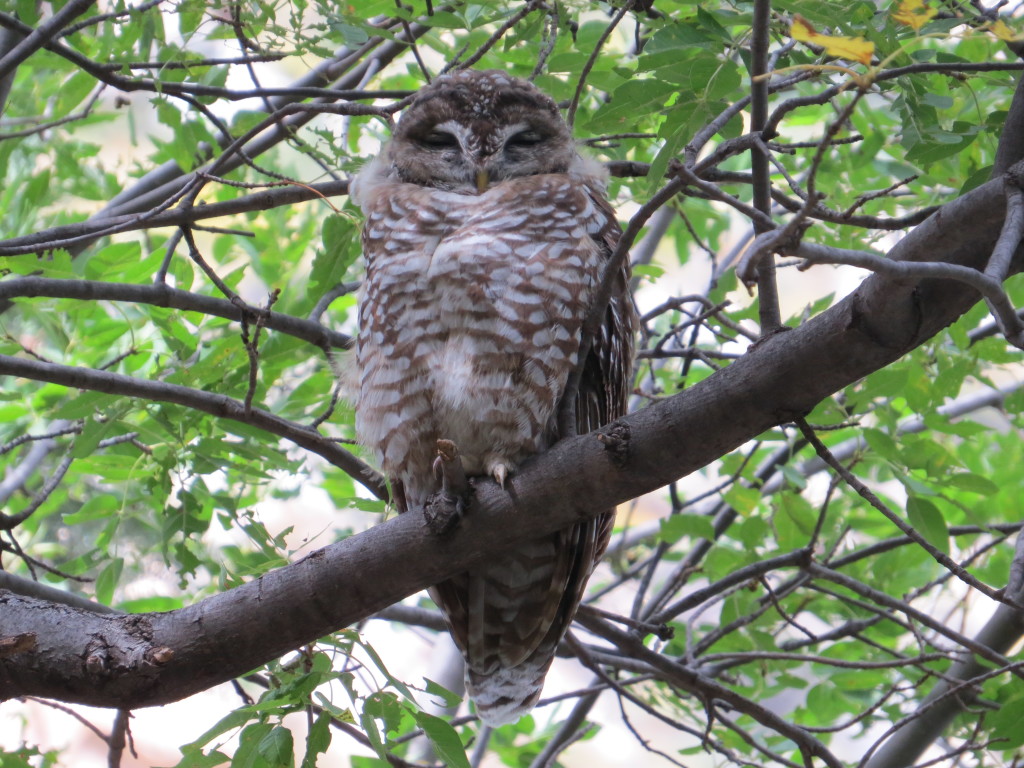
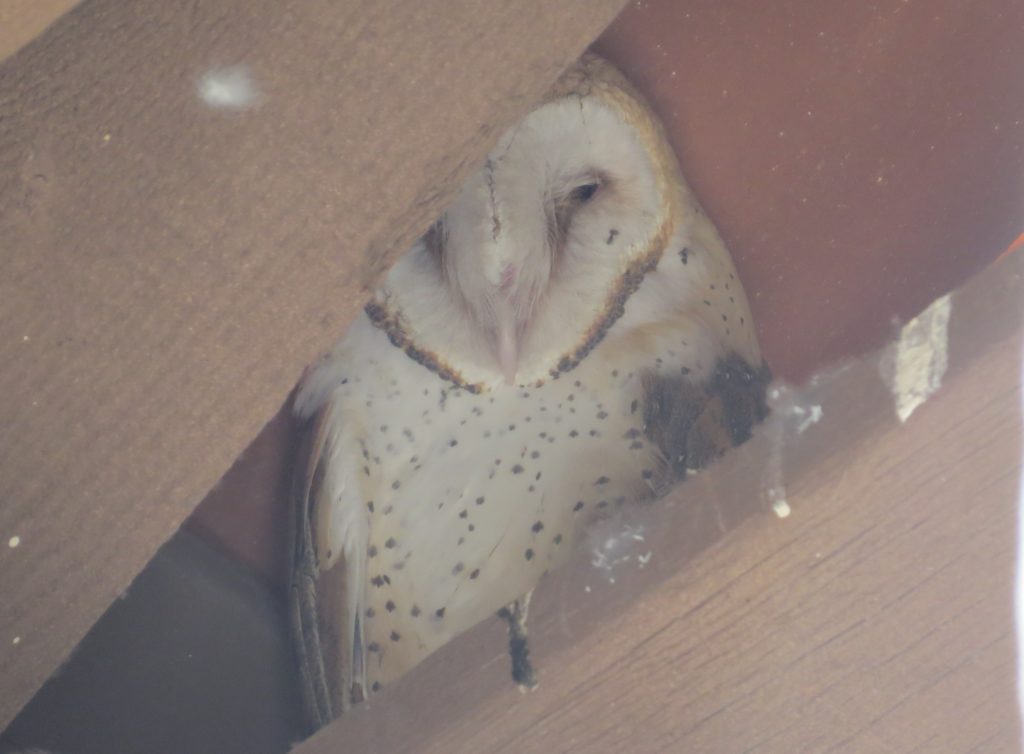
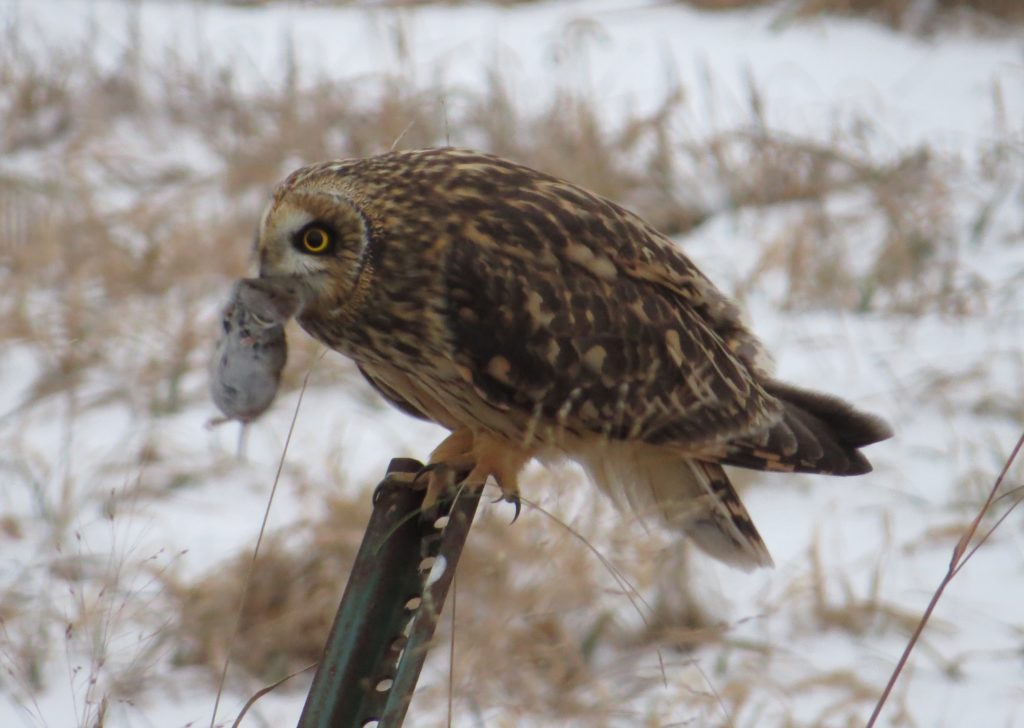 #15 Northern Saw-whet Owl
#15 Northern Saw-whet Owl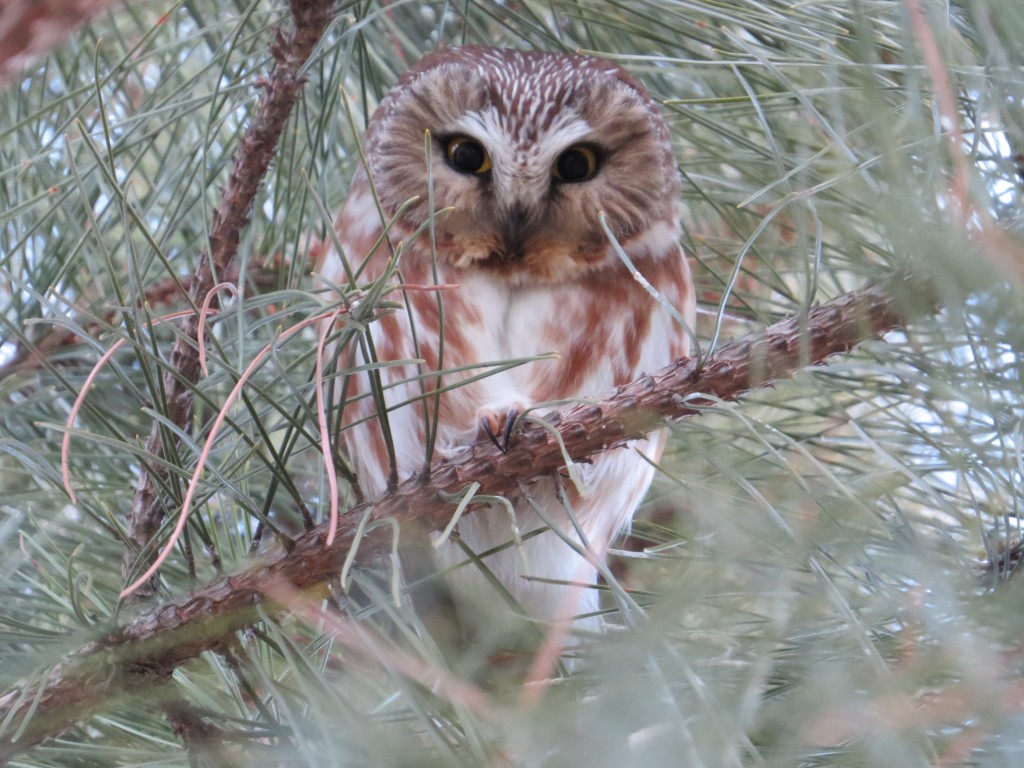
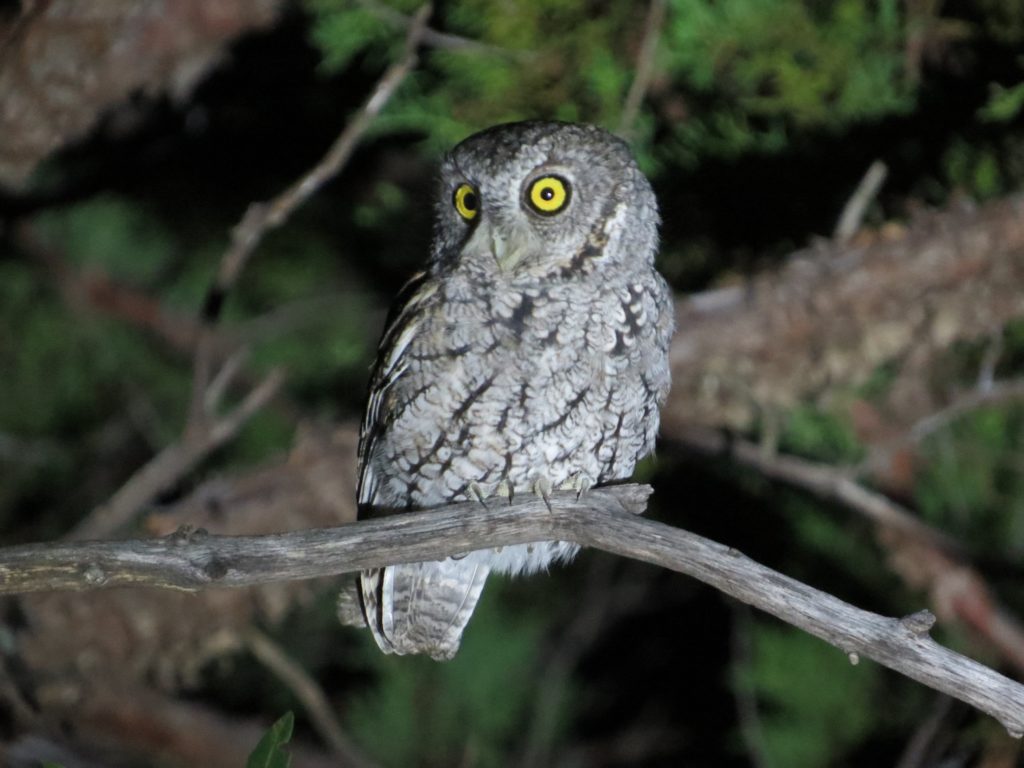
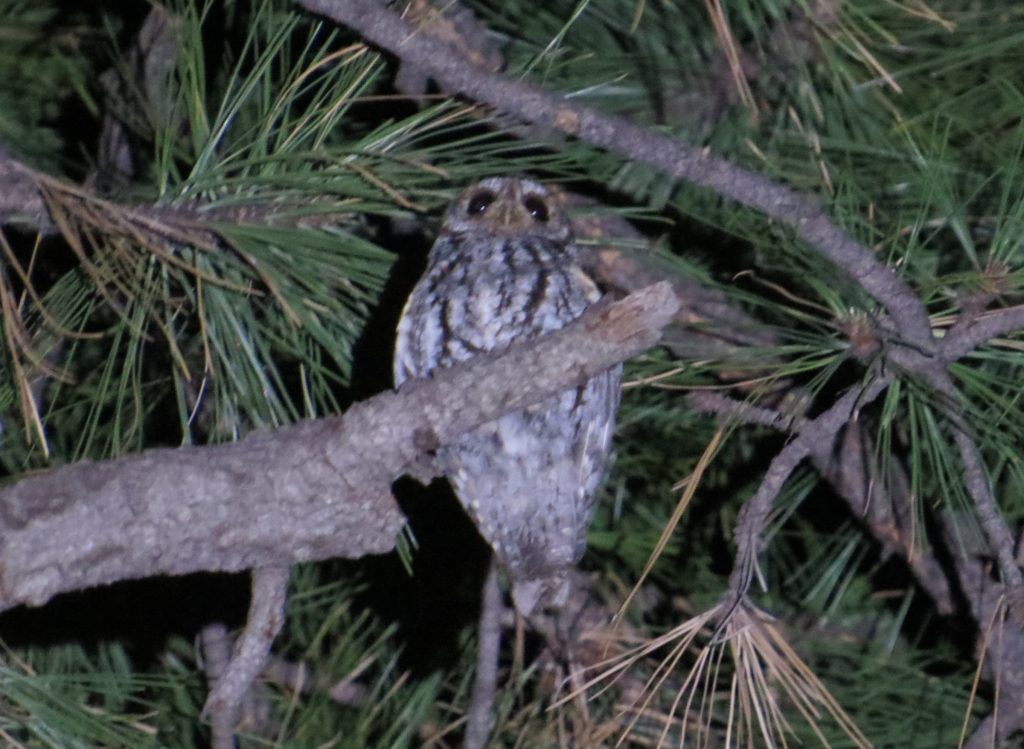
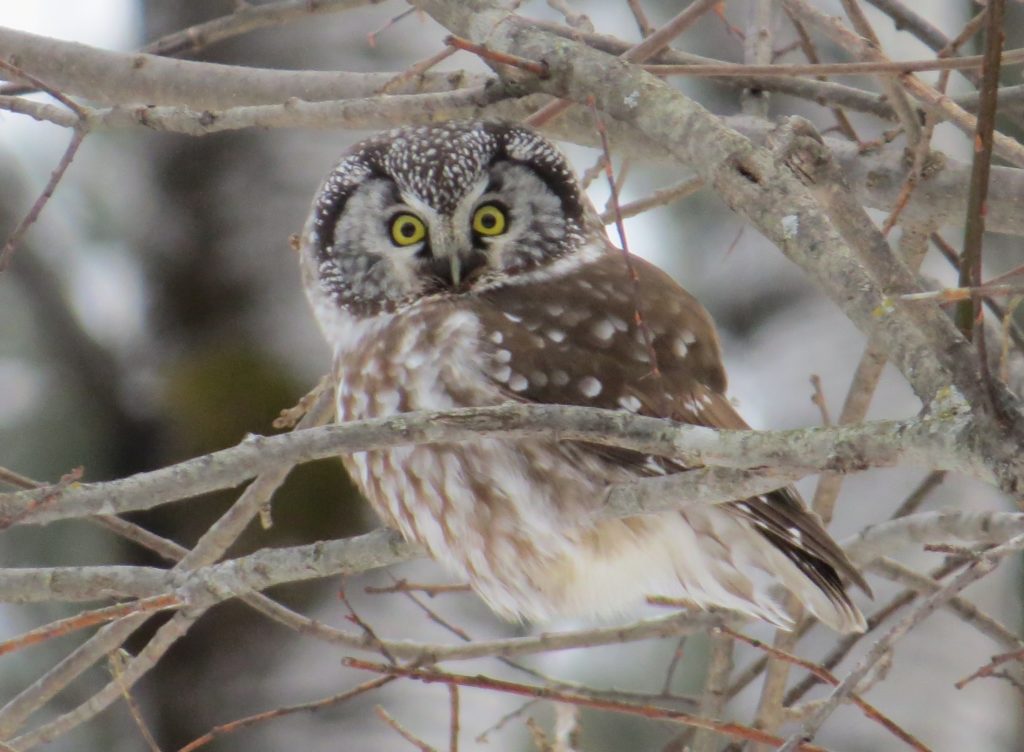
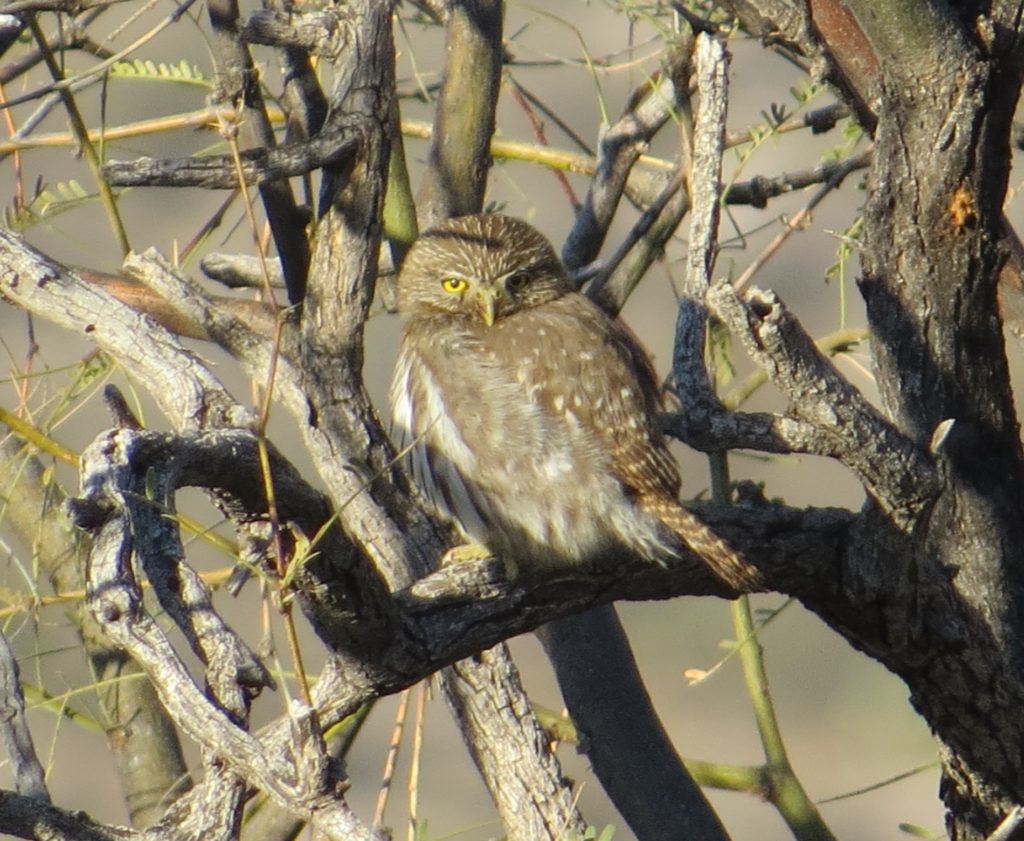
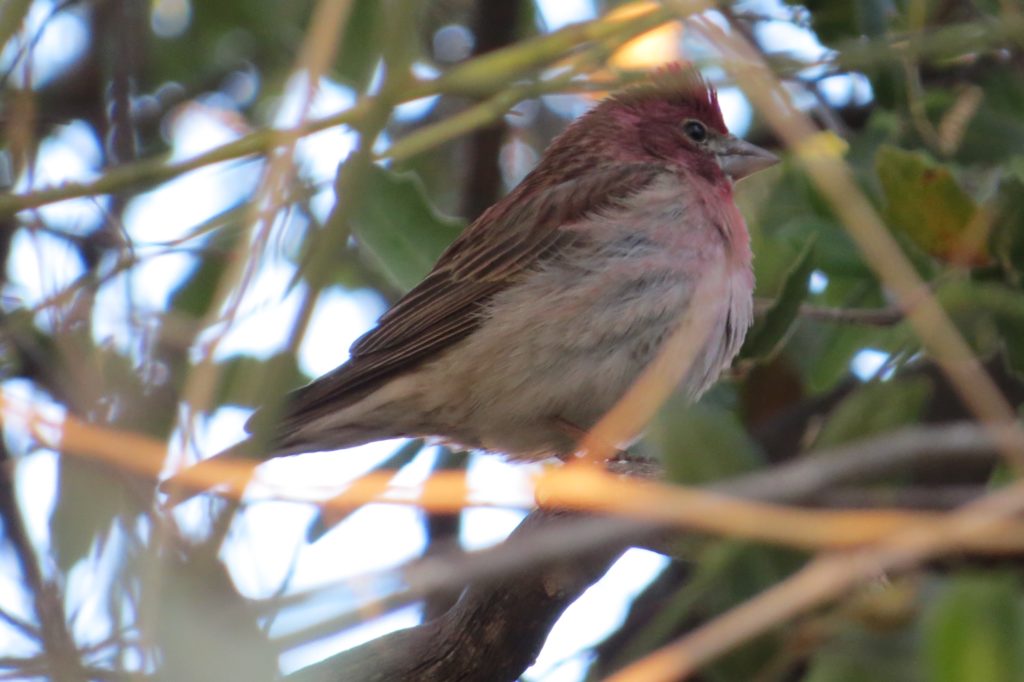
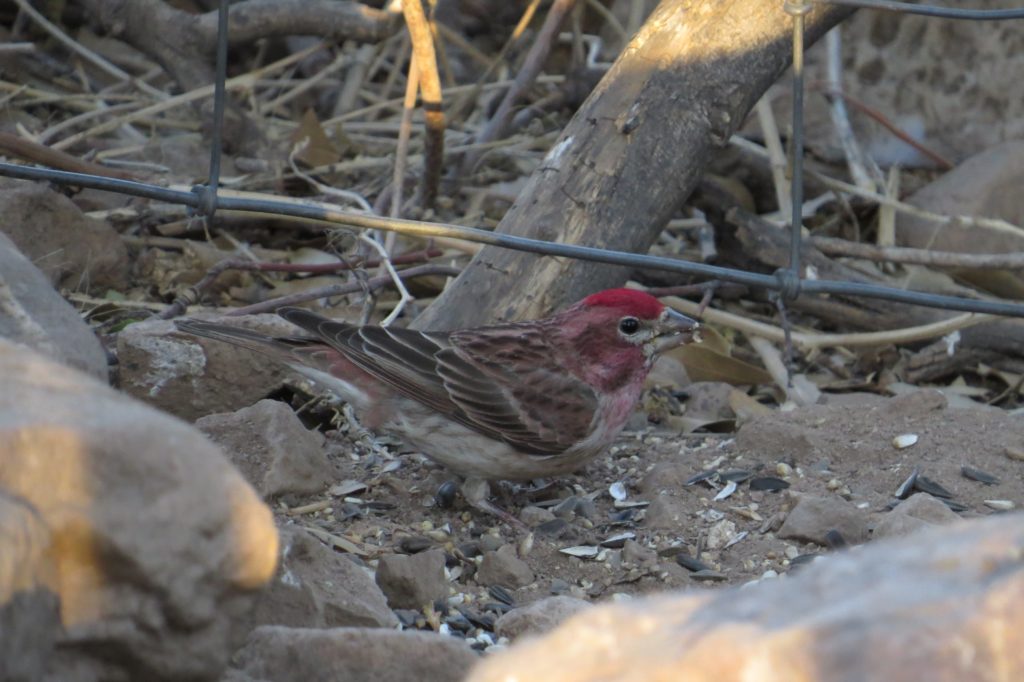 We barely had any time to enjoy the Cassin’s Finch warm-up band before the real head-banging act materialized suddenly, shocking and awing a crowd too afraid to move or breathe, lest the show be over for good.
We barely had any time to enjoy the Cassin’s Finch warm-up band before the real head-banging act materialized suddenly, shocking and awing a crowd too afraid to move or breathe, lest the show be over for good.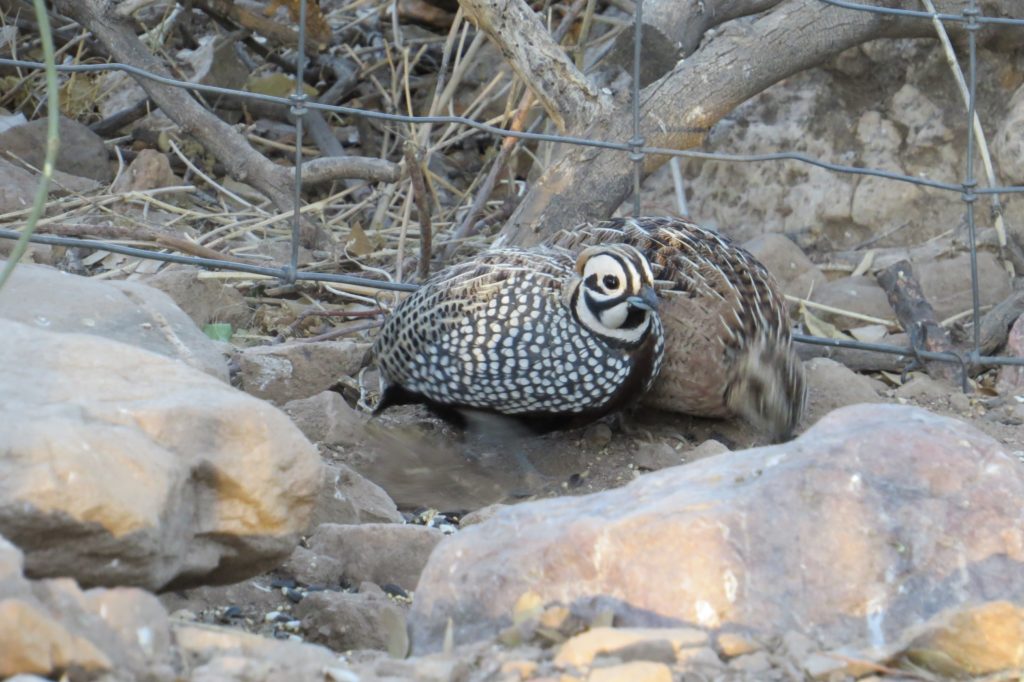
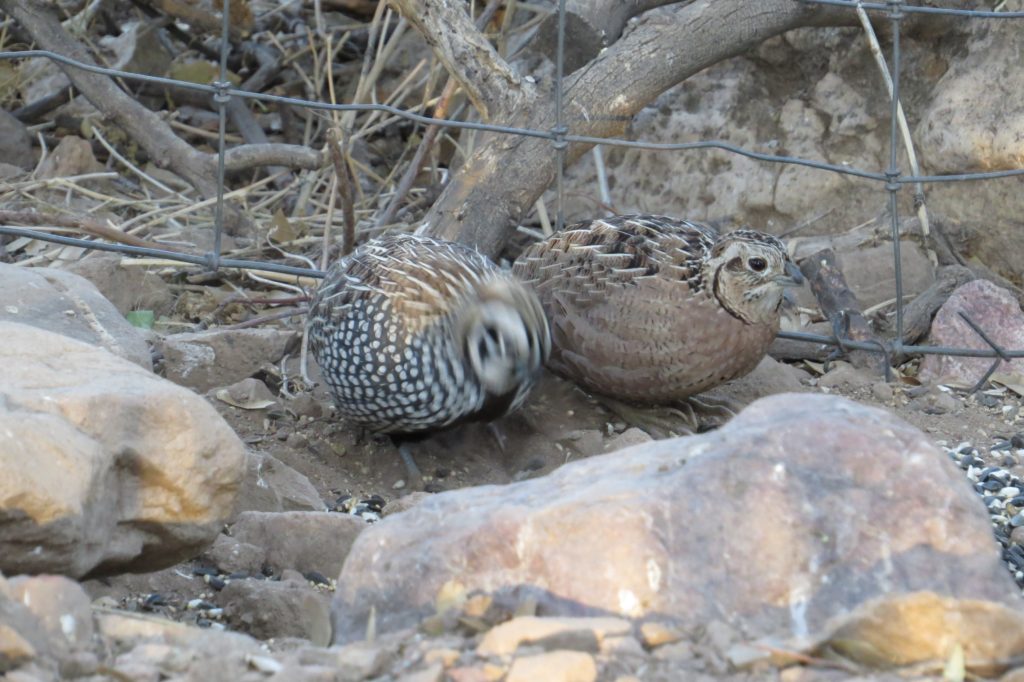
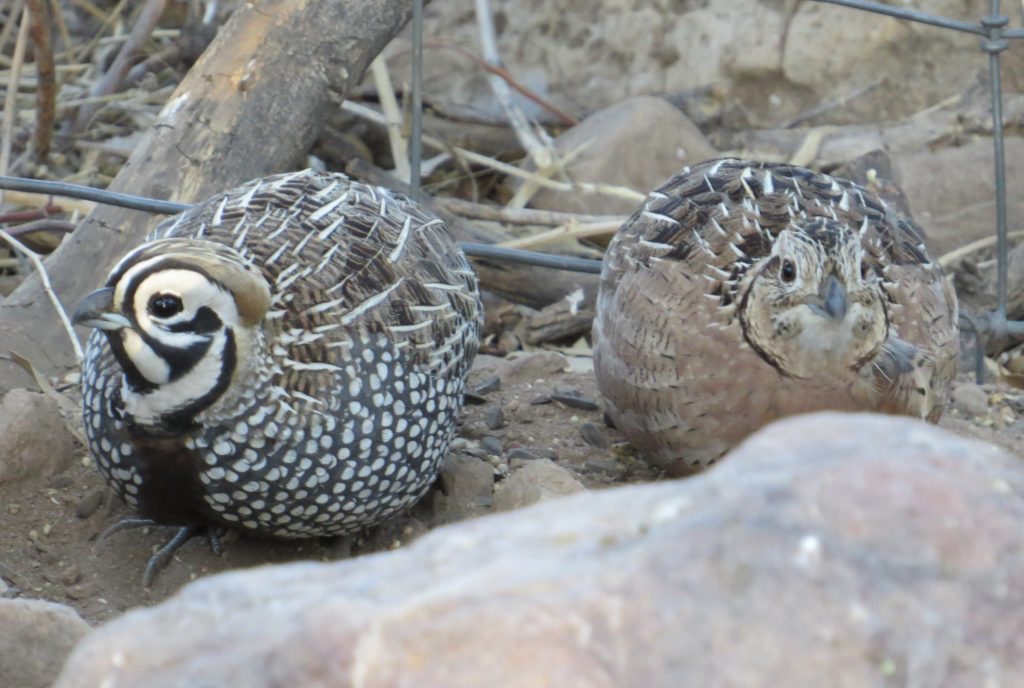
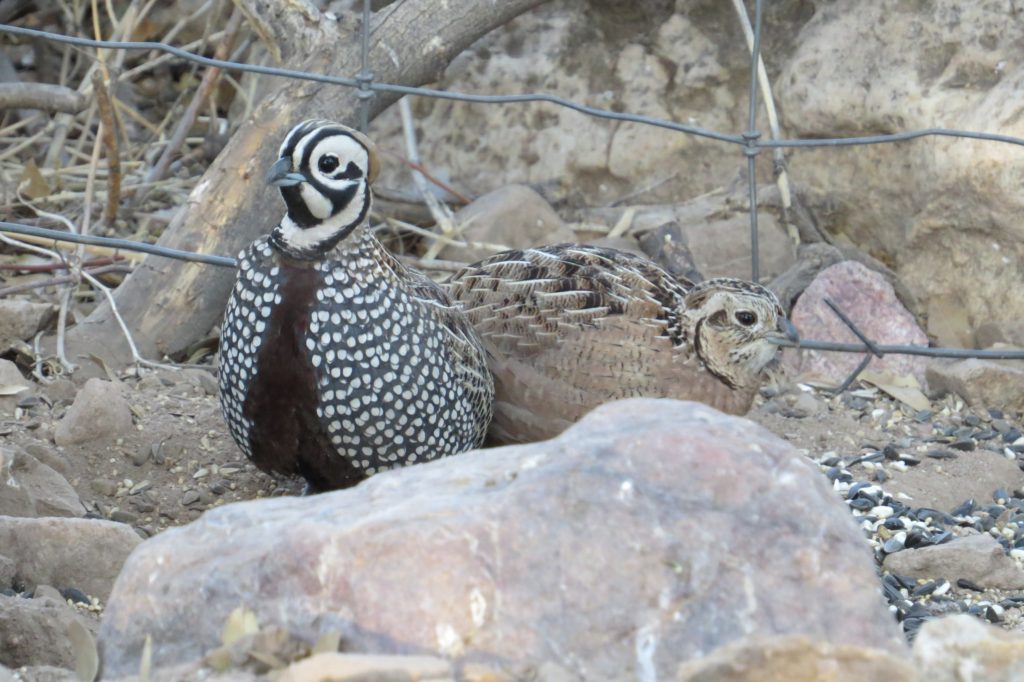
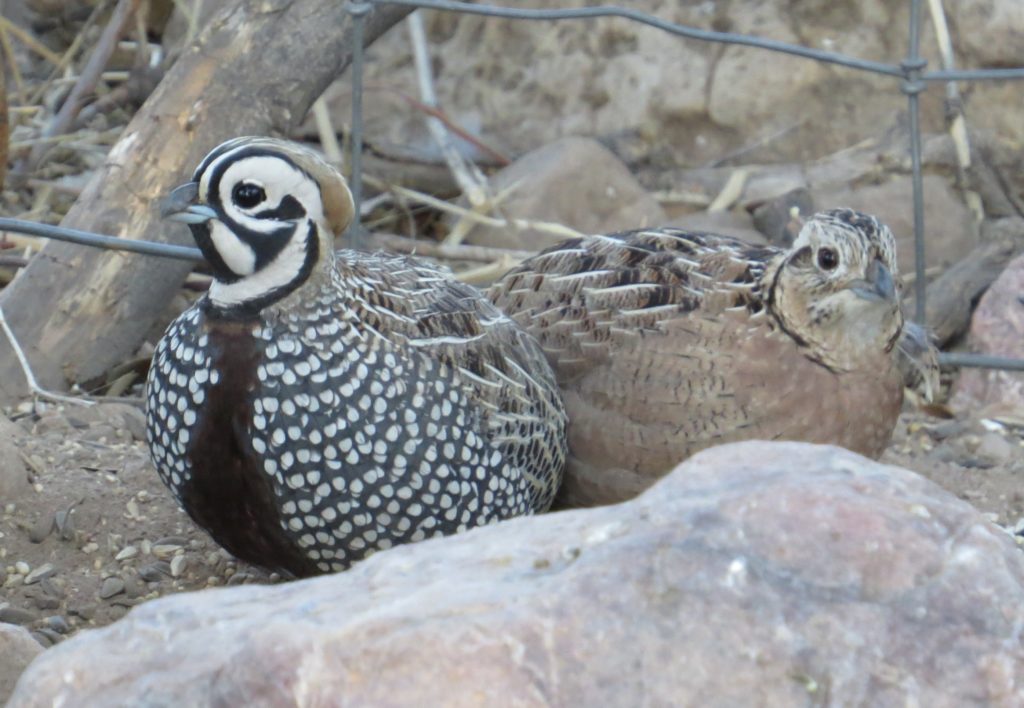 It was not the Ferruginous Pygmy-Owl I craved, but the Montezuma Quail was one of those birds that can make an entire trip. Not only was it a key lifer for Steve and me, but this was Tommy’s first time photographing this species. It was a high for the entire group.
It was not the Ferruginous Pygmy-Owl I craved, but the Montezuma Quail was one of those birds that can make an entire trip. Not only was it a key lifer for Steve and me, but this was Tommy’s first time photographing this species. It was a high for the entire group.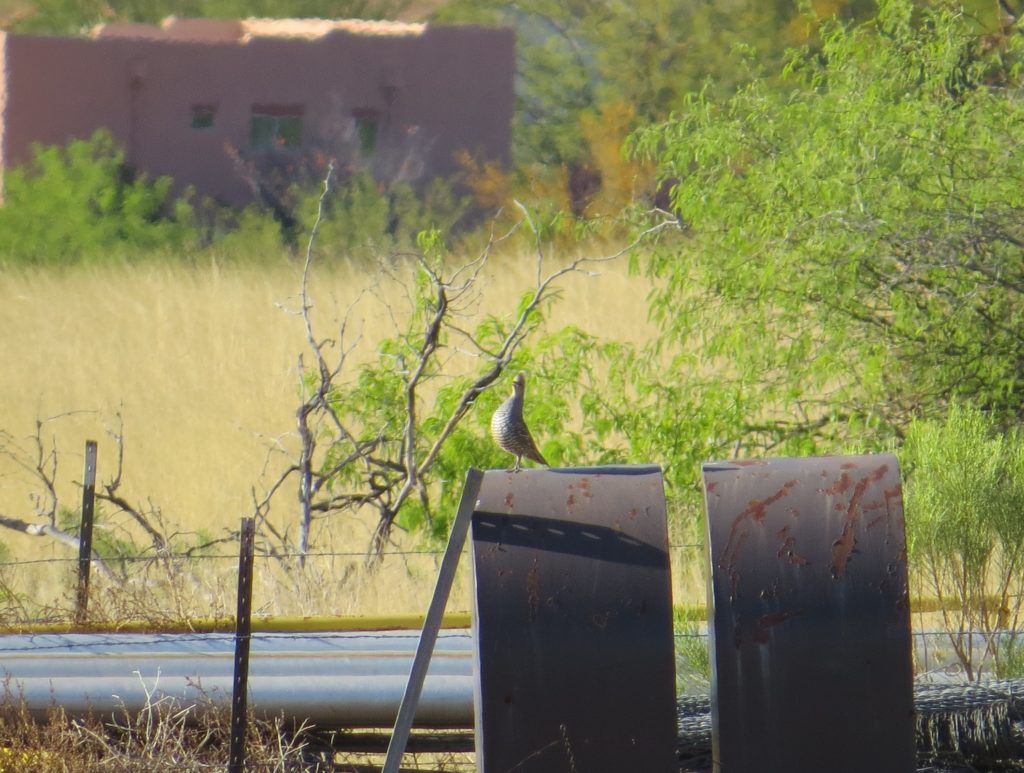 On our to-do list was to hit up Miller Canyon next to try to get Steve a Spotted Owl lifer, among others. This whole time that Fan-tailed Warbler report was still on all of our minds. Strangely, there had been no word the previous day or this morning. It was odd considering it was such a mega rarity. I finally heard from Chris Rohrer that the Warbler had been seen Saturday by numerous people AND that it was still there this morning. We decided to do Miller Canyon as planned since we were so close. What hadn’t been decided yet was if we were going after the Warbler. A chase to the Chiricahuas in far southeastern AZ would mean the FEPO plans would have to be nixed–we had originally planned to try for FEPO again Sunday night and Monday morning before we flew out. Though the Warbler would have been a lifer for Tommy, he graciously said the decision was mine to continue with the FEPO plans or abandon them. Steve also said it didn’t matter to him as he was enjoying a plethora of new birds wherever we went. As we hiked up Miller Canyon, I didn’t know what to do. It made it tough for me to enjoy some of the canyon’s residents, many of which were lifers for Steve.
On our to-do list was to hit up Miller Canyon next to try to get Steve a Spotted Owl lifer, among others. This whole time that Fan-tailed Warbler report was still on all of our minds. Strangely, there had been no word the previous day or this morning. It was odd considering it was such a mega rarity. I finally heard from Chris Rohrer that the Warbler had been seen Saturday by numerous people AND that it was still there this morning. We decided to do Miller Canyon as planned since we were so close. What hadn’t been decided yet was if we were going after the Warbler. A chase to the Chiricahuas in far southeastern AZ would mean the FEPO plans would have to be nixed–we had originally planned to try for FEPO again Sunday night and Monday morning before we flew out. Though the Warbler would have been a lifer for Tommy, he graciously said the decision was mine to continue with the FEPO plans or abandon them. Steve also said it didn’t matter to him as he was enjoying a plethora of new birds wherever we went. As we hiked up Miller Canyon, I didn’t know what to do. It made it tough for me to enjoy some of the canyon’s residents, many of which were lifers for Steve.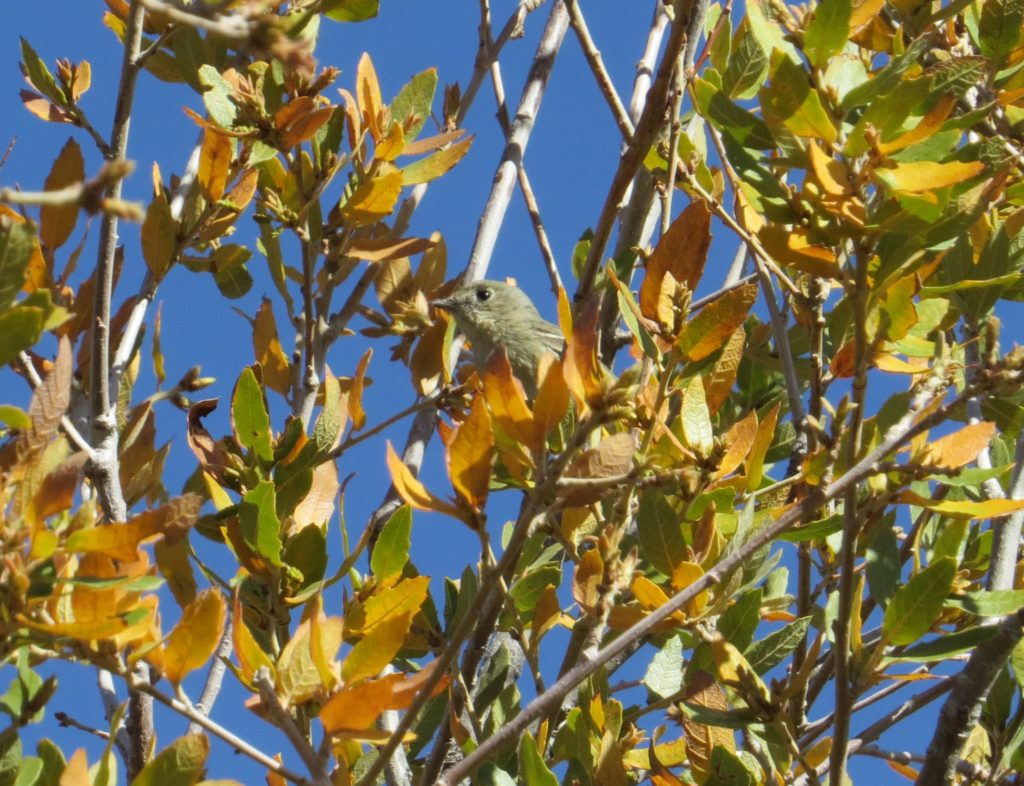
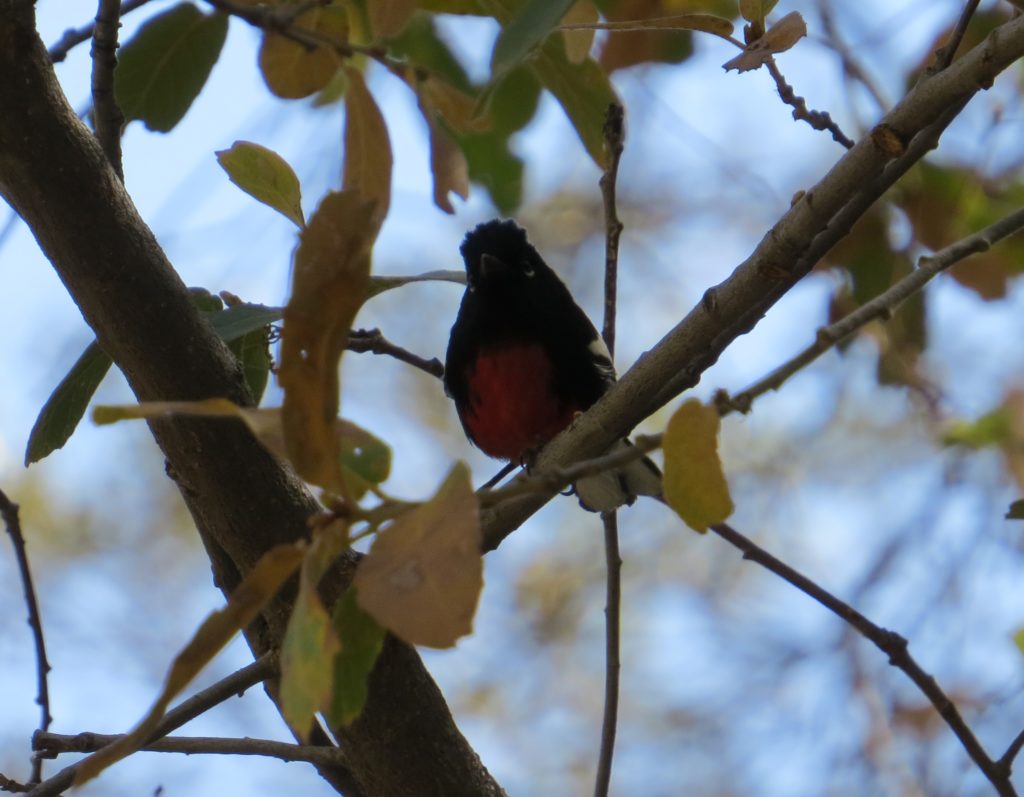
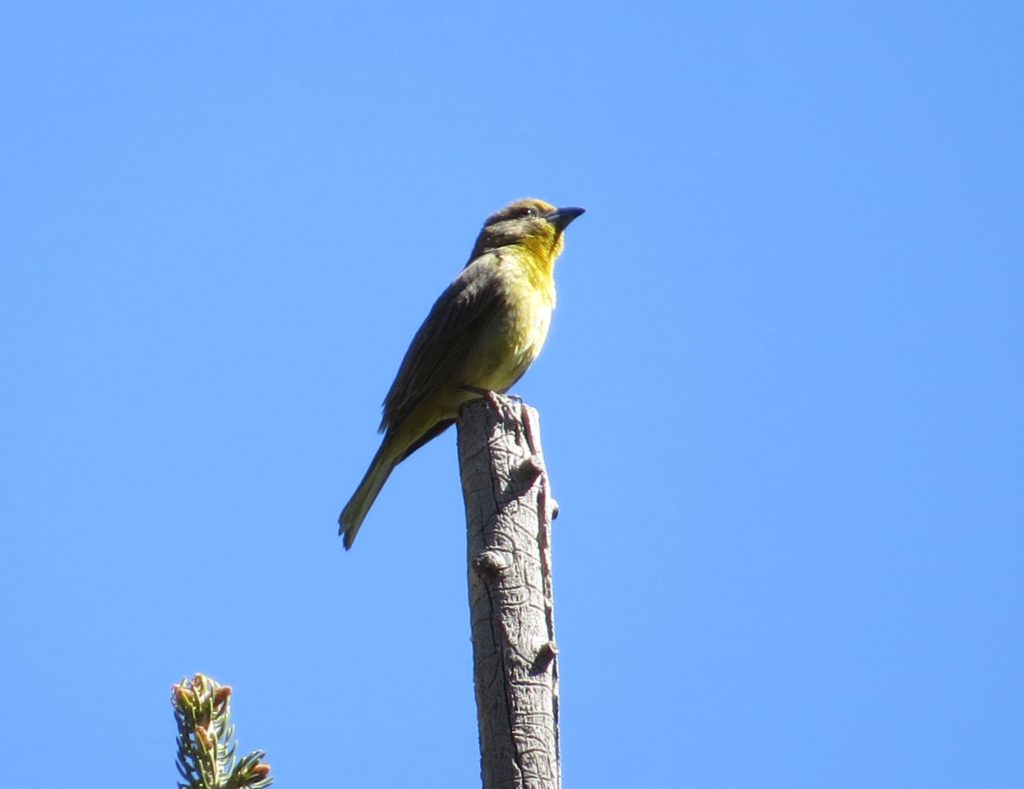
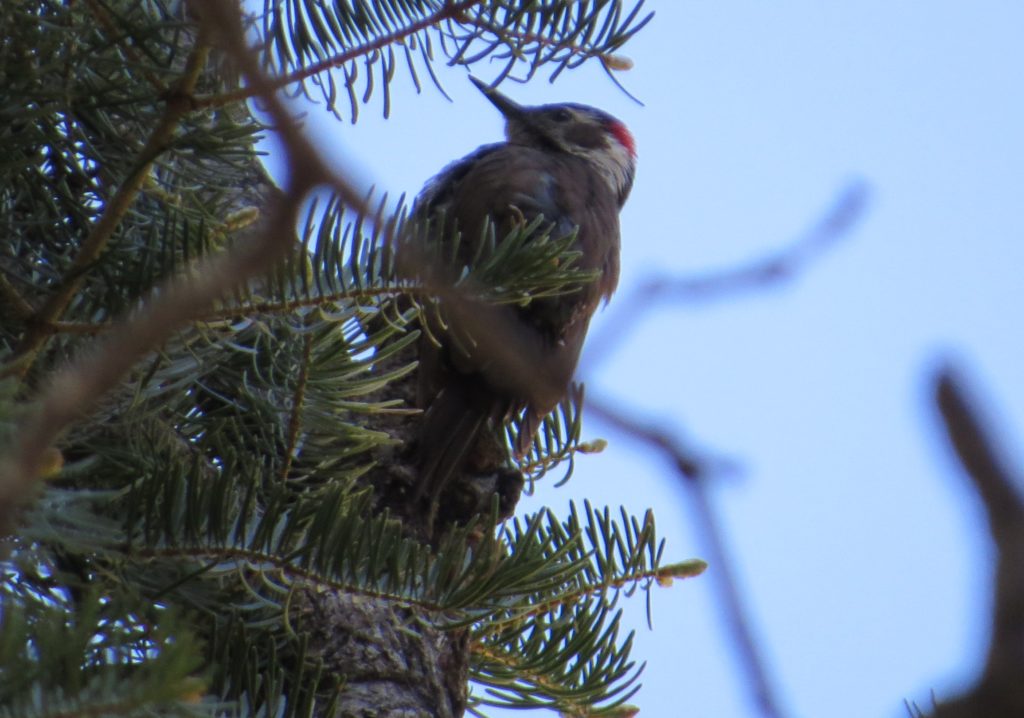
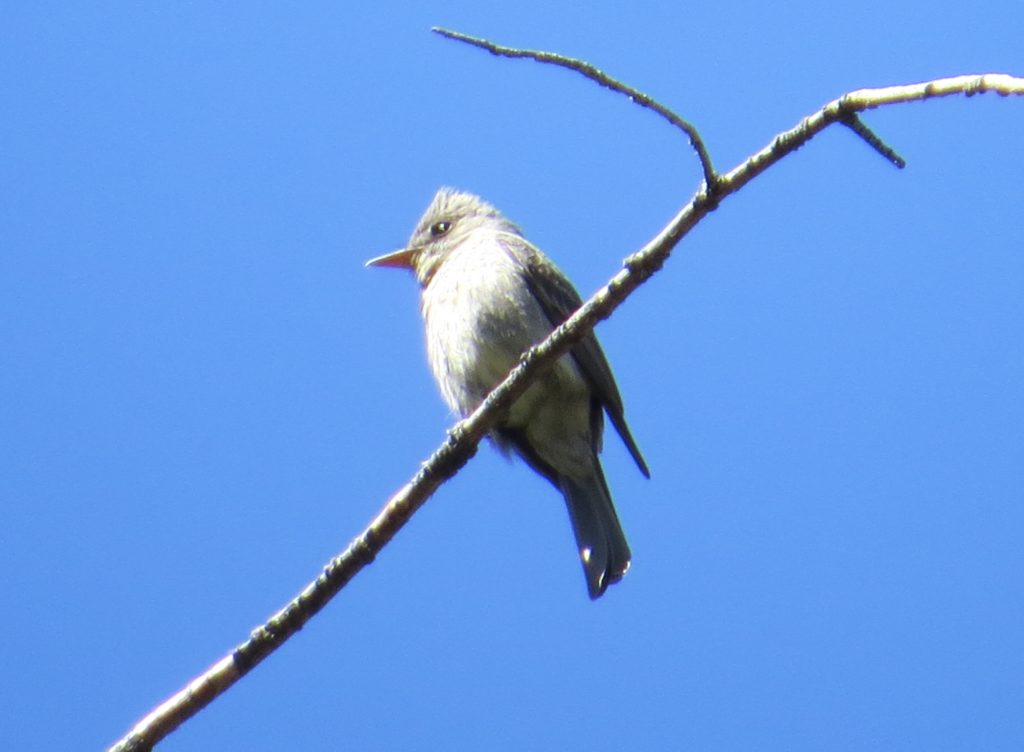
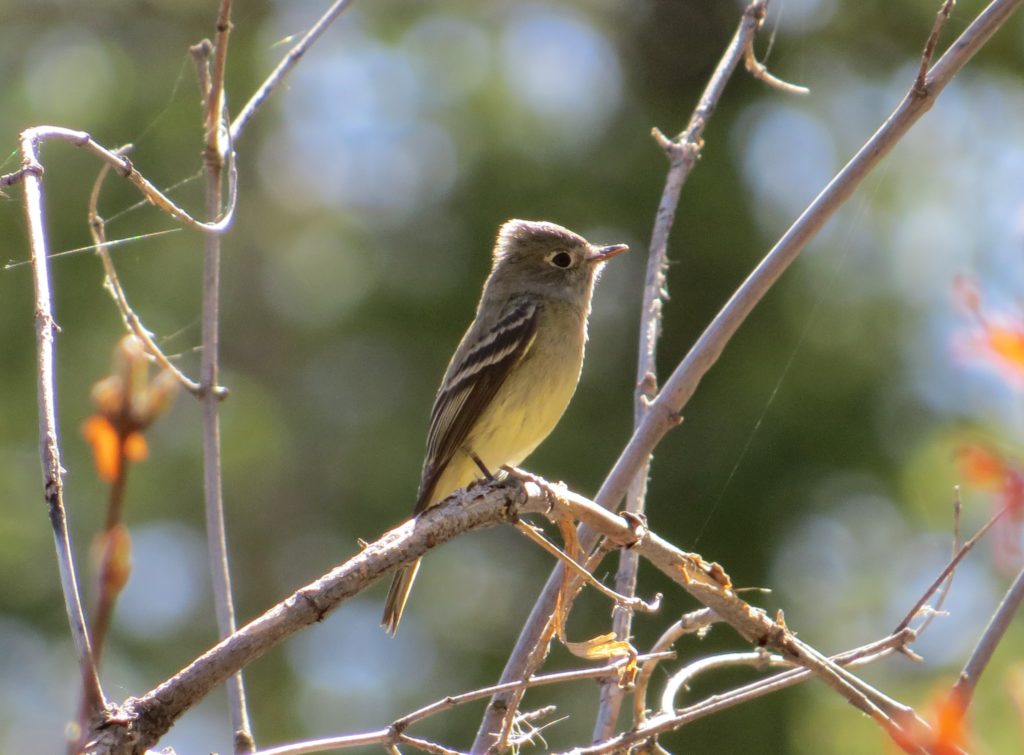 Another ID question prolonged the decision. Anybody know what species this lizard is?
Another ID question prolonged the decision. Anybody know what species this lizard is?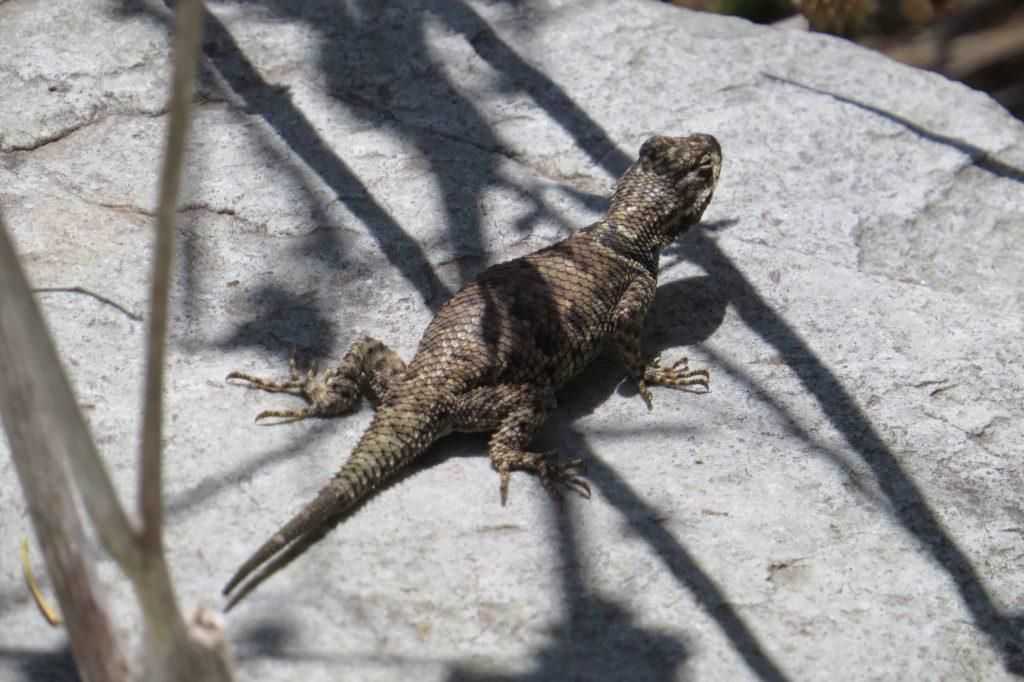
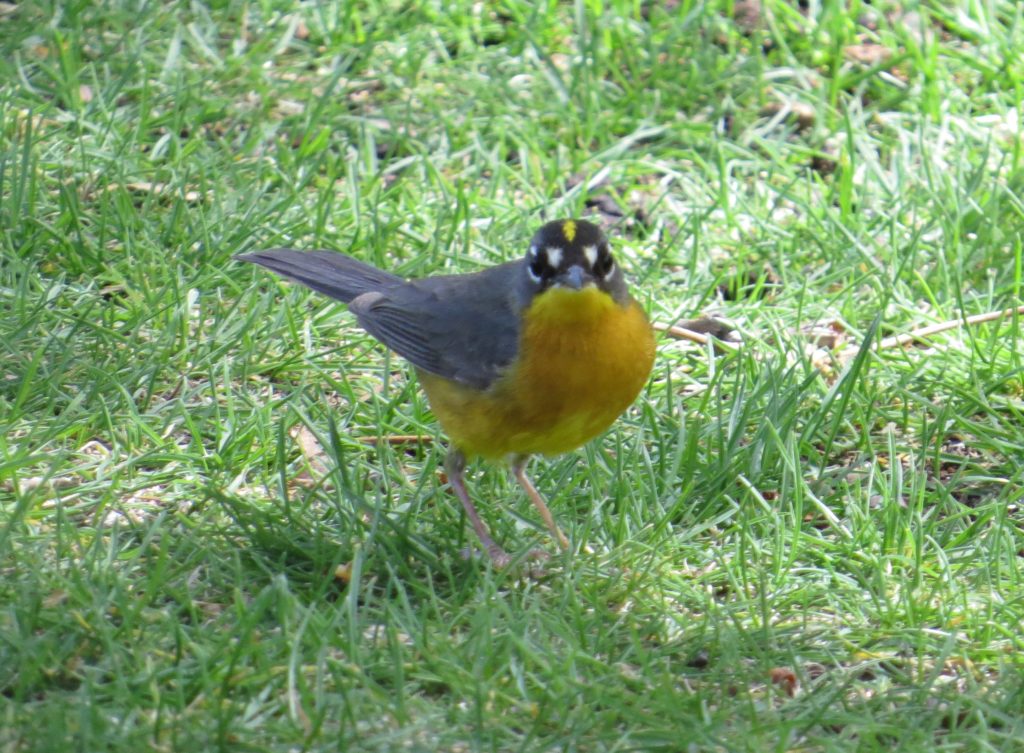
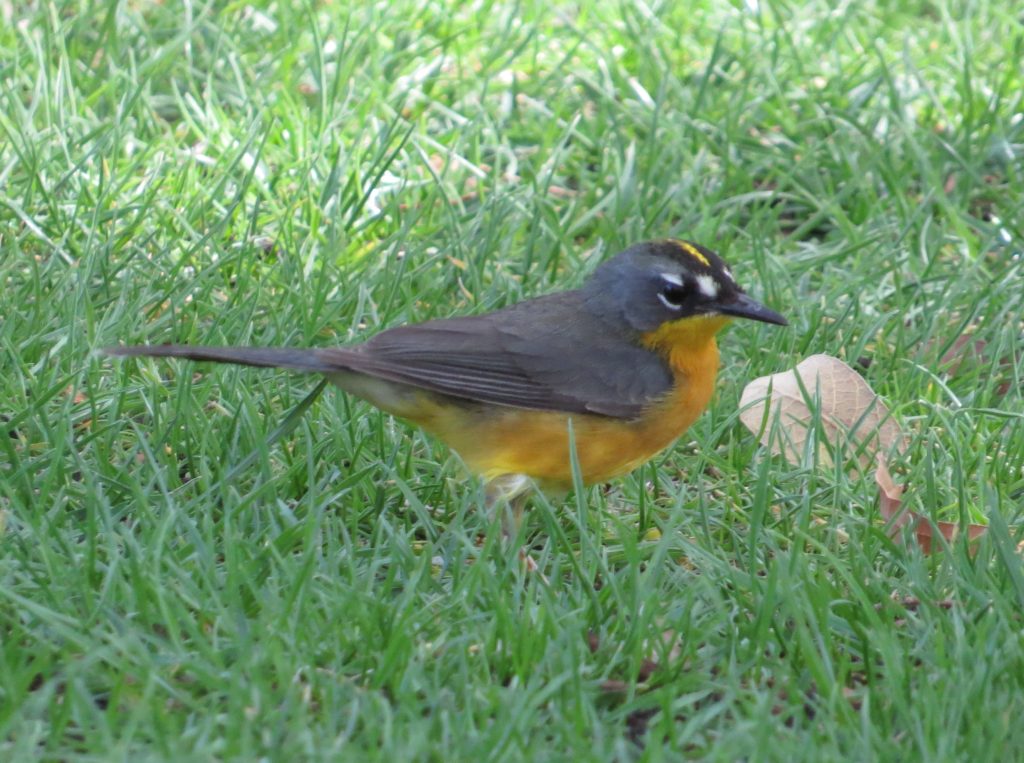 If the Fan-tailed Warbler weren’t enough, the regulars of Rick’s yard were worthy of their own awe. The place was positively buzzing with bird activity. Among the many species of birds were a couple more lifers for me, the bulky Blue-throated Hummingbird and a Calliope Hummingbird. Both were quick sightings that didn’t allow for photos. This gorgeous male Scott’s Oriole was cooperative, though. It was a nice redemptive photo from my lifer butt-shot in Hunter Canyon a few years ago.
If the Fan-tailed Warbler weren’t enough, the regulars of Rick’s yard were worthy of their own awe. The place was positively buzzing with bird activity. Among the many species of birds were a couple more lifers for me, the bulky Blue-throated Hummingbird and a Calliope Hummingbird. Both were quick sightings that didn’t allow for photos. This gorgeous male Scott’s Oriole was cooperative, though. It was a nice redemptive photo from my lifer butt-shot in Hunter Canyon a few years ago.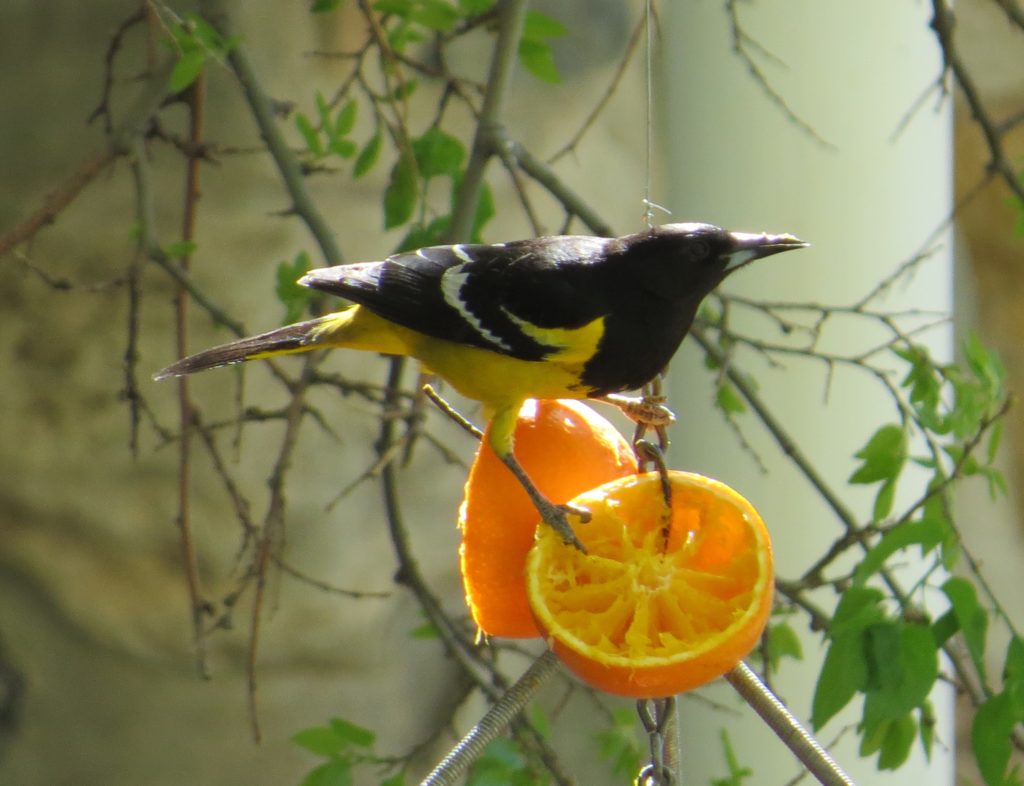 While we were at Rick’s yard visiting with Rick and his wife, there was another young birder there from New Mexico. I forget his name, but it was this kid’s 14th birthday, and his parents had driven him several hundred miles for his birthday to see this mega rarity. Cool parents, huh? The kid was no slouch birder either as he was identifying birds left and right. In fact, as we were leaving, he spotted two raptors overhead and announced they were Zone-tailed Hawks! That was a lifer for Steve and me and one that we were hoping for.
While we were at Rick’s yard visiting with Rick and his wife, there was another young birder there from New Mexico. I forget his name, but it was this kid’s 14th birthday, and his parents had driven him several hundred miles for his birthday to see this mega rarity. Cool parents, huh? The kid was no slouch birder either as he was identifying birds left and right. In fact, as we were leaving, he spotted two raptors overhead and announced they were Zone-tailed Hawks! That was a lifer for Steve and me and one that we were hoping for.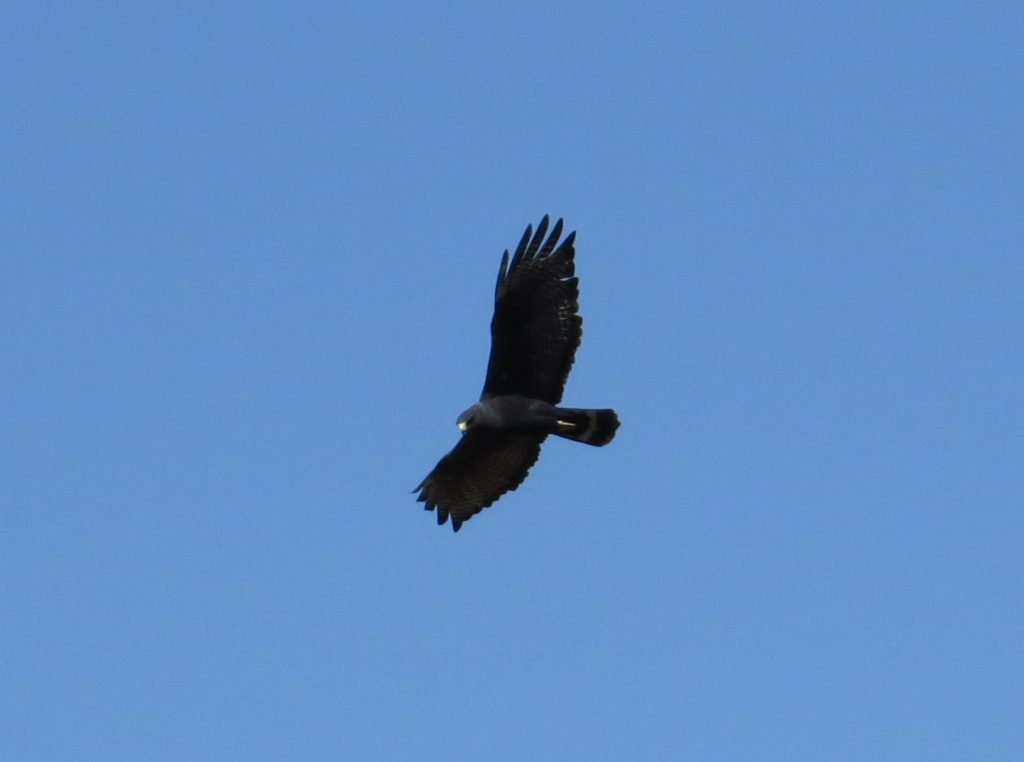 With one Mexican Warbler under our belts, it was time to go after another that had been showing in the Chiricahuas, the Slate-throated Redstart. I had tried for this ABA Code-3 a few years ago in Hunter Canyon. We barely had enough daylight to get all the way up and over the Chiris to Pinery Canyon where it had been seen. The views along the way were spectacular even if the road was a bit stressful with its curves and steep drop-offs. I’m glad Steve was driving.
With one Mexican Warbler under our belts, it was time to go after another that had been showing in the Chiricahuas, the Slate-throated Redstart. I had tried for this ABA Code-3 a few years ago in Hunter Canyon. We barely had enough daylight to get all the way up and over the Chiris to Pinery Canyon where it had been seen. The views along the way were spectacular even if the road was a bit stressful with its curves and steep drop-offs. I’m glad Steve was driving.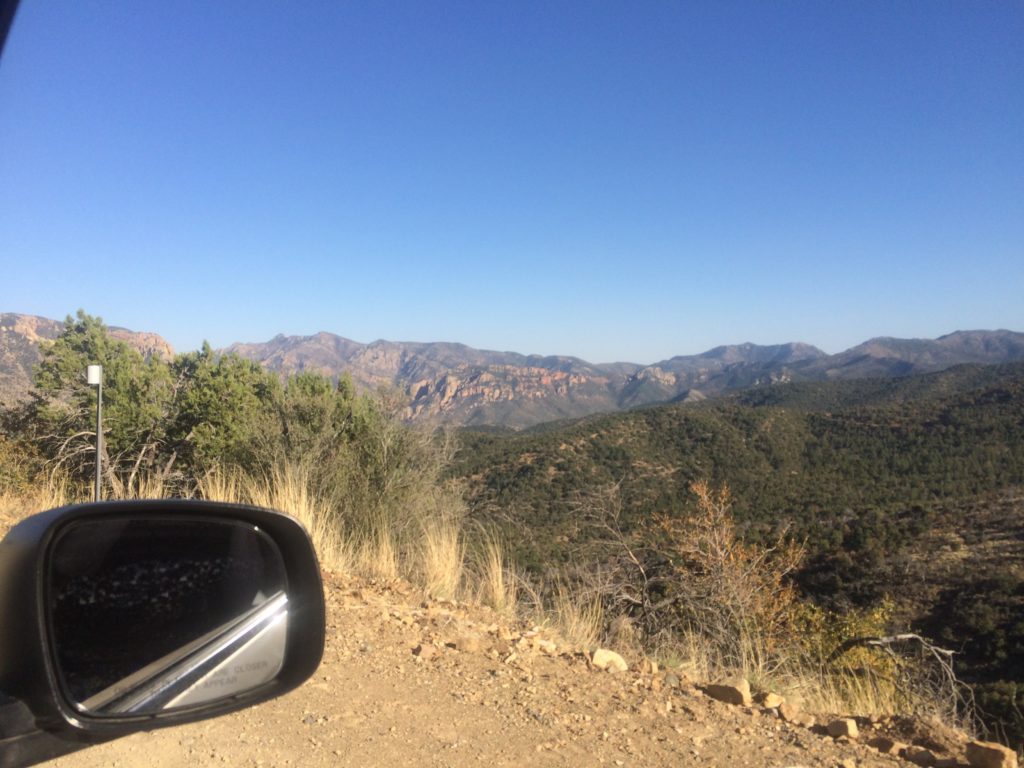
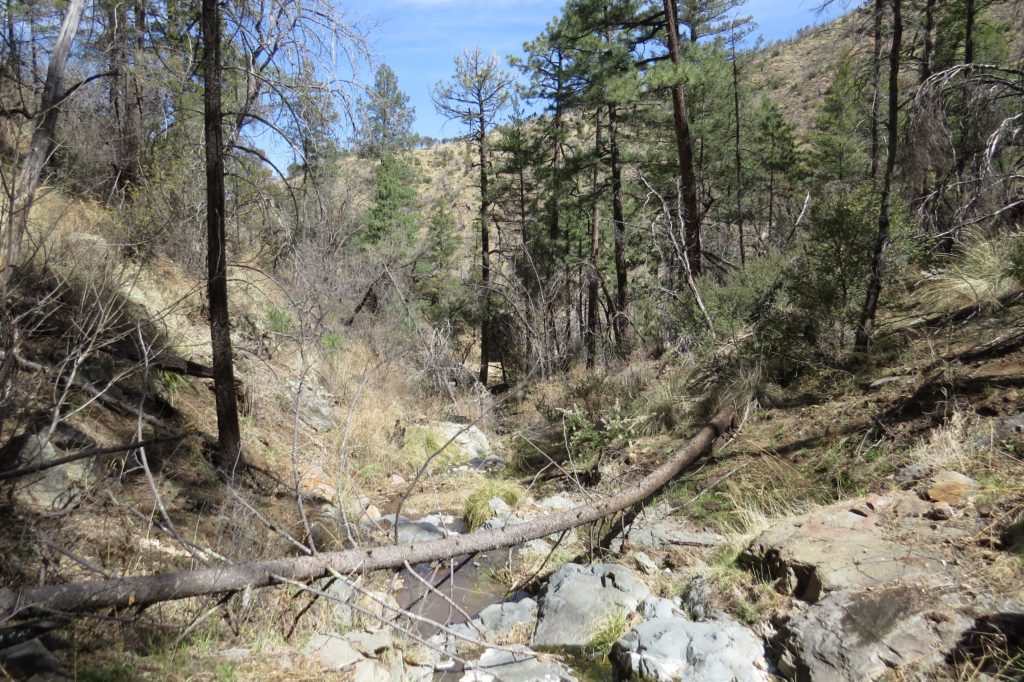
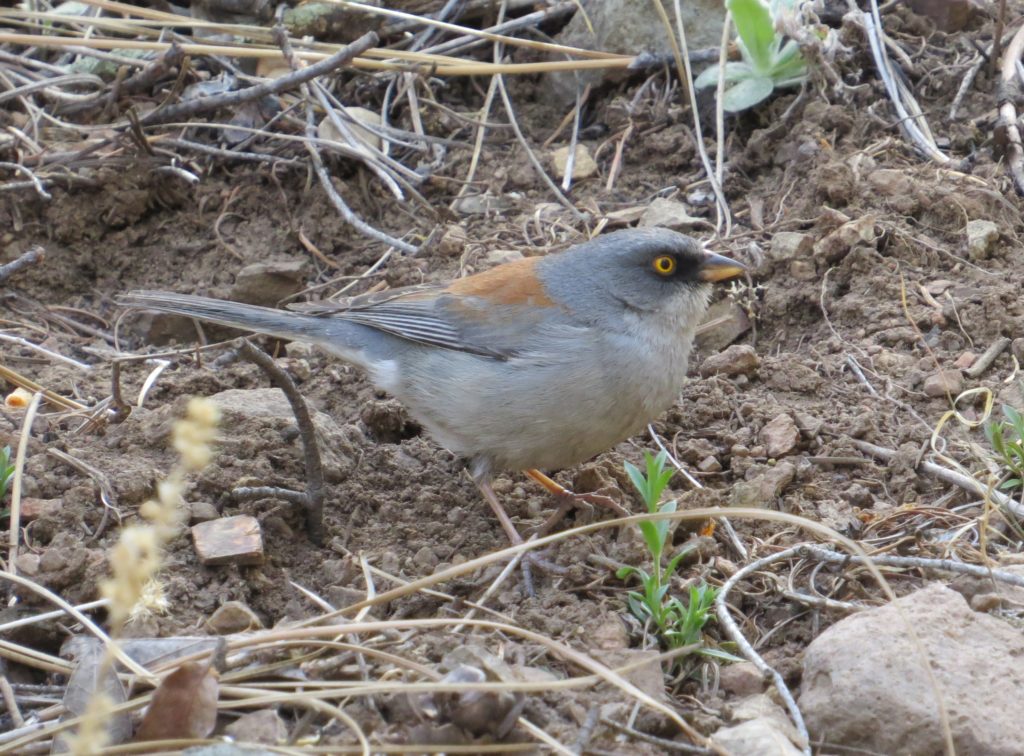
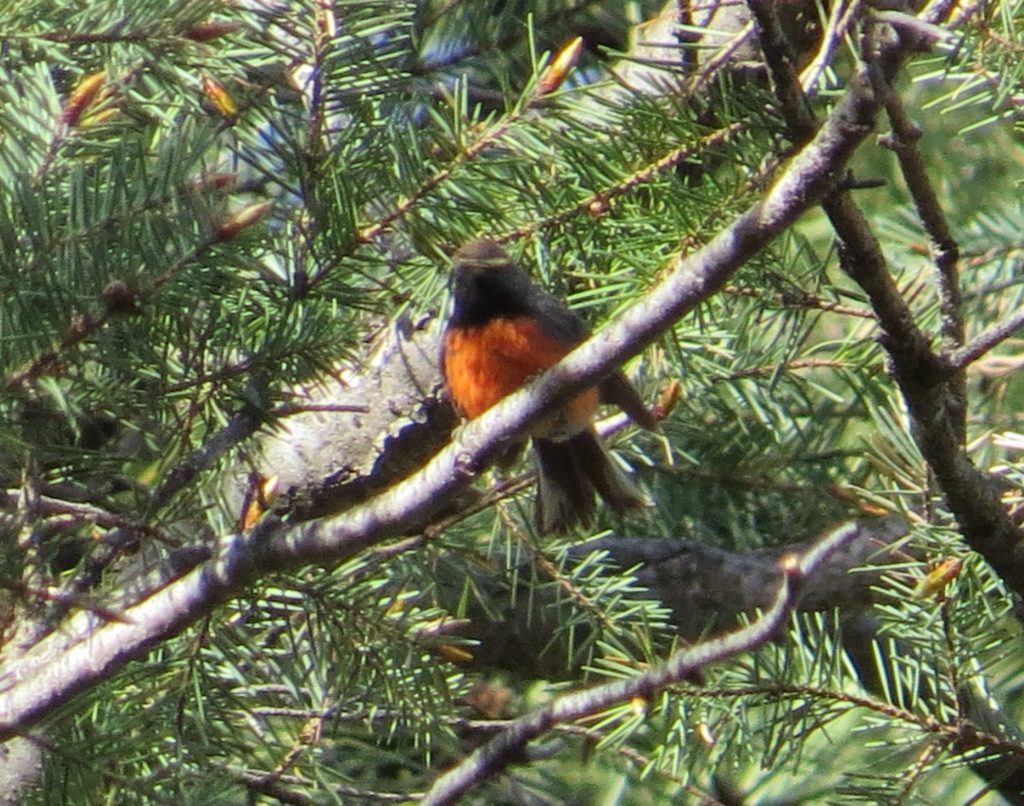
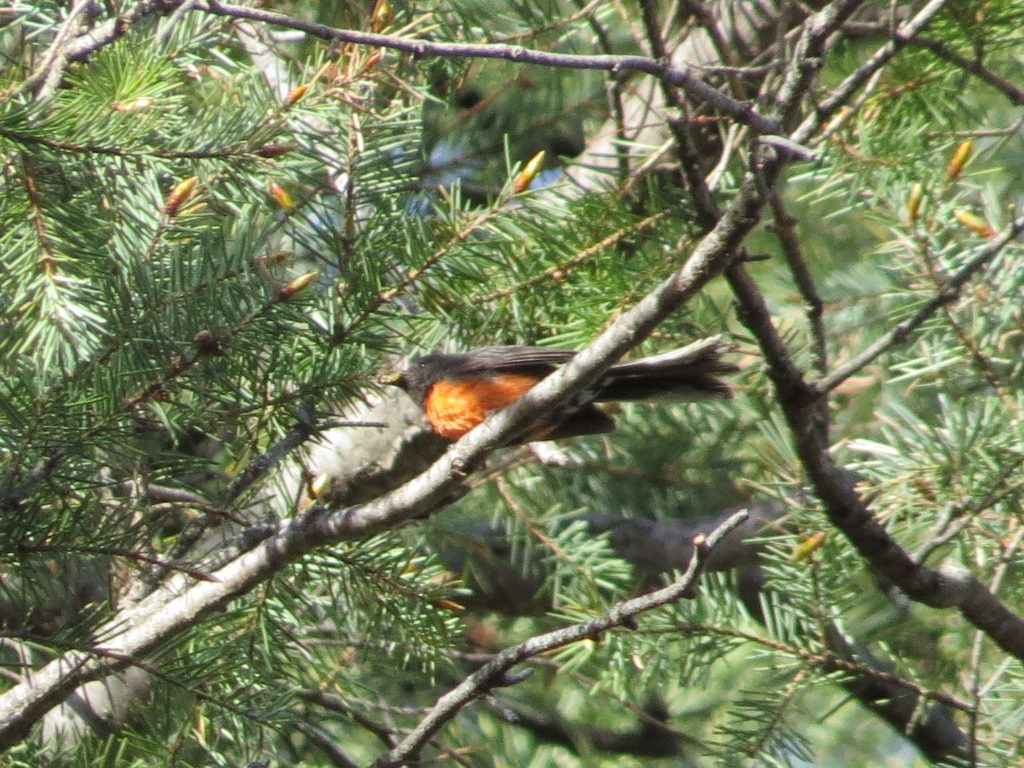
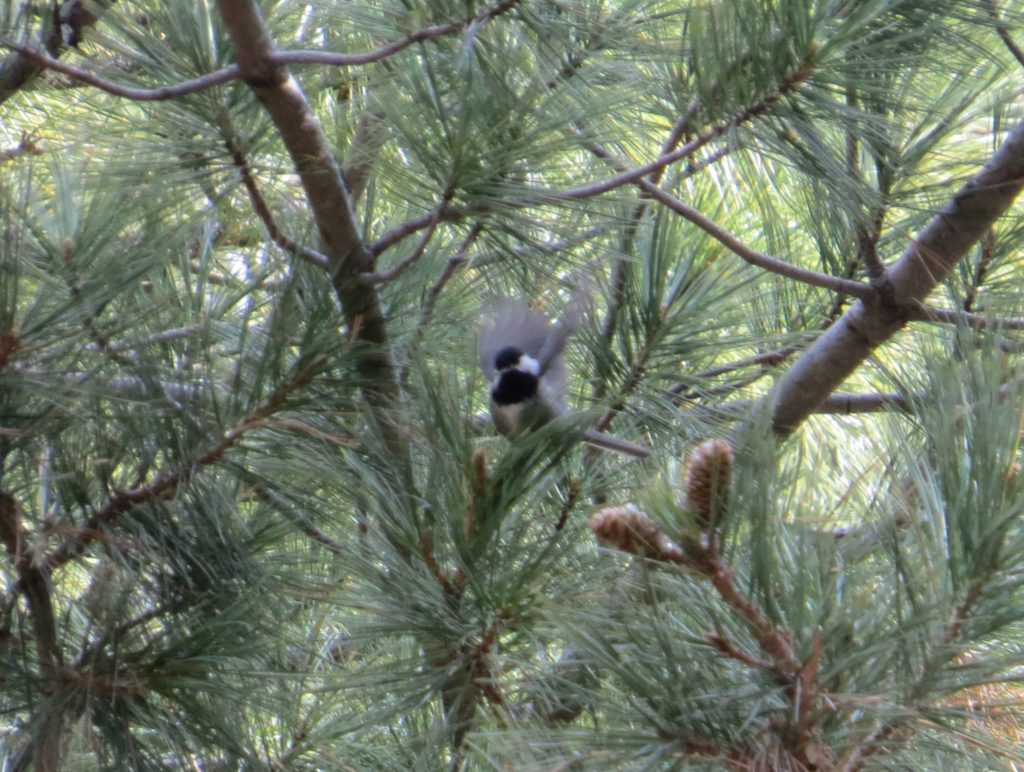 When you are literally on top of the world and have seen the Mexican Chickadee (and all kinds of other crazy good birds), a celebratory selfie is in order.
When you are literally on top of the world and have seen the Mexican Chickadee (and all kinds of other crazy good birds), a celebratory selfie is in order.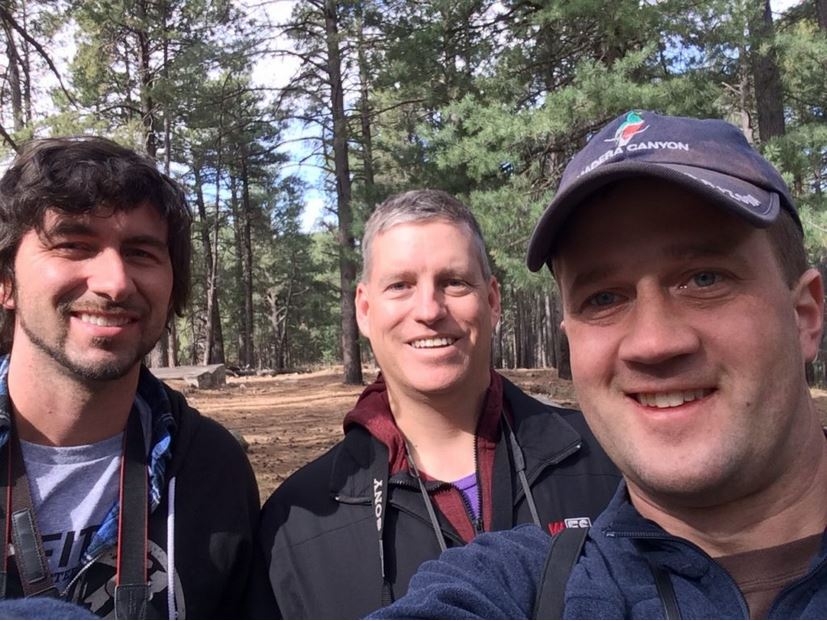
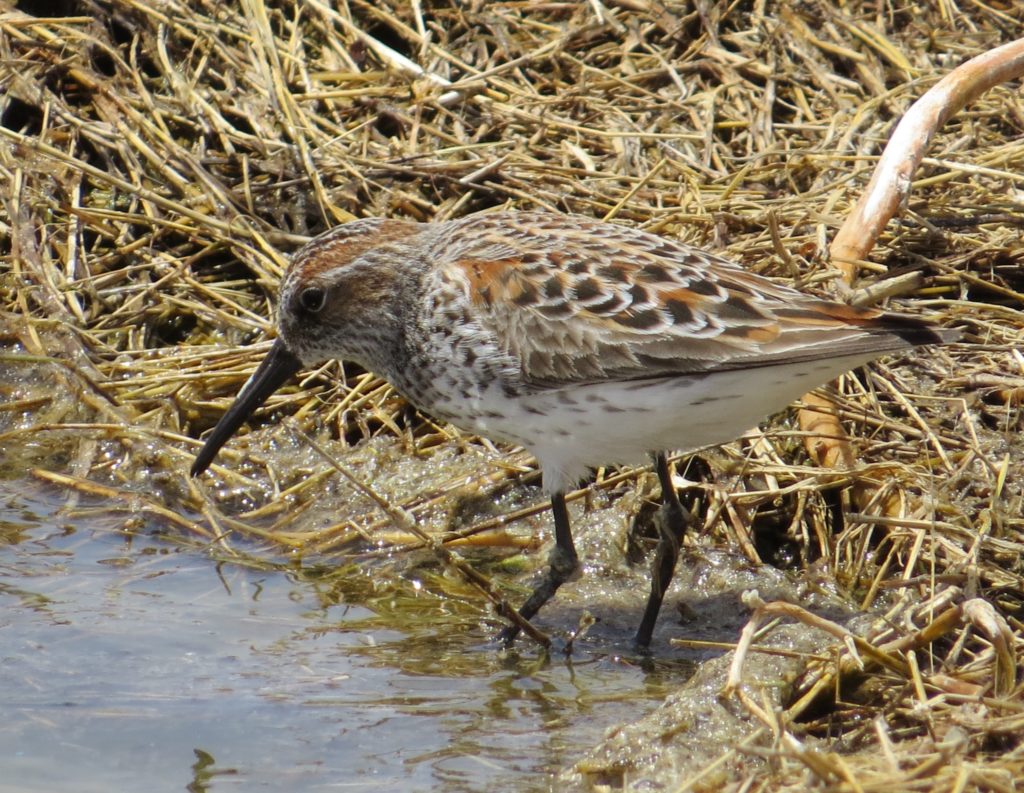 Cinnamon Teal never get old to this birder, and they were quite cooperative in Willcox as well.
Cinnamon Teal never get old to this birder, and they were quite cooperative in Willcox as well.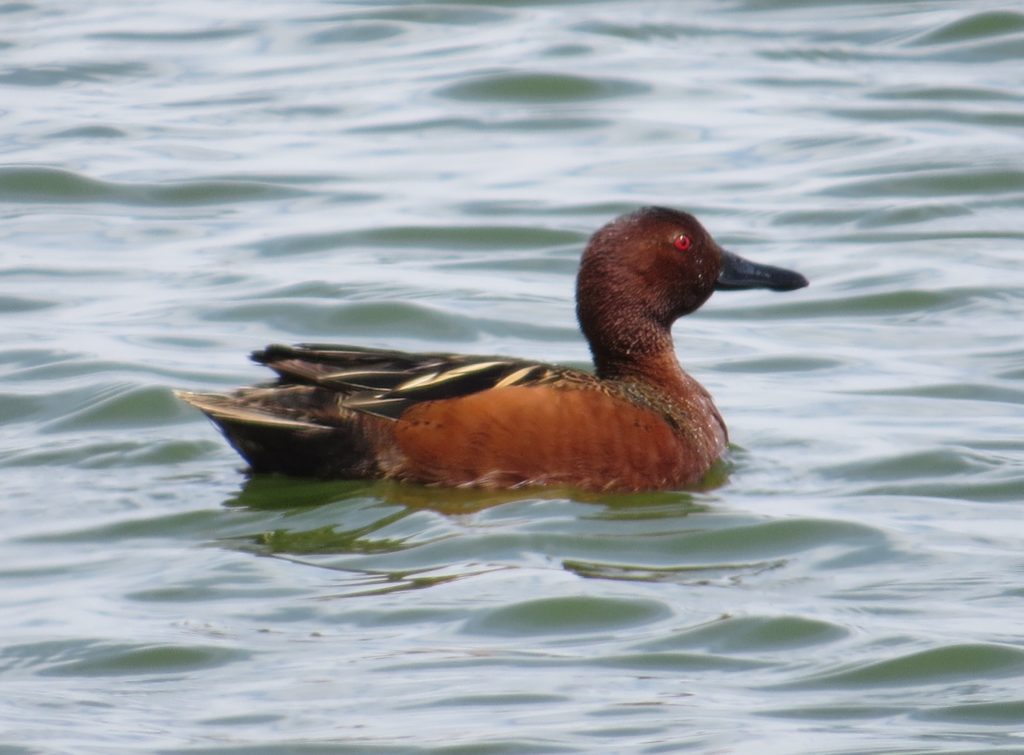 The trip was really over at this point. Steve and I had a flight to catch. That didn’t mean there wasn’t time to make one quick stop when we got close to my parents’ house in Maricopa. Tommy spotted this Burrowing Owl.
The trip was really over at this point. Steve and I had a flight to catch. That didn’t mean there wasn’t time to make one quick stop when we got close to my parents’ house in Maricopa. Tommy spotted this Burrowing Owl.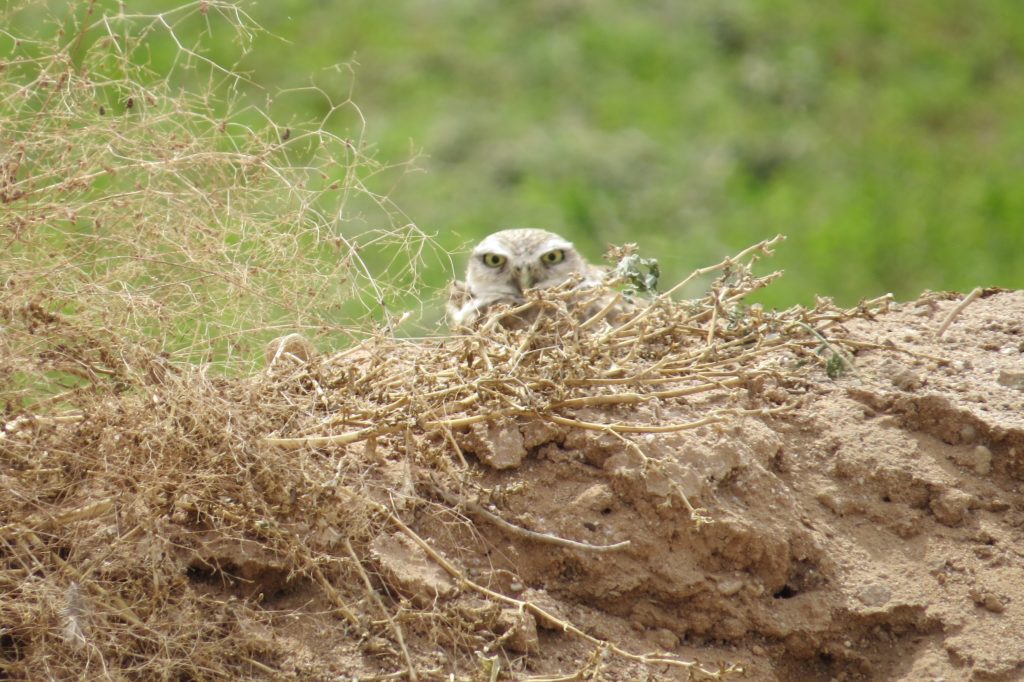
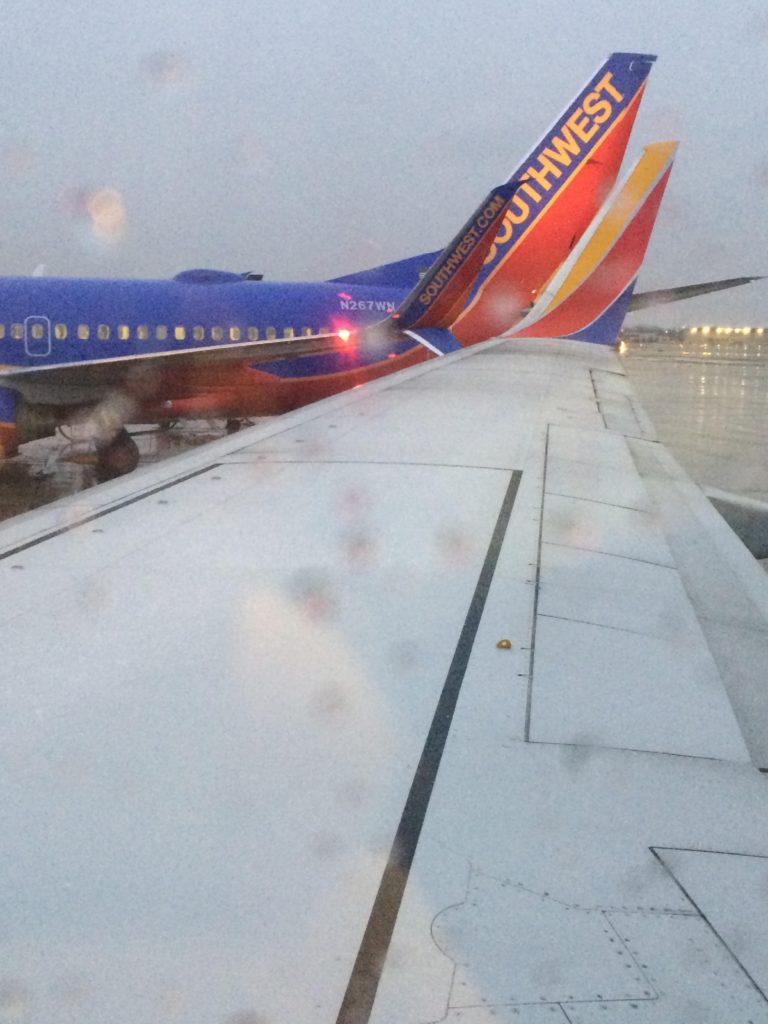
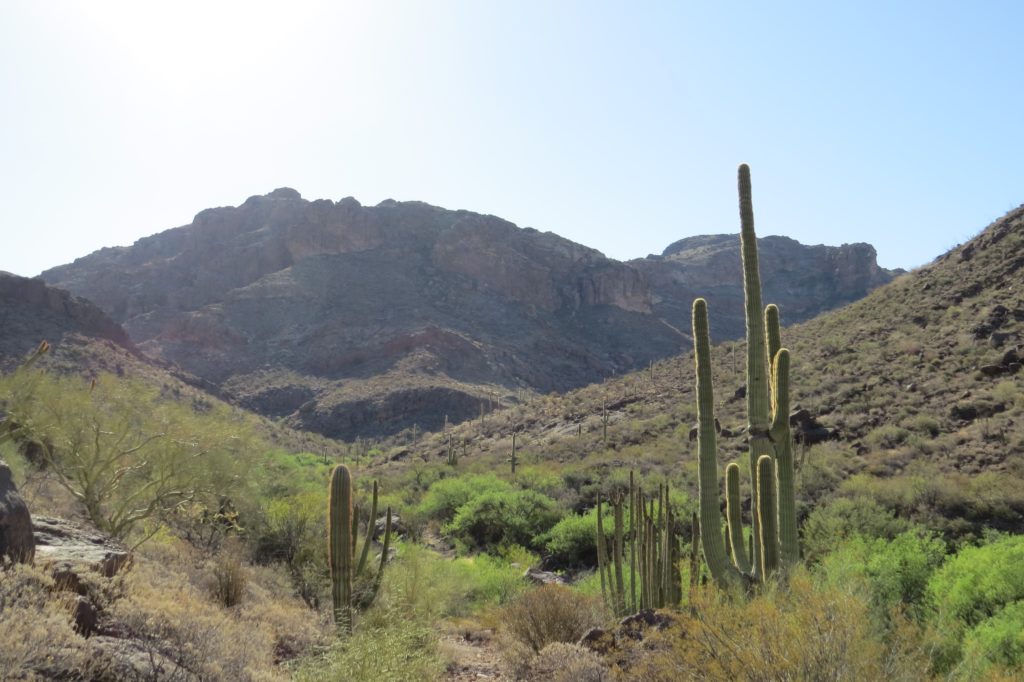 Owls aside, I think Steve and I were just enjoying not being in a blizzard. Our sympathies for our families back home were quickly eclipsed by the beautiful weather we were enjoying. We picked a great weekend to be in southern Arizona.
Owls aside, I think Steve and I were just enjoying not being in a blizzard. Our sympathies for our families back home were quickly eclipsed by the beautiful weather we were enjoying. We picked a great weekend to be in southern Arizona.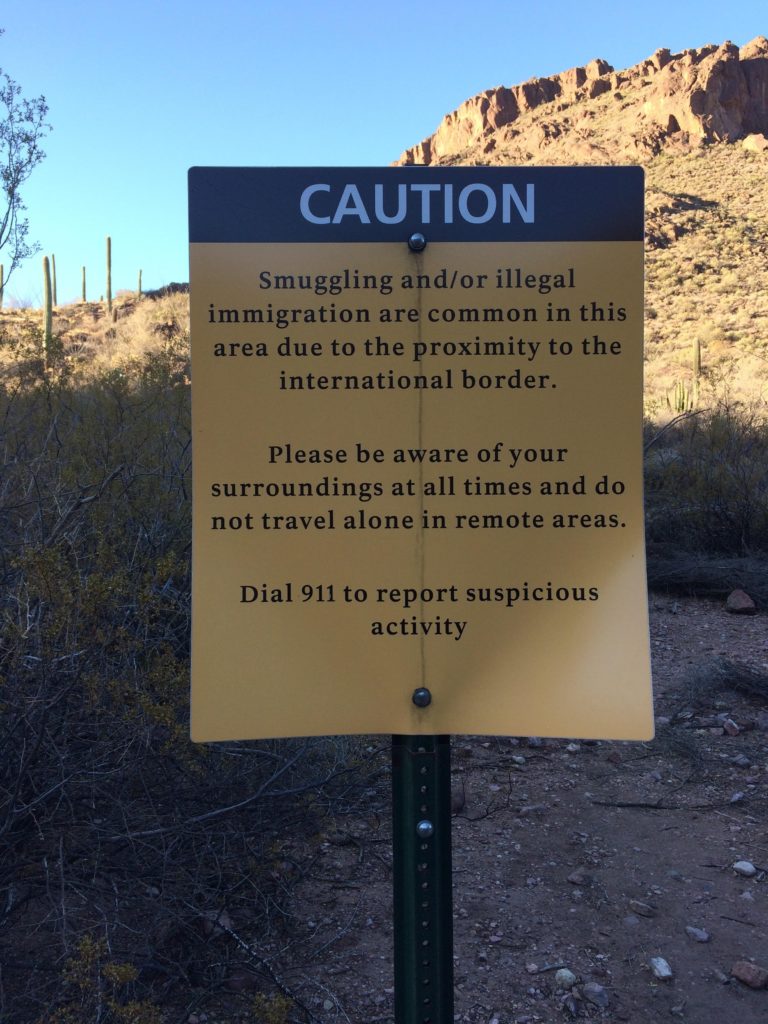
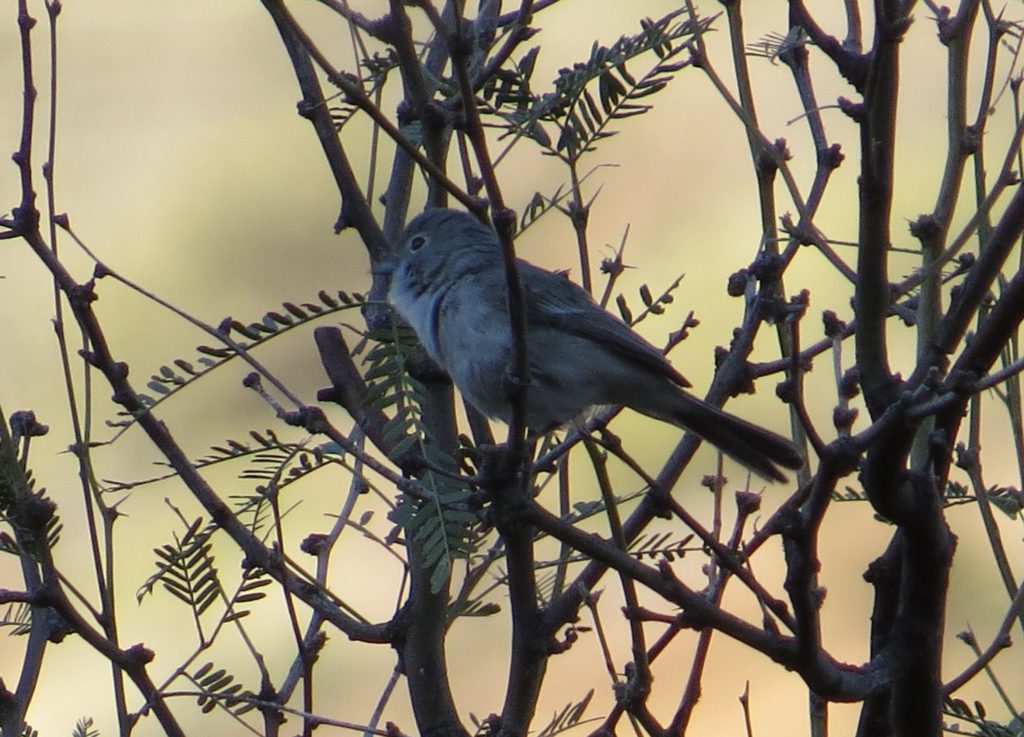 Not long after the Gray Vireo fun it was time to head back down canyon sans FEPO. A petty consolation came in the form of another Vireo lifer we missed on the way up, one of the Cassin’s variety.
Not long after the Gray Vireo fun it was time to head back down canyon sans FEPO. A petty consolation came in the form of another Vireo lifer we missed on the way up, one of the Cassin’s variety.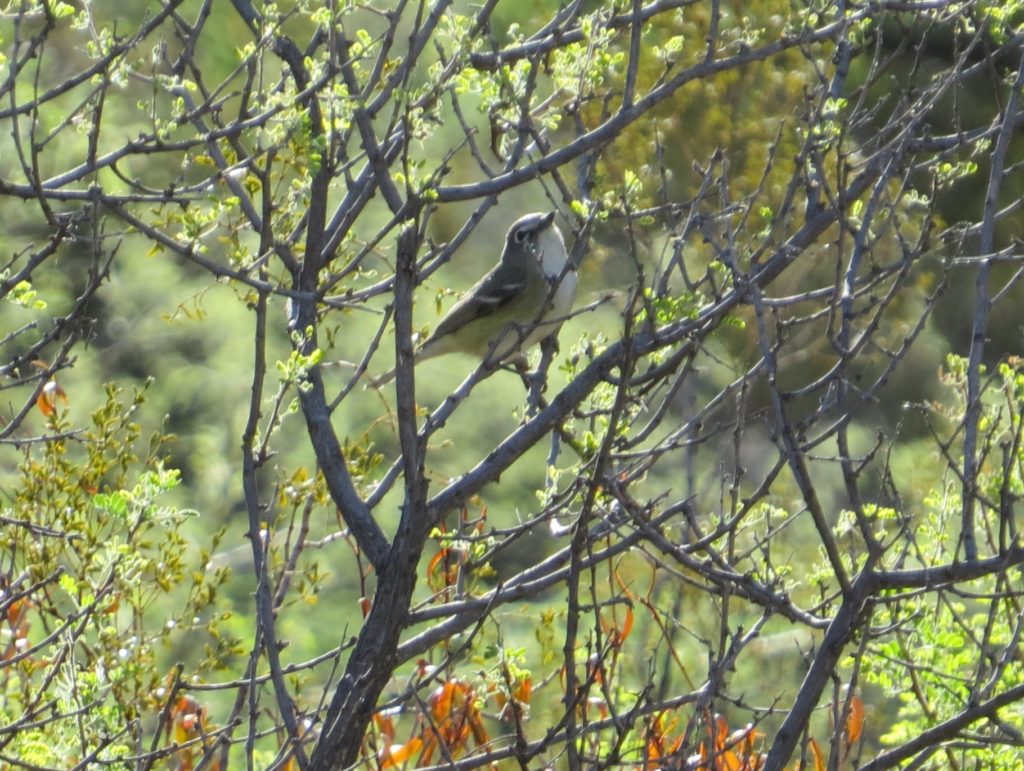
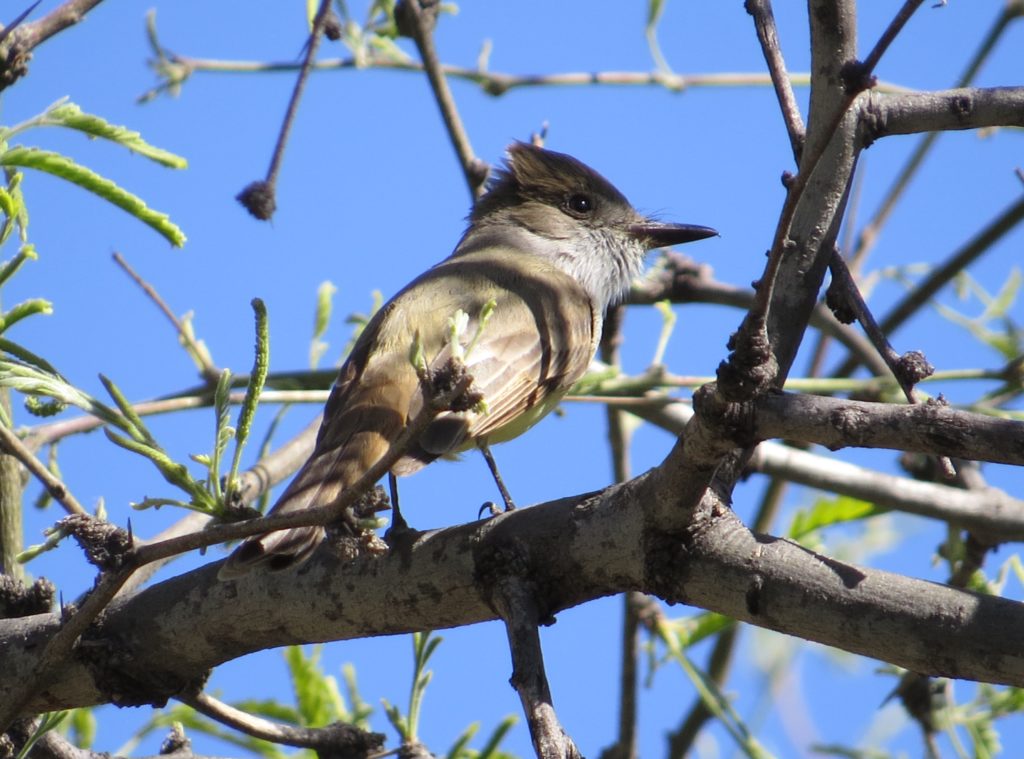
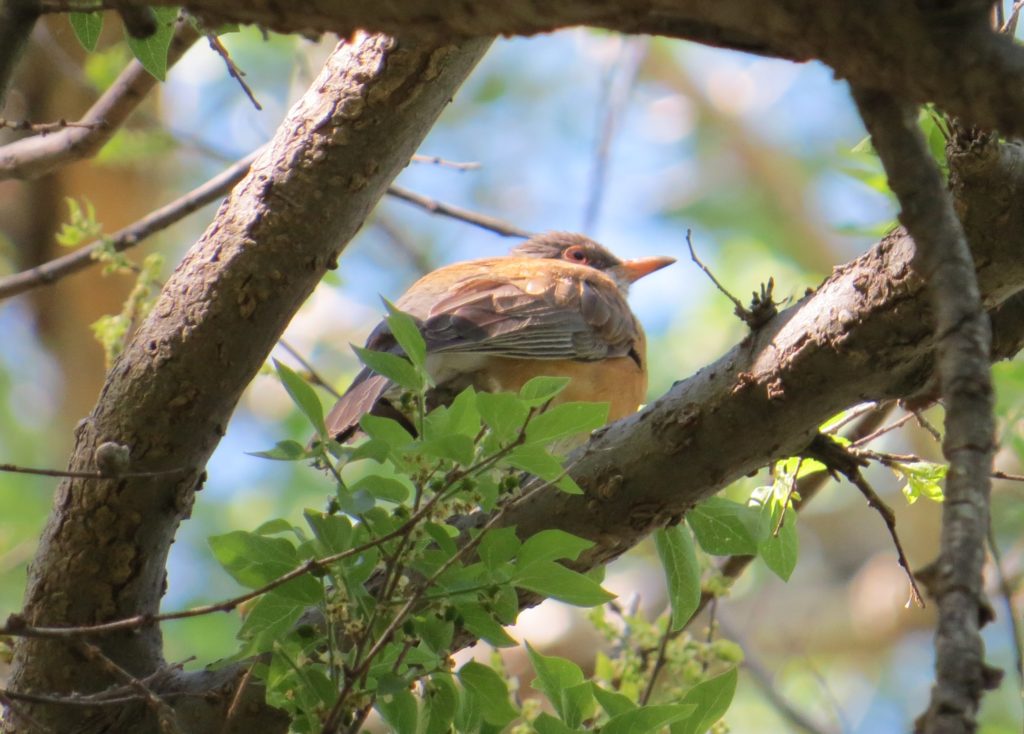
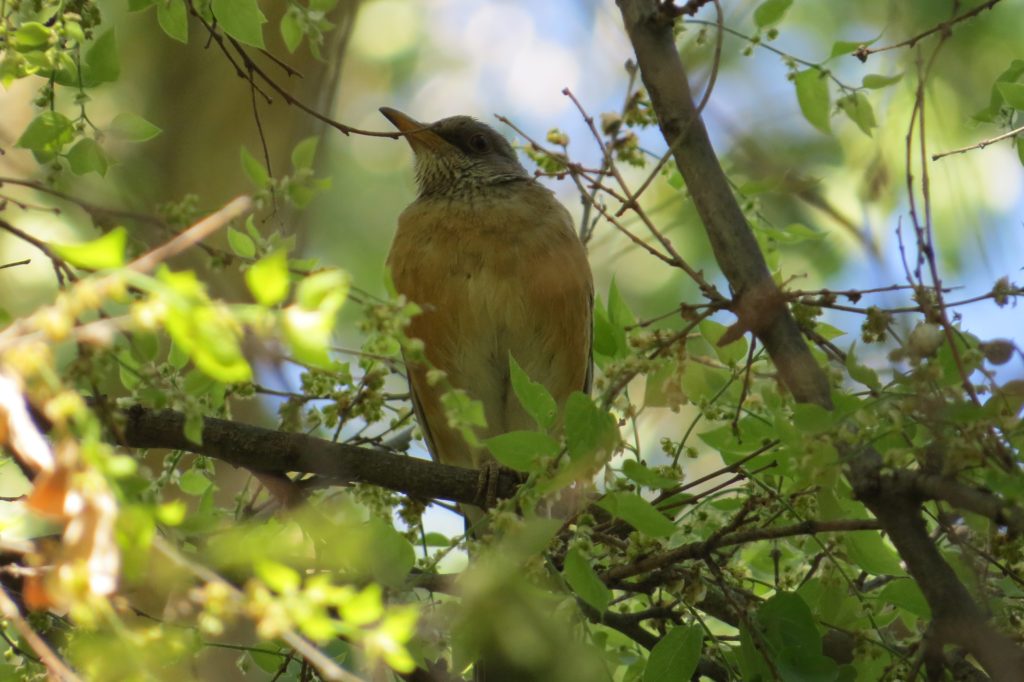
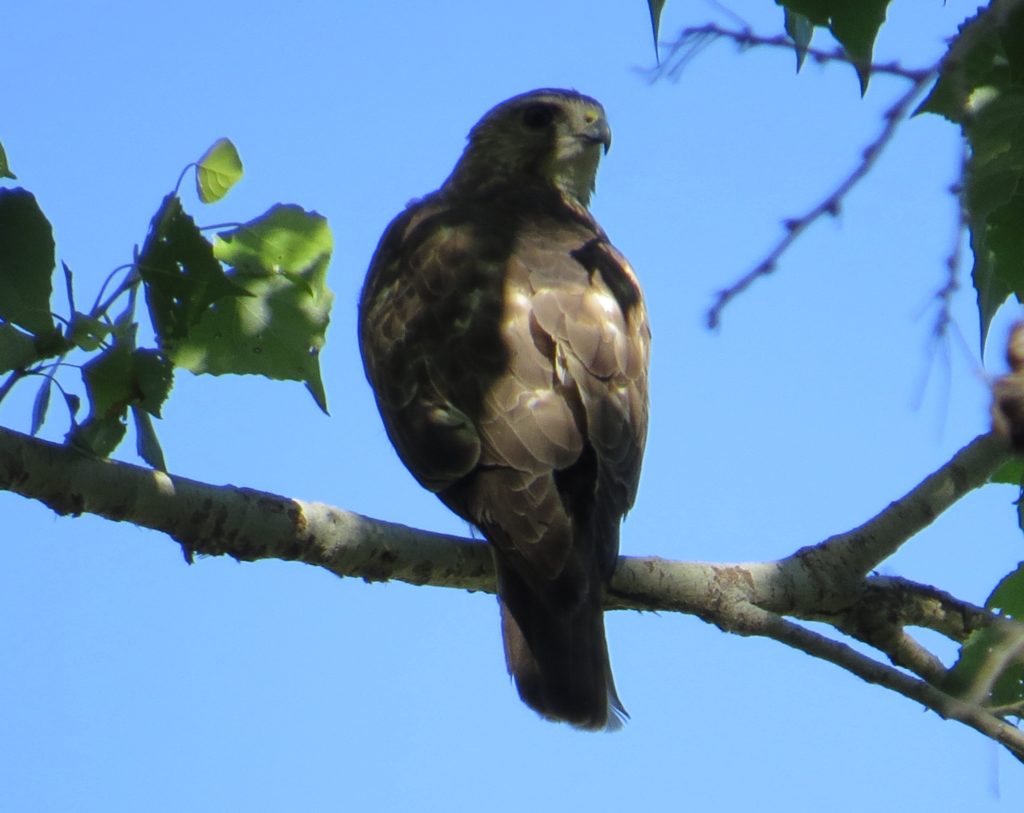 By this point in the afternoon, it was time we made our way to Madera Canyon. Not wanting to waste any burning daylight, we squeezed out every minute stopping briefly at Florida Canyon for Rufous-capped Warbler for Steve and Black-capped Gnatcatcher for both of us. Nada on those, but the effort was minimal. At least a Black-throated Gray Warbler was an nice lifer bonus for Steve. Next up was a stop at Proctor Road to try one more time for the Gnatcatcher. We did find a Gnatcatcher that was more Black-capped-like that Black-tailed, but the waning daylight and the bird’s fidgety behavior did not allow us to clinch the key field marks for an ID beyond a reasonable doubt. The regularity of this species makes it highly likely that it will eventually land on my list, just not this day.
By this point in the afternoon, it was time we made our way to Madera Canyon. Not wanting to waste any burning daylight, we squeezed out every minute stopping briefly at Florida Canyon for Rufous-capped Warbler for Steve and Black-capped Gnatcatcher for both of us. Nada on those, but the effort was minimal. At least a Black-throated Gray Warbler was an nice lifer bonus for Steve. Next up was a stop at Proctor Road to try one more time for the Gnatcatcher. We did find a Gnatcatcher that was more Black-capped-like that Black-tailed, but the waning daylight and the bird’s fidgety behavior did not allow us to clinch the key field marks for an ID beyond a reasonable doubt. The regularity of this species makes it highly likely that it will eventually land on my list, just not this day.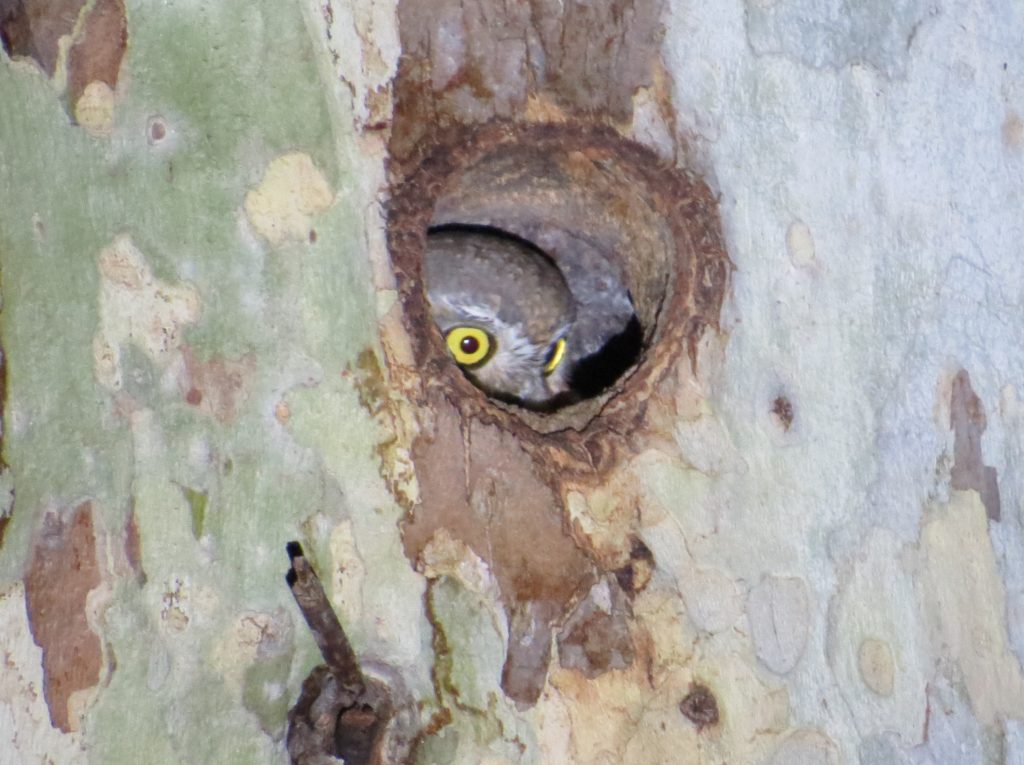
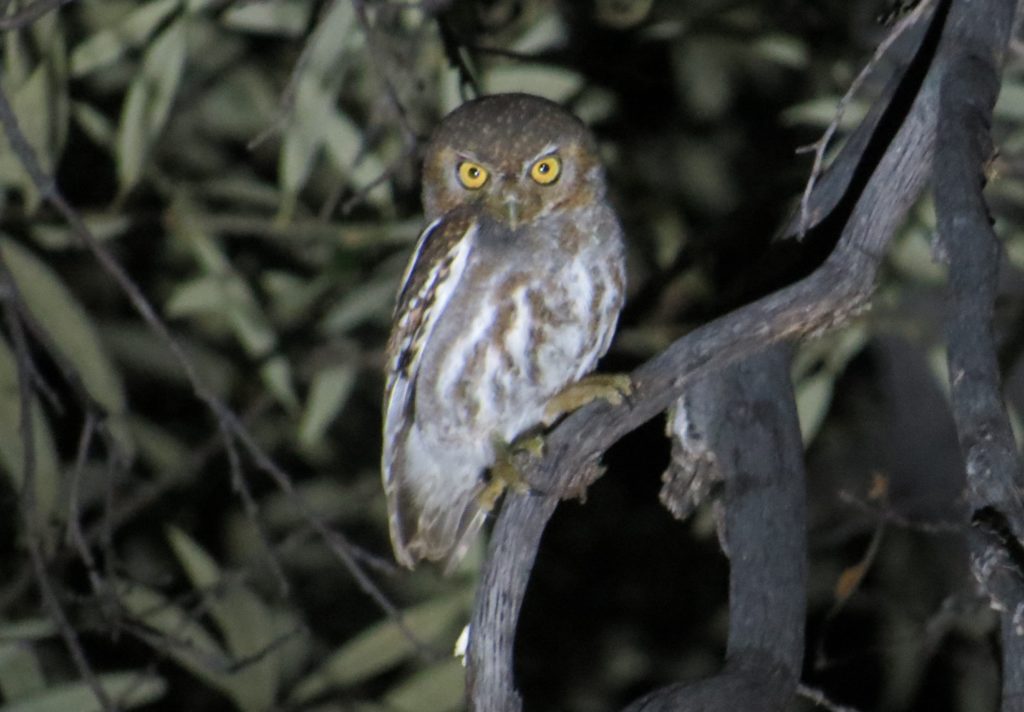

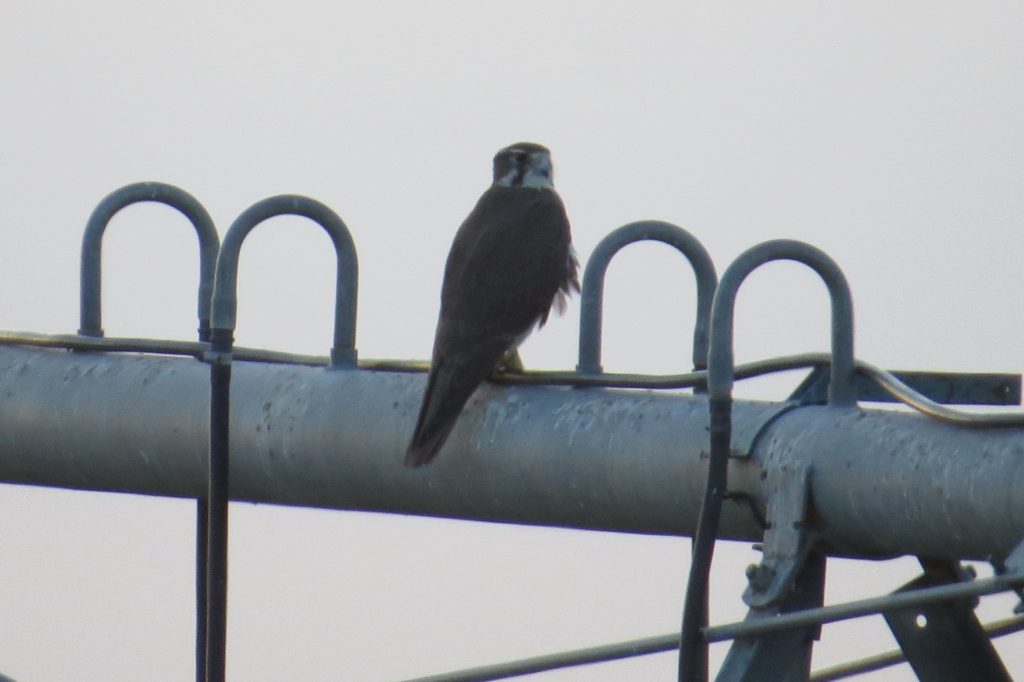 My clean-up operations are not haphazard–my strategy is to try to go after anything rare first and save the most common for later if need be. One of those rarities was the Rufous-backed Robin. This past winter was exceptional for this species with many records popping up in AZ. So that next day, my friend Gordon Karre took me on a mini-outing to stake out a gorgeous backyard in Paradise Valley to hopefully get one of two Robins that had been eating the berries of pyracantha bushes. The problem was that time and berries had run out for this particular Robin pair. We dipped.
My clean-up operations are not haphazard–my strategy is to try to go after anything rare first and save the most common for later if need be. One of those rarities was the Rufous-backed Robin. This past winter was exceptional for this species with many records popping up in AZ. So that next day, my friend Gordon Karre took me on a mini-outing to stake out a gorgeous backyard in Paradise Valley to hopefully get one of two Robins that had been eating the berries of pyracantha bushes. The problem was that time and berries had run out for this particular Robin pair. We dipped.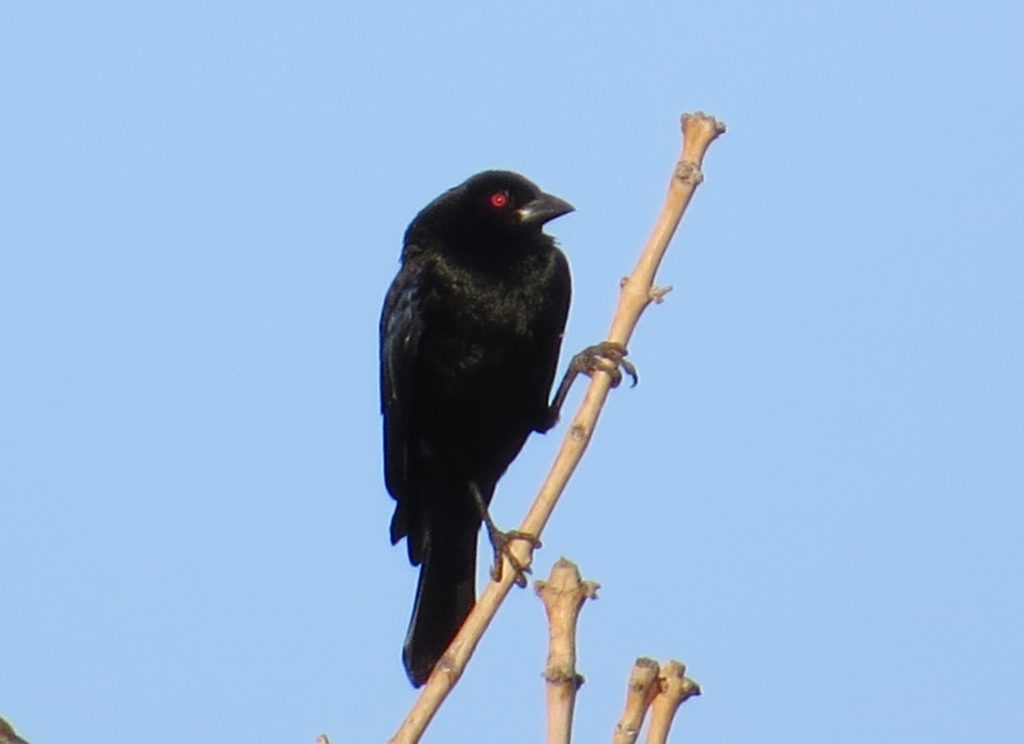 With that target achieved, the birding was put on hold until the next morning where Gordon, my Dad, and I would follow the same strategy–go after a key rarity and snag as many other lifers along the way. That rarity was the Ruddy Ground-Dove. Though we were going to originally go after one in the Phoenix area, it became a no-show just a couple days before the trip. We were then forced to go south to the Red Rock feedlot where several had been seen.
With that target achieved, the birding was put on hold until the next morning where Gordon, my Dad, and I would follow the same strategy–go after a key rarity and snag as many other lifers along the way. That rarity was the Ruddy Ground-Dove. Though we were going to originally go after one in the Phoenix area, it became a no-show just a couple days before the trip. We were then forced to go south to the Red Rock feedlot where several had been seen.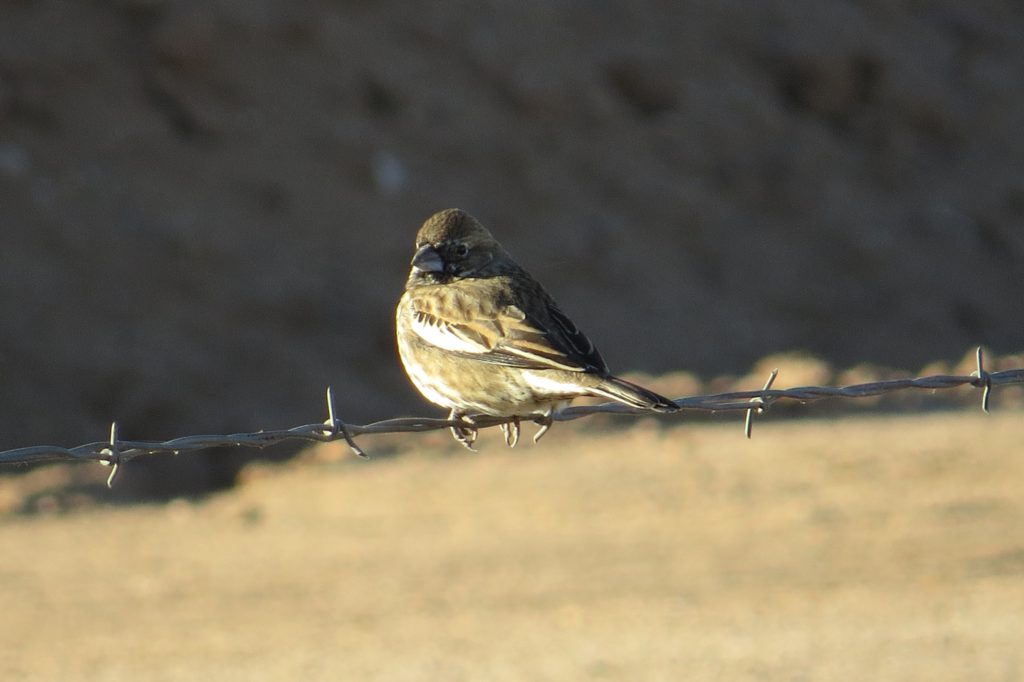 Finally we got on to the flock(!) of the rare Doves, finding five or six in all. Here are four of them with an Inca Dove that has identity issues, all huddling to keep warm on this chilly morning.
Finally we got on to the flock(!) of the rare Doves, finding five or six in all. Here are four of them with an Inca Dove that has identity issues, all huddling to keep warm on this chilly morning.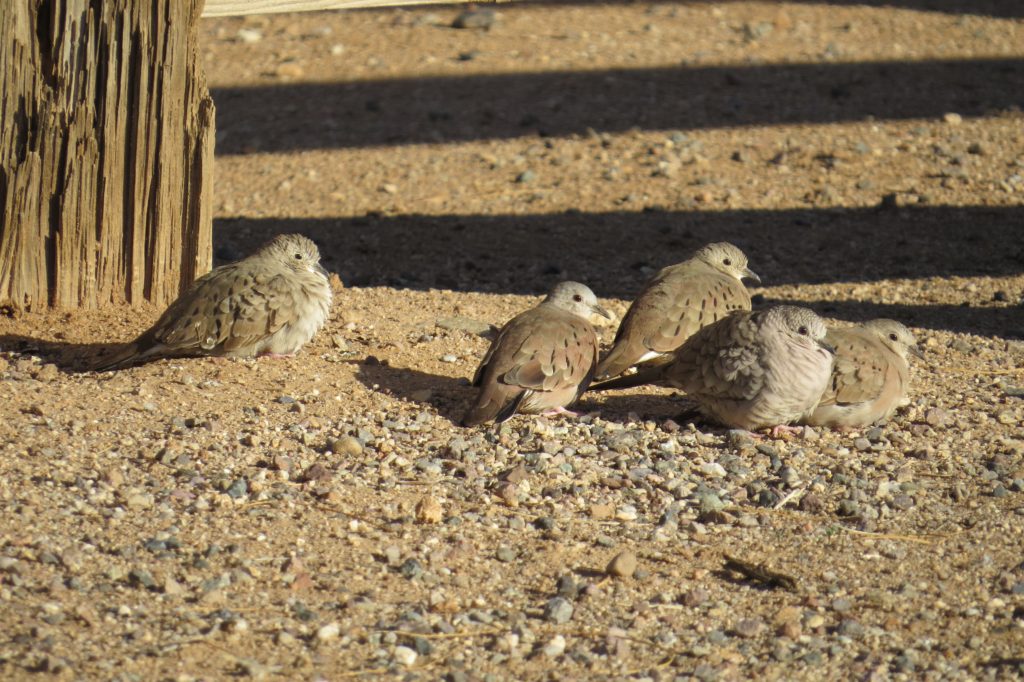
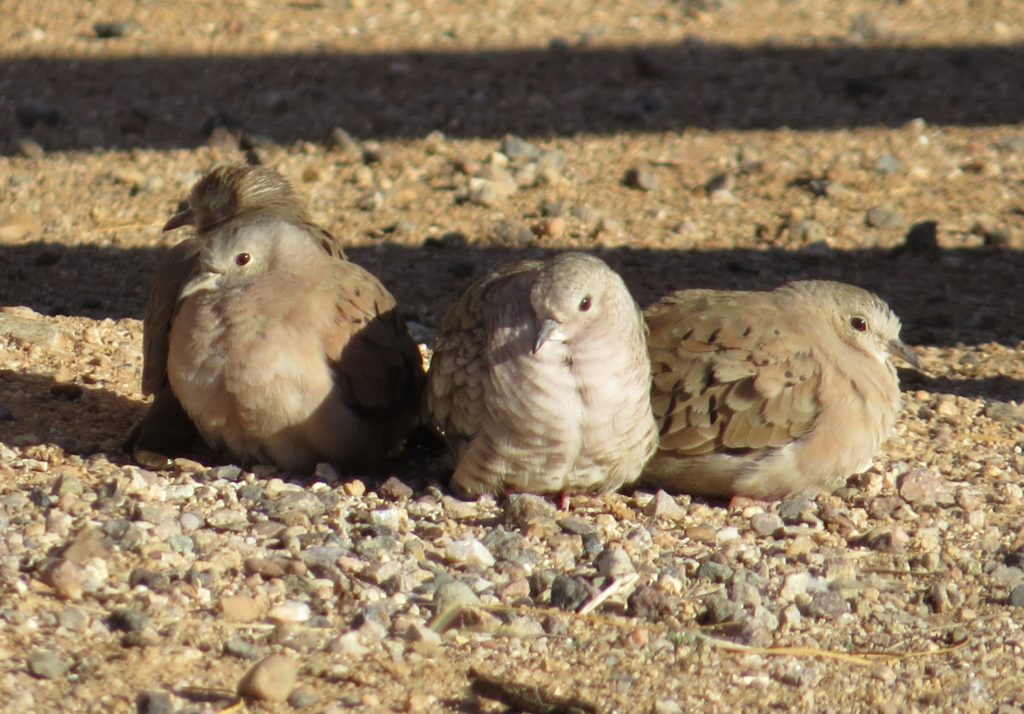
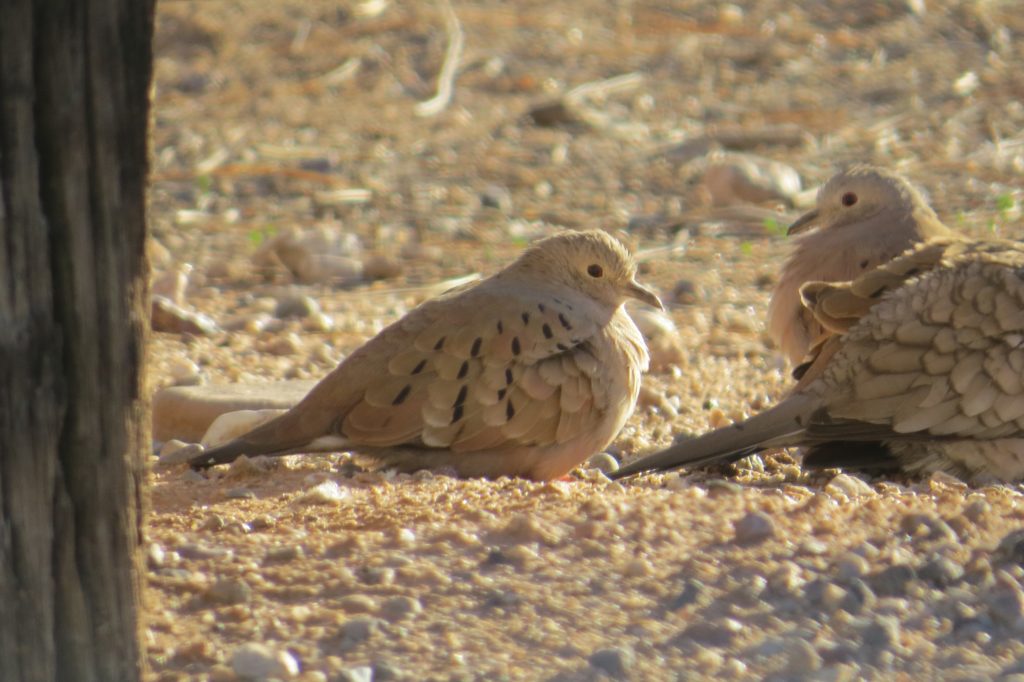
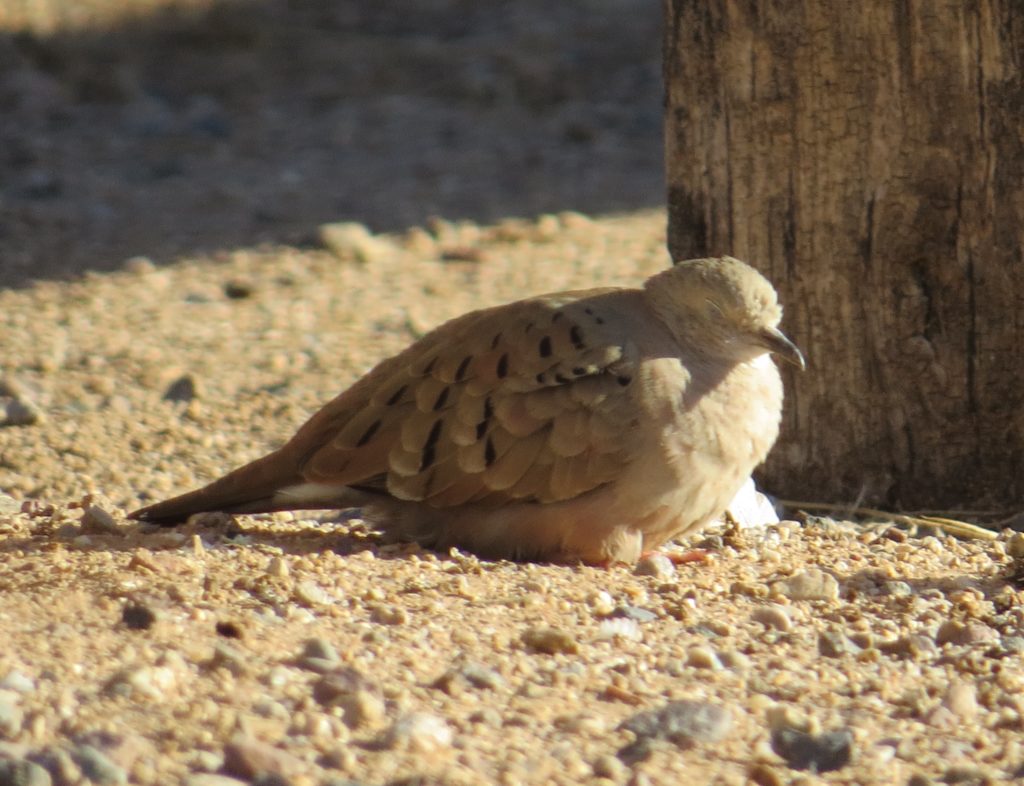 The plan was to cruise through the Santa Cruz Flats on the way home to try for two birds I had long been holding in reserve: Crested Caracara and Mountain Plover. The Santa Cruz Flats are fun place to bird where one can not only stumble across a Mark Ochs lifer but also see cool stuff like Harris’s Hawks.
The plan was to cruise through the Santa Cruz Flats on the way home to try for two birds I had long been holding in reserve: Crested Caracara and Mountain Plover. The Santa Cruz Flats are fun place to bird where one can not only stumble across a Mark Ochs lifer but also see cool stuff like Harris’s Hawks.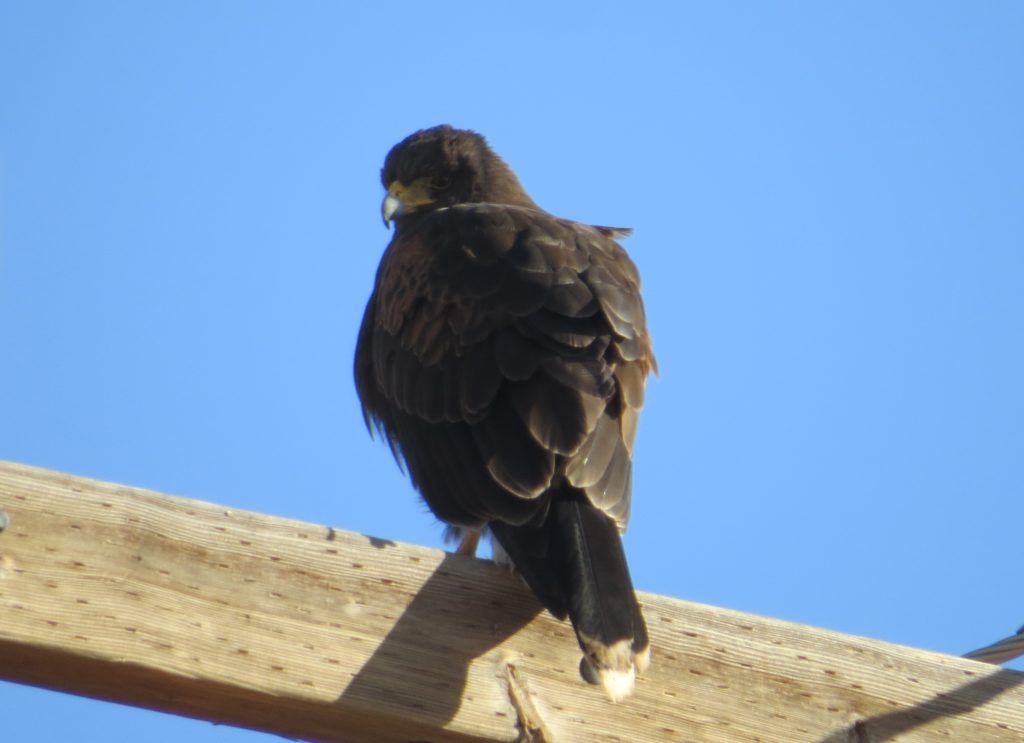
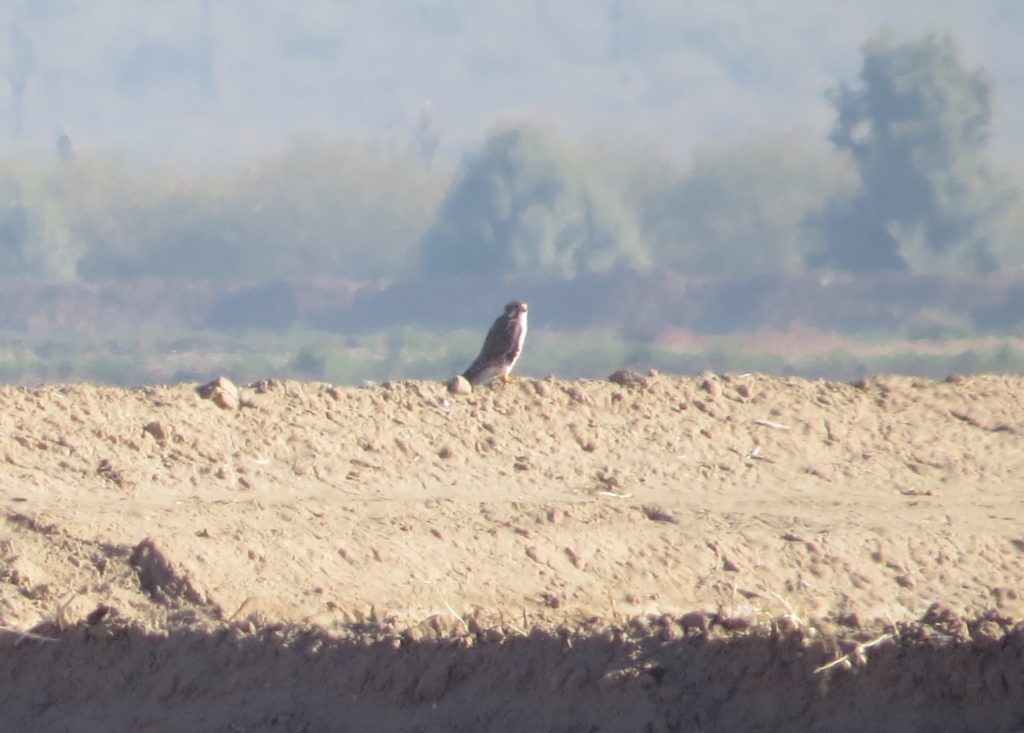 Then, thanks to our trusty guide, we finally got onto one of the two targets–a whole heap of Crested Caracaras.
Then, thanks to our trusty guide, we finally got onto one of the two targets–a whole heap of Crested Caracaras. 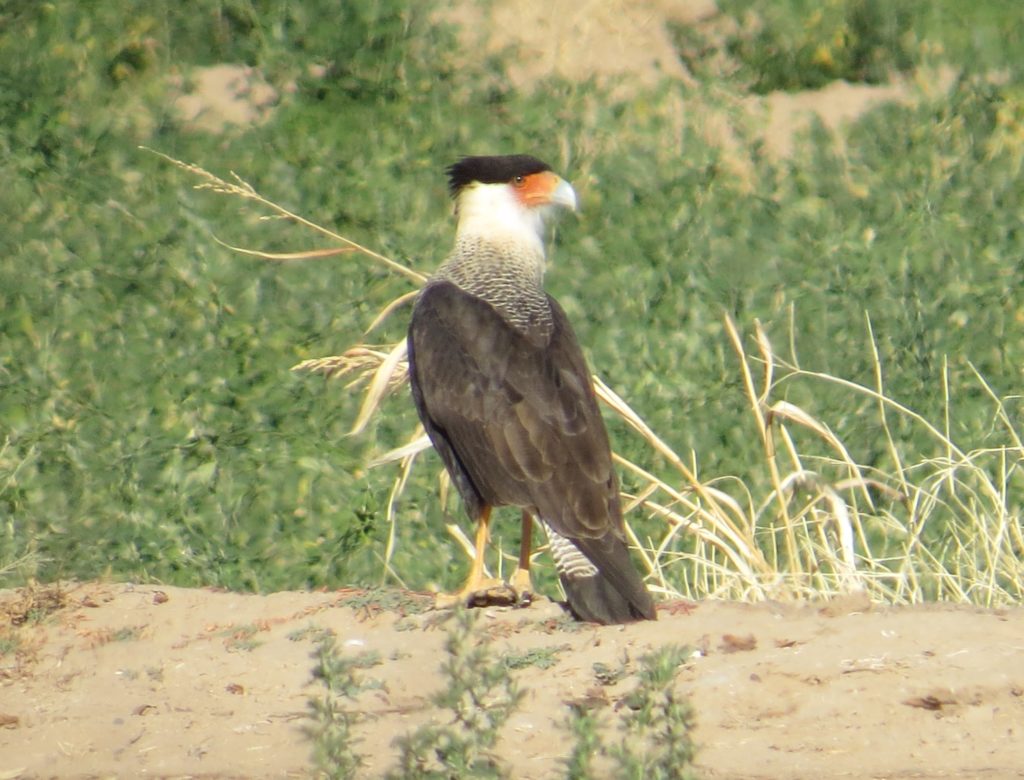
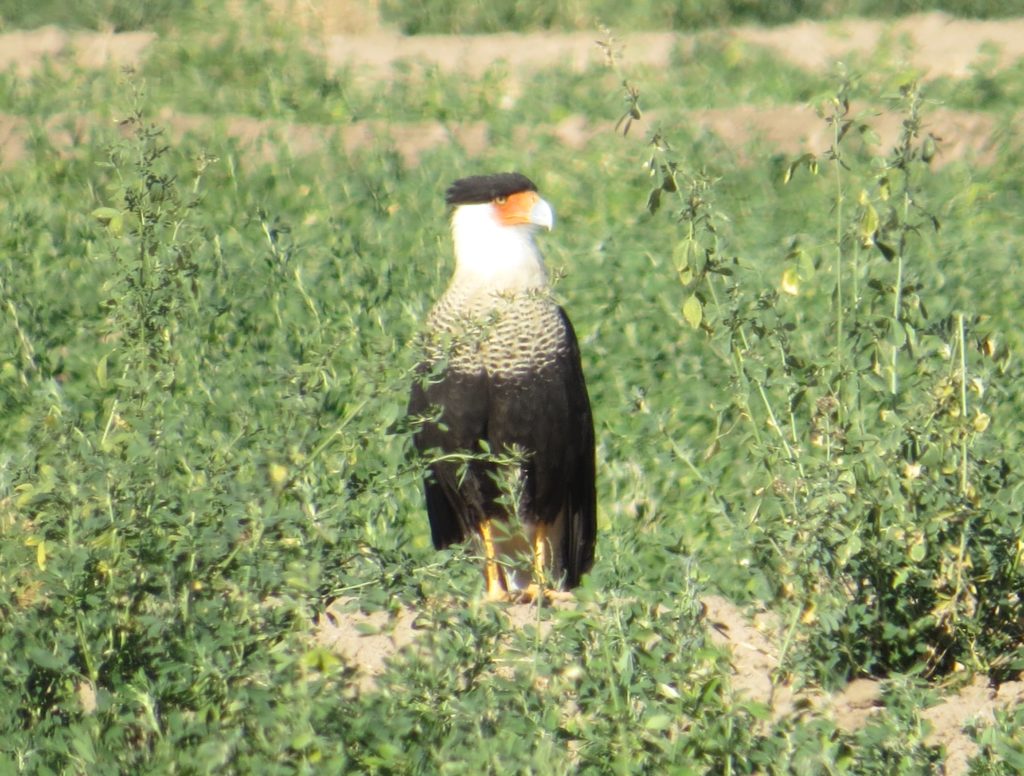 Not long after, Gordon had found us some Mountain Plovers.
Not long after, Gordon had found us some Mountain Plovers.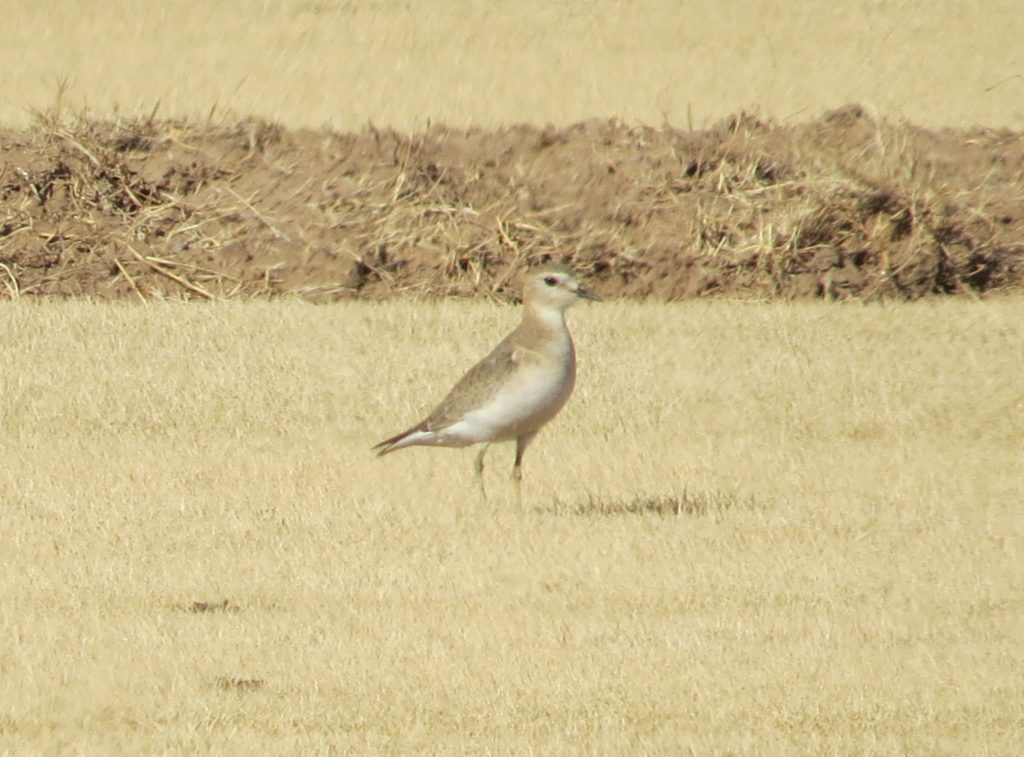
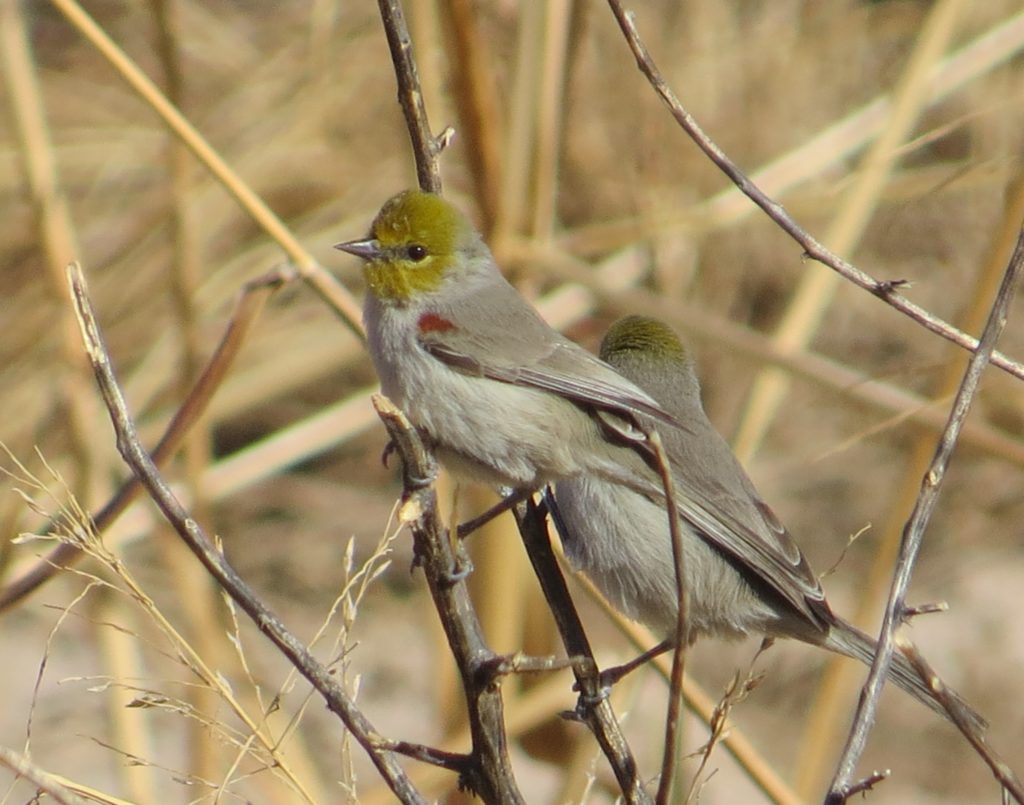 Some birds practically throw themselves at you when you’re just out walking in the neighborhood. Vermilion Flycatchers seem to be becoming more prolific in the area of Maricopa where Mom and Dad live. I don’t mind.
Some birds practically throw themselves at you when you’re just out walking in the neighborhood. Vermilion Flycatchers seem to be becoming more prolific in the area of Maricopa where Mom and Dad live. I don’t mind.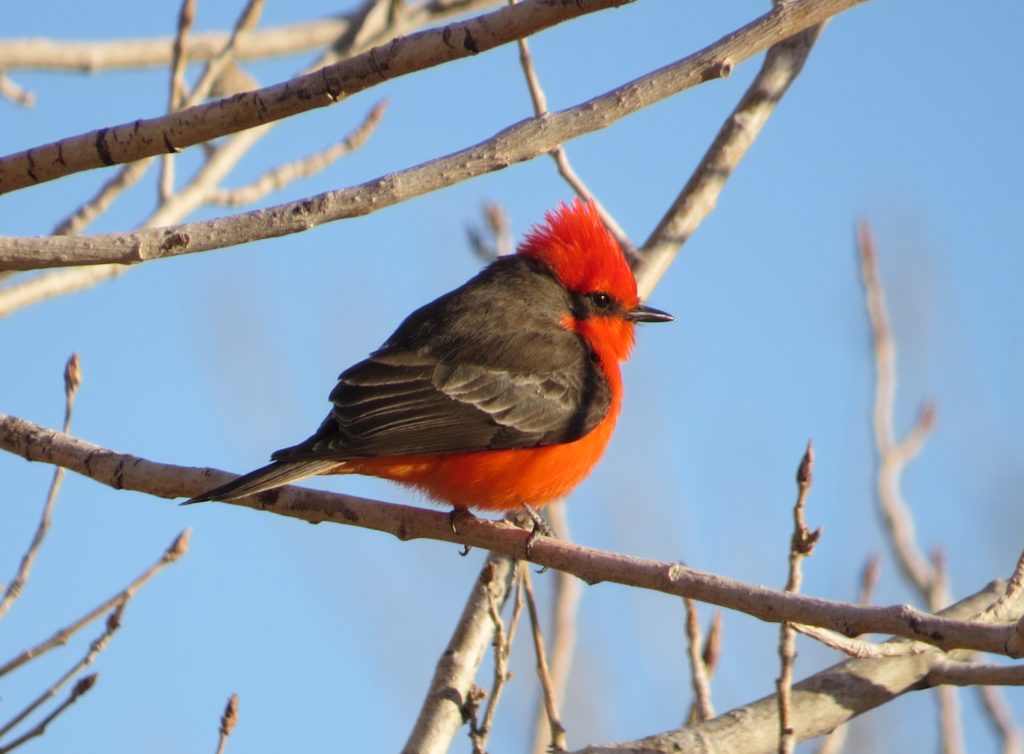
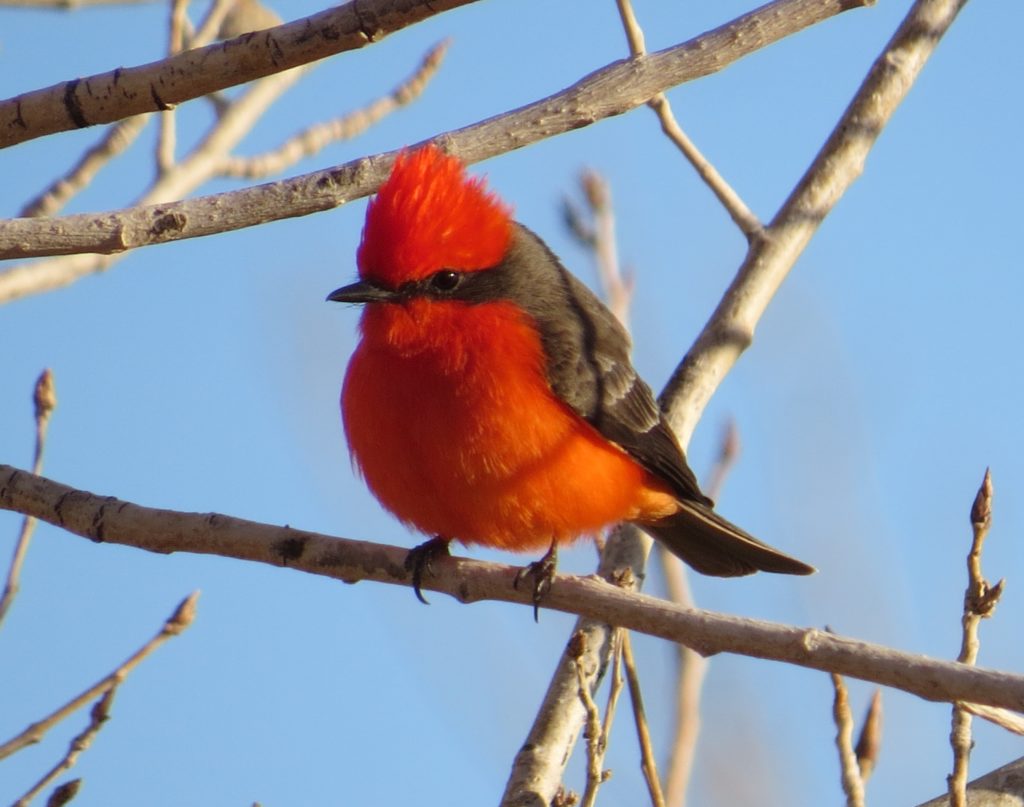 Last, but certainly not least, checking on our neighborhood buddy is an annual tradition.
Last, but certainly not least, checking on our neighborhood buddy is an annual tradition.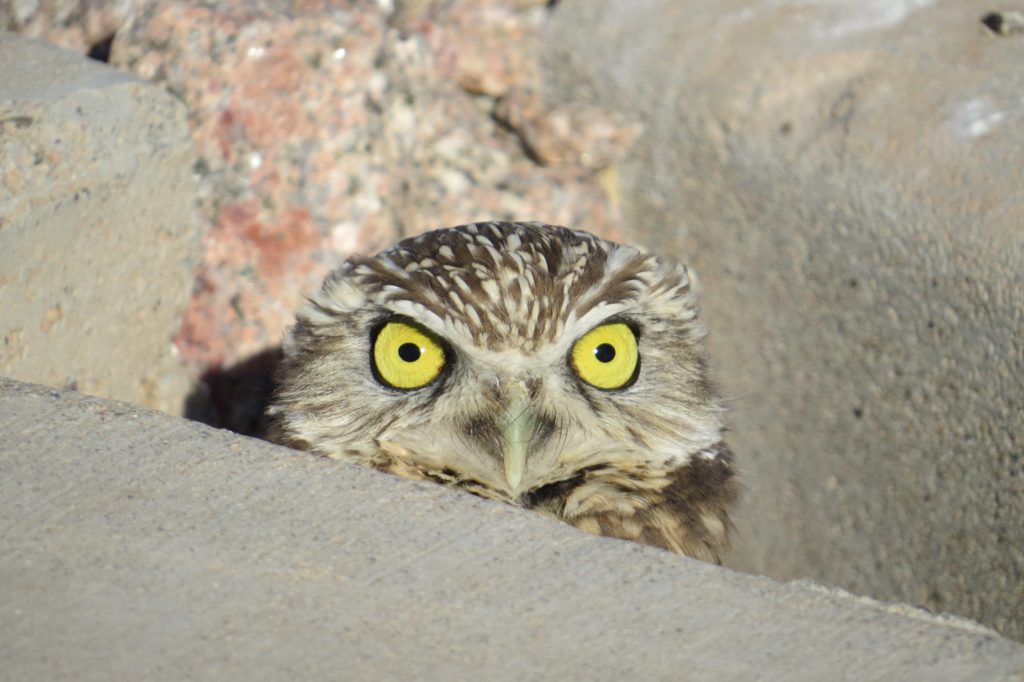 So that’s it from this trip. Pretty tame by previous standards, but that will more than be made up for on an upcoming post detailing another trip to Arizona that was focused exclusively on birding. But first, we have to cover another excursion to Duluth. There was an irruption going on this winter, after all.
So that’s it from this trip. Pretty tame by previous standards, but that will more than be made up for on an upcoming post detailing another trip to Arizona that was focused exclusively on birding. But first, we have to cover another excursion to Duluth. There was an irruption going on this winter, after all.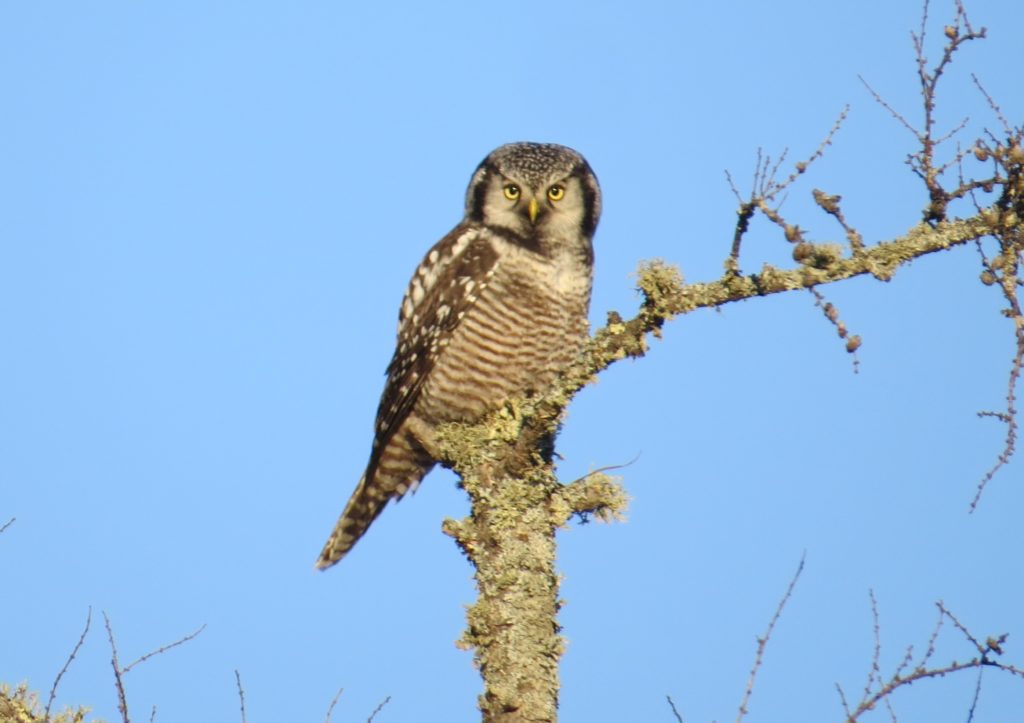
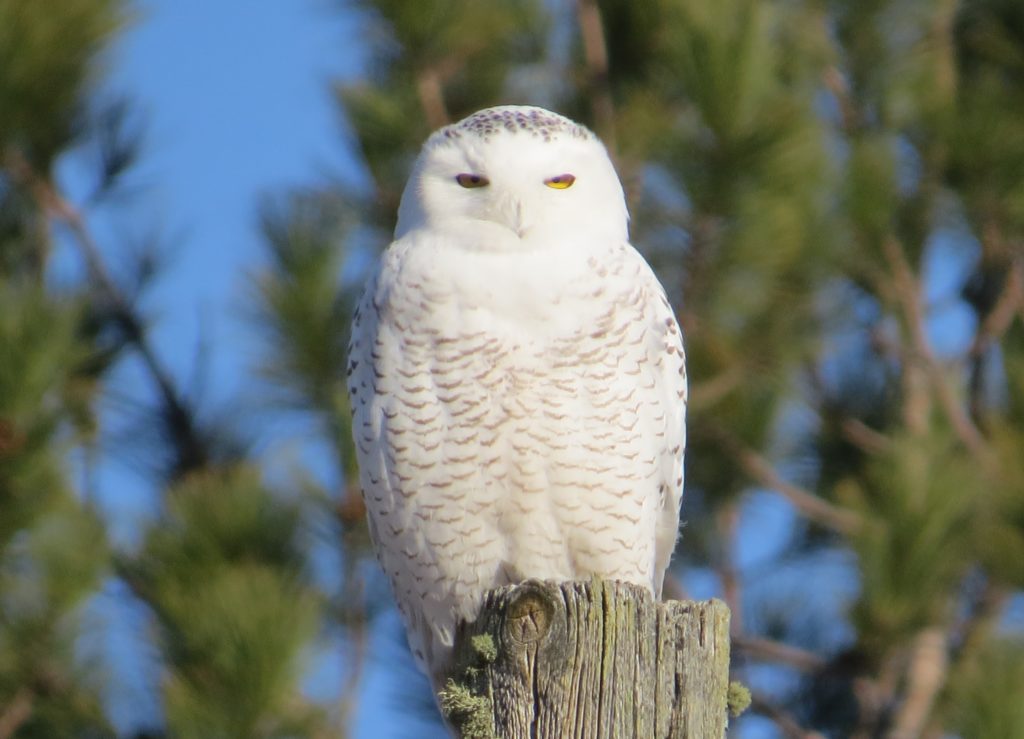
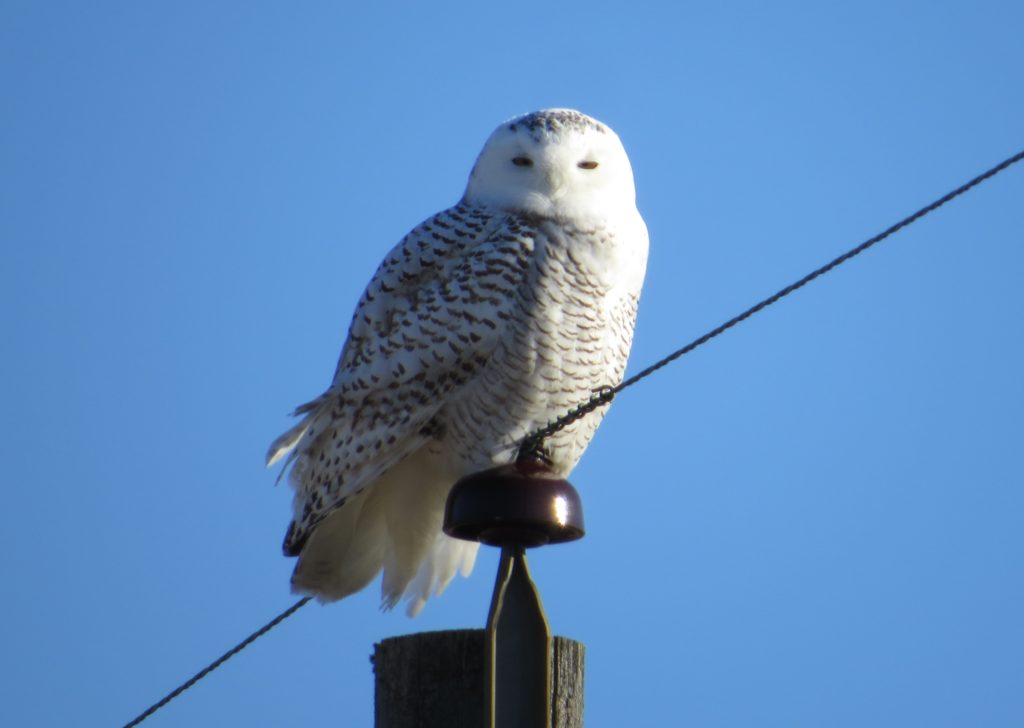 Heartbroken at the time, little did we realize that the Boreal we chased was just the tip of the spear. More sightings kept popping up during December of both live and dead Boreal Owls. By the time news of one would come out, though, it would either be during the work week or late in the day making a chase impossible. Jeff and I were hopeful that our day would finally happen, but we were very antsy about it. I had an upcoming trip to Arizona that I was now dreading. I did not want to miss my chance.
Heartbroken at the time, little did we realize that the Boreal we chased was just the tip of the spear. More sightings kept popping up during December of both live and dead Boreal Owls. By the time news of one would come out, though, it would either be during the work week or late in the day making a chase impossible. Jeff and I were hopeful that our day would finally happen, but we were very antsy about it. I had an upcoming trip to Arizona that I was now dreading. I did not want to miss my chance.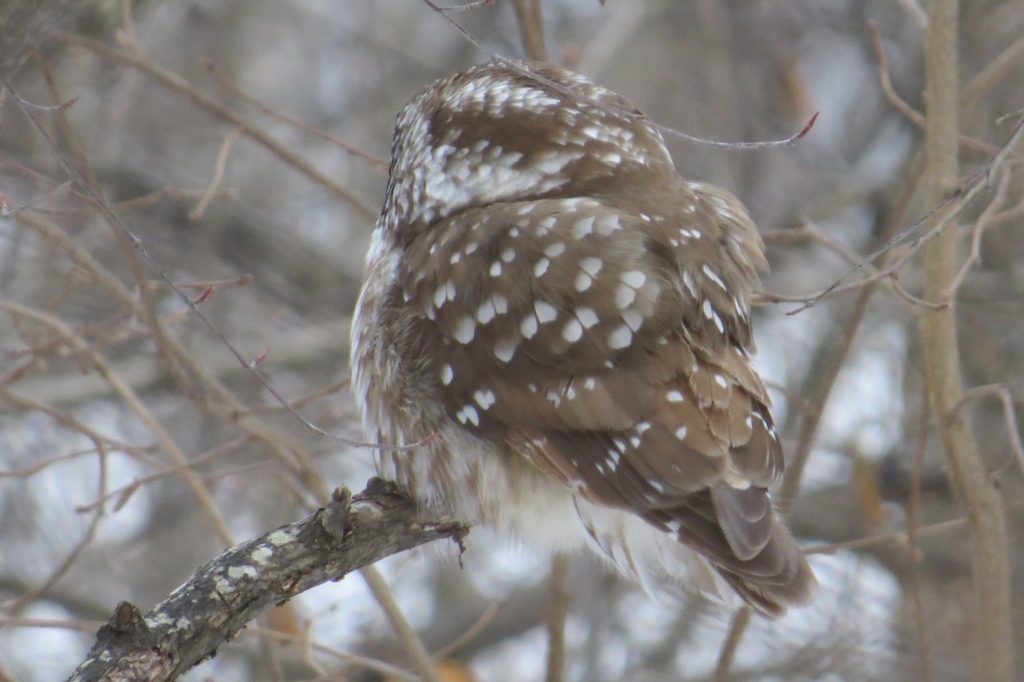 Erik and Kelly made some room for us to see this brush-loving bird through a small window in the branches. It felt good. We had made it. We were looking at a real-live Boreal Owl! Now, we were just waiting to see that face. This was our first glimpse.
Erik and Kelly made some room for us to see this brush-loving bird through a small window in the branches. It felt good. We had made it. We were looking at a real-live Boreal Owl! Now, we were just waiting to see that face. This was our first glimpse.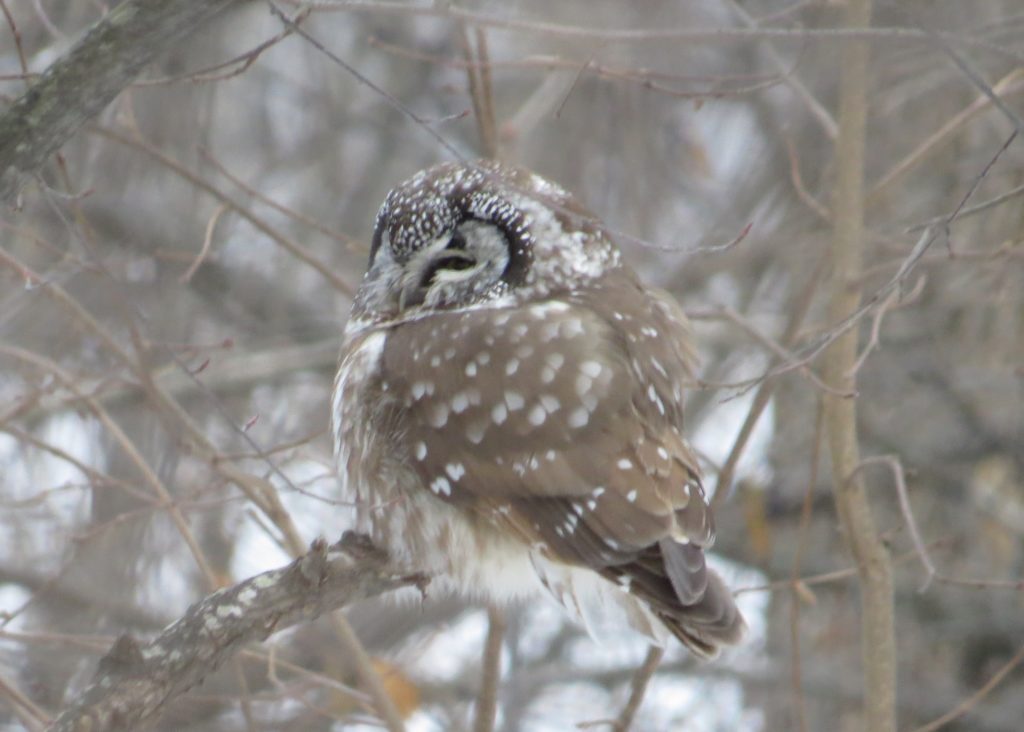 And then:
And then: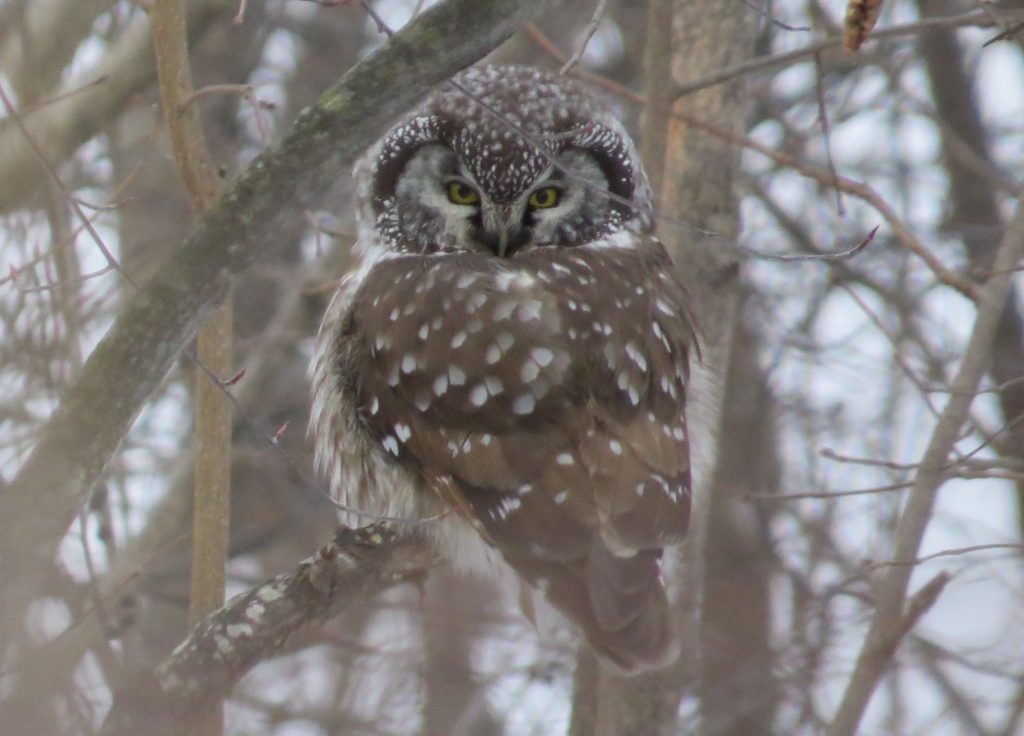
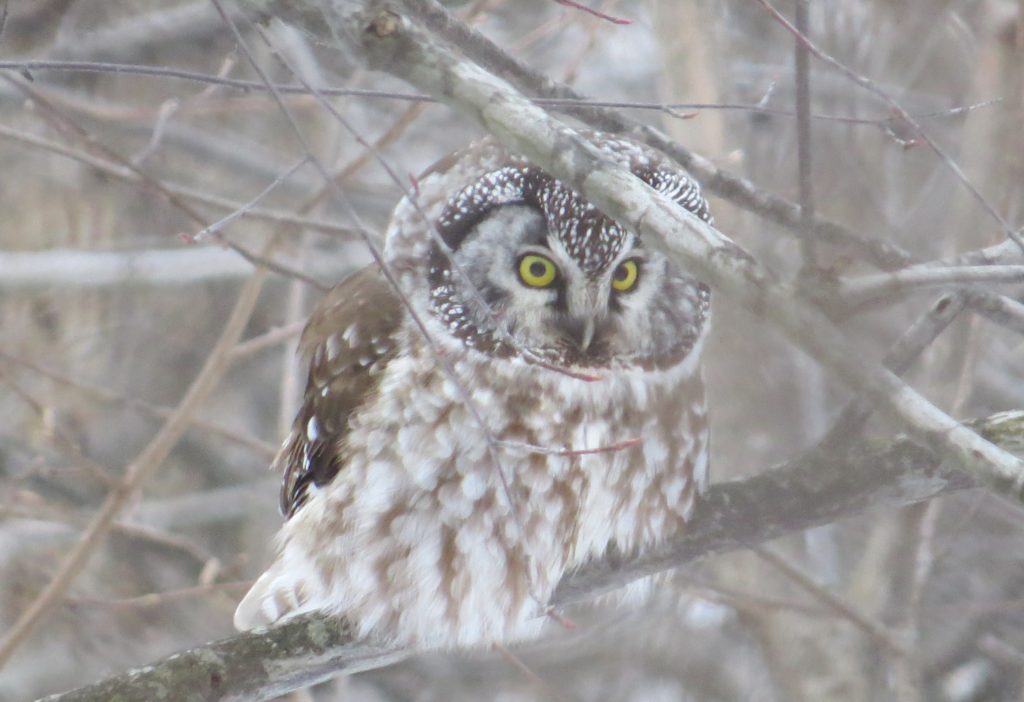
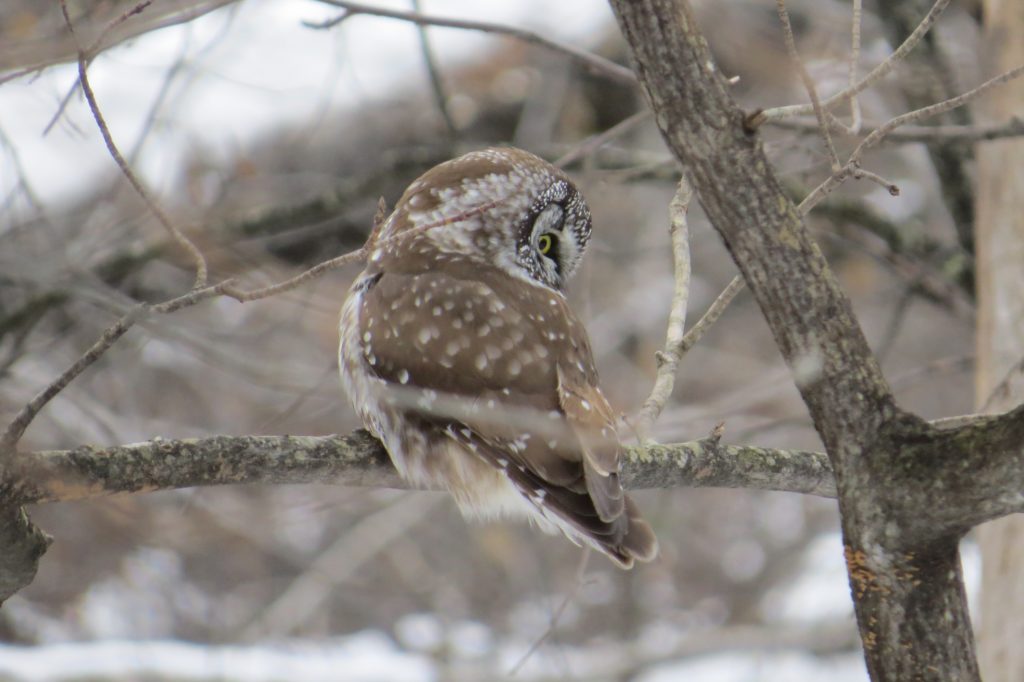
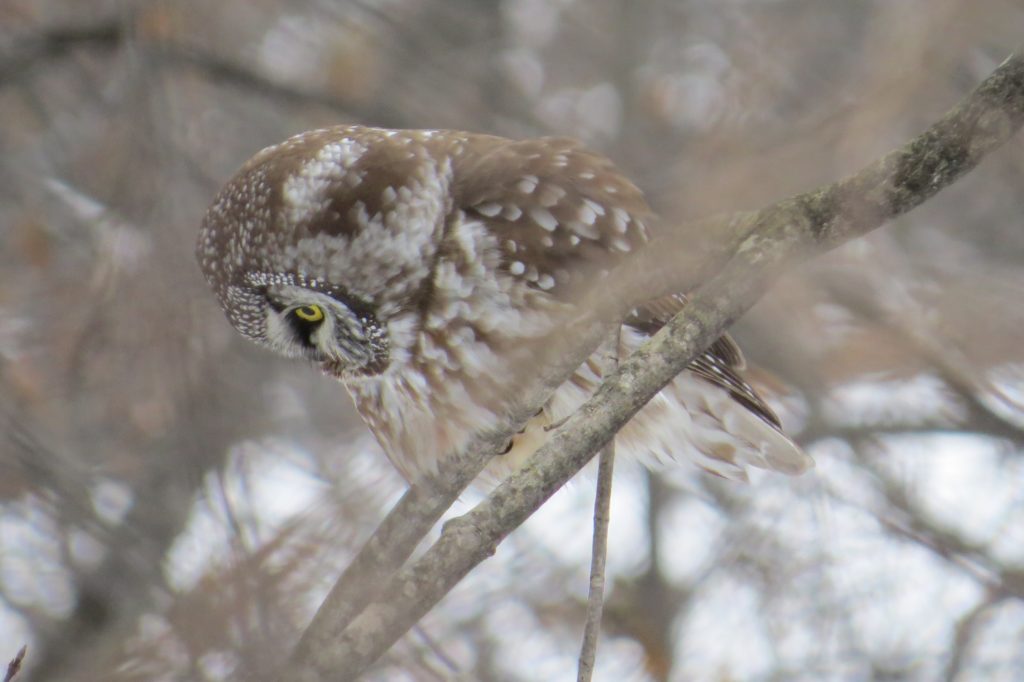
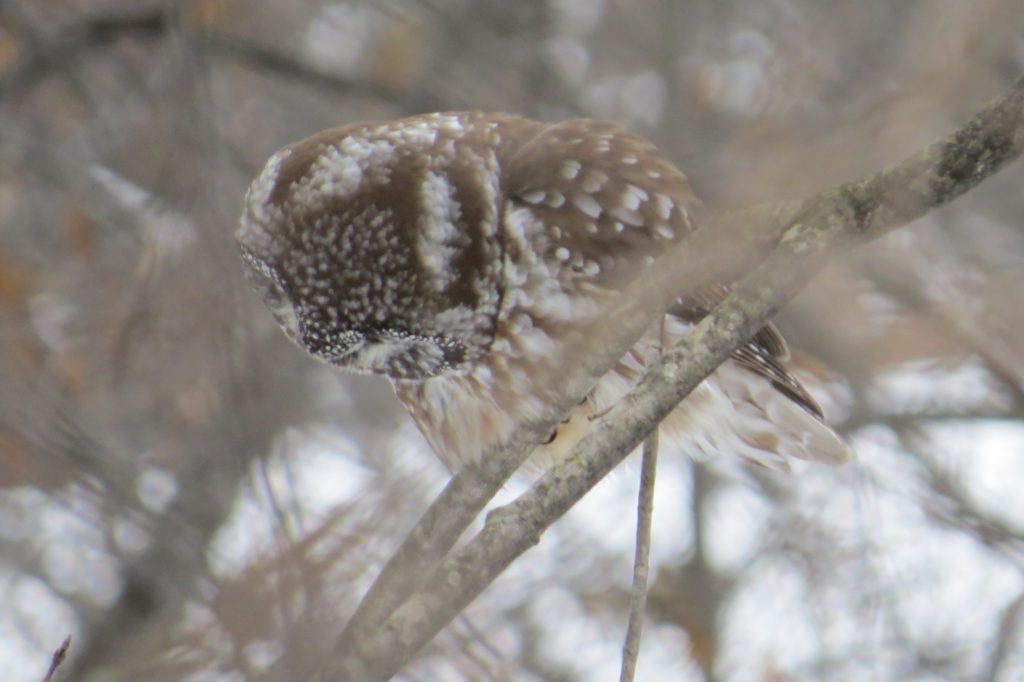 This was, by far, the coolest Owl I had ever seen. This Owl eventually flew away from this spot. I noticed it actually flew close to a different trail. John Richardson and I walked that way and spotted it on top of a brush pile. The views were much better and gave me my best Boreal photo, which Jeff helped me enhance.
This was, by far, the coolest Owl I had ever seen. This Owl eventually flew away from this spot. I noticed it actually flew close to a different trail. John Richardson and I walked that way and spotted it on top of a brush pile. The views were much better and gave me my best Boreal photo, which Jeff helped me enhance.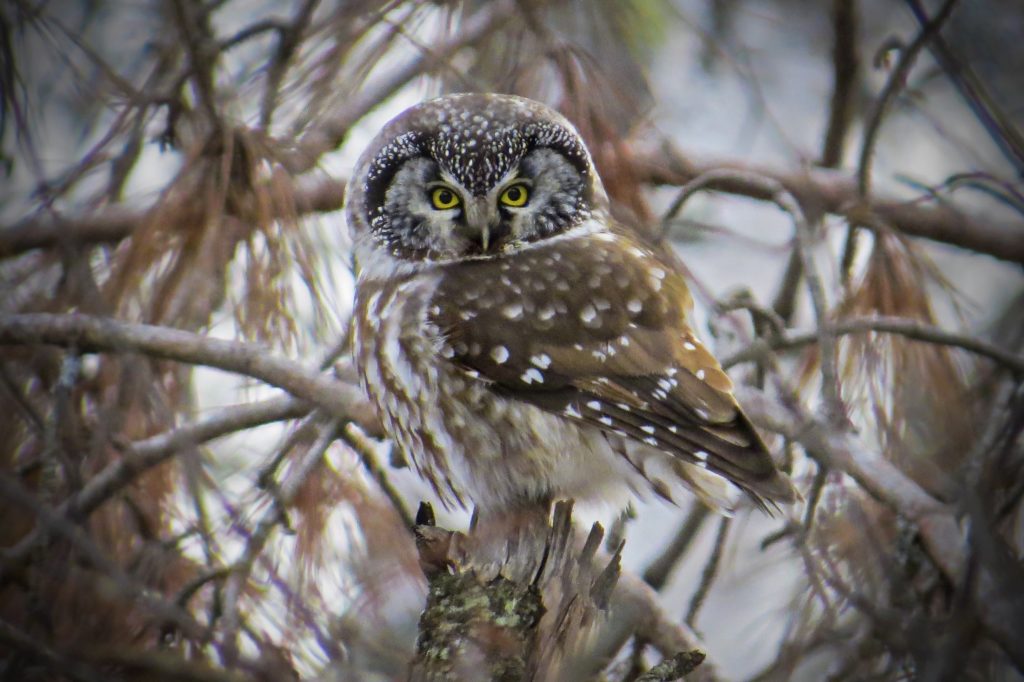
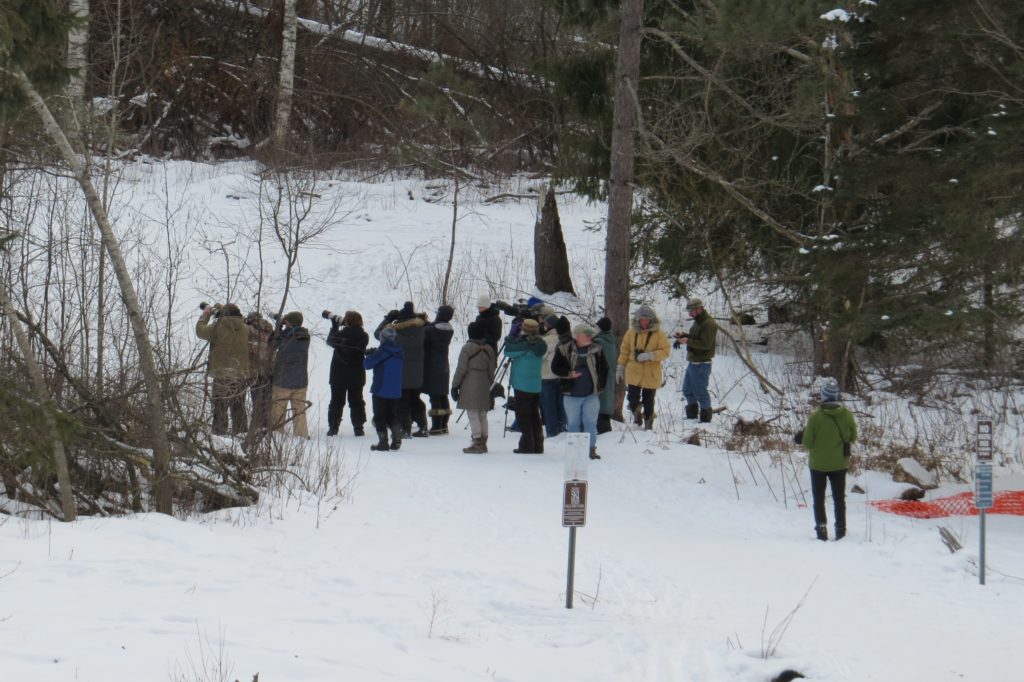 The Owl was now very close to the trails and out in the open. I felt bad that Jeff wasn’t there to experience these photo opportunities; he had not felt well after the Twin Cities Boreal expedition and decided not to come north.
The Owl was now very close to the trails and out in the open. I felt bad that Jeff wasn’t there to experience these photo opportunities; he had not felt well after the Twin Cities Boreal expedition and decided not to come north.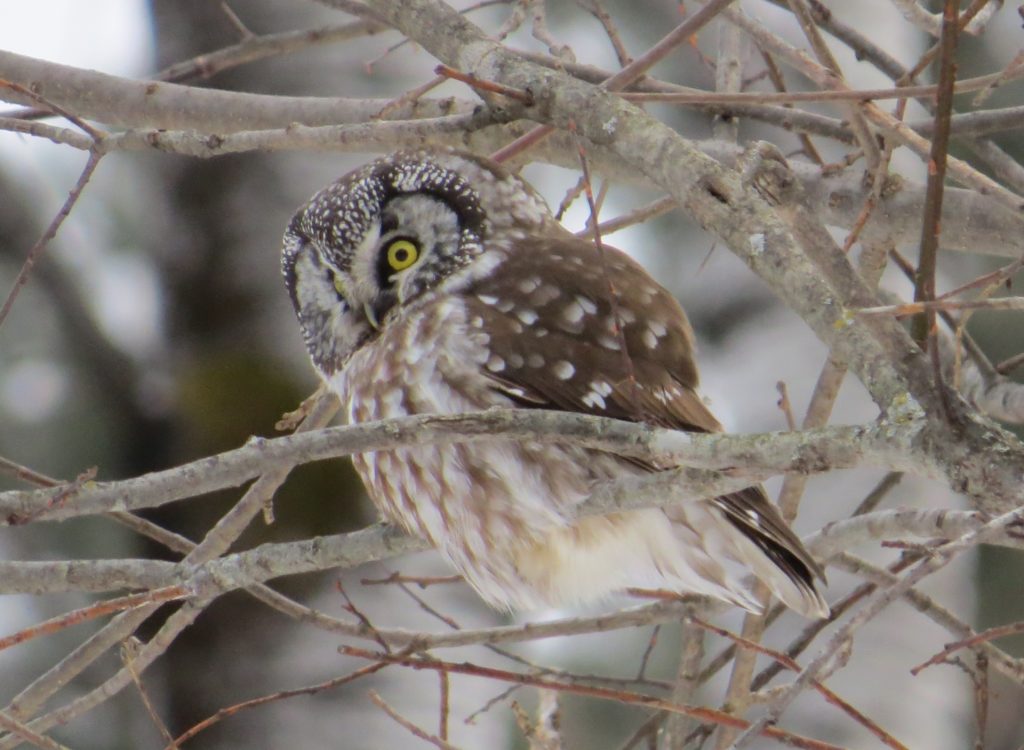 Books describe Boreals as having a surprised look on their face. It is definitely true.
Books describe Boreals as having a surprised look on their face. It is definitely true. 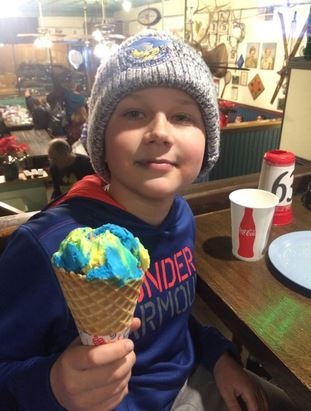
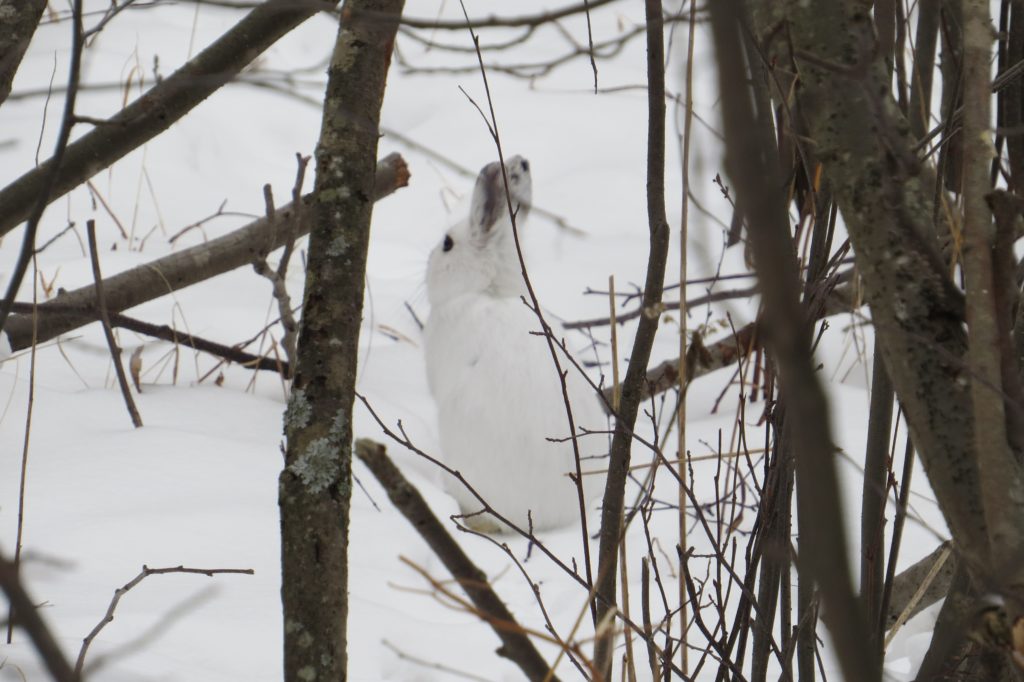 We also took a moment to take a Lake Superior selfie.
We also took a moment to take a Lake Superior selfie.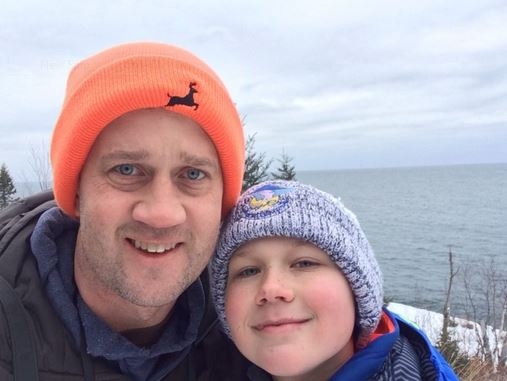
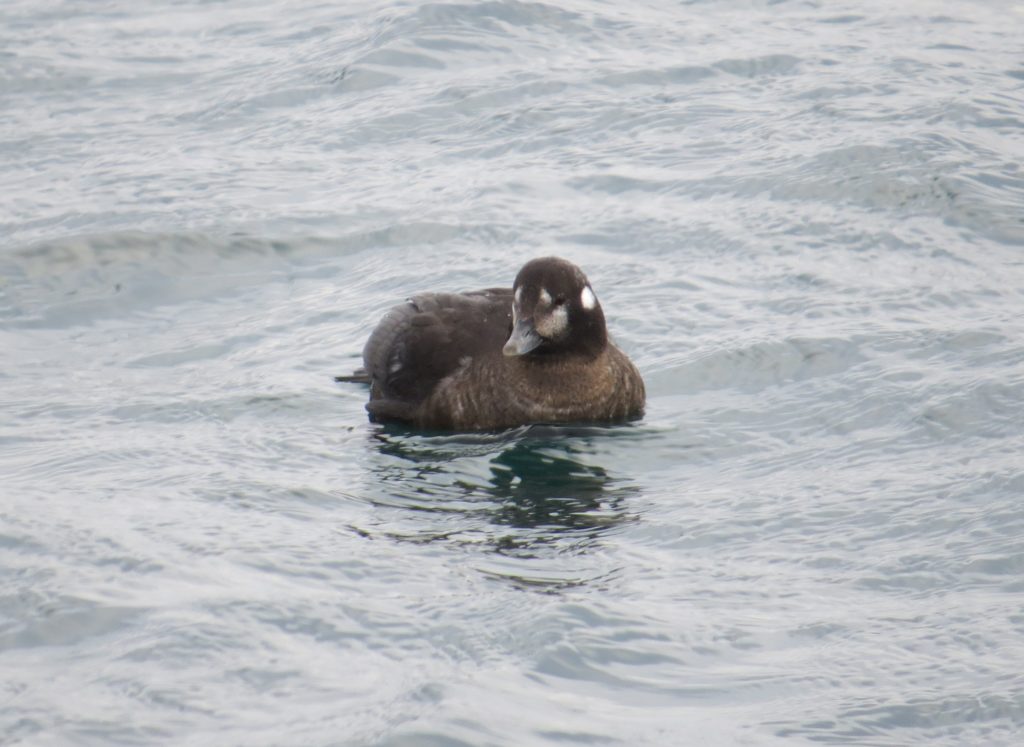
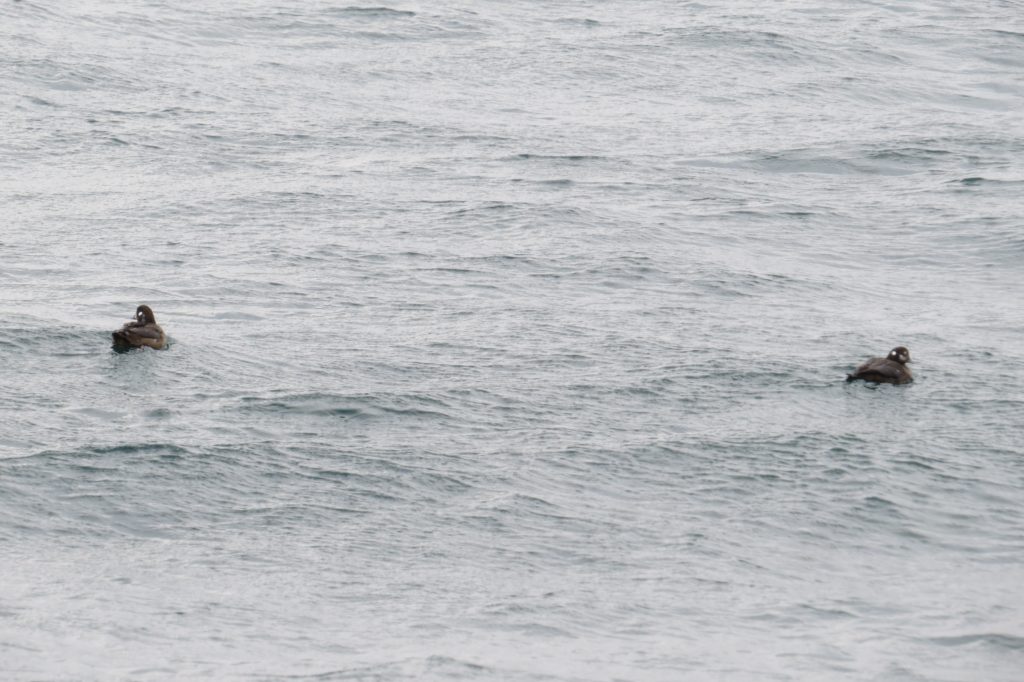 We had barely been in Two Harbors when I got a message from Jeff that he had found his very own Boreal Owl down by Duluth! I was happy he had finally gotten good looks at a bird low and in the open. Knowing there were Great Gray Owls in the area, I asked Evan what we should do. Evan thinks like a true birder because he said we should go after Jeff’s Boreal since we can see Great Grays any year. So once again we were on our way back to Duluth for a Boreal Owl. This one was snoozing in a tree right along Scenic 61. That, combined with the fact that we had gotten our Boreal the day before, meant we did not have to rush this time. Sure enough, this Boreal was right where Jeff had spotted it.
We had barely been in Two Harbors when I got a message from Jeff that he had found his very own Boreal Owl down by Duluth! I was happy he had finally gotten good looks at a bird low and in the open. Knowing there were Great Gray Owls in the area, I asked Evan what we should do. Evan thinks like a true birder because he said we should go after Jeff’s Boreal since we can see Great Grays any year. So once again we were on our way back to Duluth for a Boreal Owl. This one was snoozing in a tree right along Scenic 61. That, combined with the fact that we had gotten our Boreal the day before, meant we did not have to rush this time. Sure enough, this Boreal was right where Jeff had spotted it.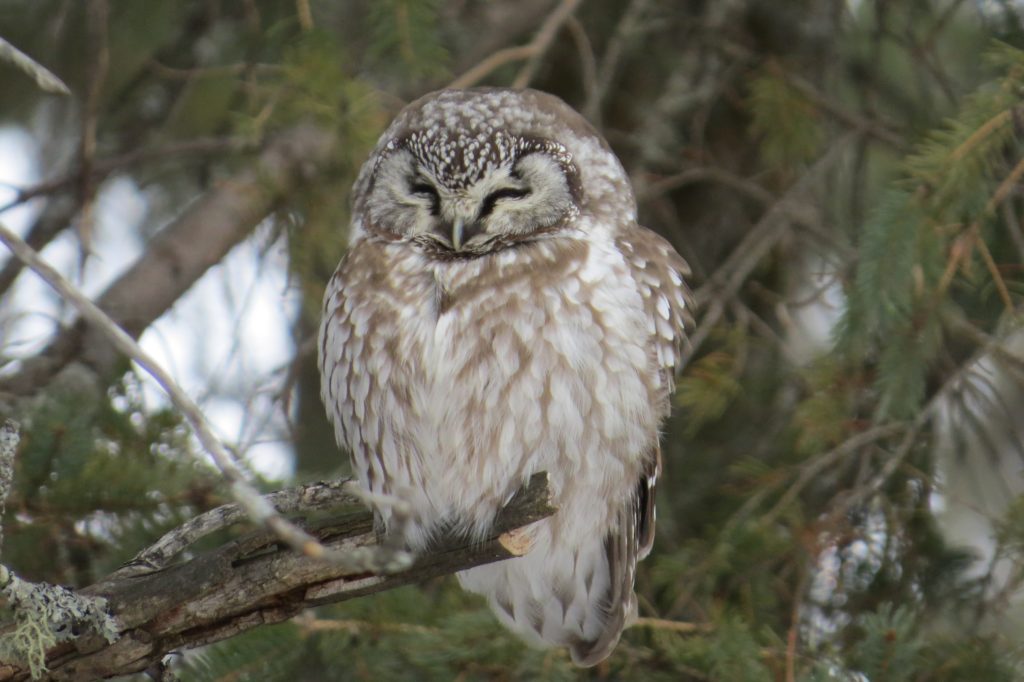 Some people, like myself, have trouble spotting these Owls. Thankfully, people like Evan can point them out.
Some people, like myself, have trouble spotting these Owls. Thankfully, people like Evan can point them out.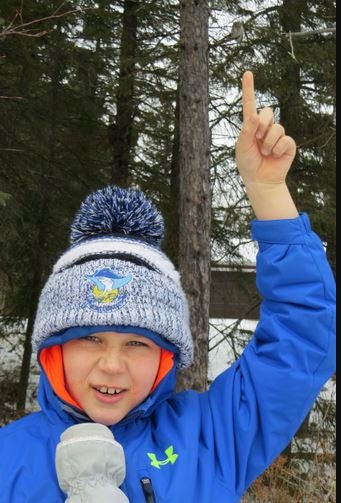
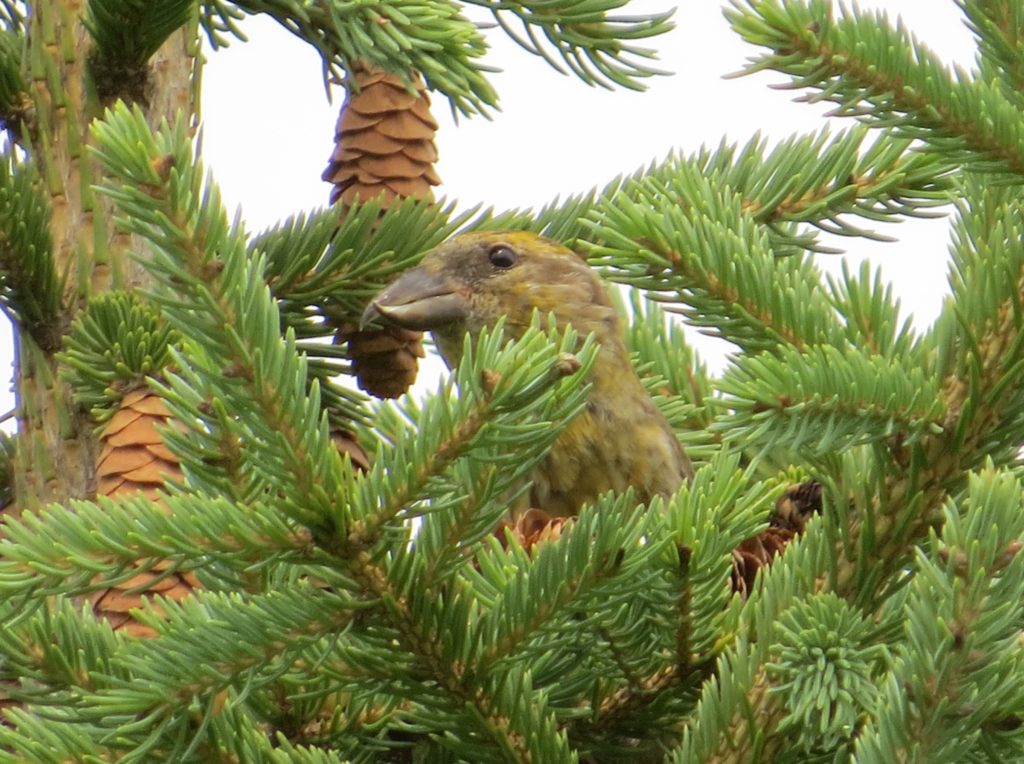 The Red Crossbill irruption was/is nothing short of incredible. This was my first sighting of many just within our county alone. I had several personal finds of this species in the following months, including finding a flock while driving highway speeds and a flyover flock while walking out to my mailbox!
The Red Crossbill irruption was/is nothing short of incredible. This was my first sighting of many just within our county alone. I had several personal finds of this species in the following months, including finding a flock while driving highway speeds and a flyover flock while walking out to my mailbox!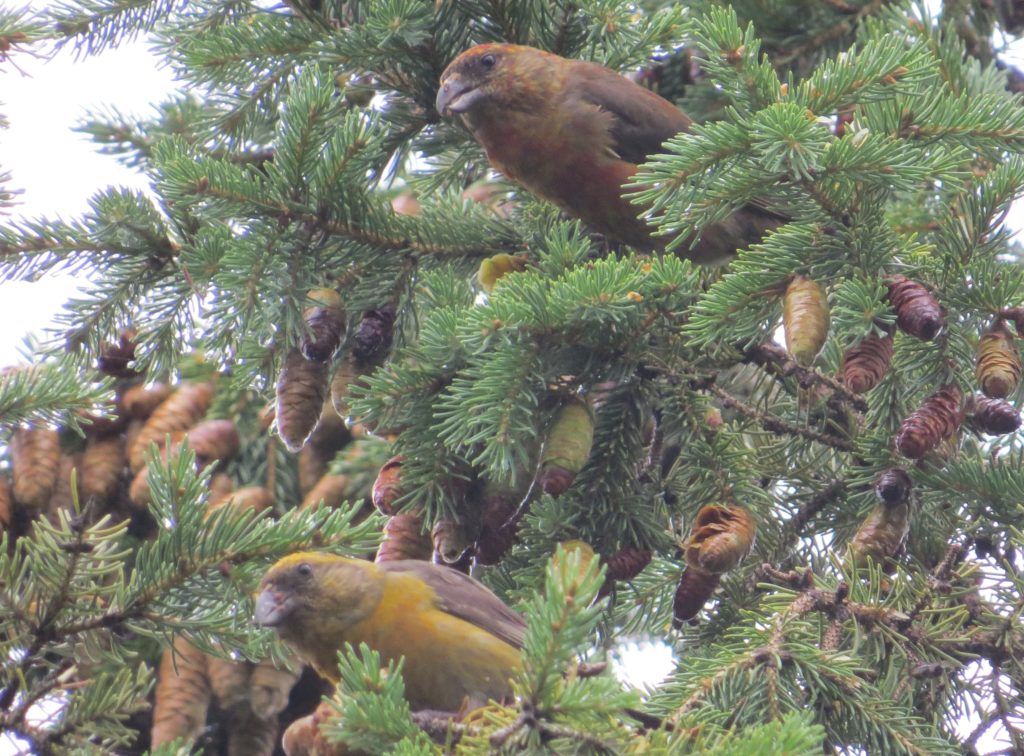 This next picture shows a Red Crossbill that I was disappointed to find this past October. I was actually looking for the other regular Minnesota Crossbill species which was also showing signs of irrupting. Birding can be strange. Somehow I ended up with the much more difficult Crossbill species before getting the supposedly much easier White-winged variety. I was the only serious Kandi birder who still lacked this species. I desperately wanted to see wing bars on this bird.
This next picture shows a Red Crossbill that I was disappointed to find this past October. I was actually looking for the other regular Minnesota Crossbill species which was also showing signs of irrupting. Birding can be strange. Somehow I ended up with the much more difficult Crossbill species before getting the supposedly much easier White-winged variety. I was the only serious Kandi birder who still lacked this species. I desperately wanted to see wing bars on this bird.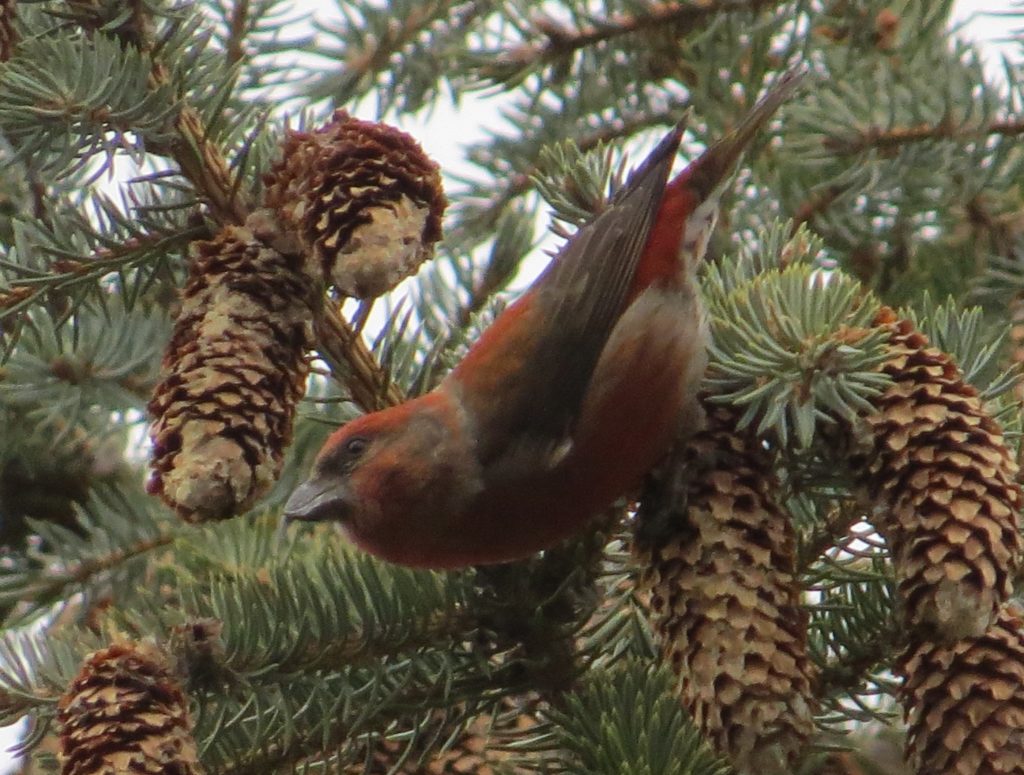
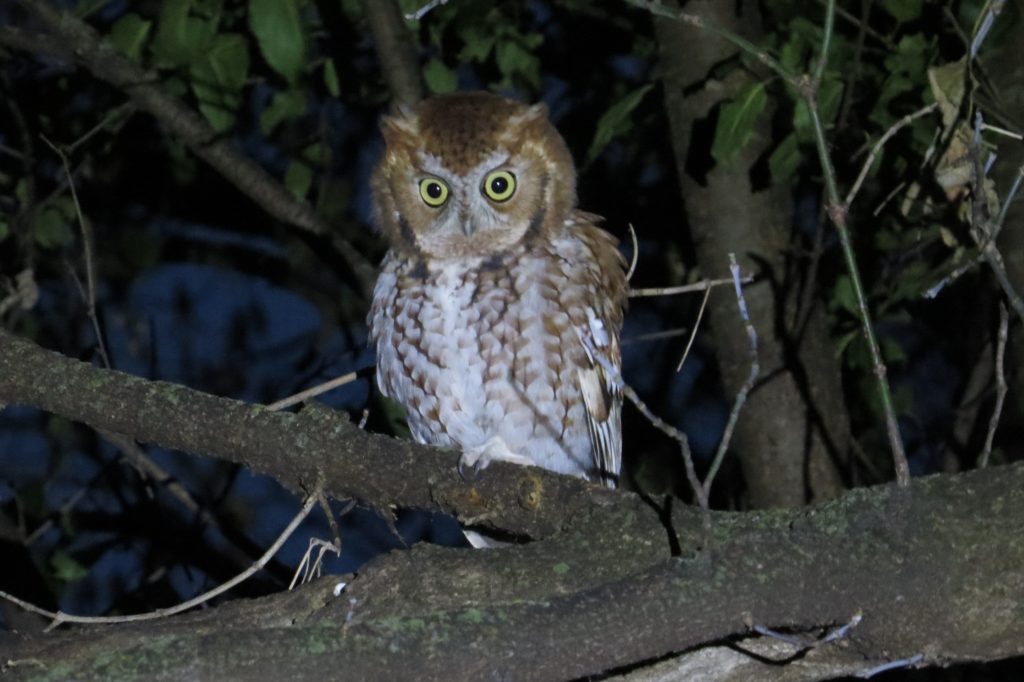
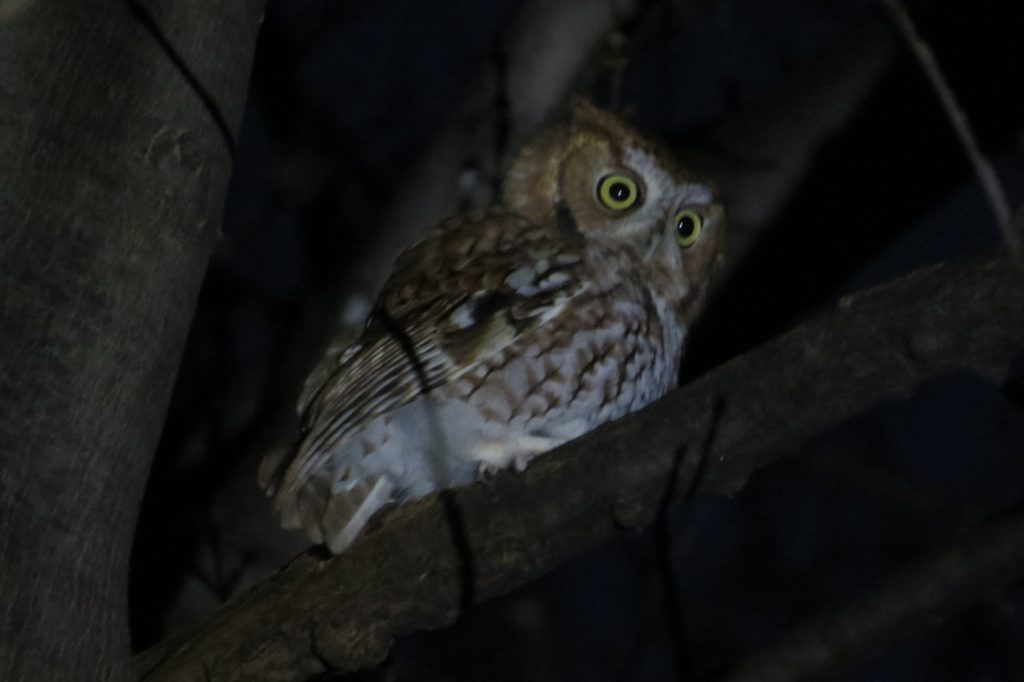
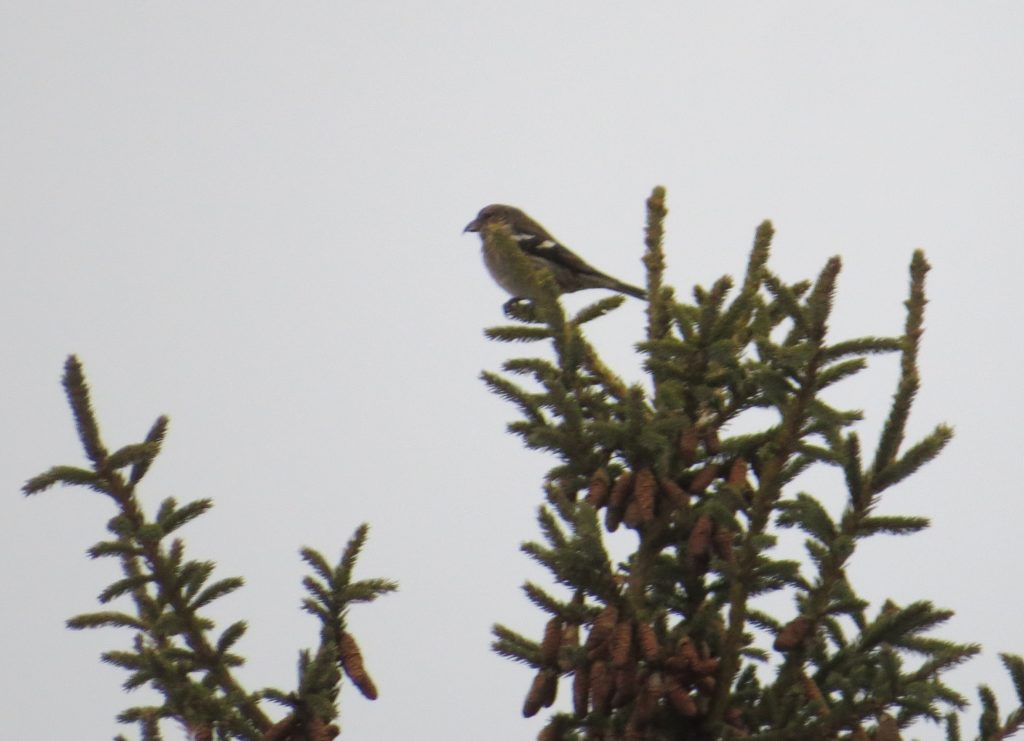 Getting this DIY county lifer was incredibly efficient and felt amazing. I enjoyed these birds for about a half hour before heading home. It was one less bird for which I was on my own.
Getting this DIY county lifer was incredibly efficient and felt amazing. I enjoyed these birds for about a half hour before heading home. It was one less bird for which I was on my own.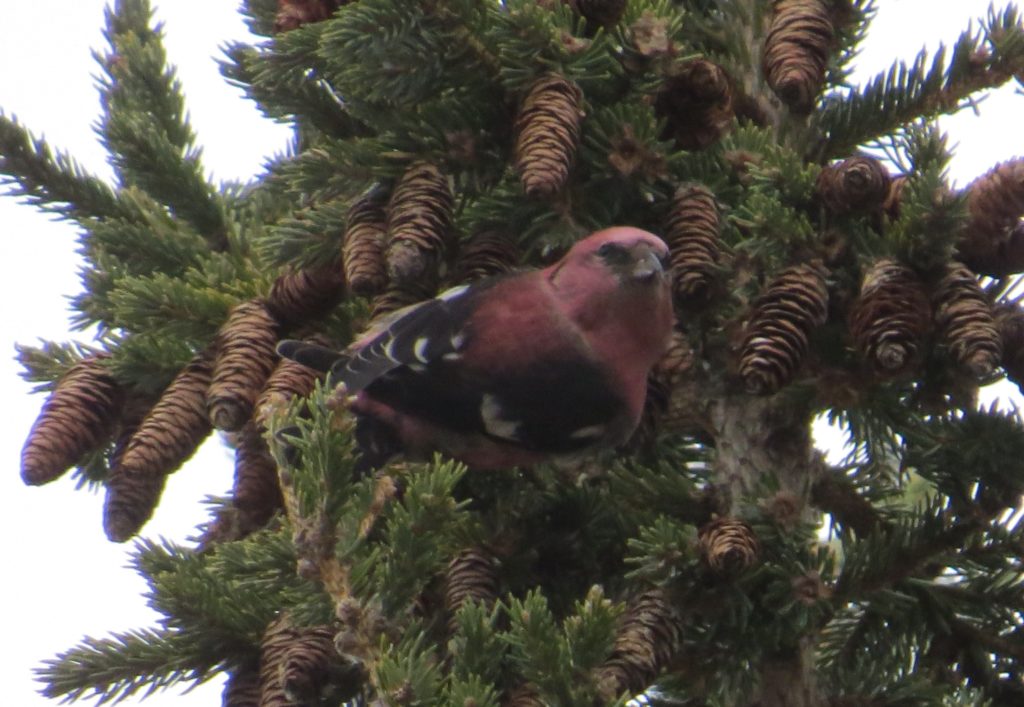
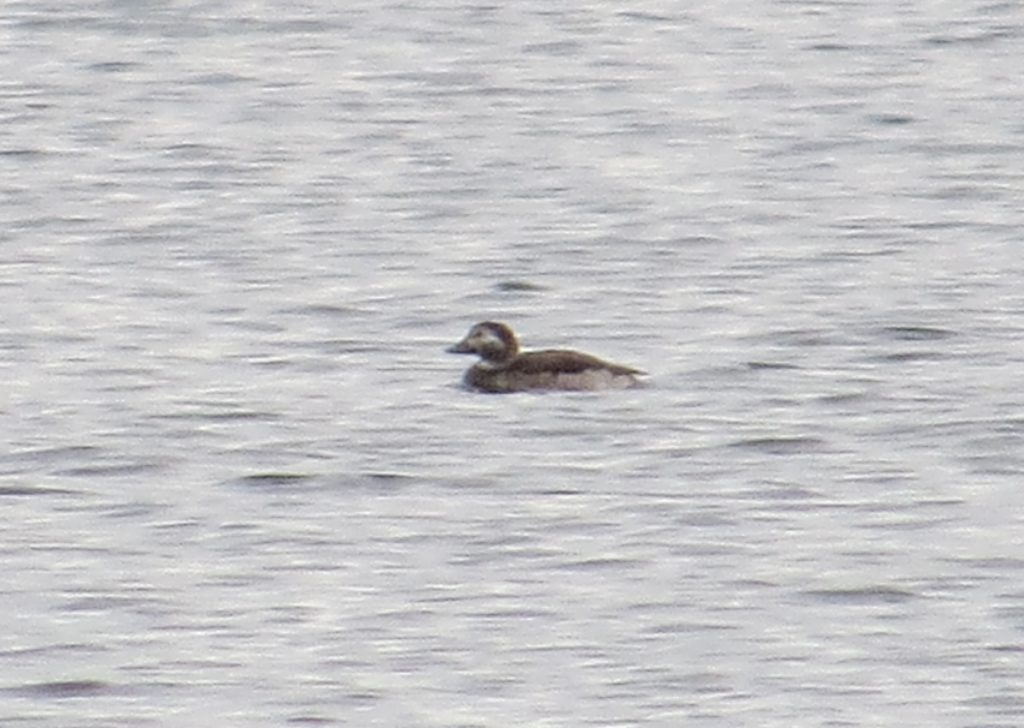
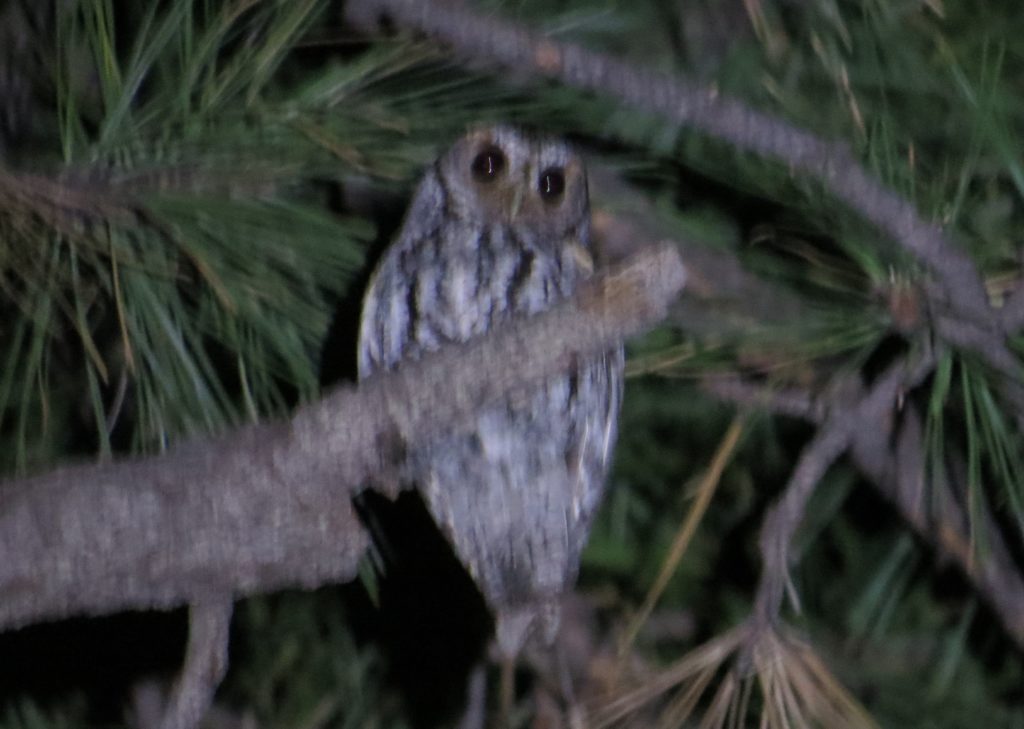
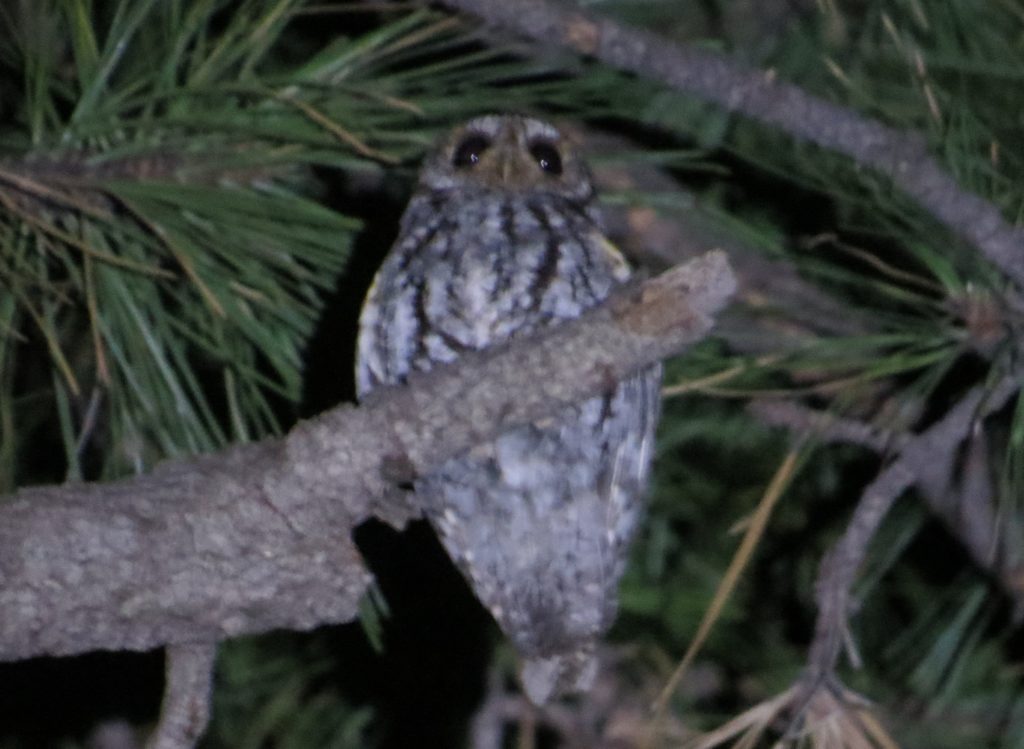
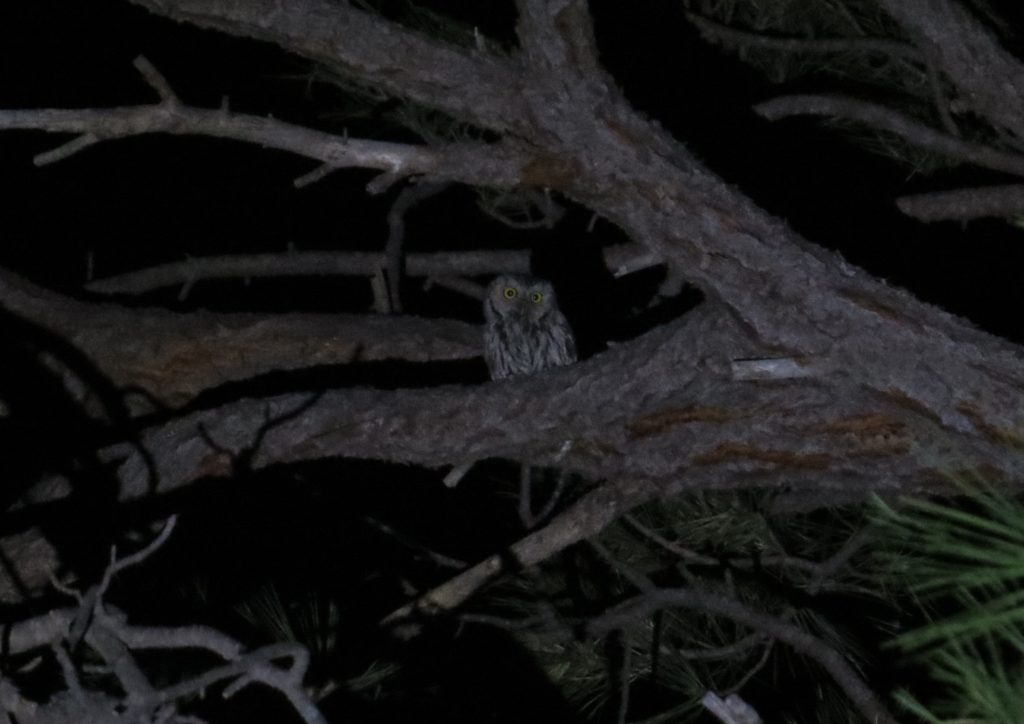
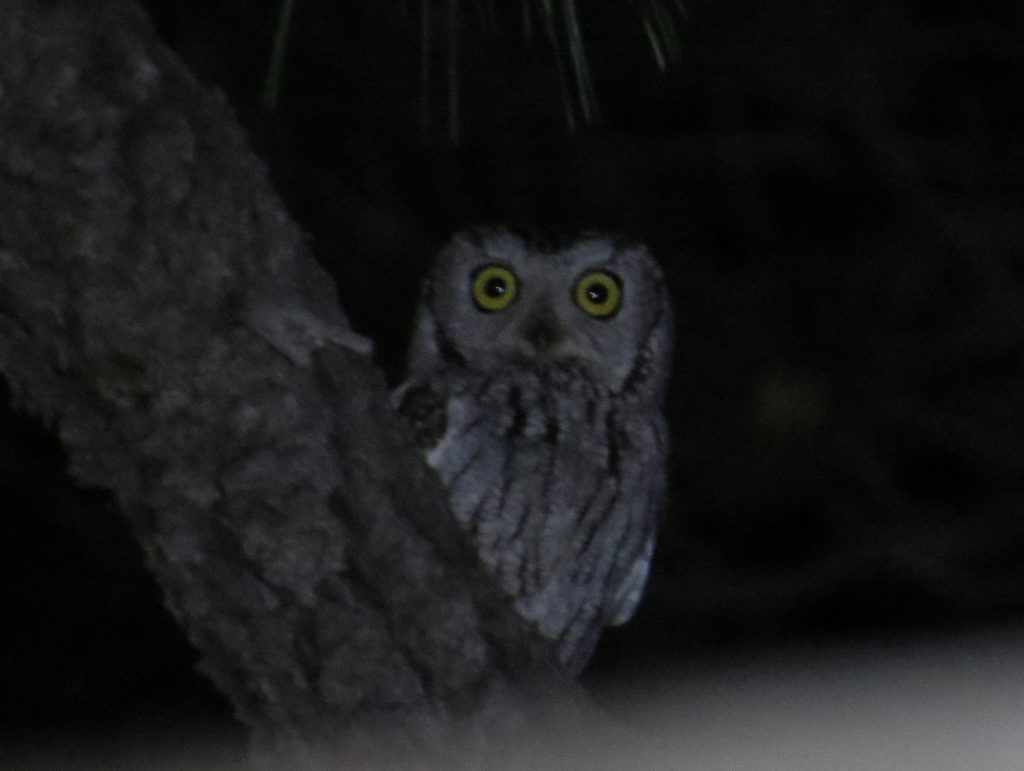 After the Screech-Owl fun, we kept up our search for Flams with no further sightings. A pair of dueting Great Horned Owls did give us a three-Owl night, however. With Flammulated Owl locked down and photo-documented as my 17th Owl lifer, the trip was a huge success. A fun coincidence is that the Flam was Tommy’s 17th Owl species for TOBY. I can’t thank Tommy enough for all the Owl species he has shown me (7 in all!). The next day we celebrated in a most appropriate way–eating at the Toasted Owl Cafe right by our resort in Flagstaff. It’s very good, by the way.
After the Screech-Owl fun, we kept up our search for Flams with no further sightings. A pair of dueting Great Horned Owls did give us a three-Owl night, however. With Flammulated Owl locked down and photo-documented as my 17th Owl lifer, the trip was a huge success. A fun coincidence is that the Flam was Tommy’s 17th Owl species for TOBY. I can’t thank Tommy enough for all the Owl species he has shown me (7 in all!). The next day we celebrated in a most appropriate way–eating at the Toasted Owl Cafe right by our resort in Flagstaff. It’s very good, by the way.